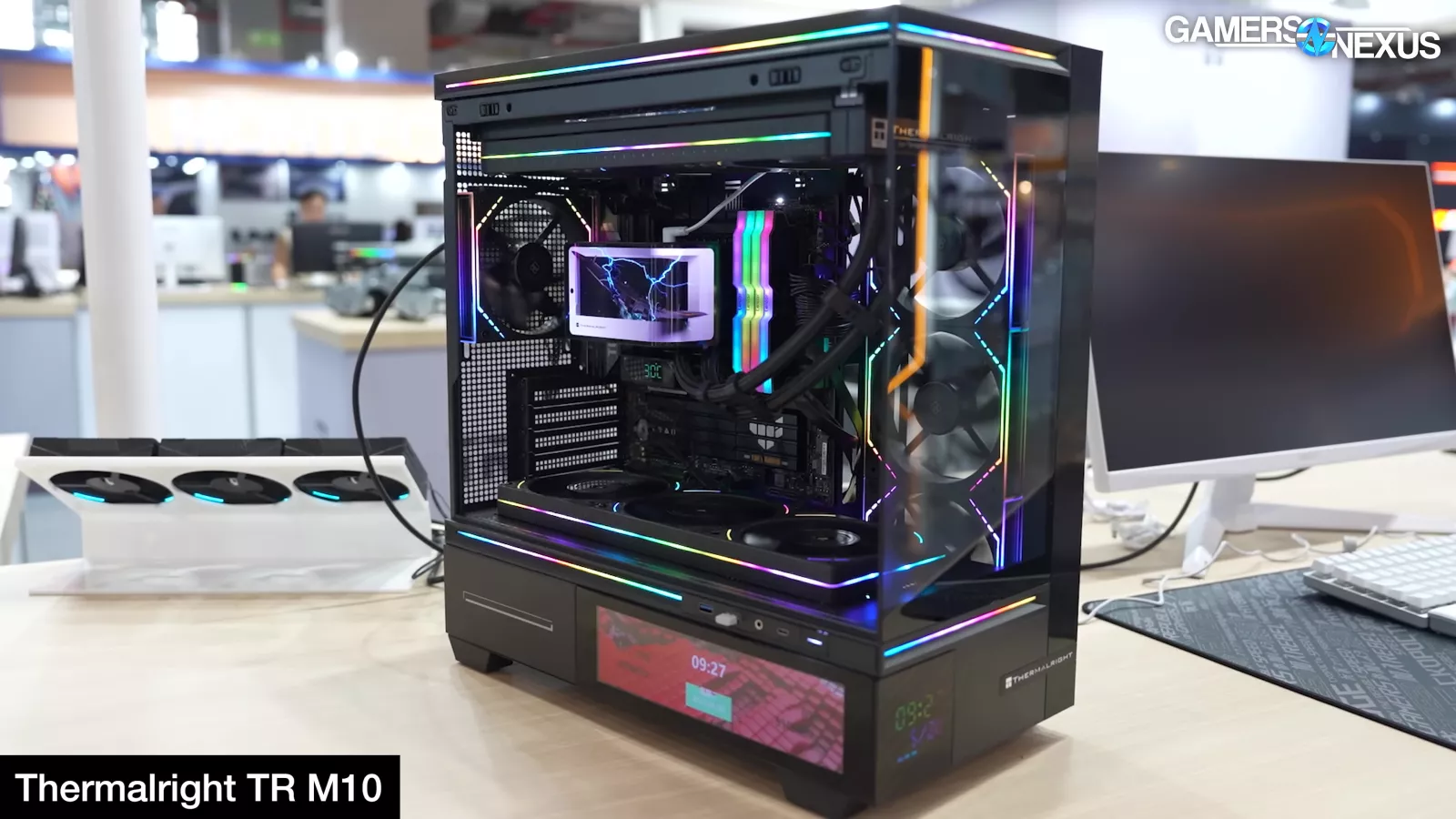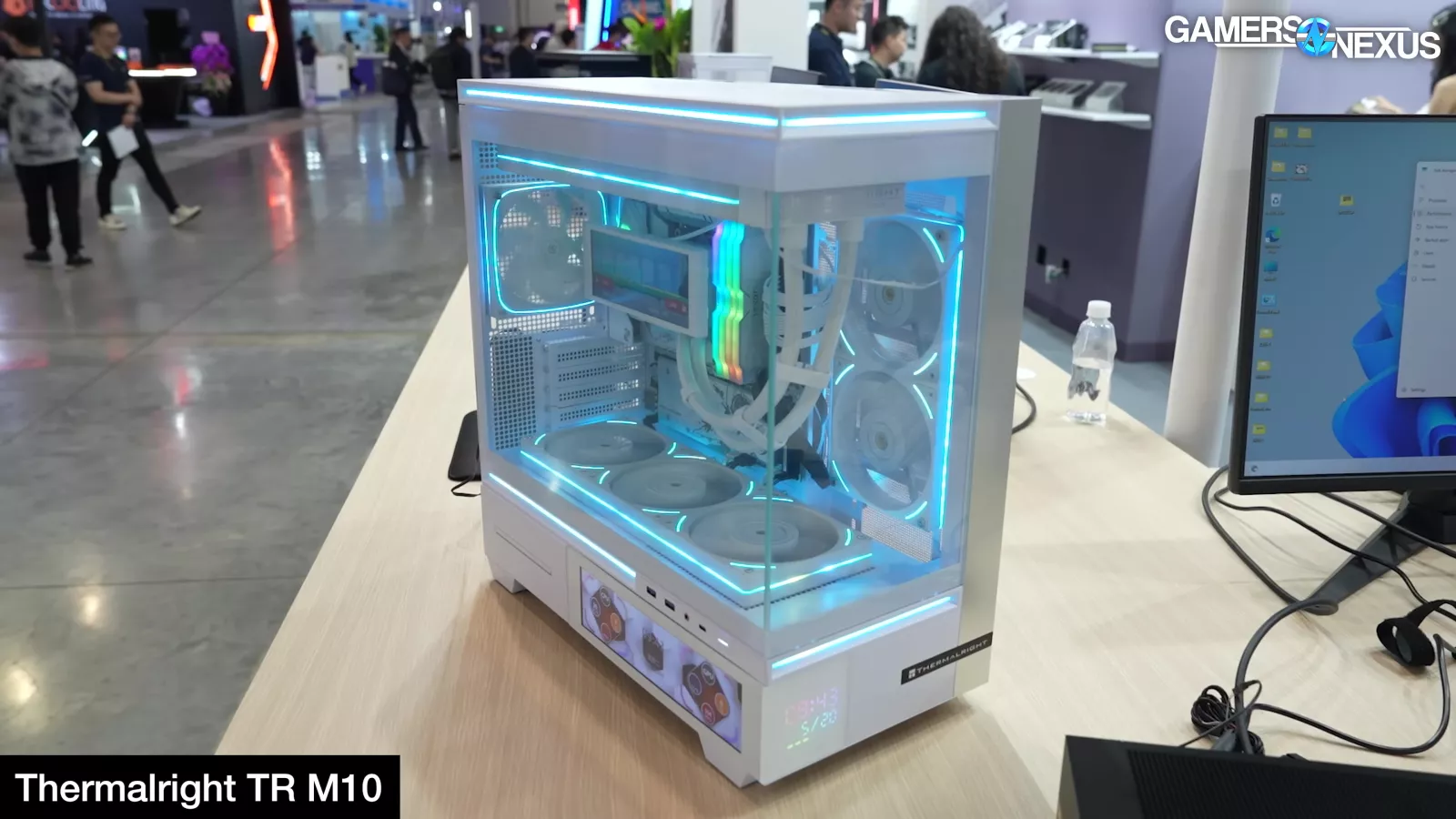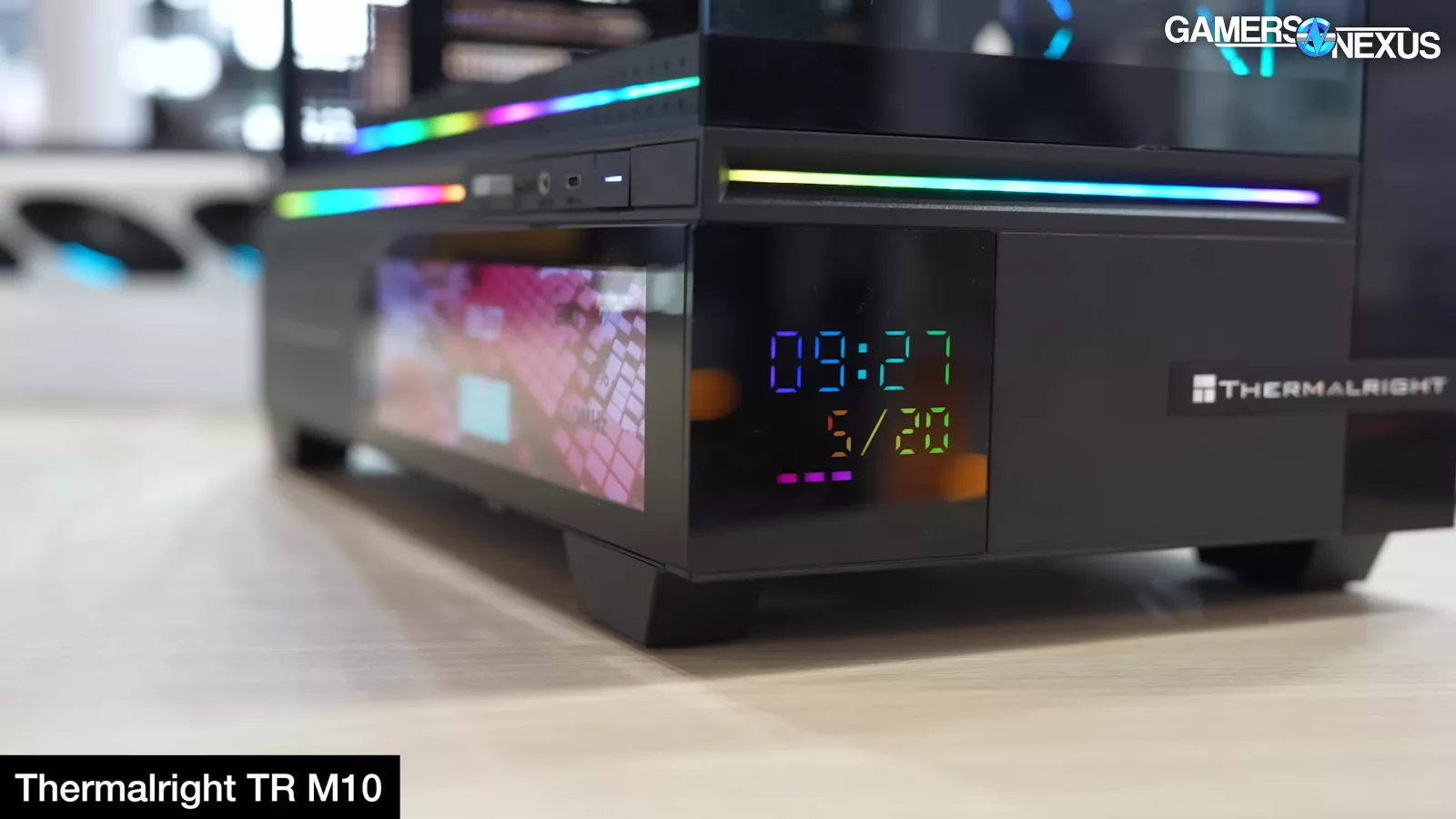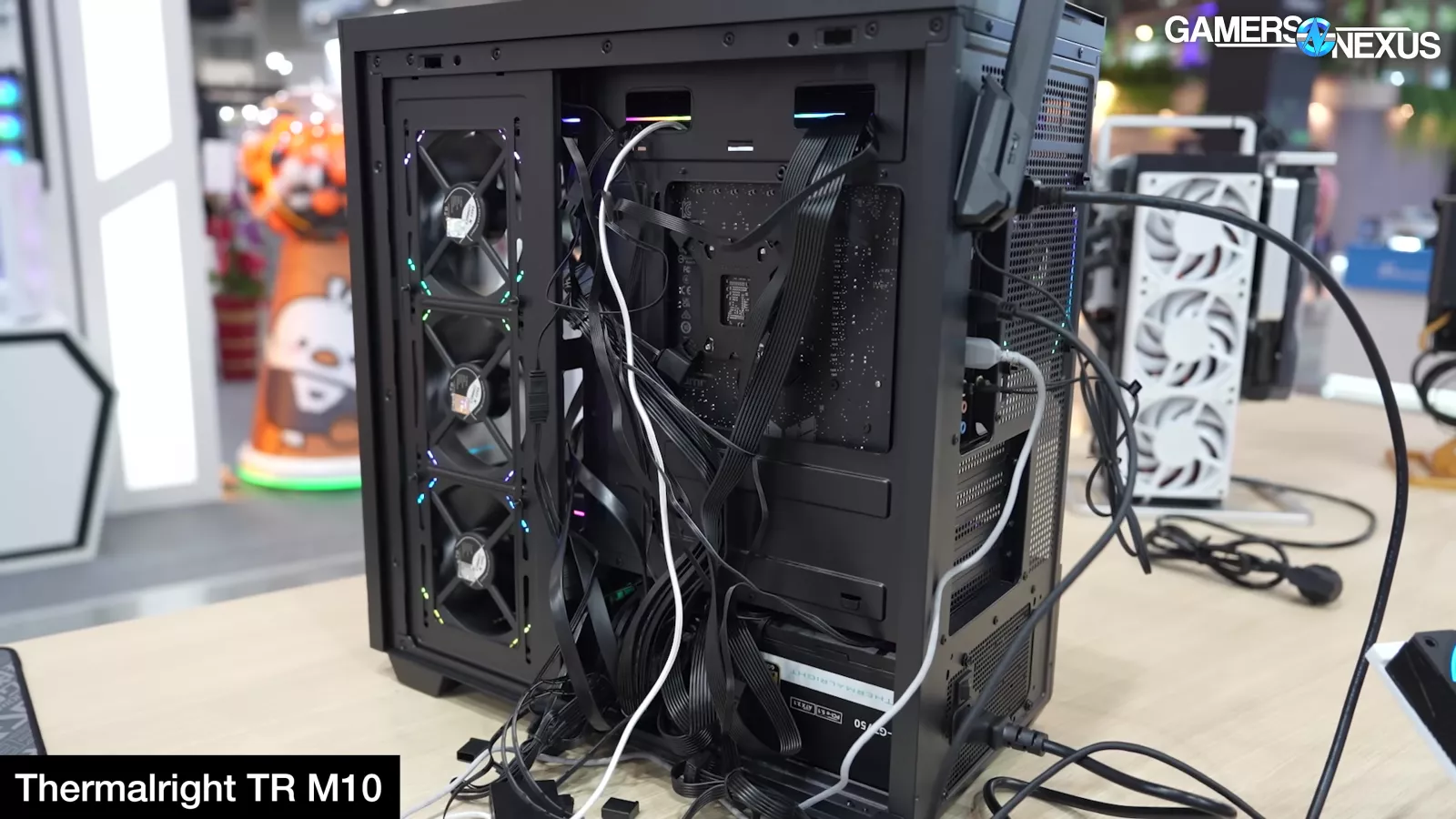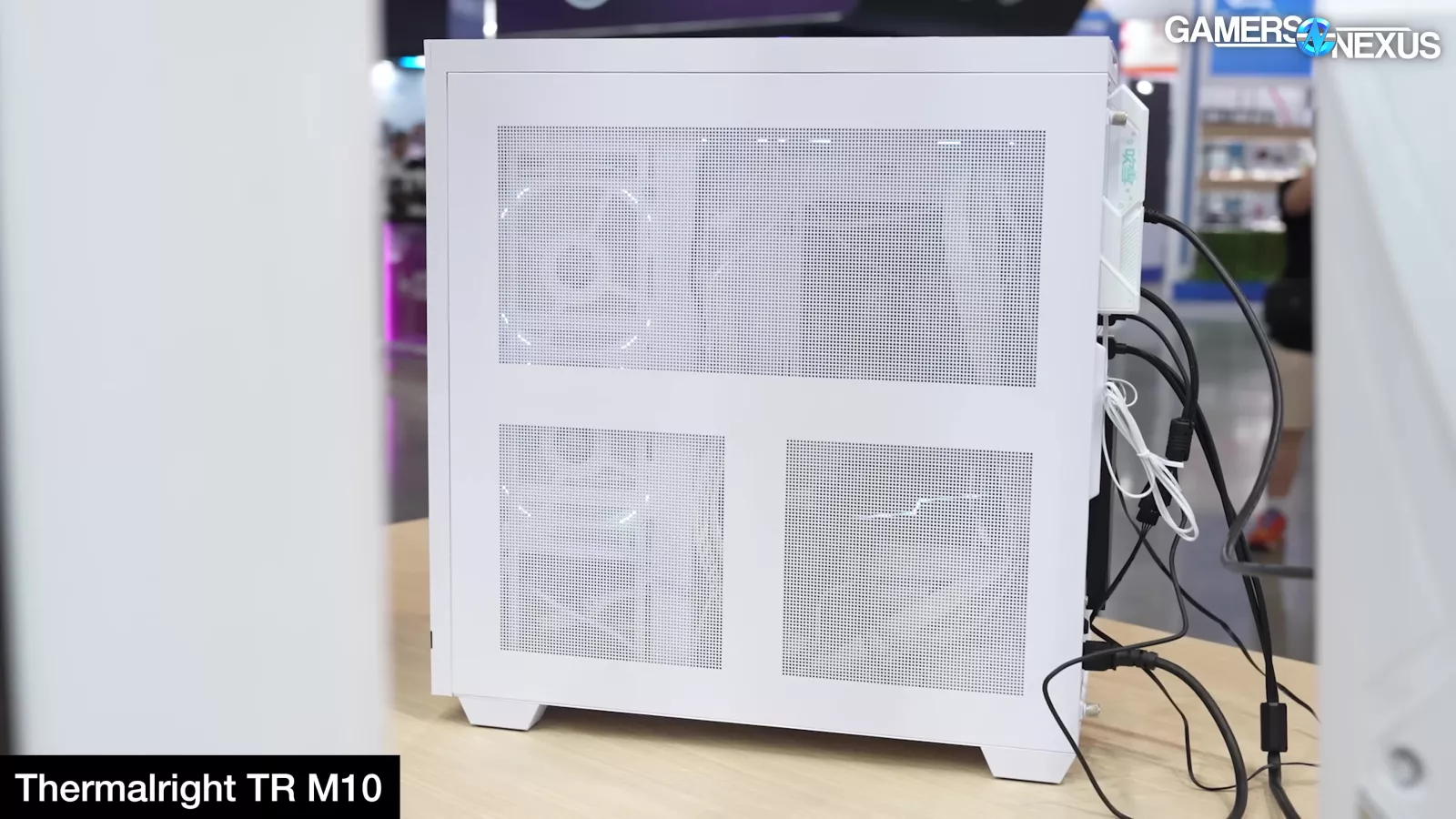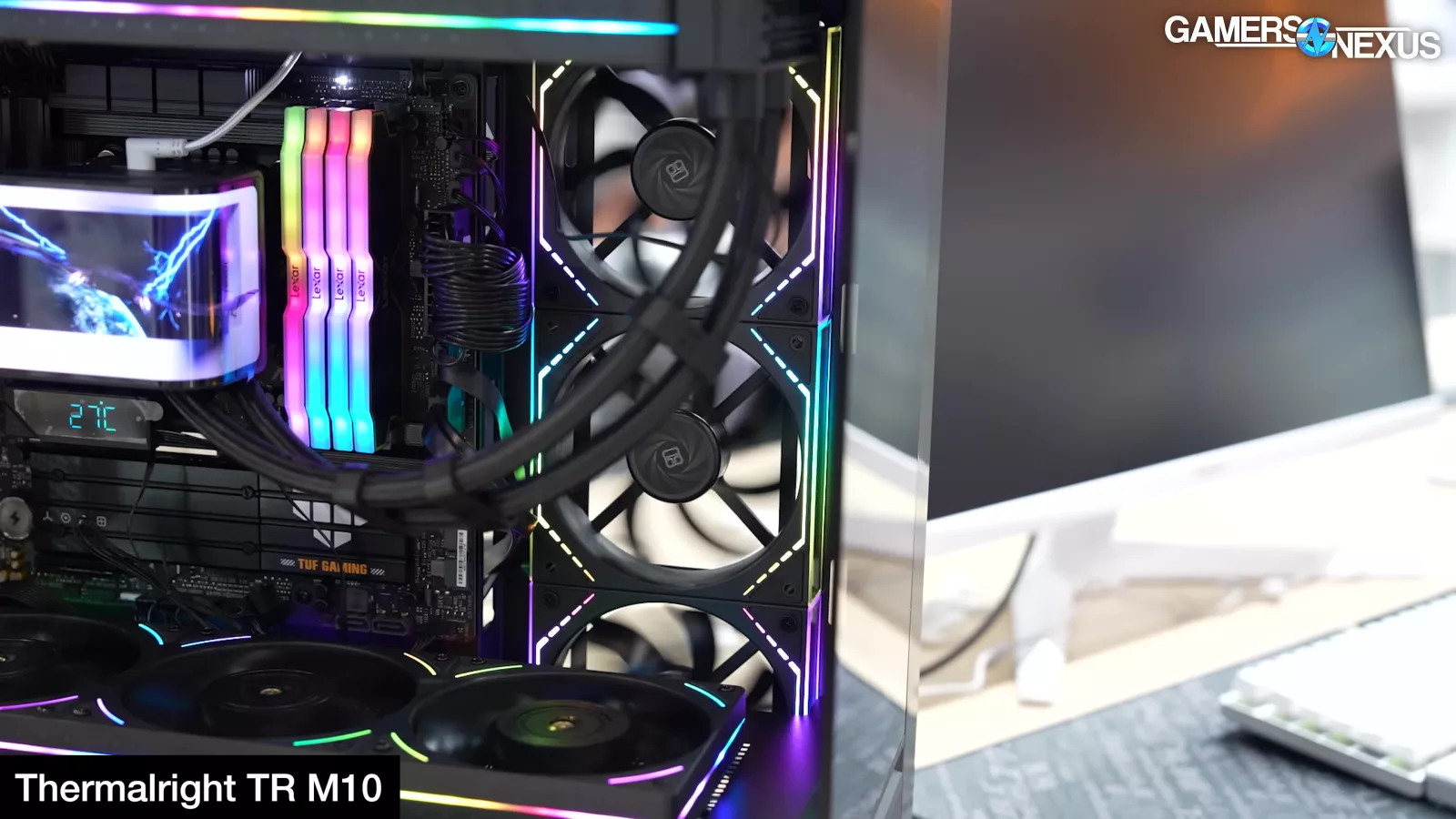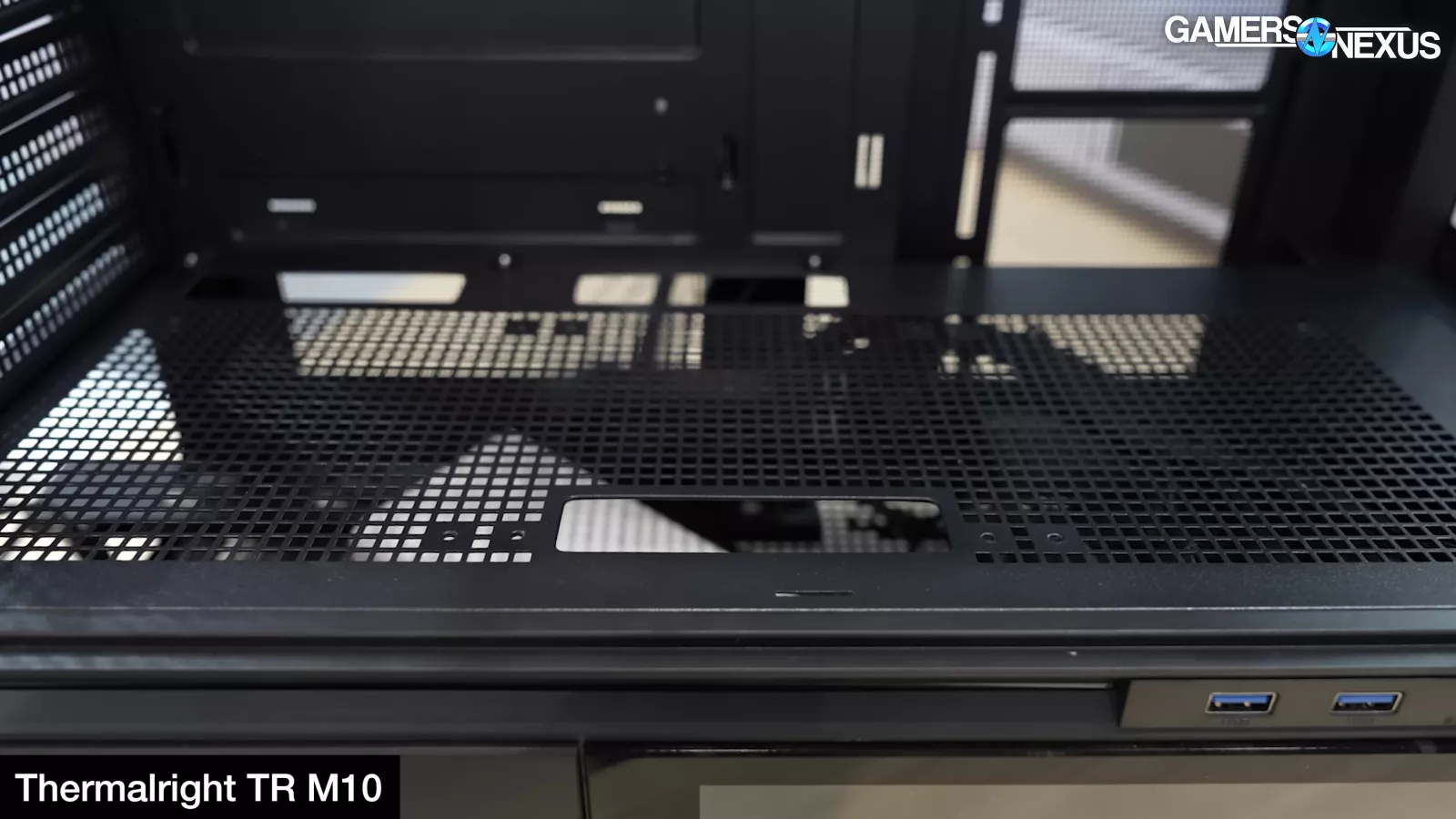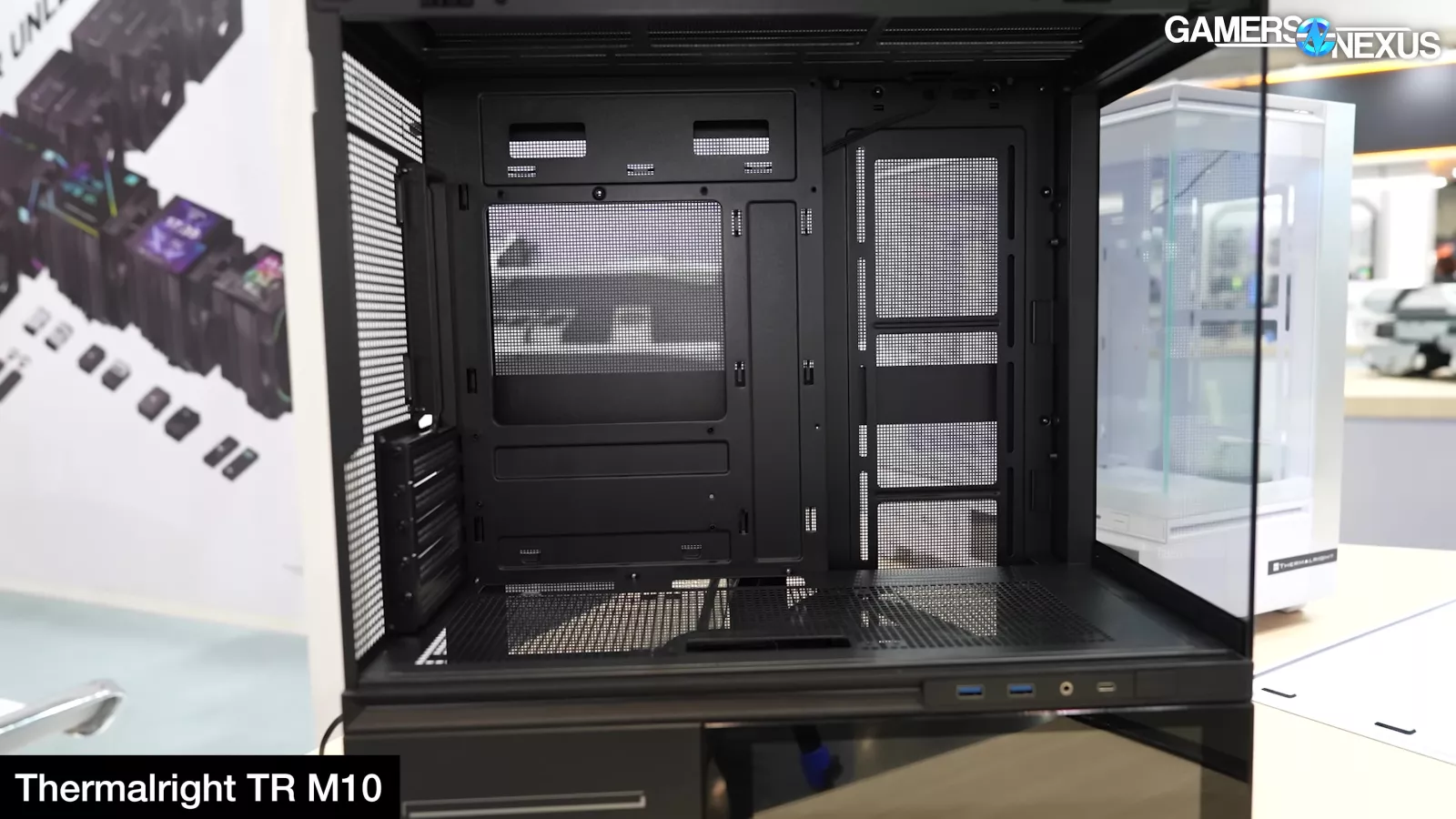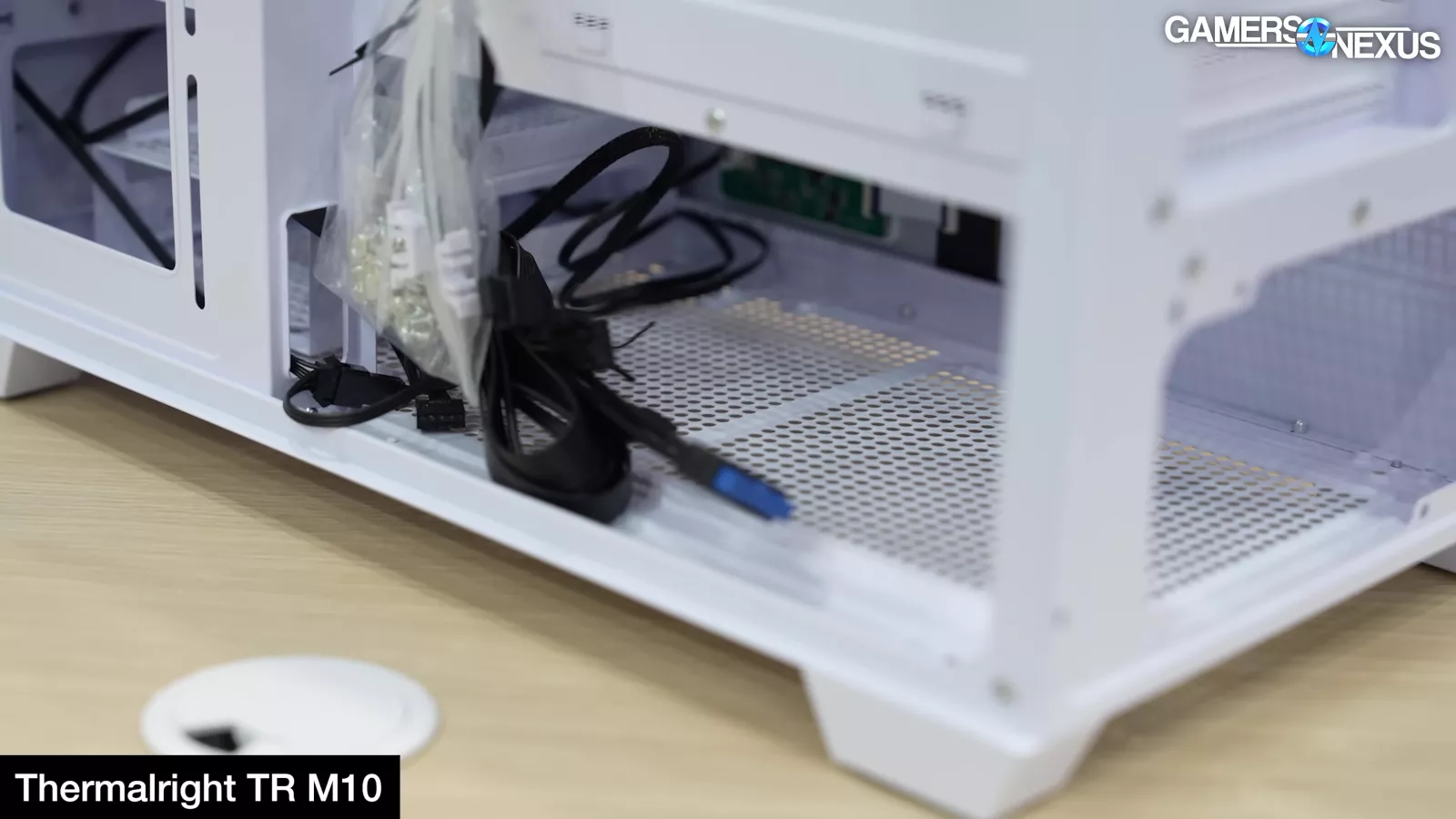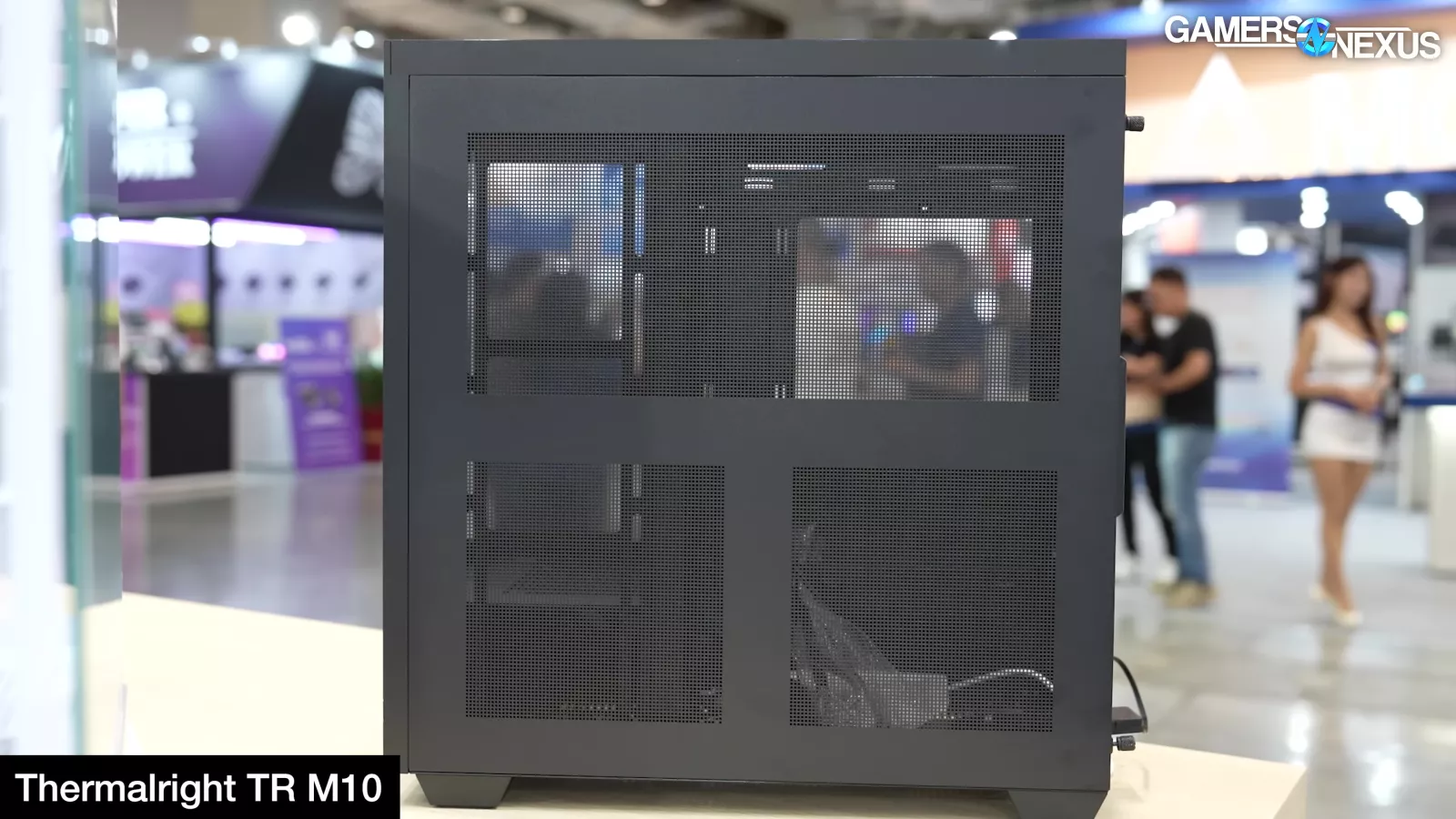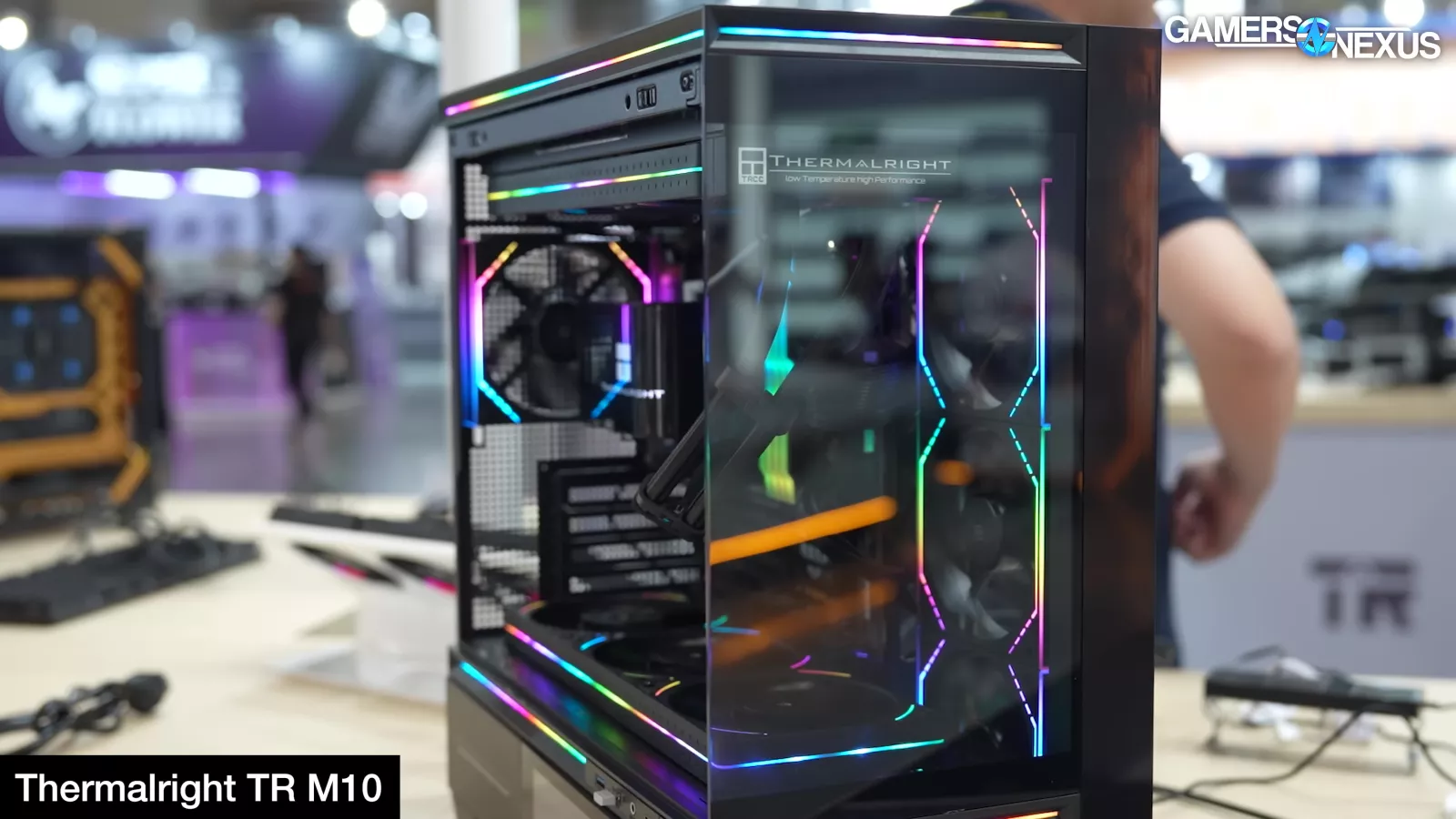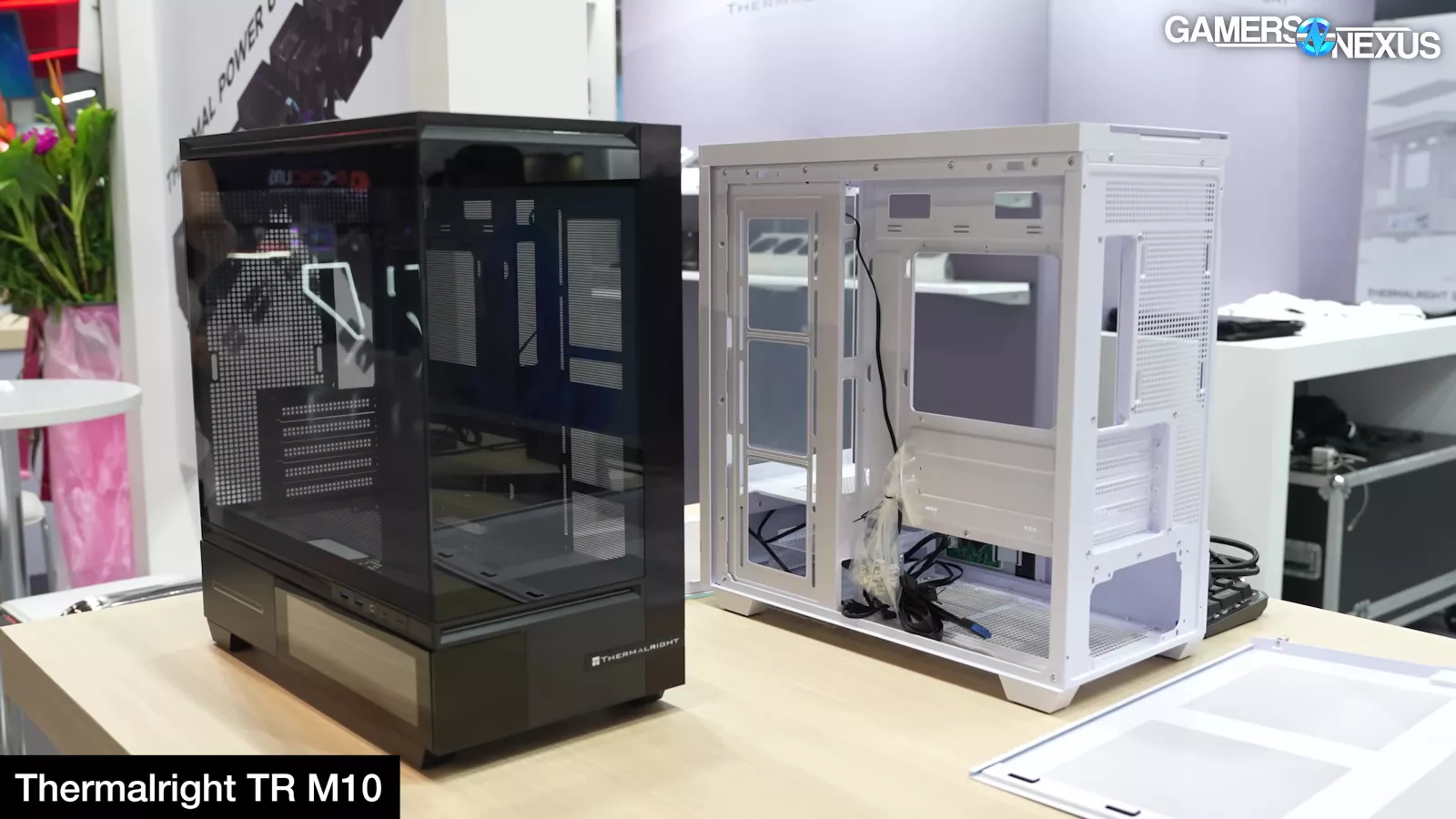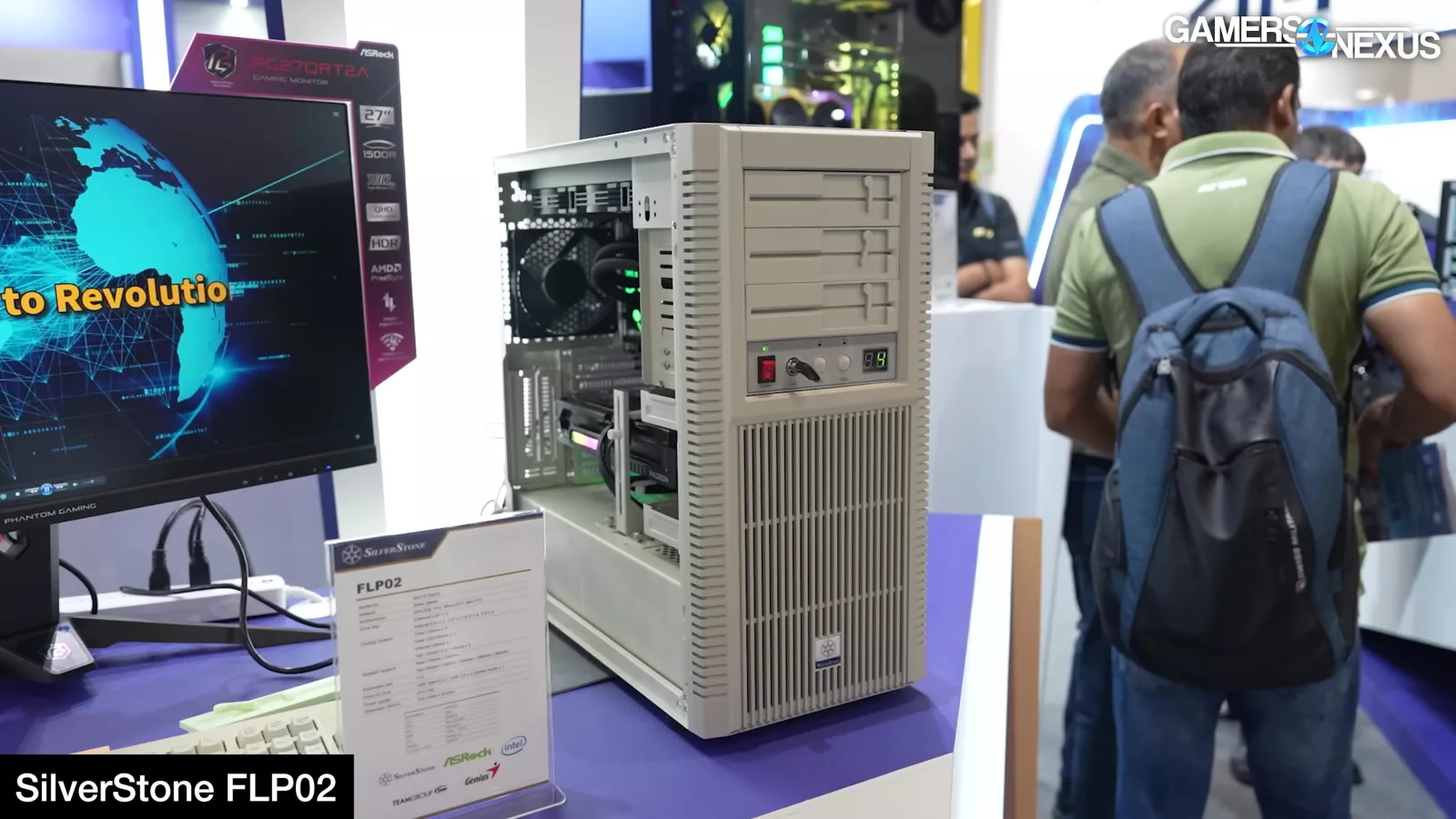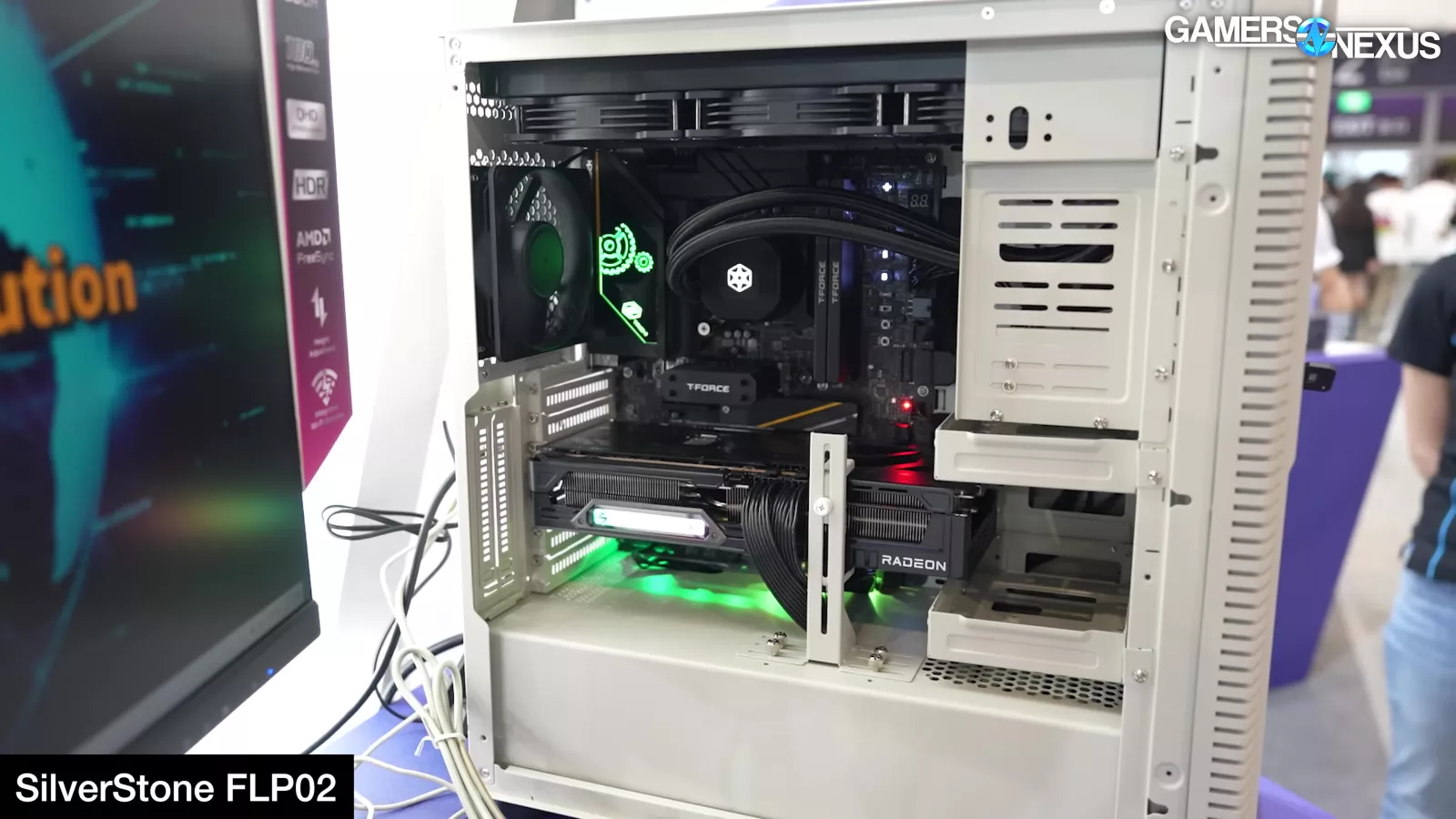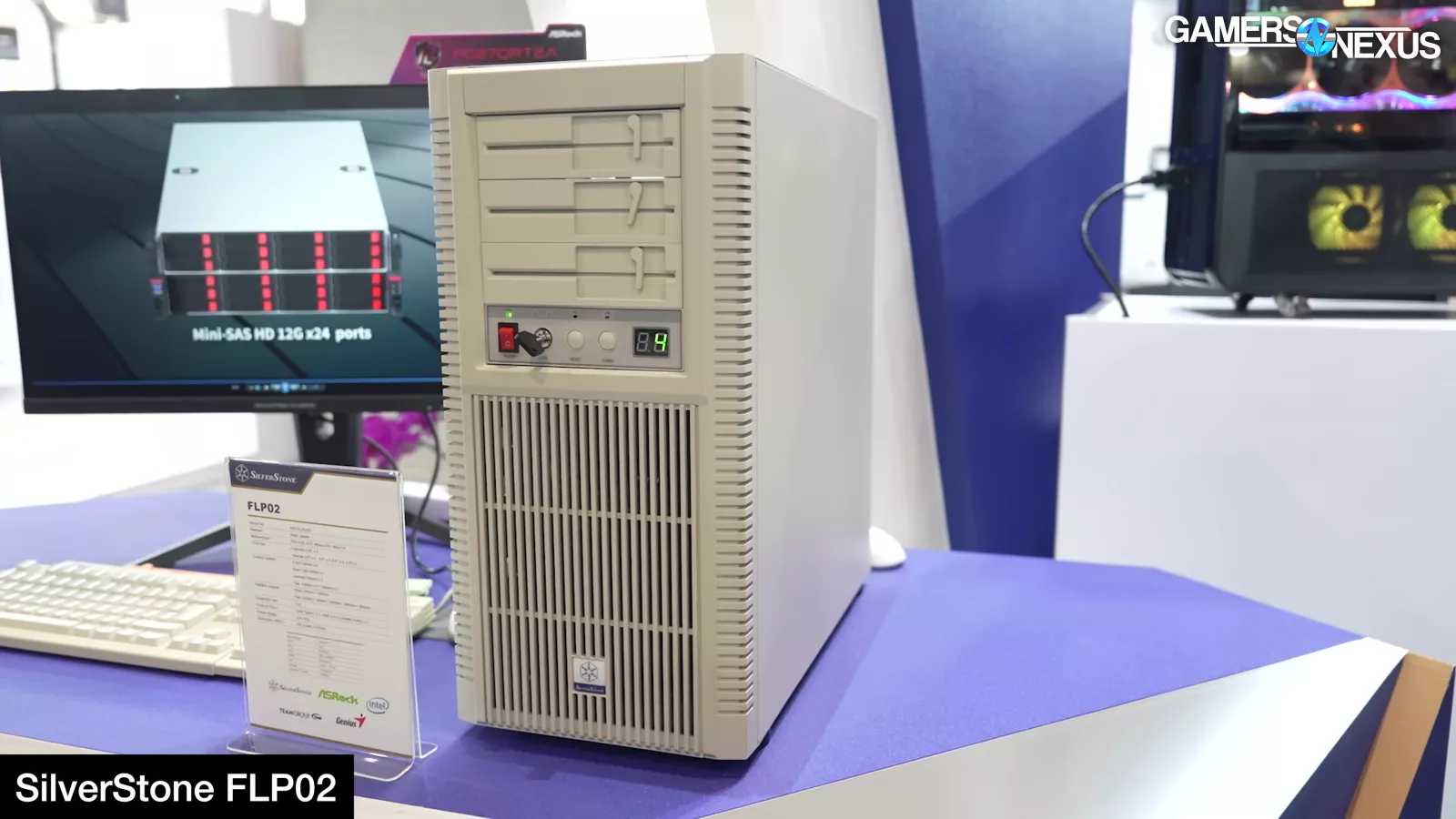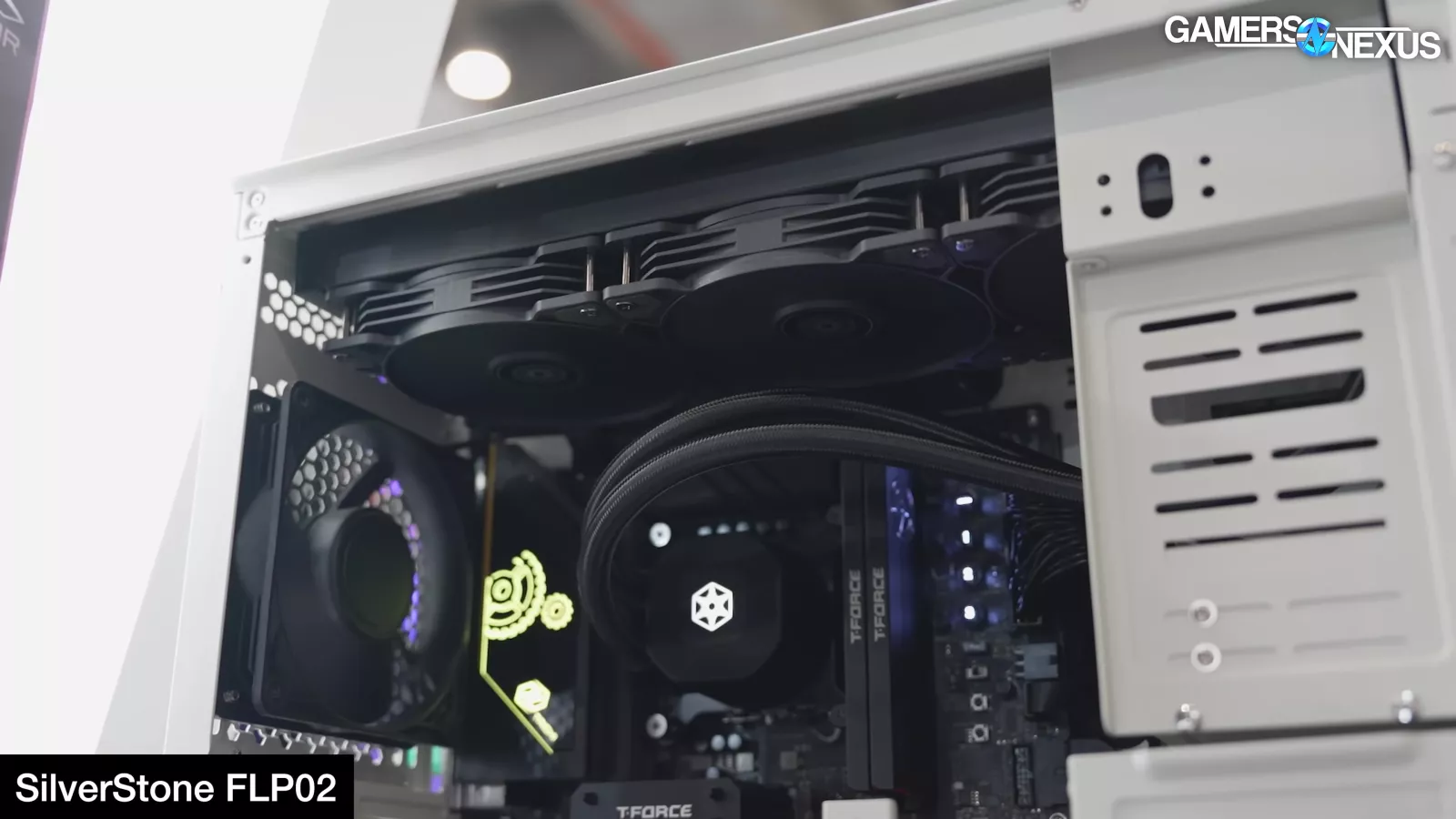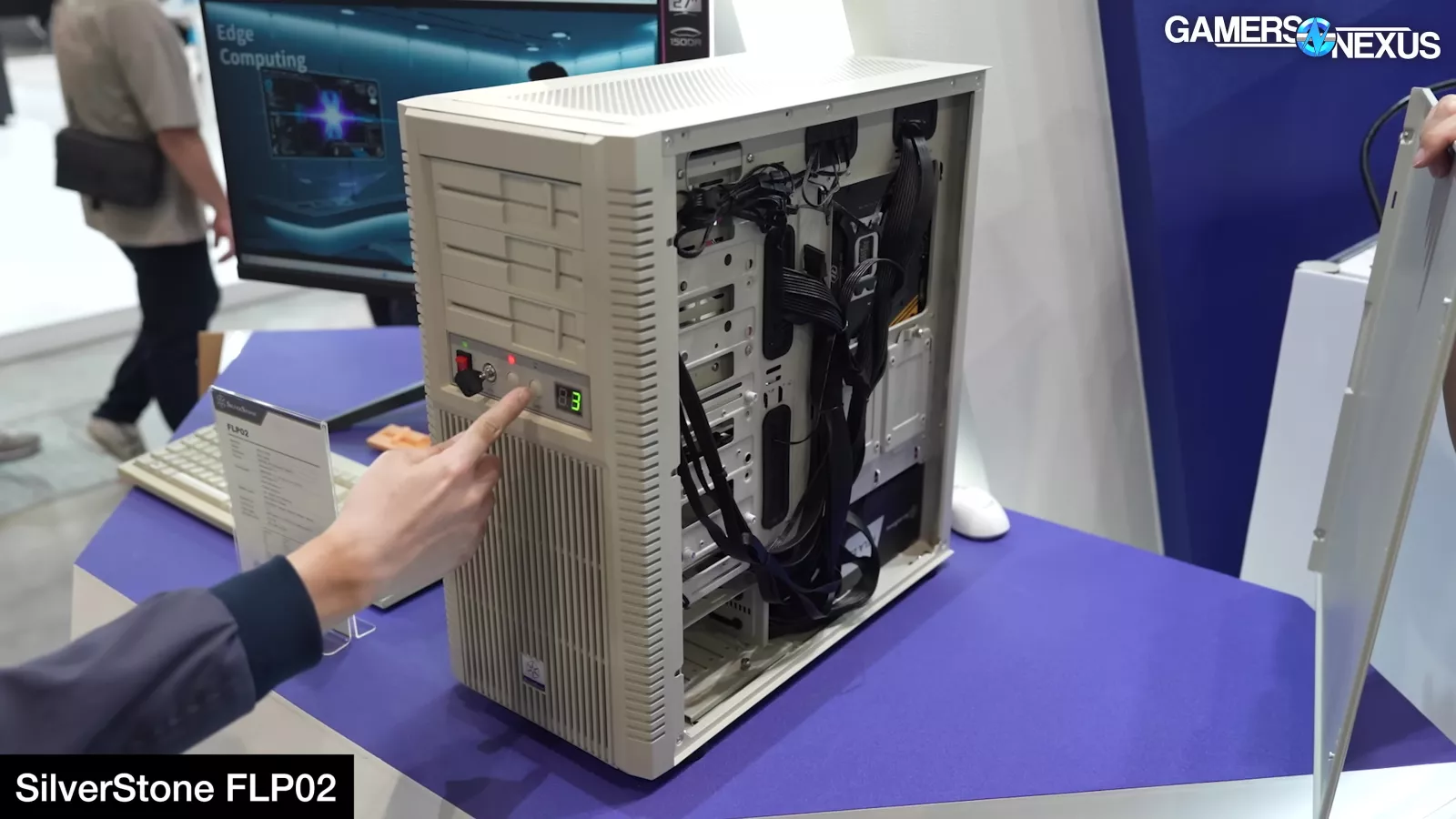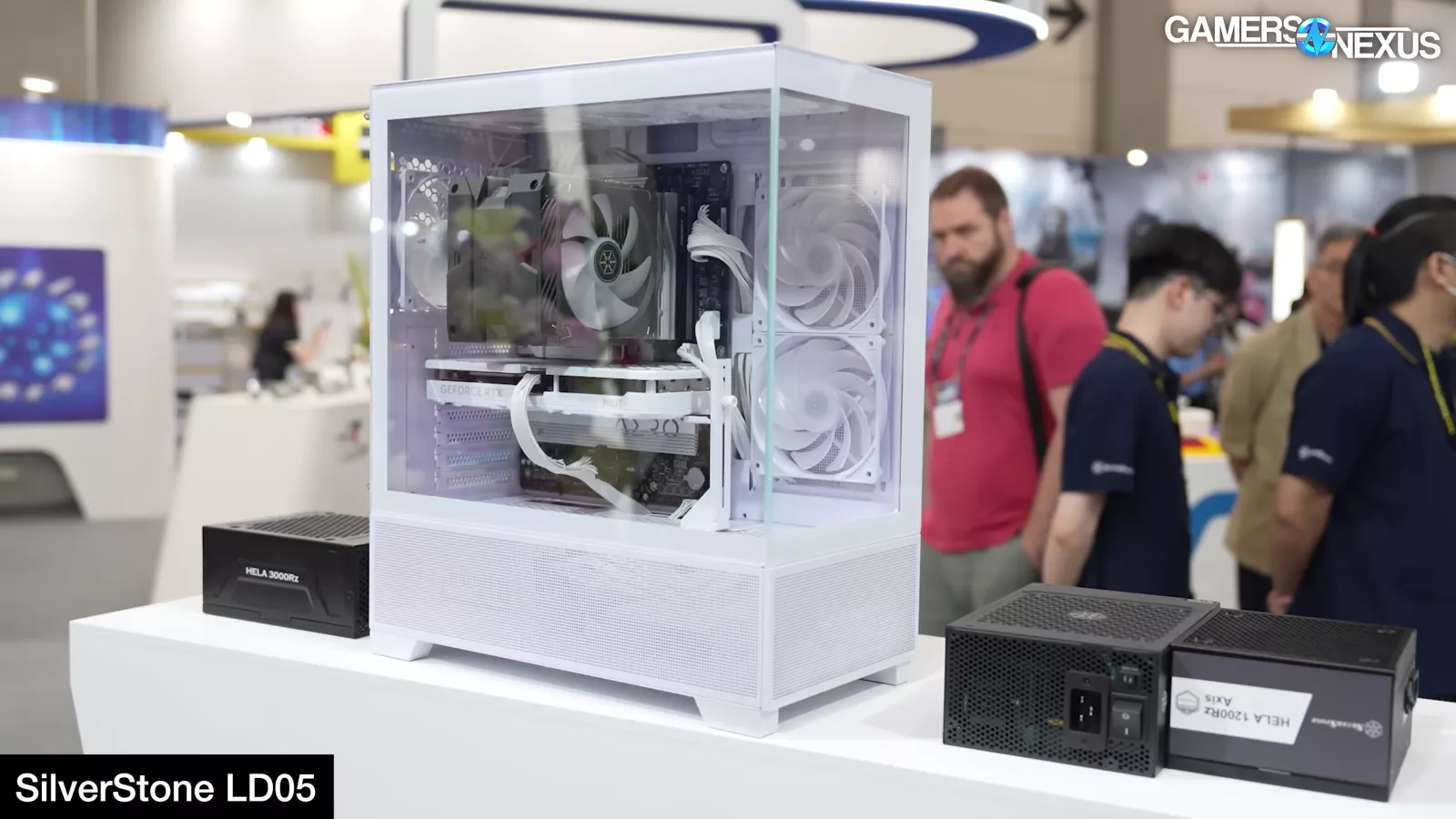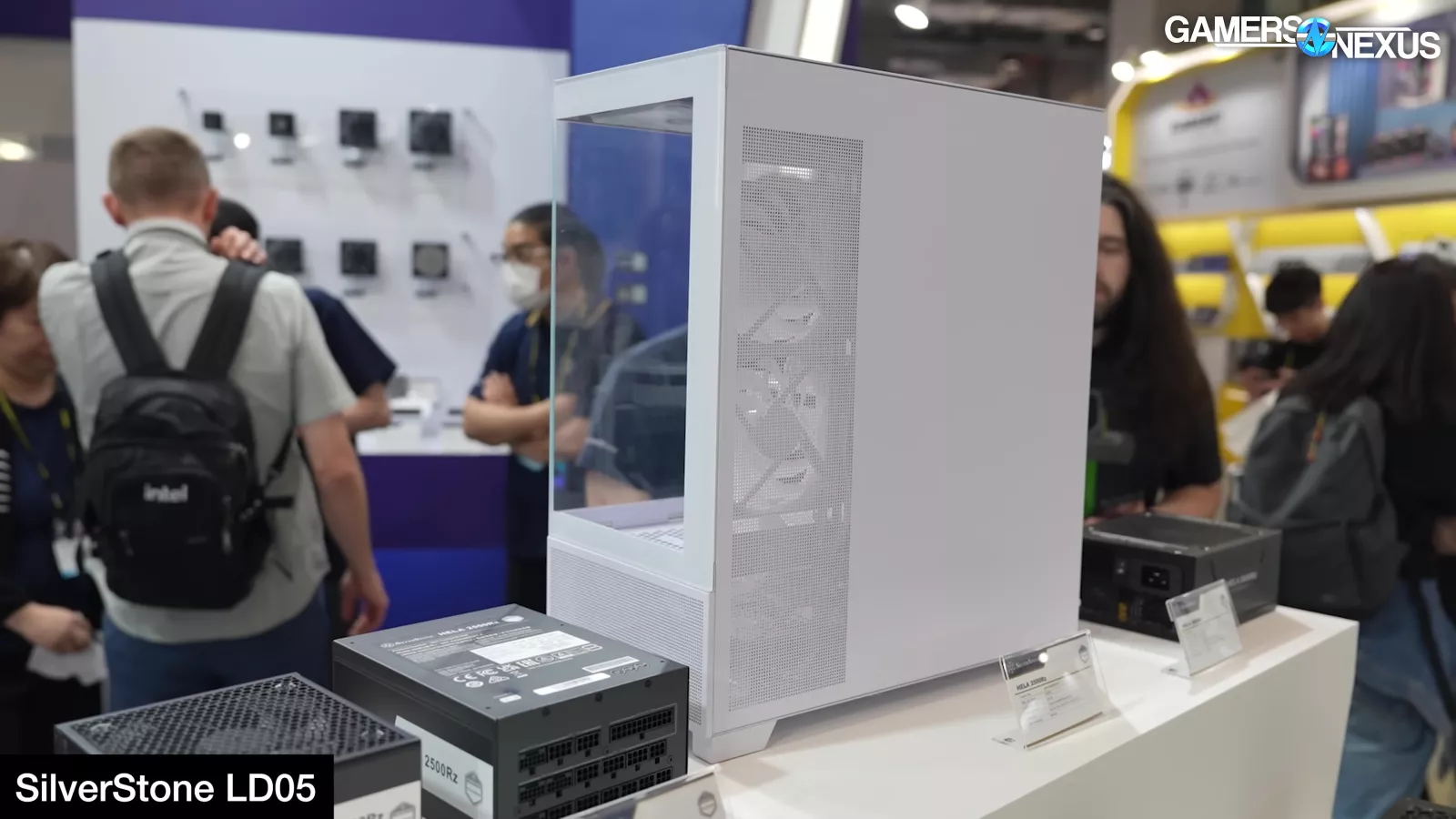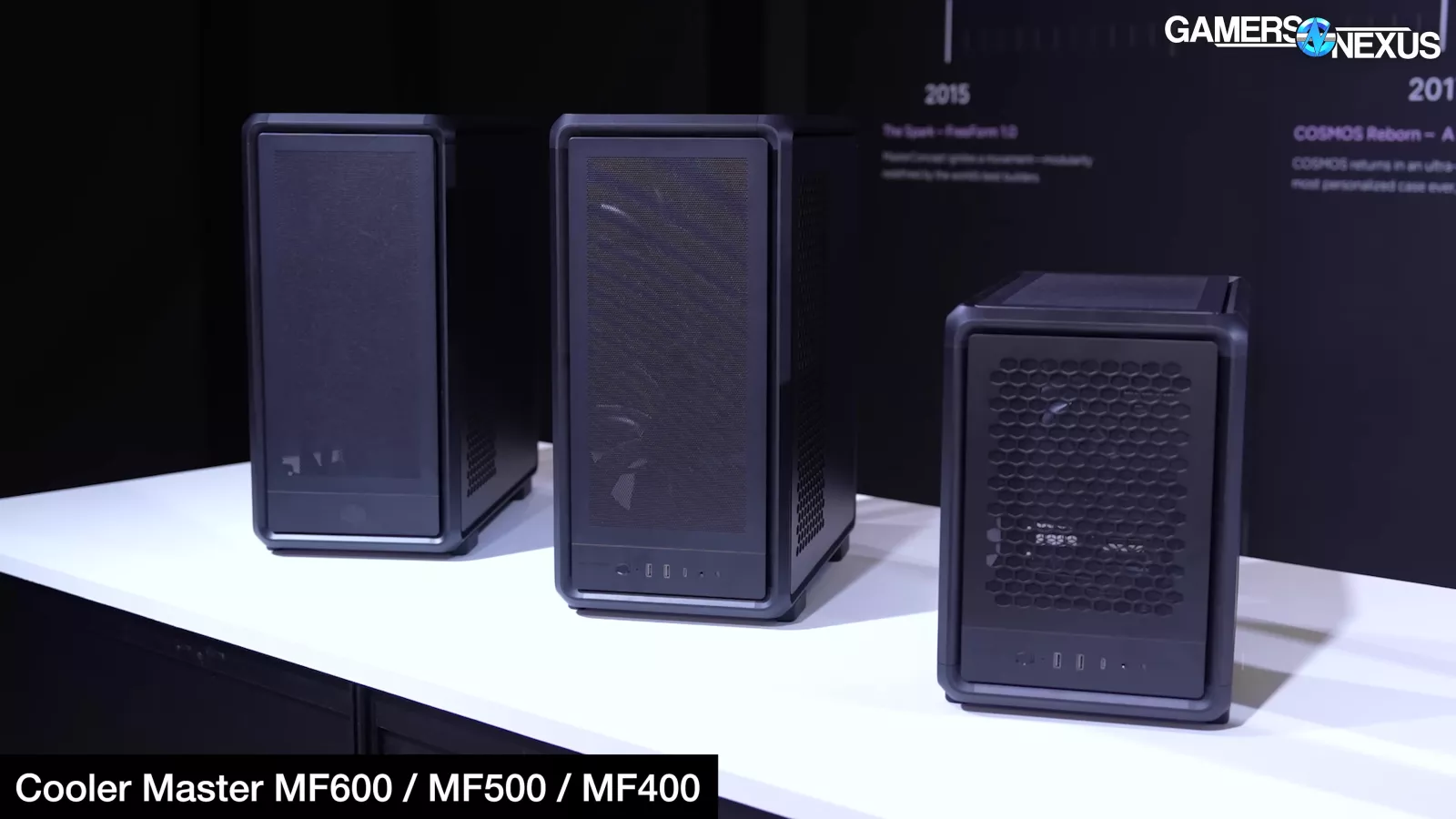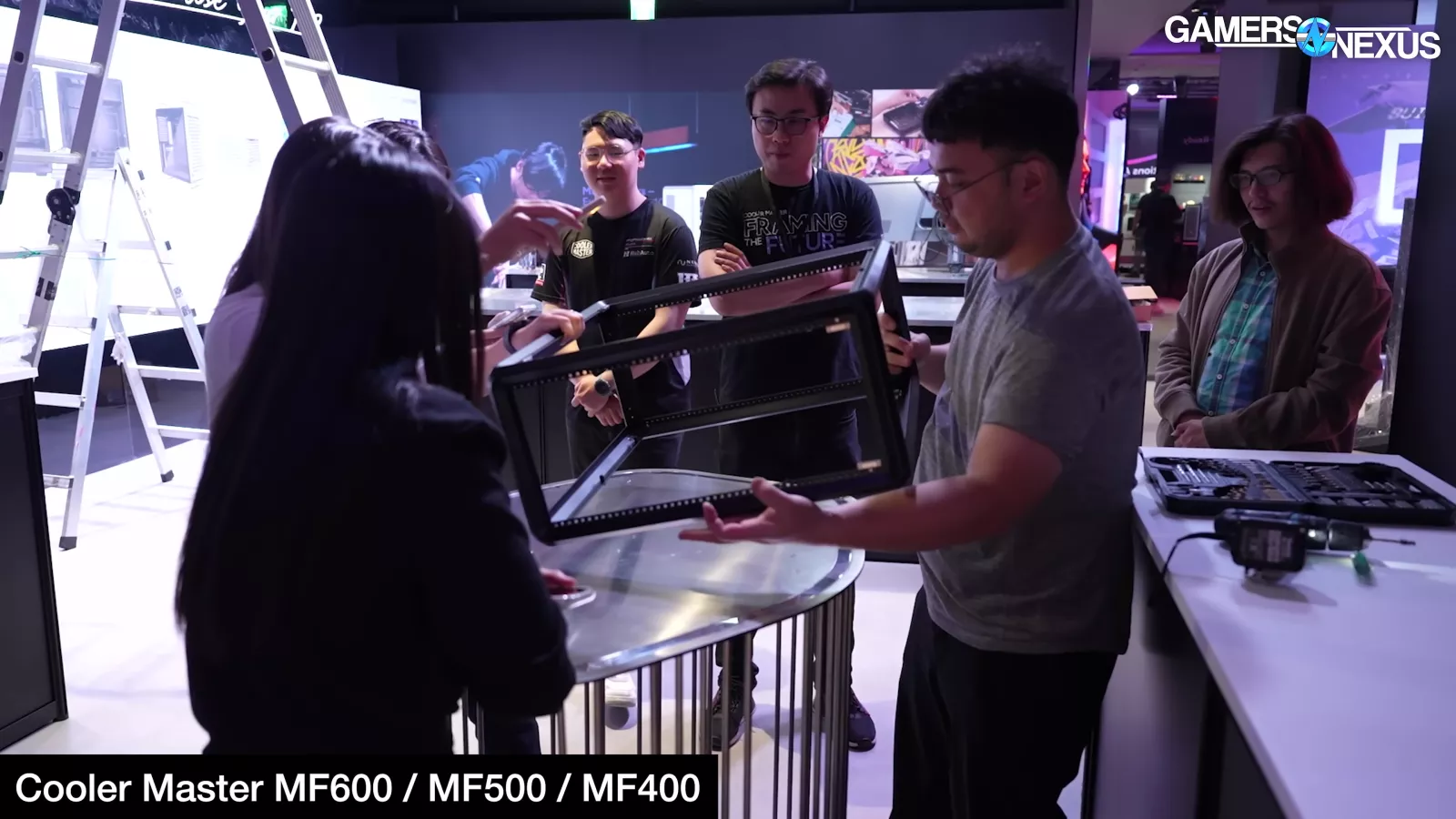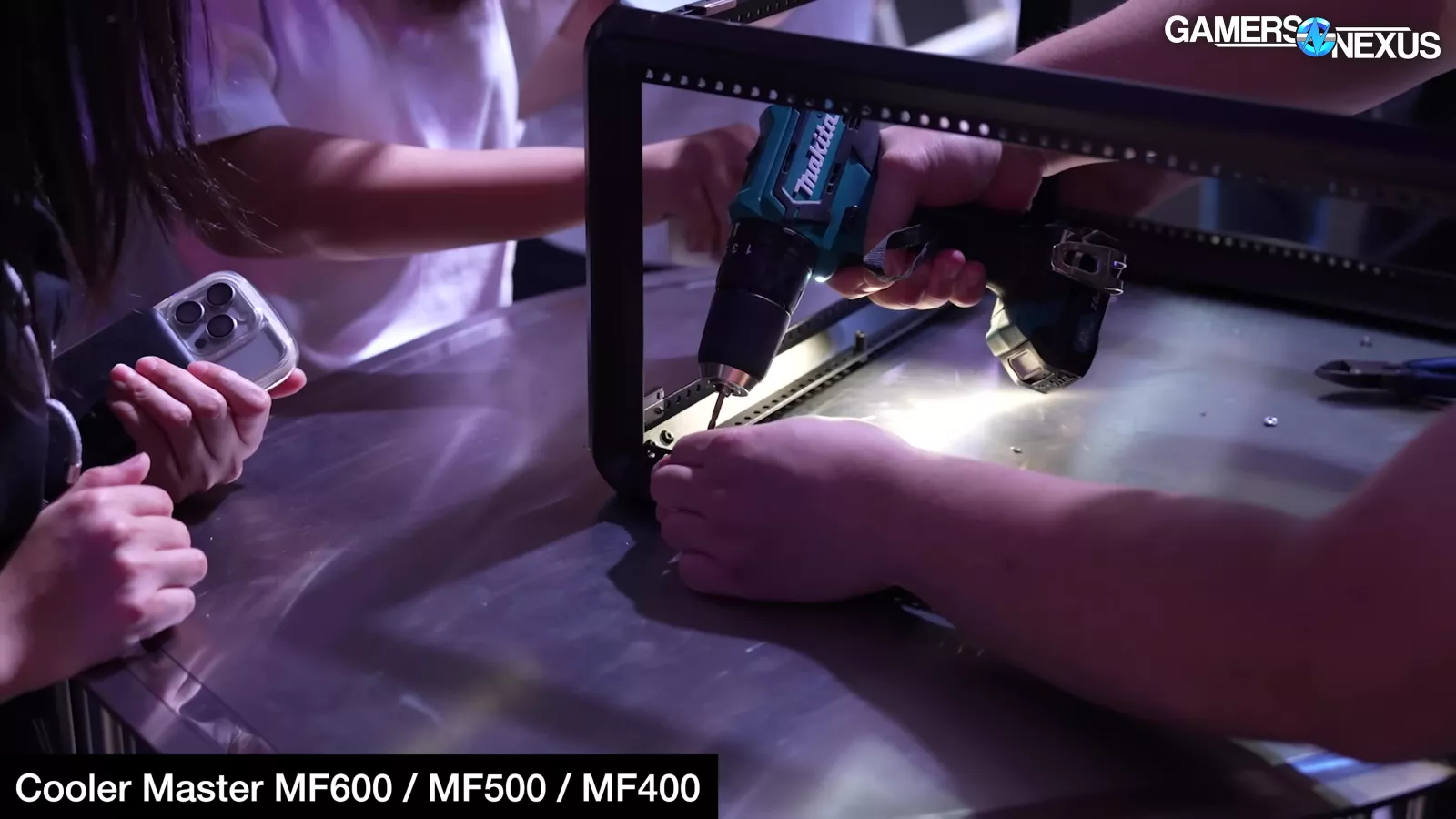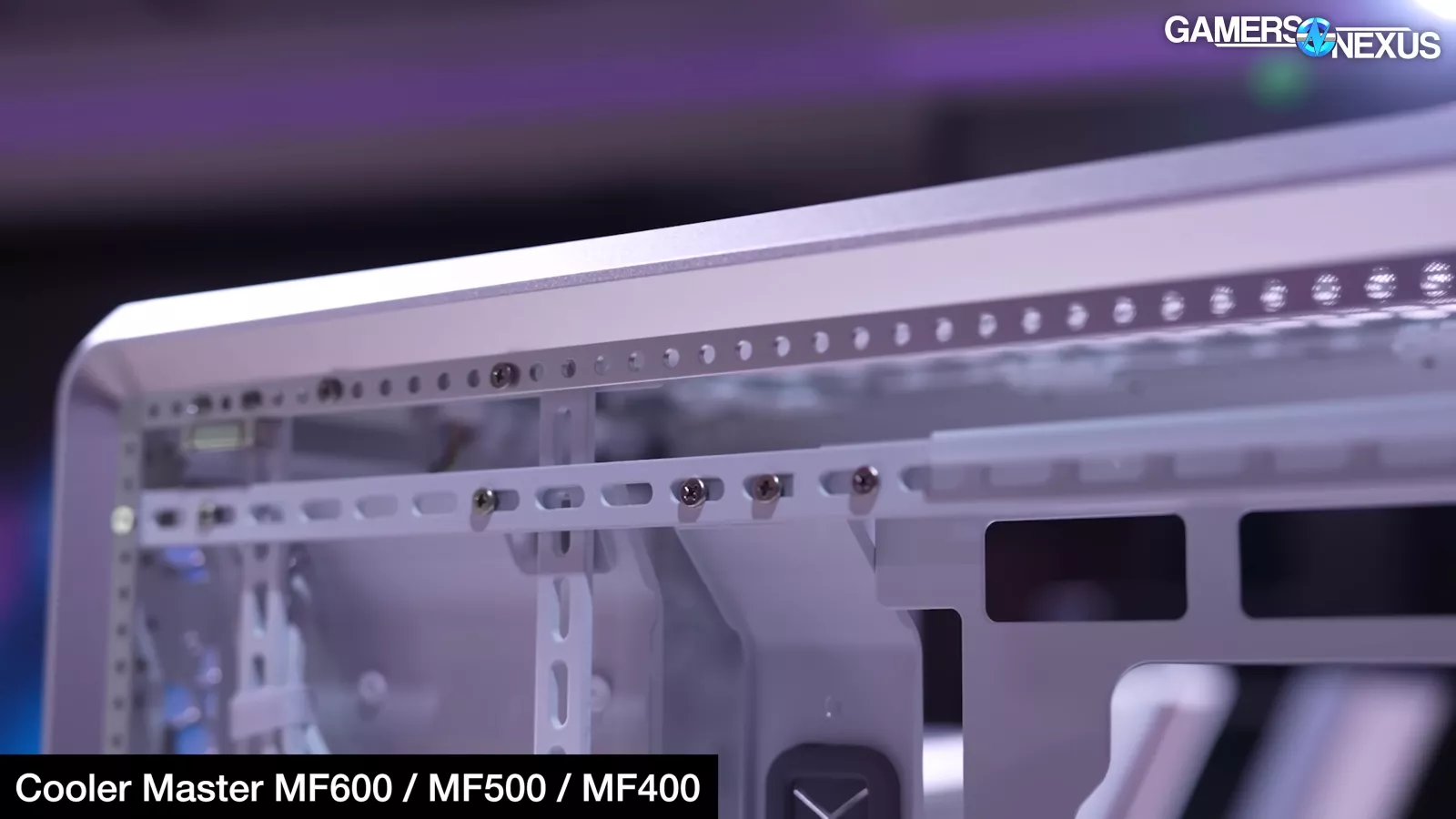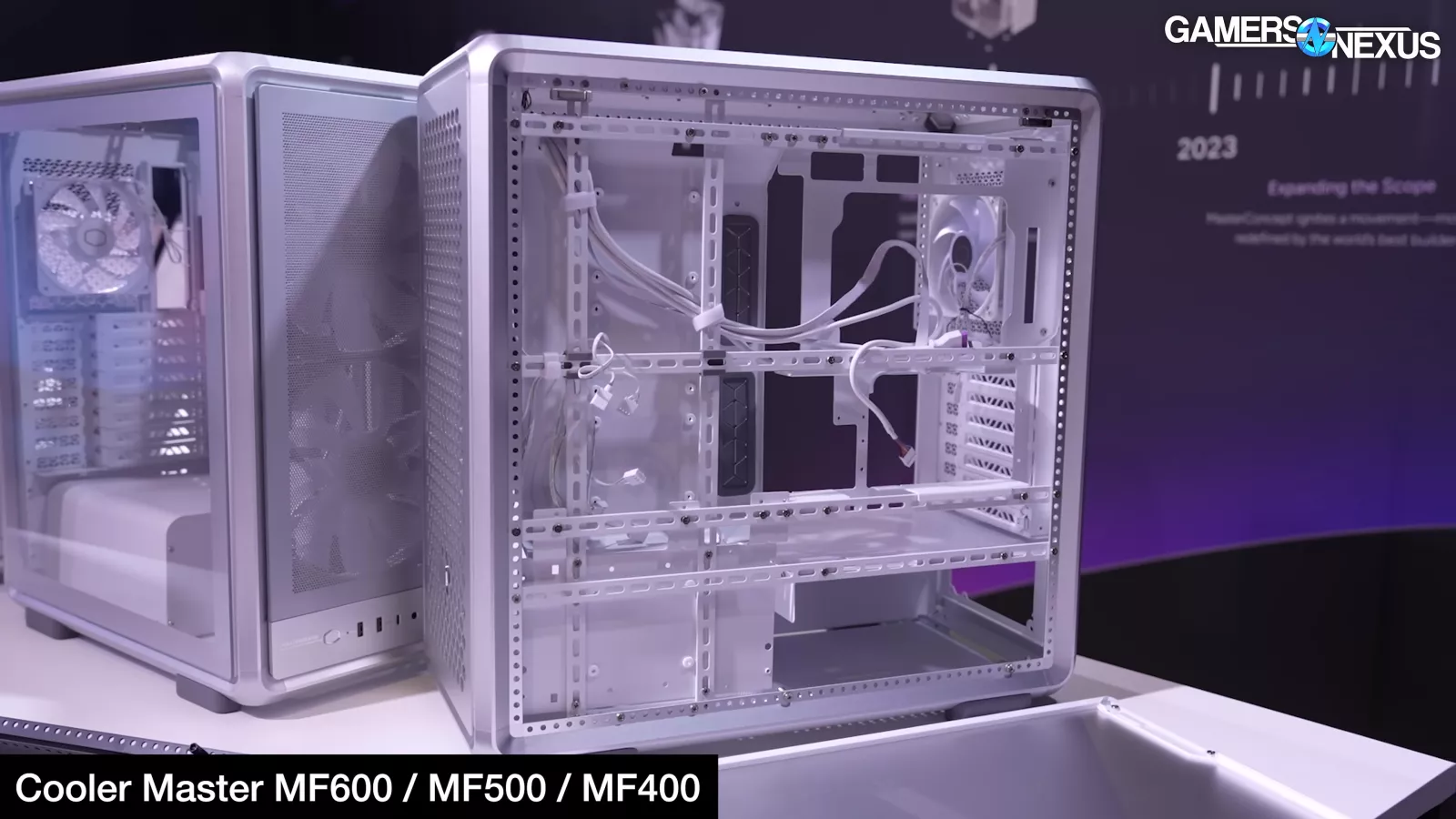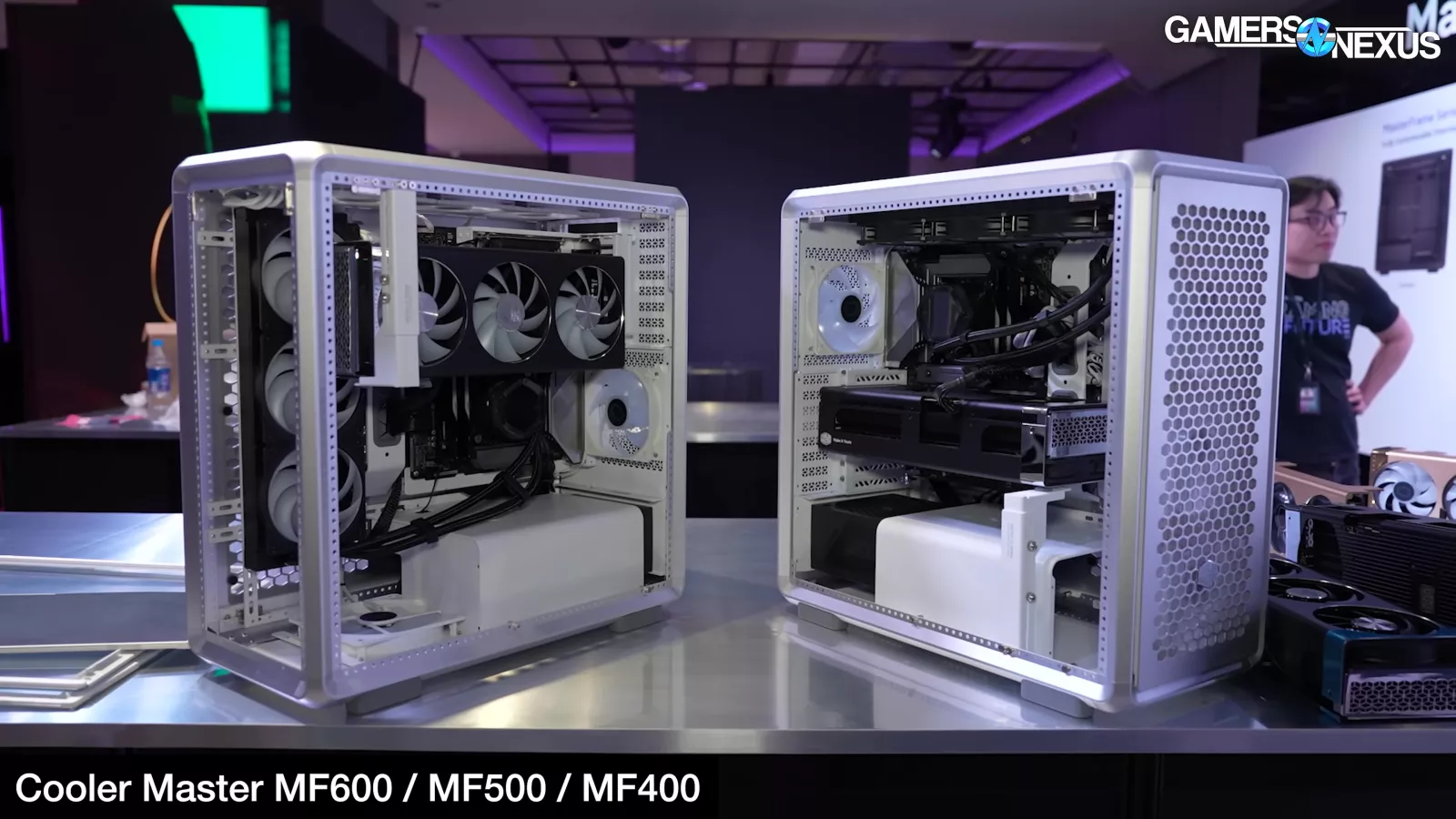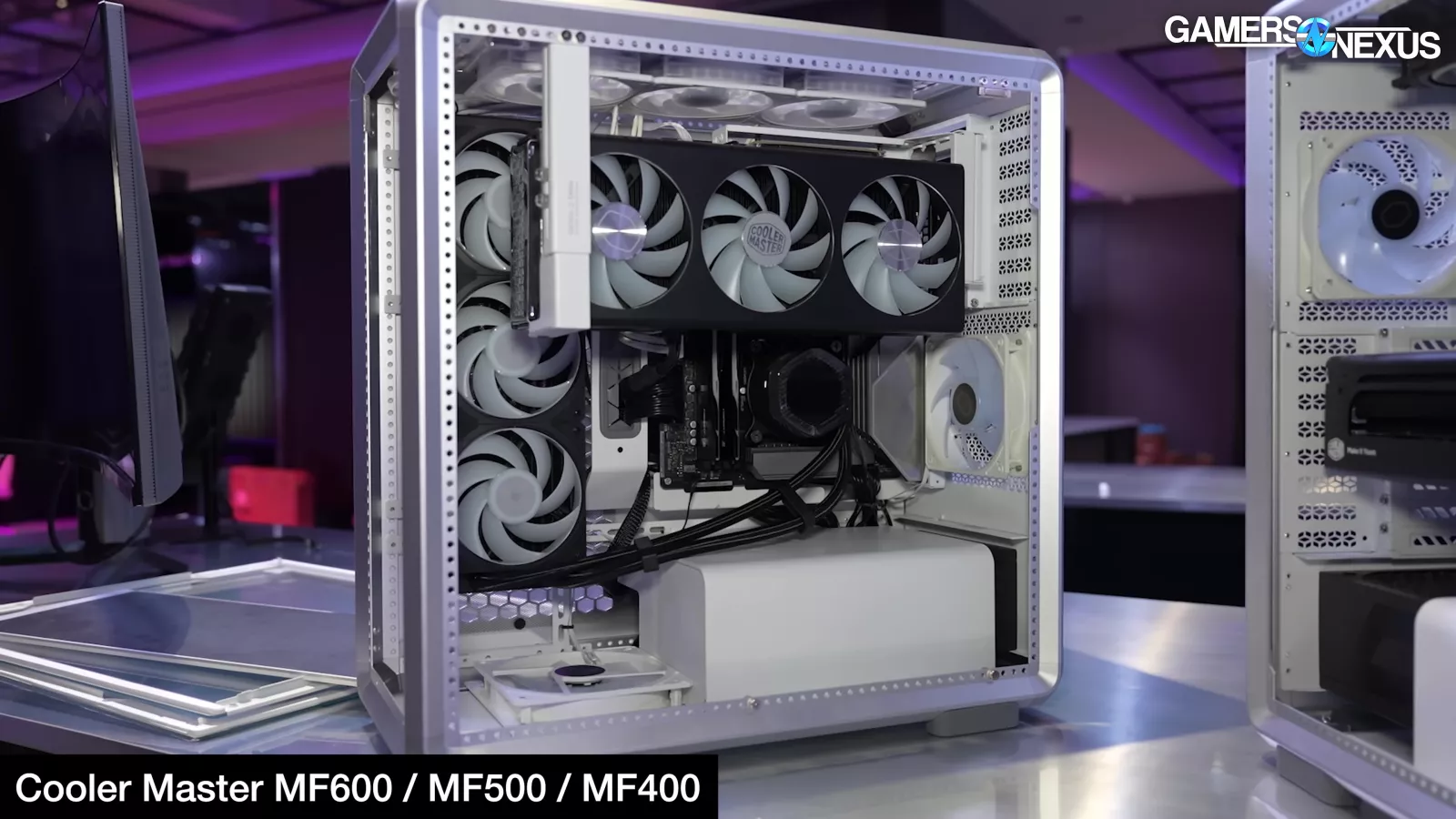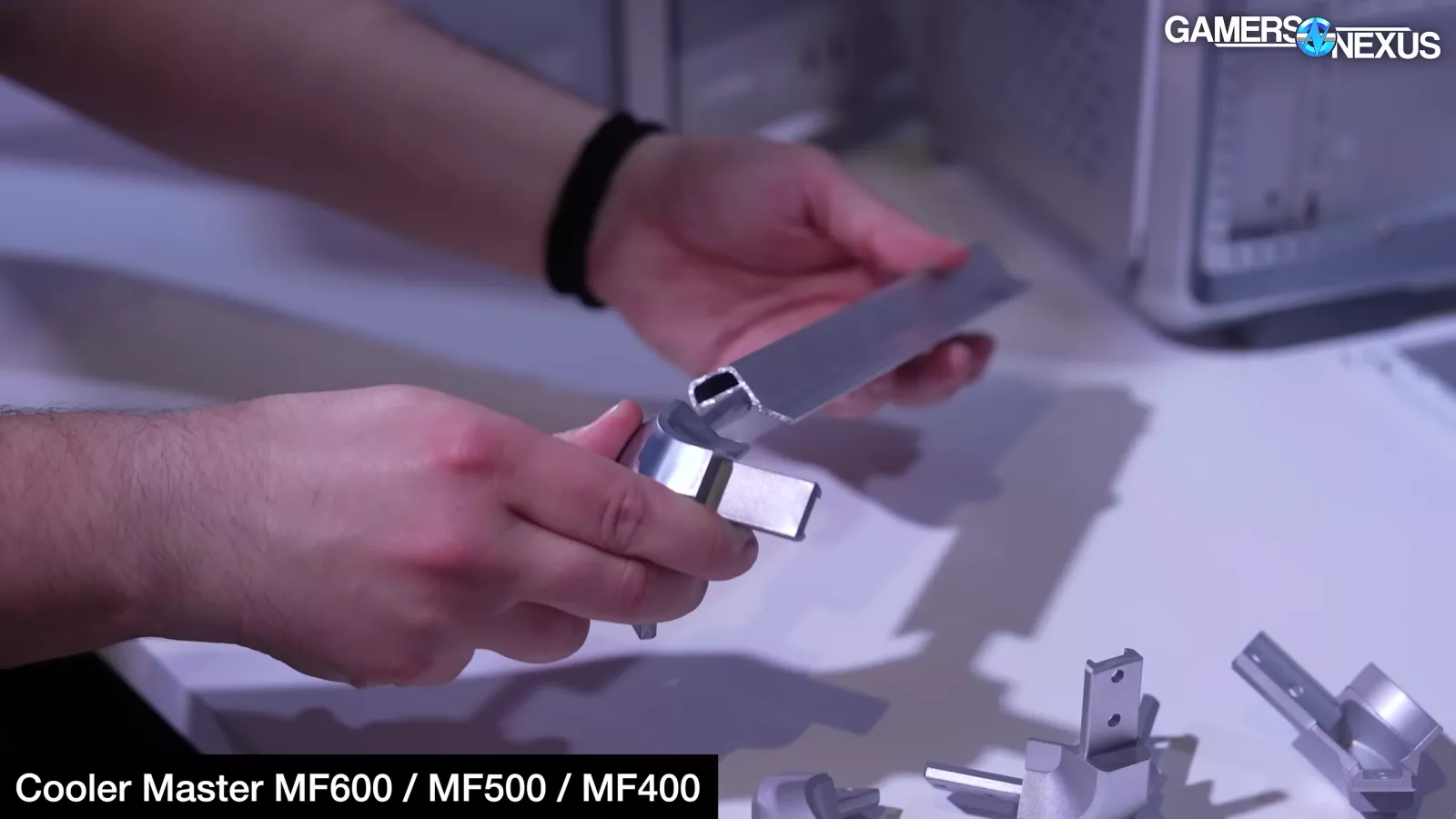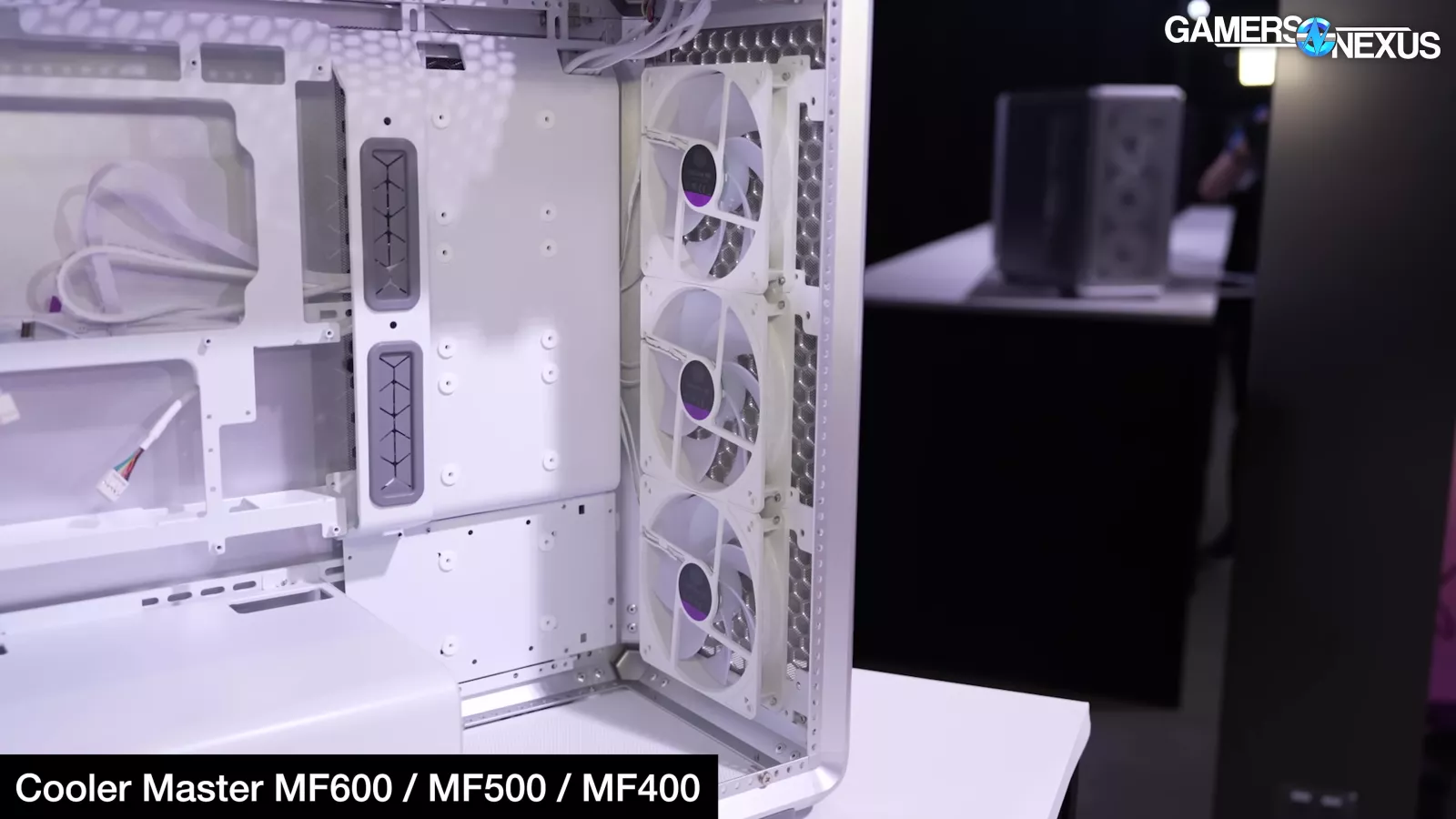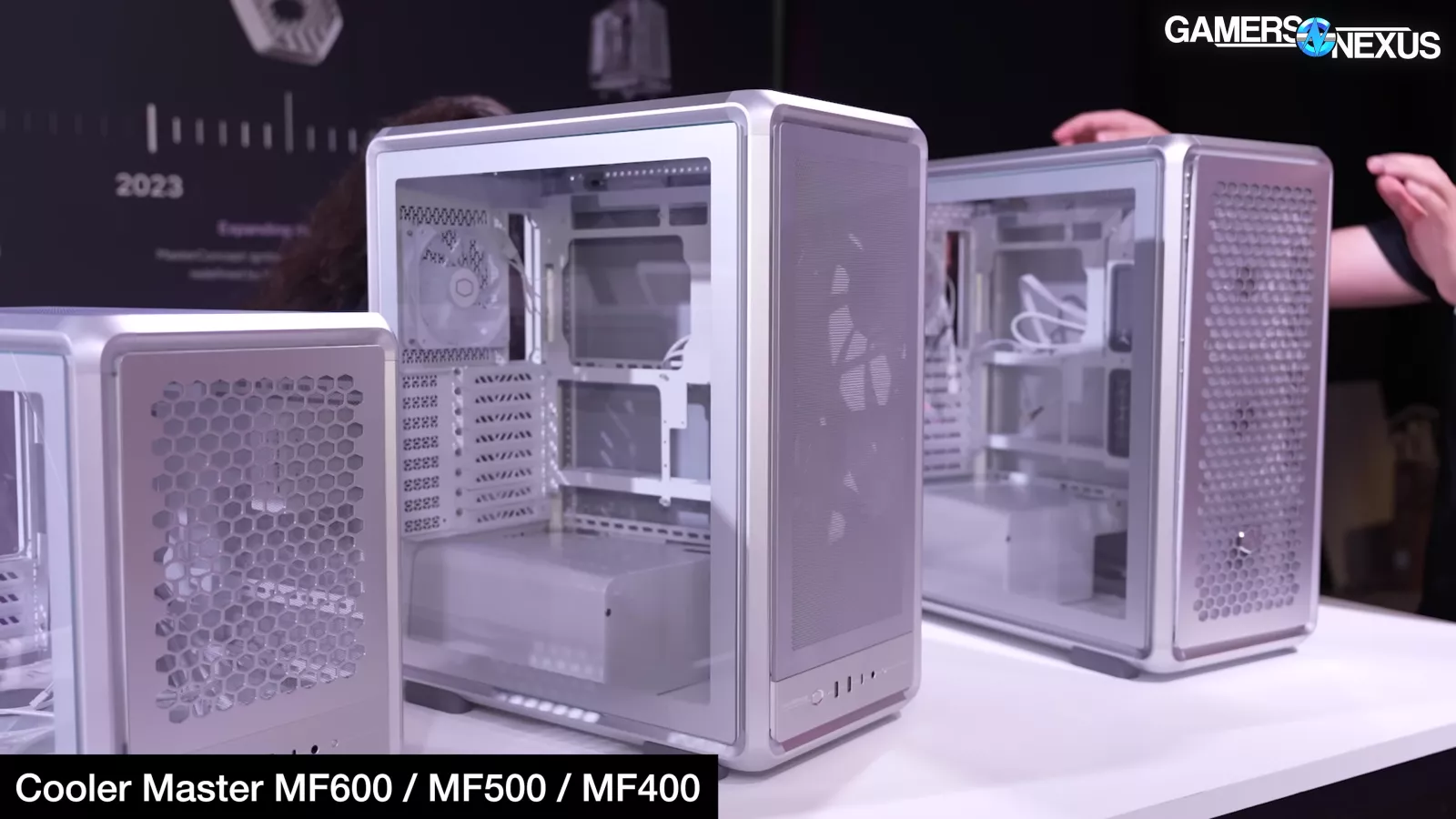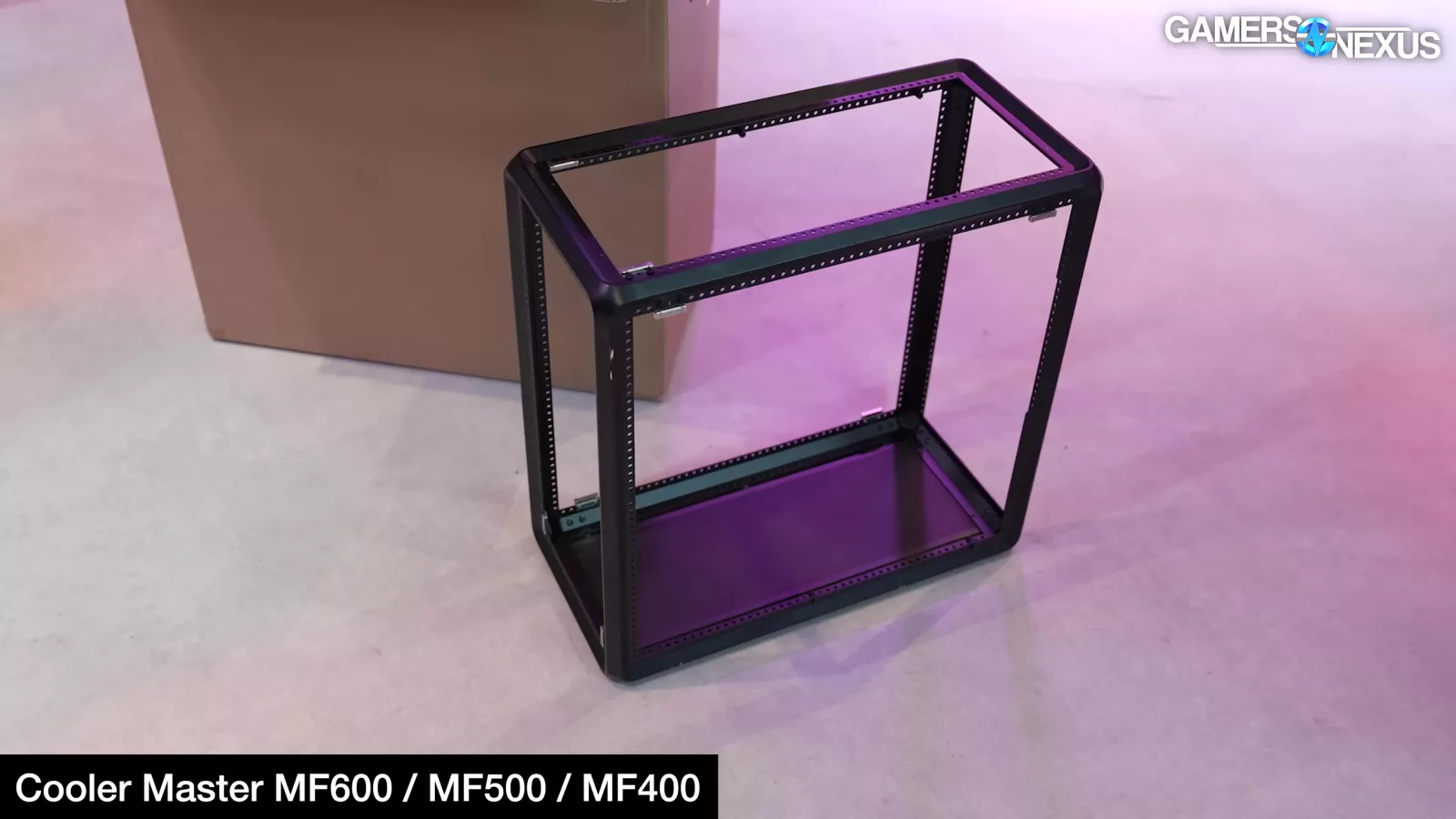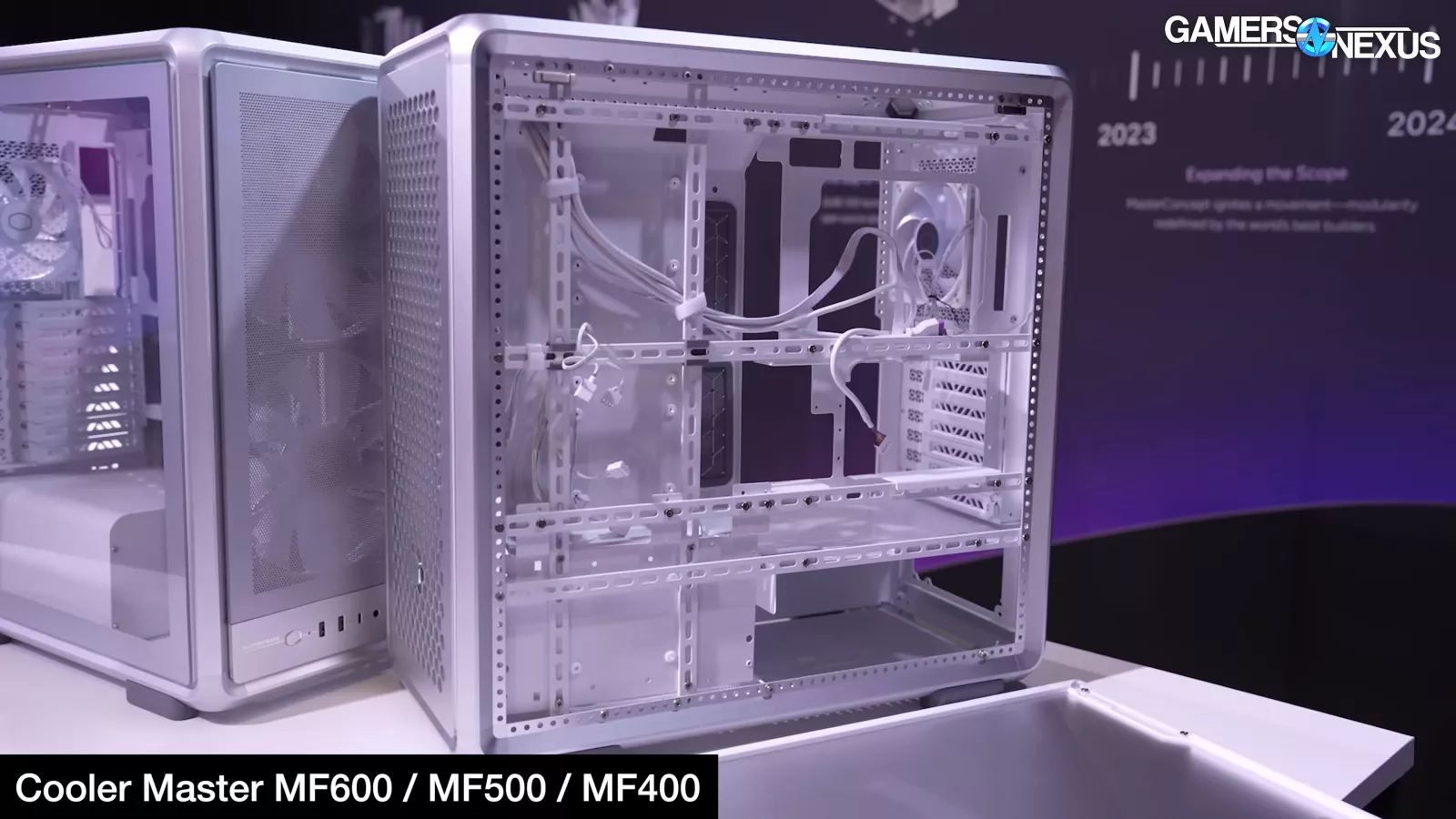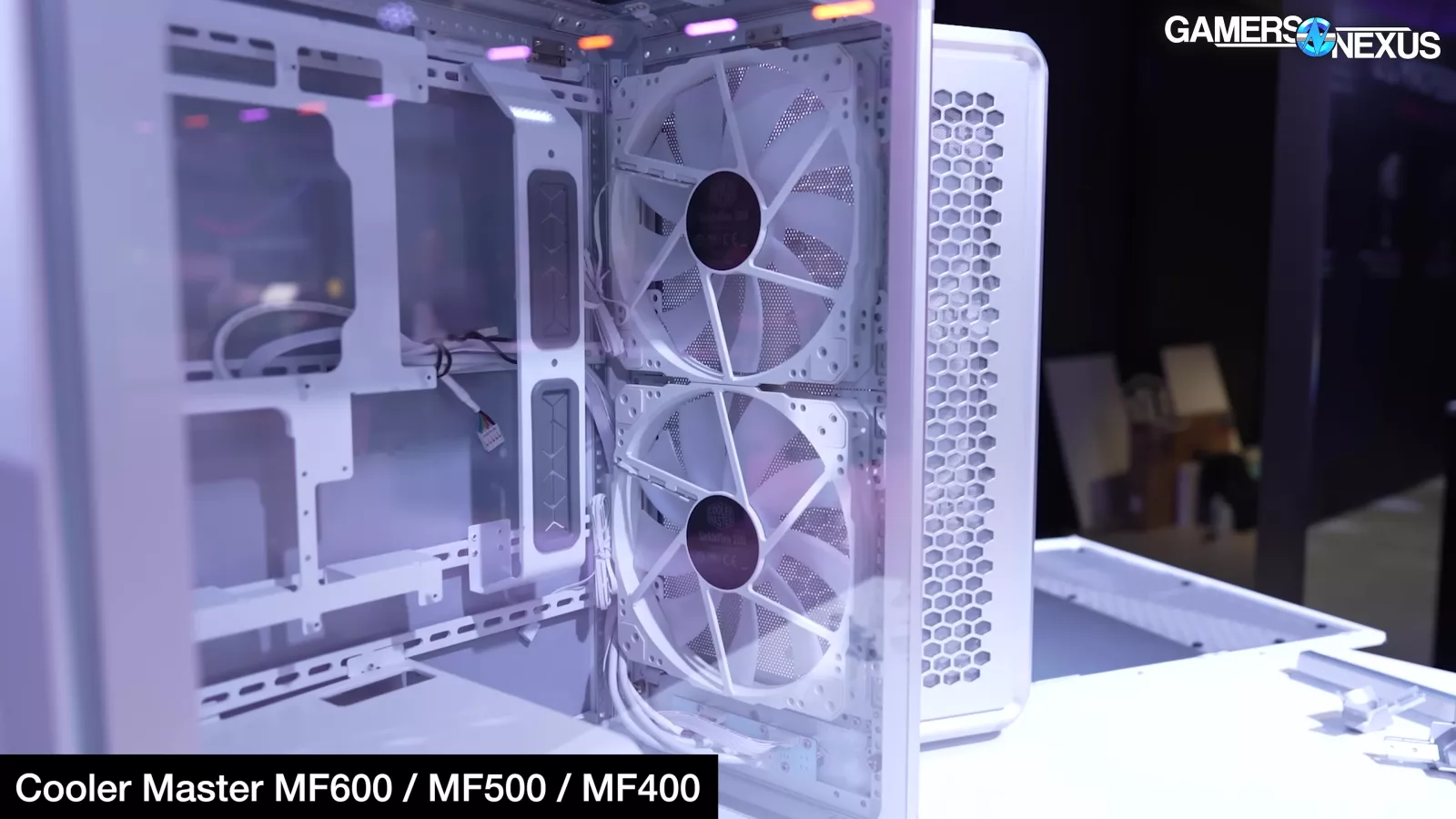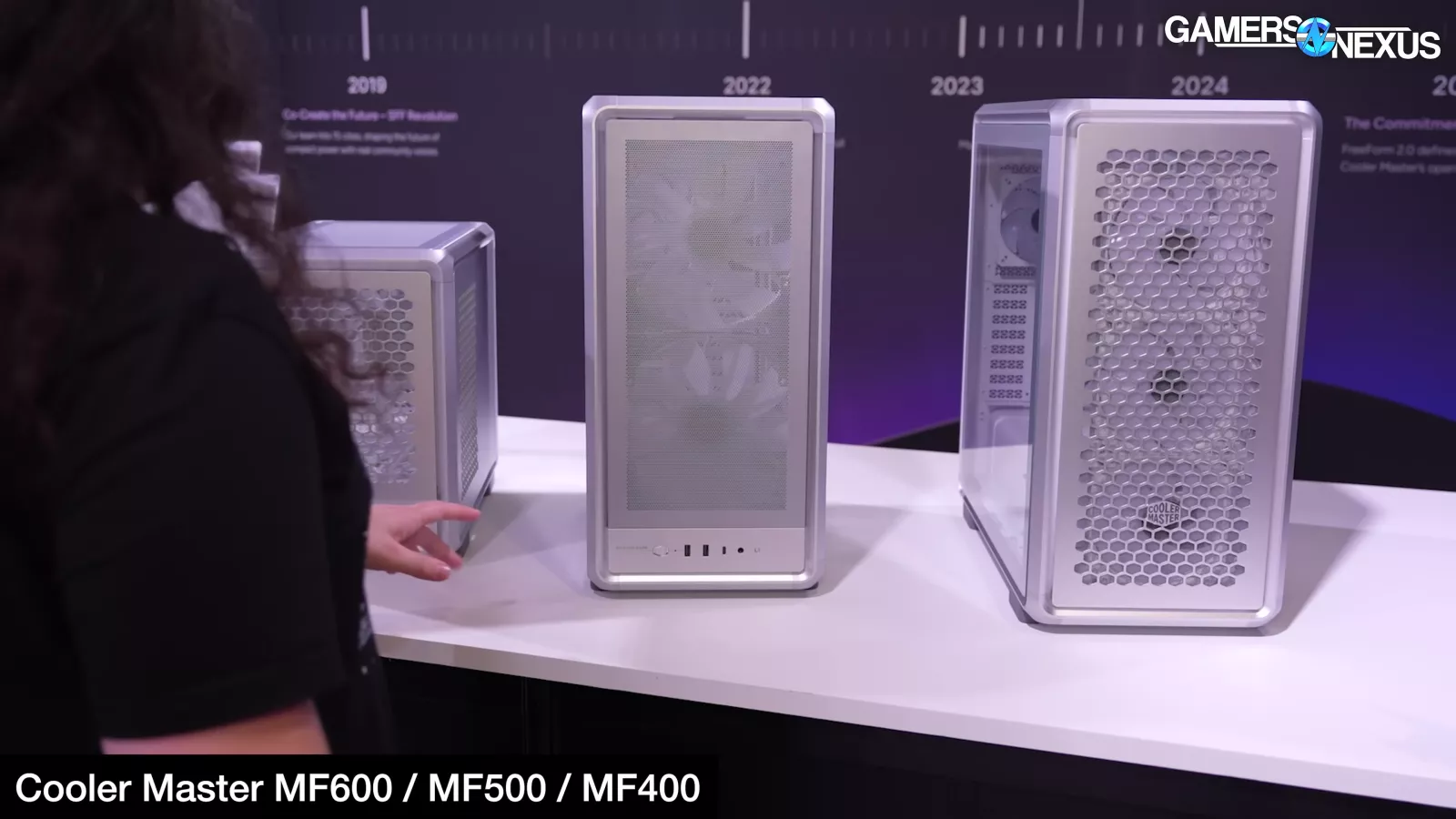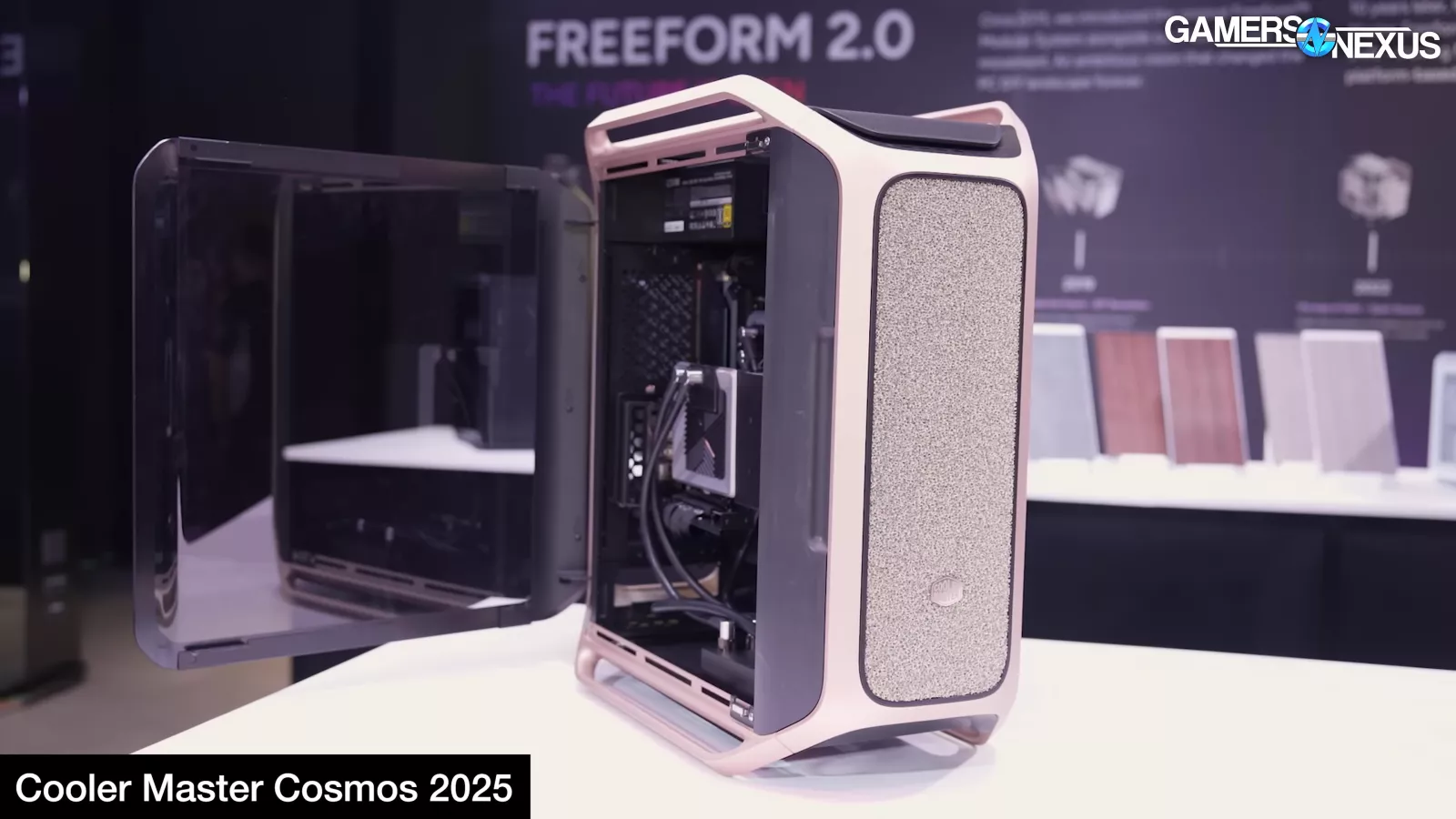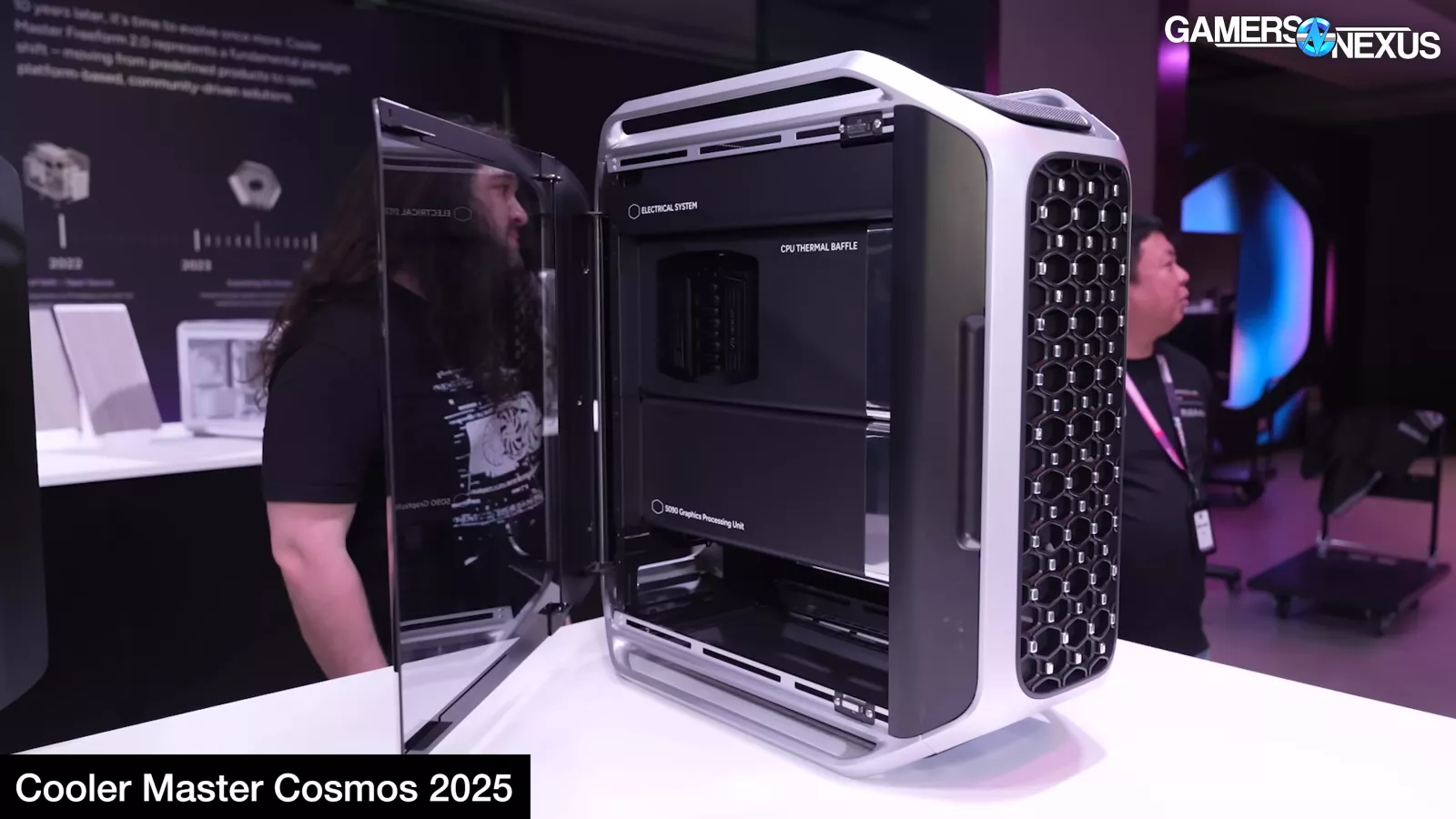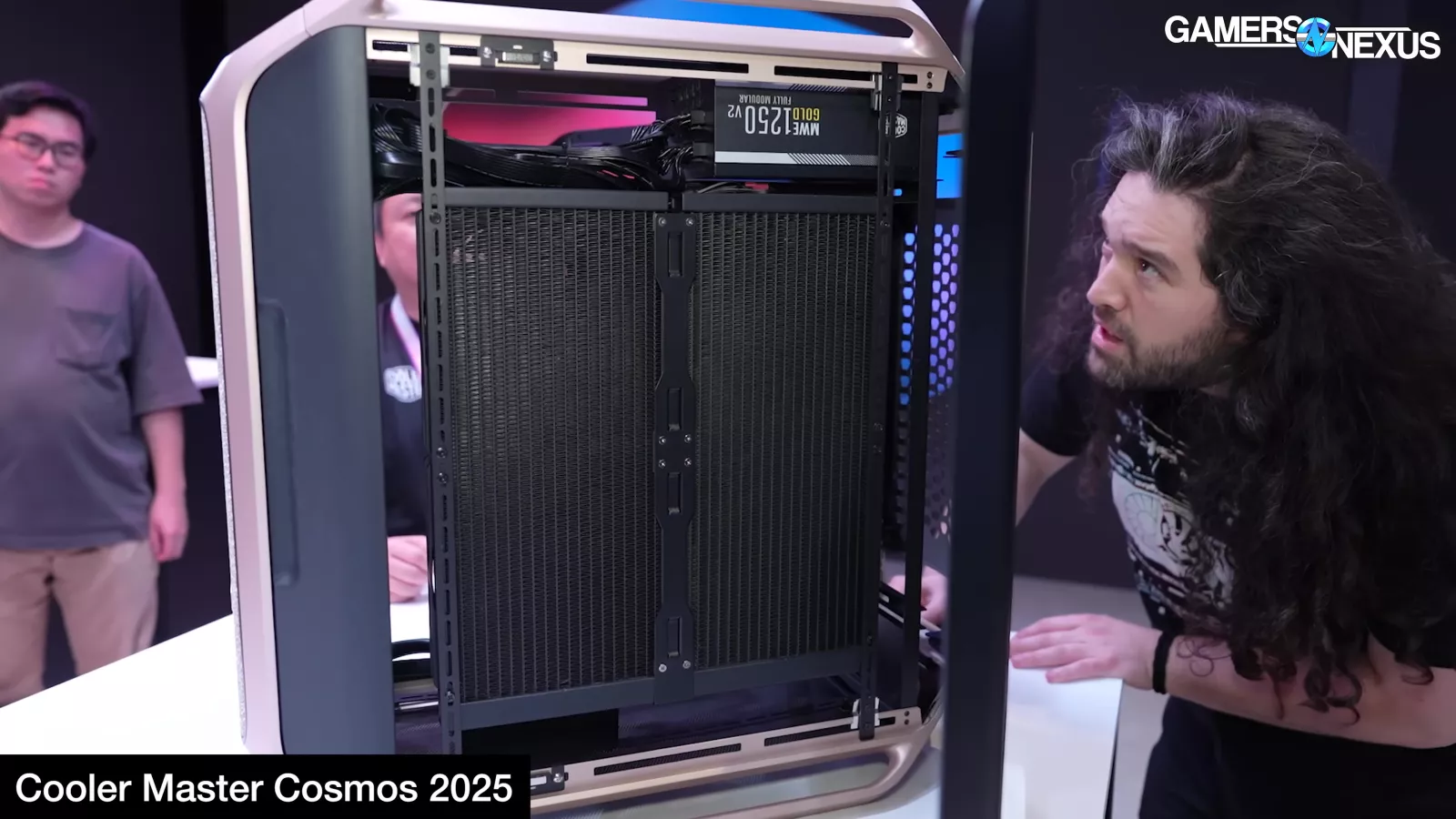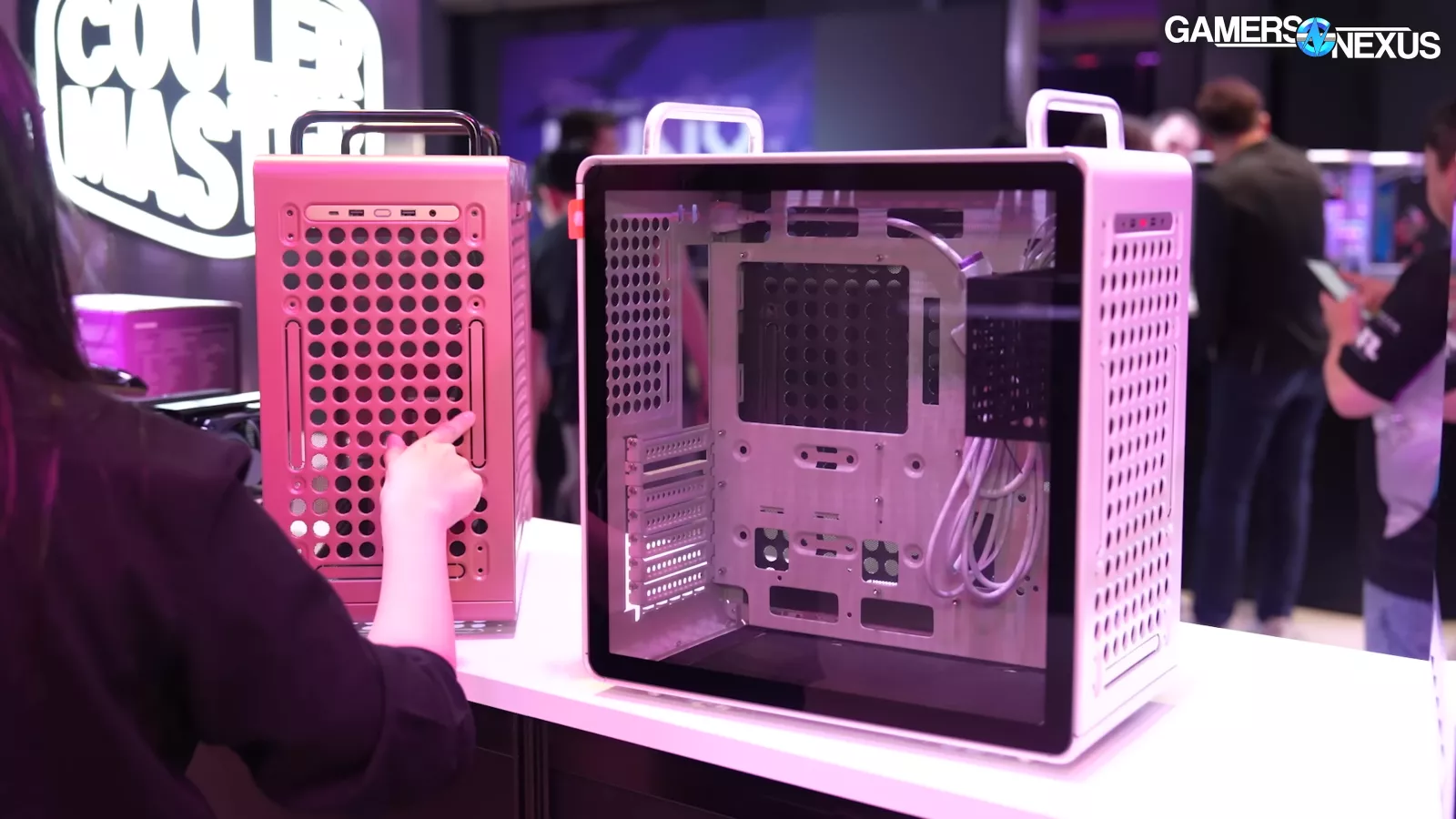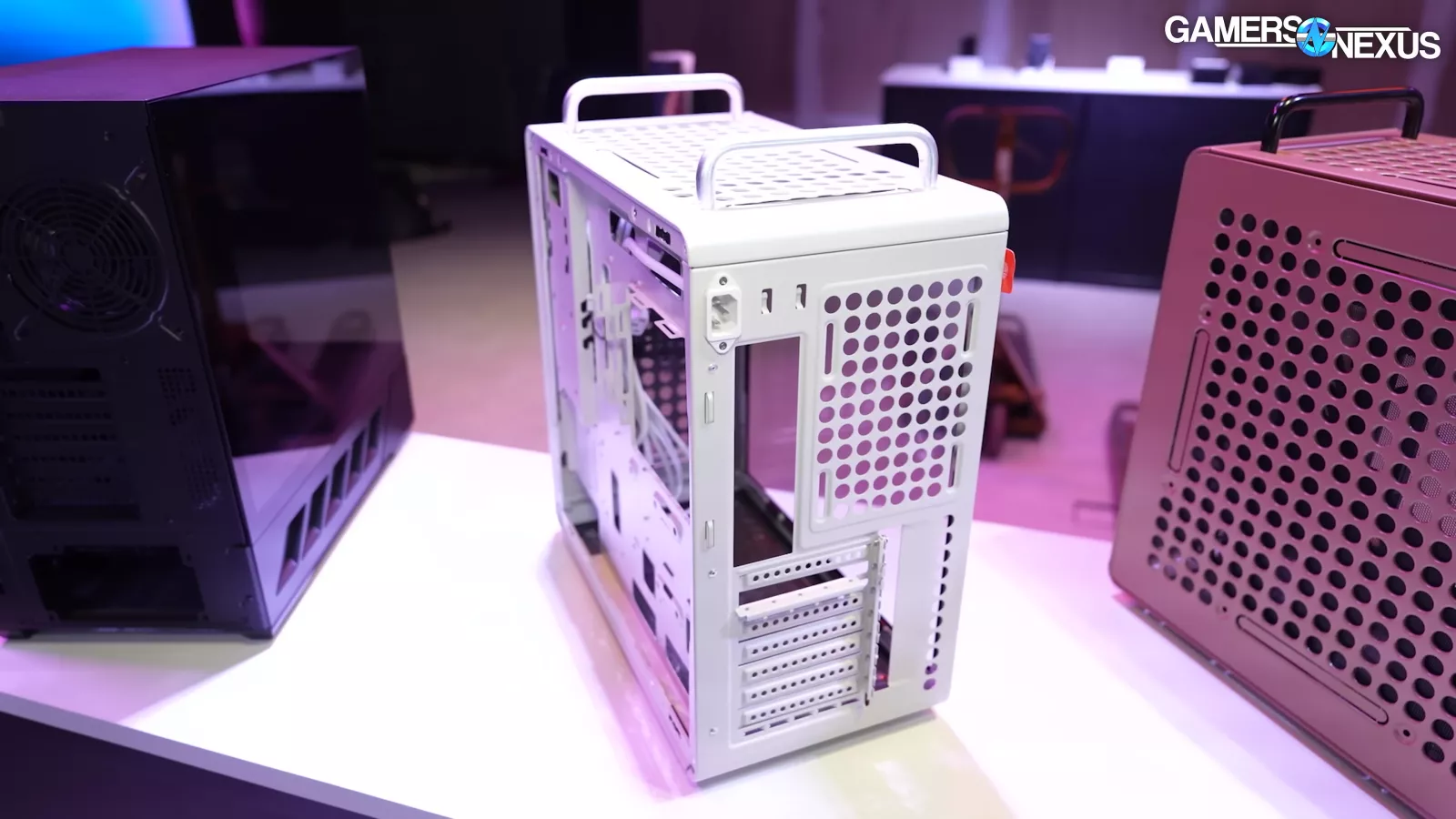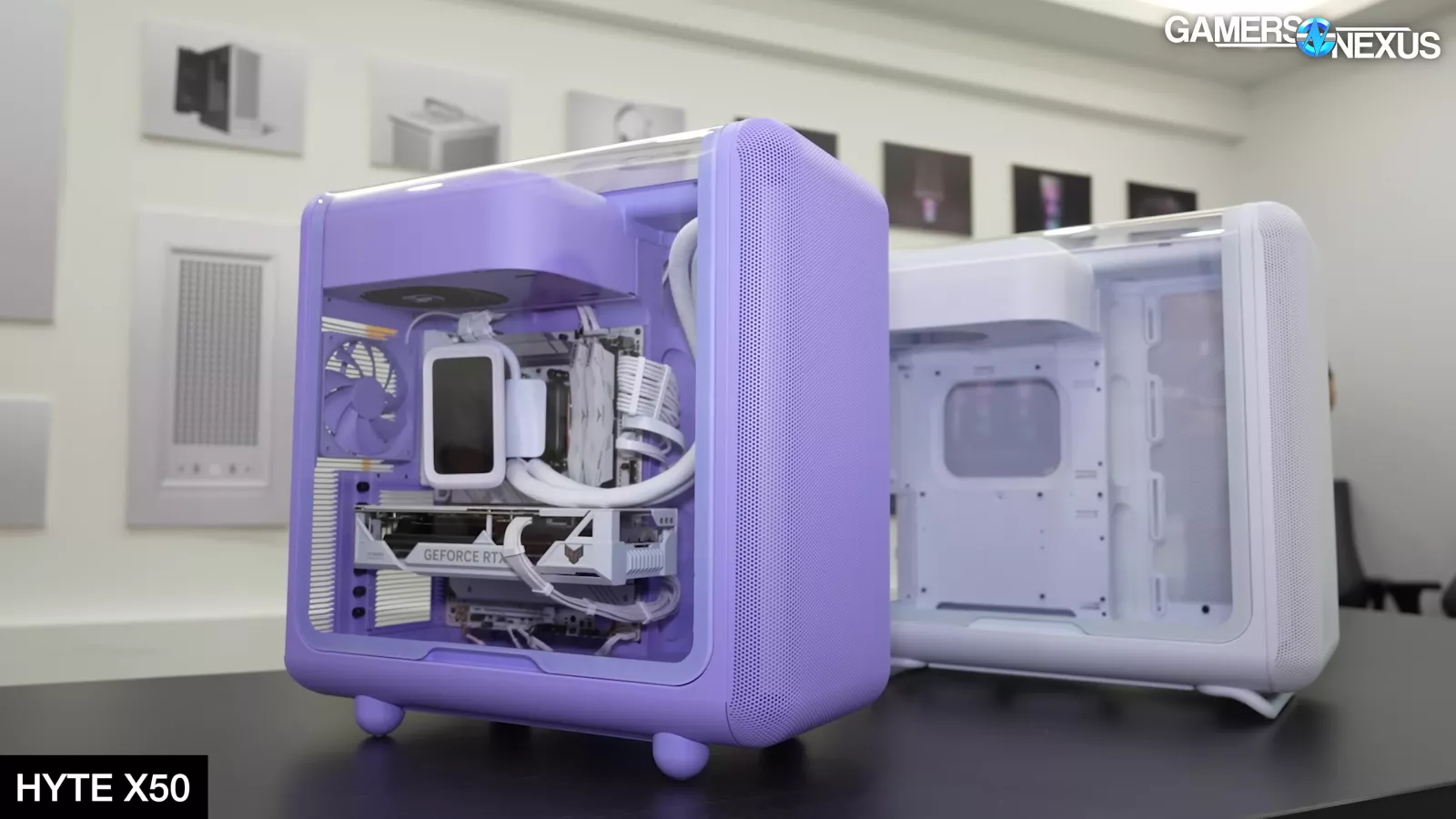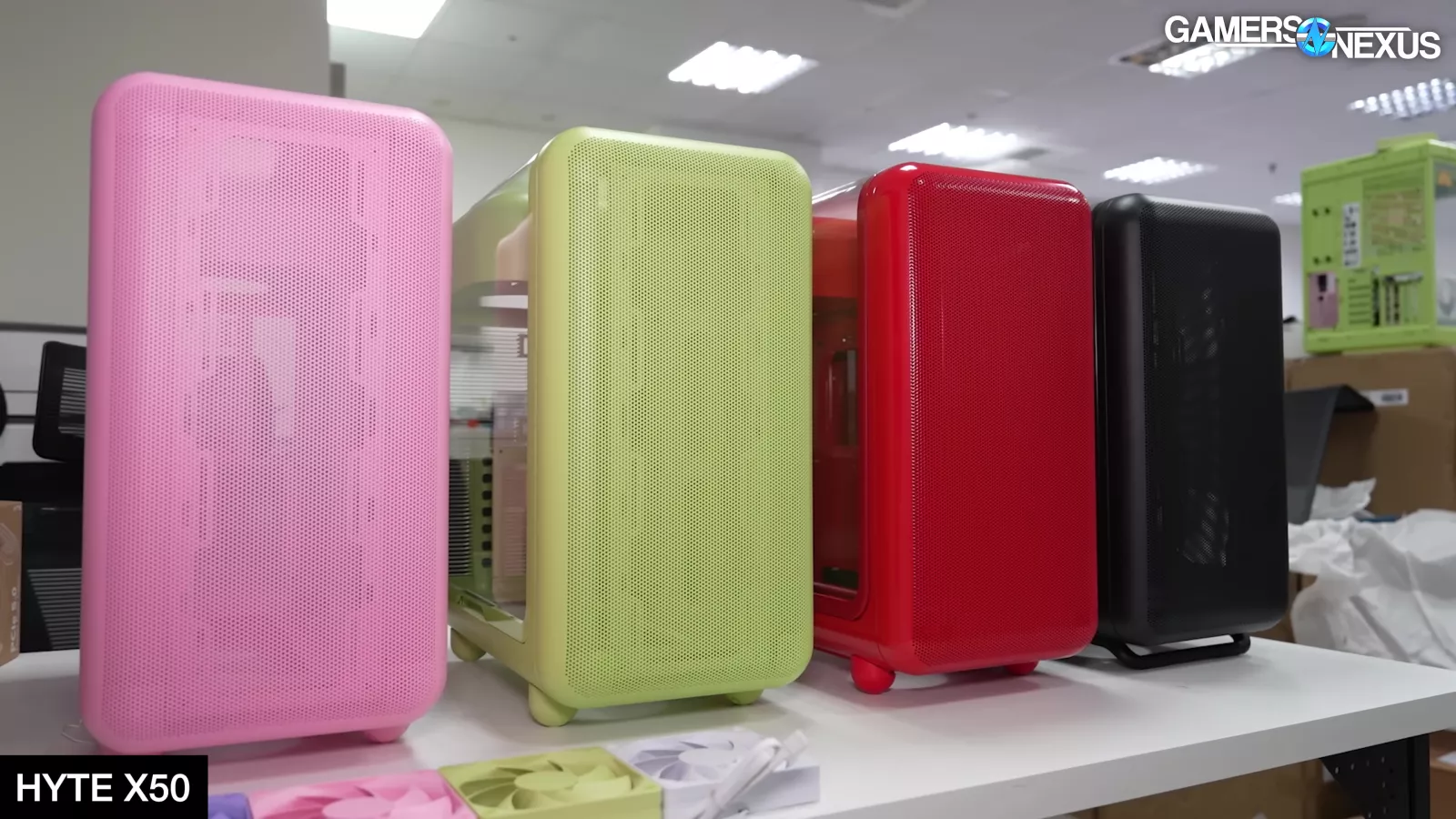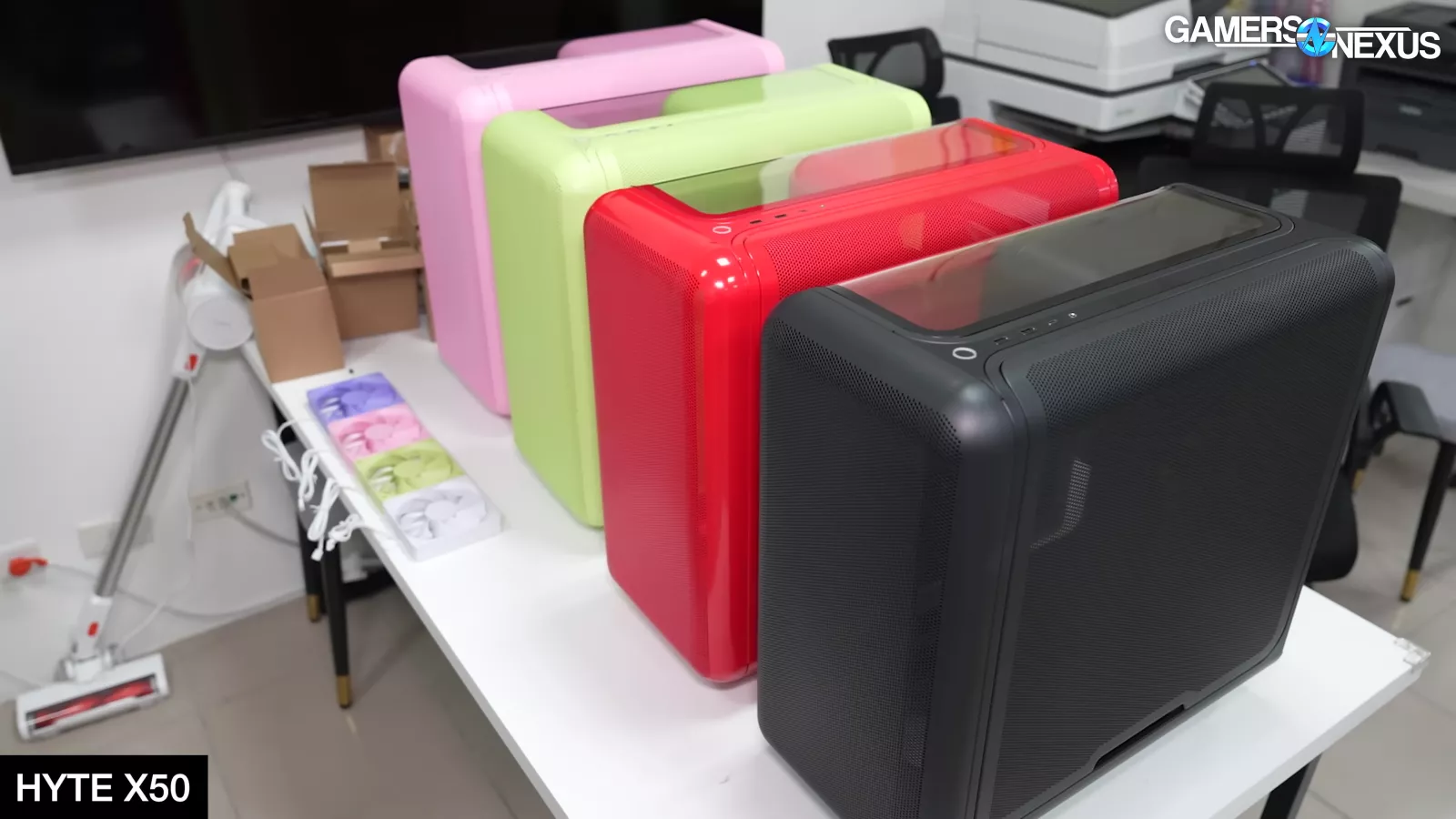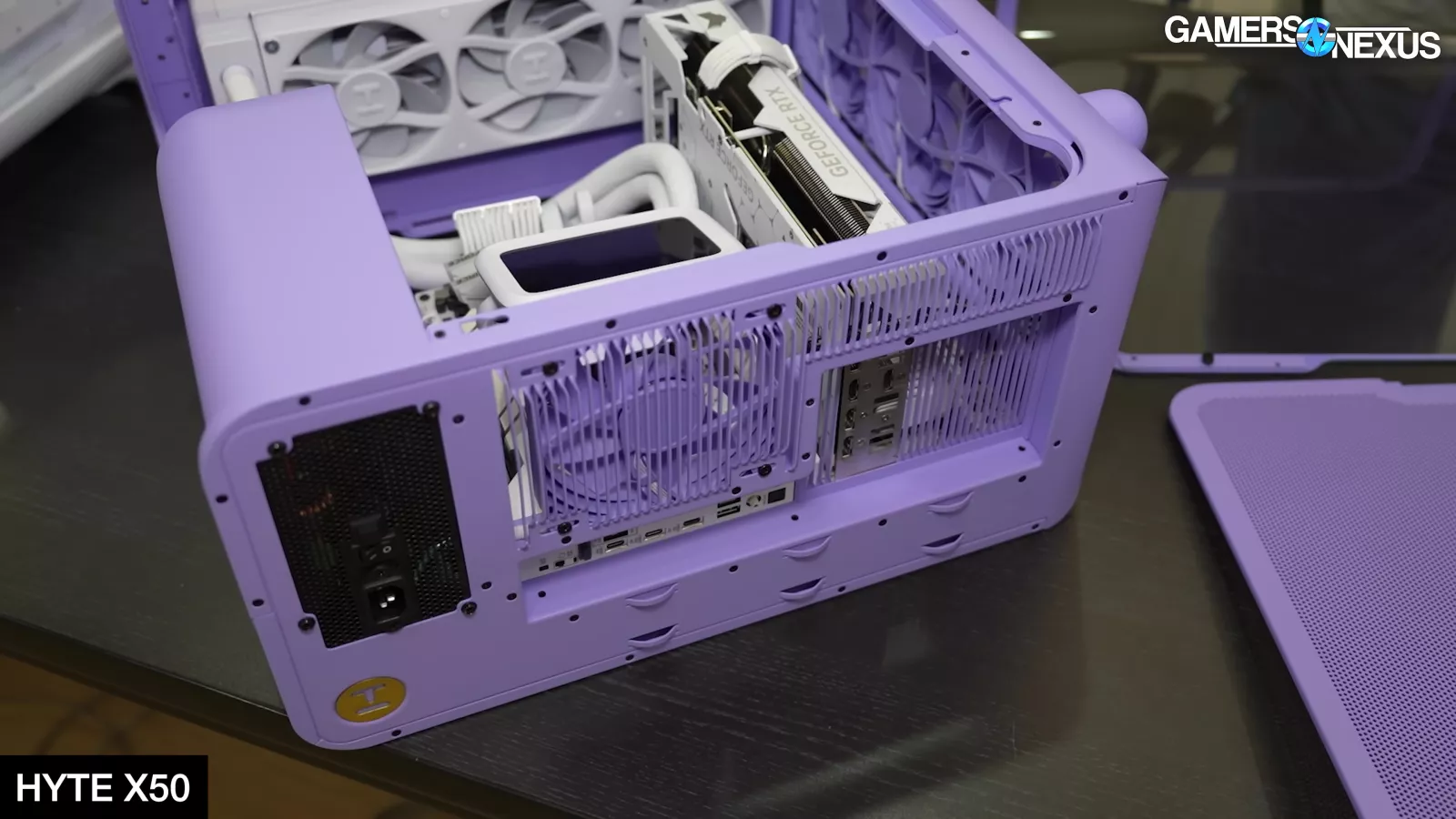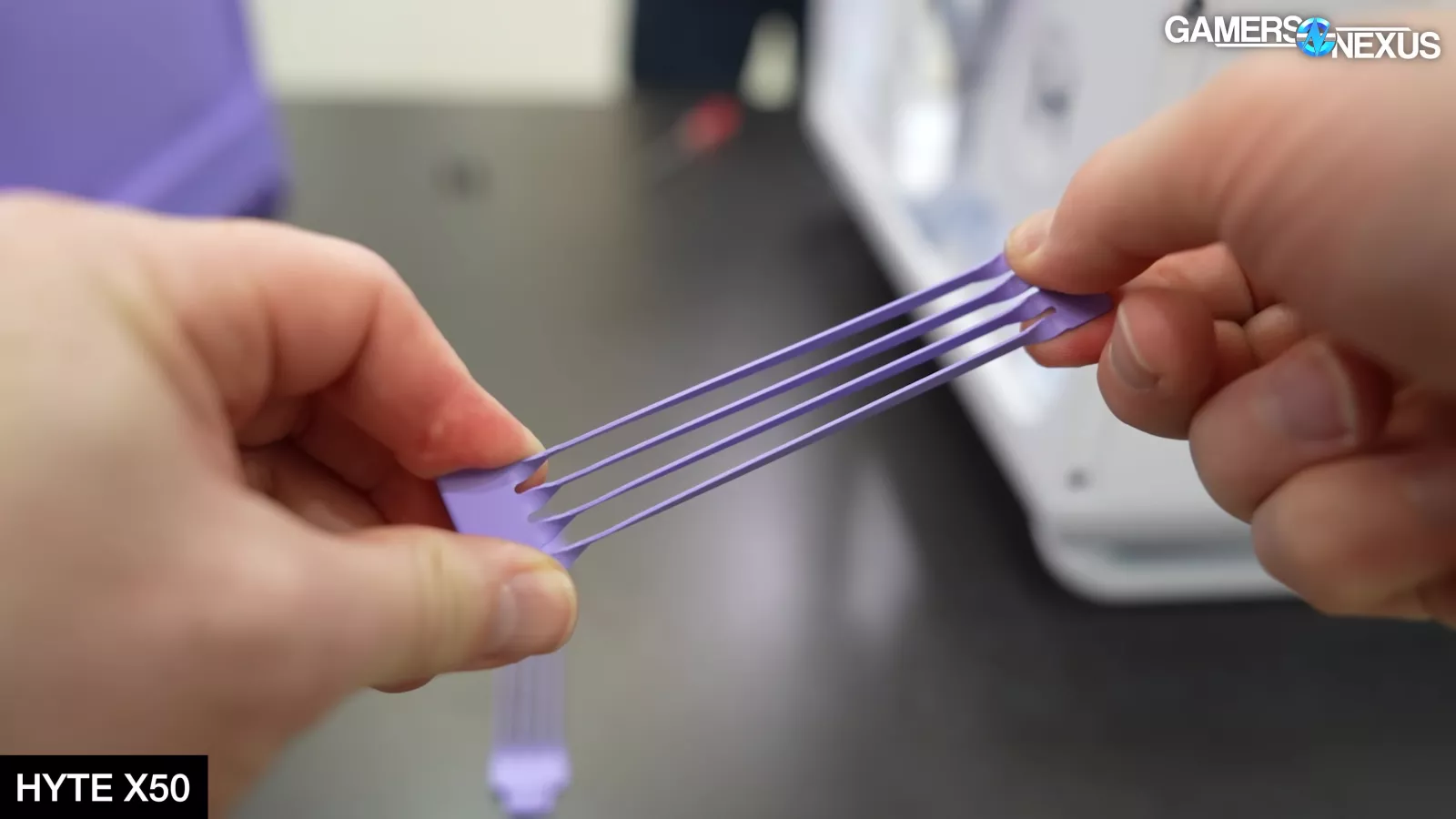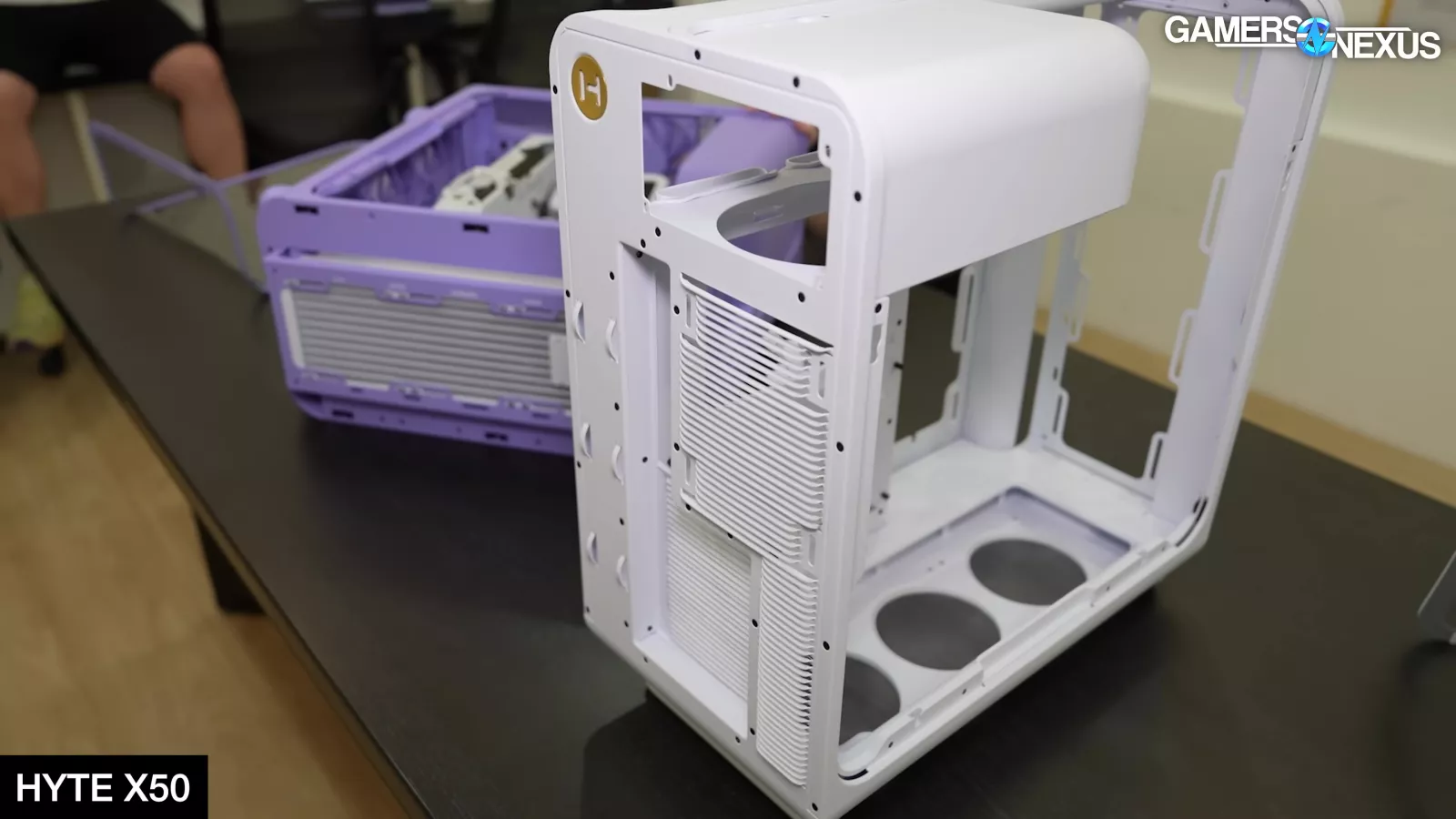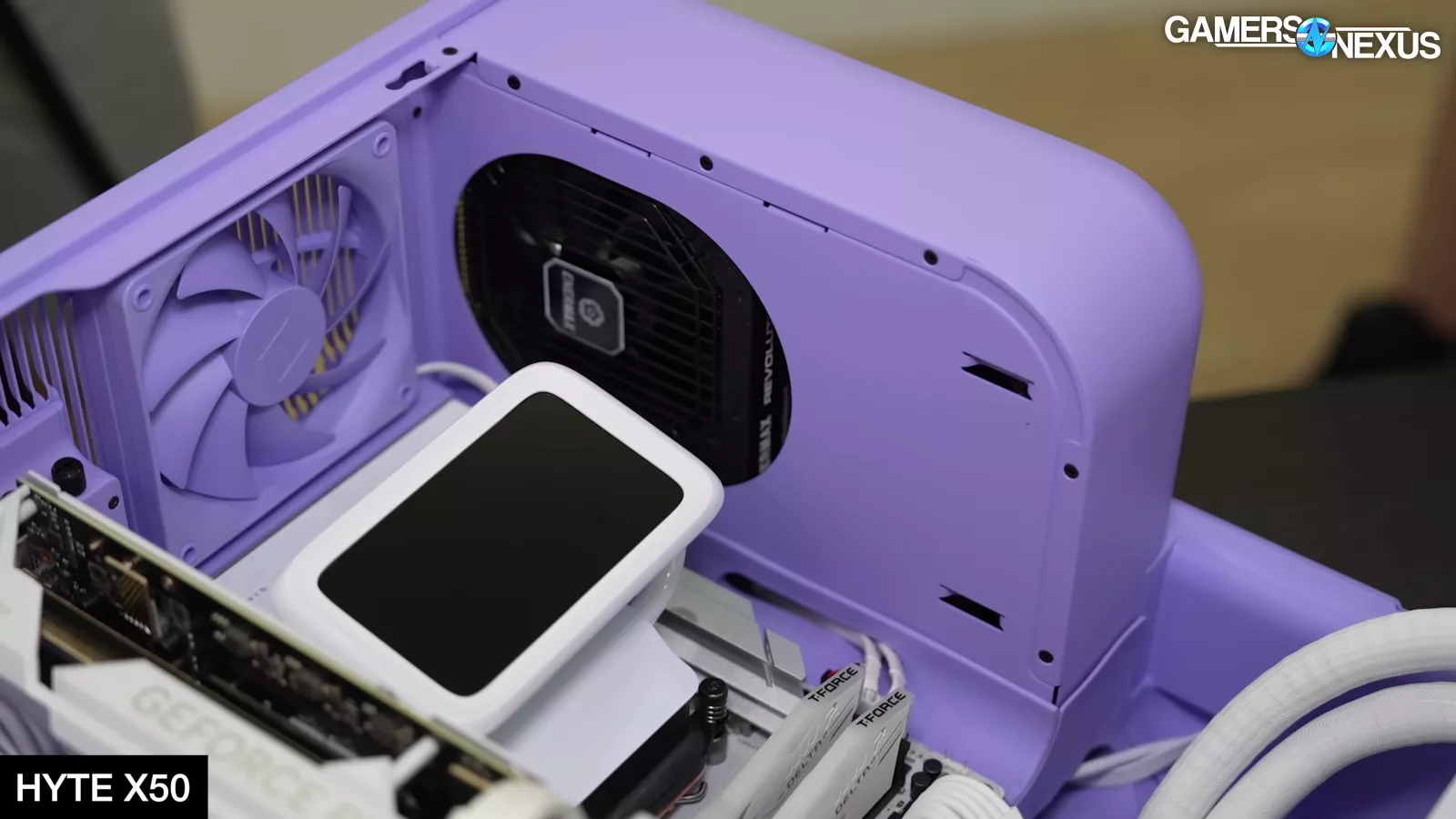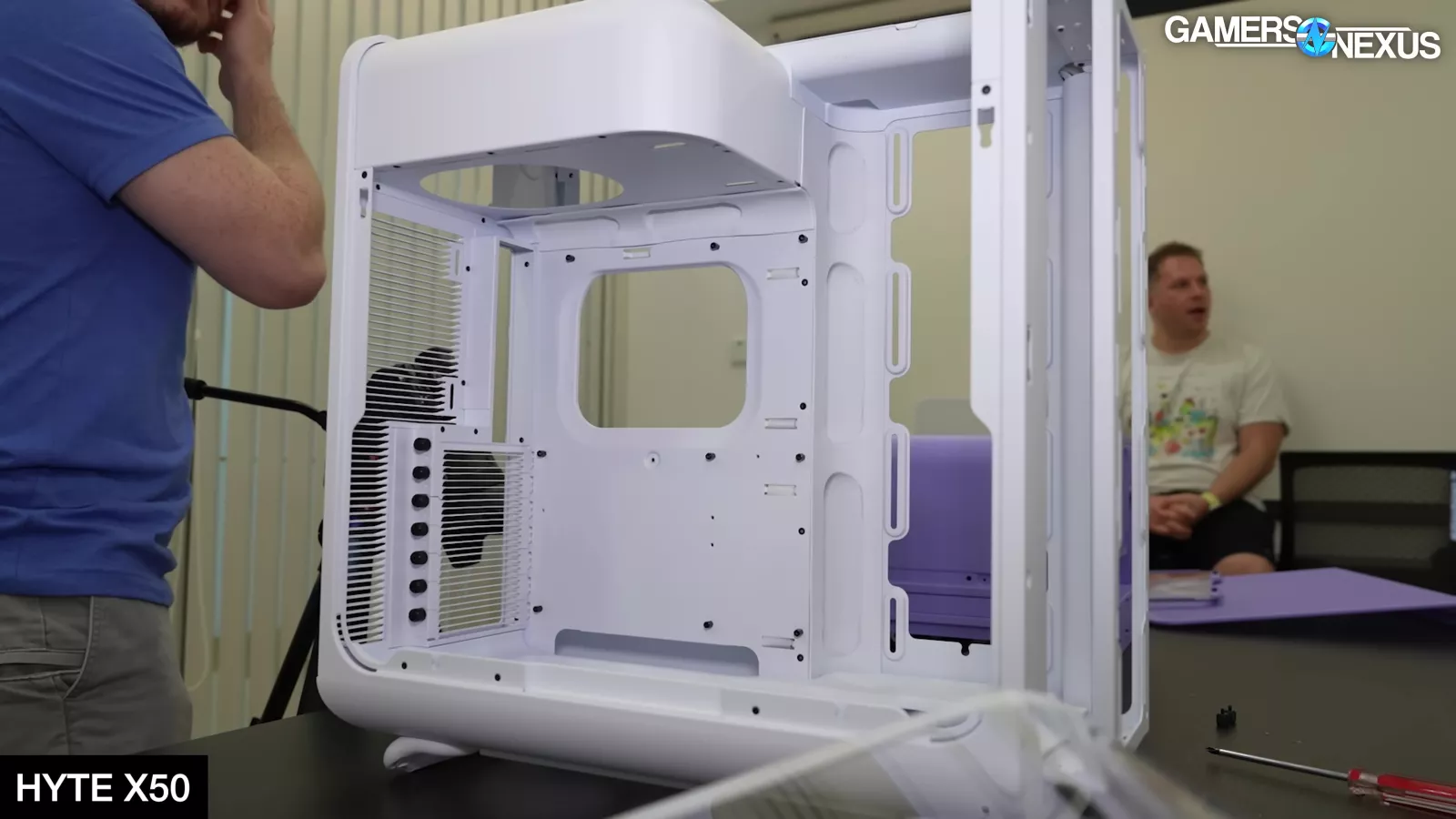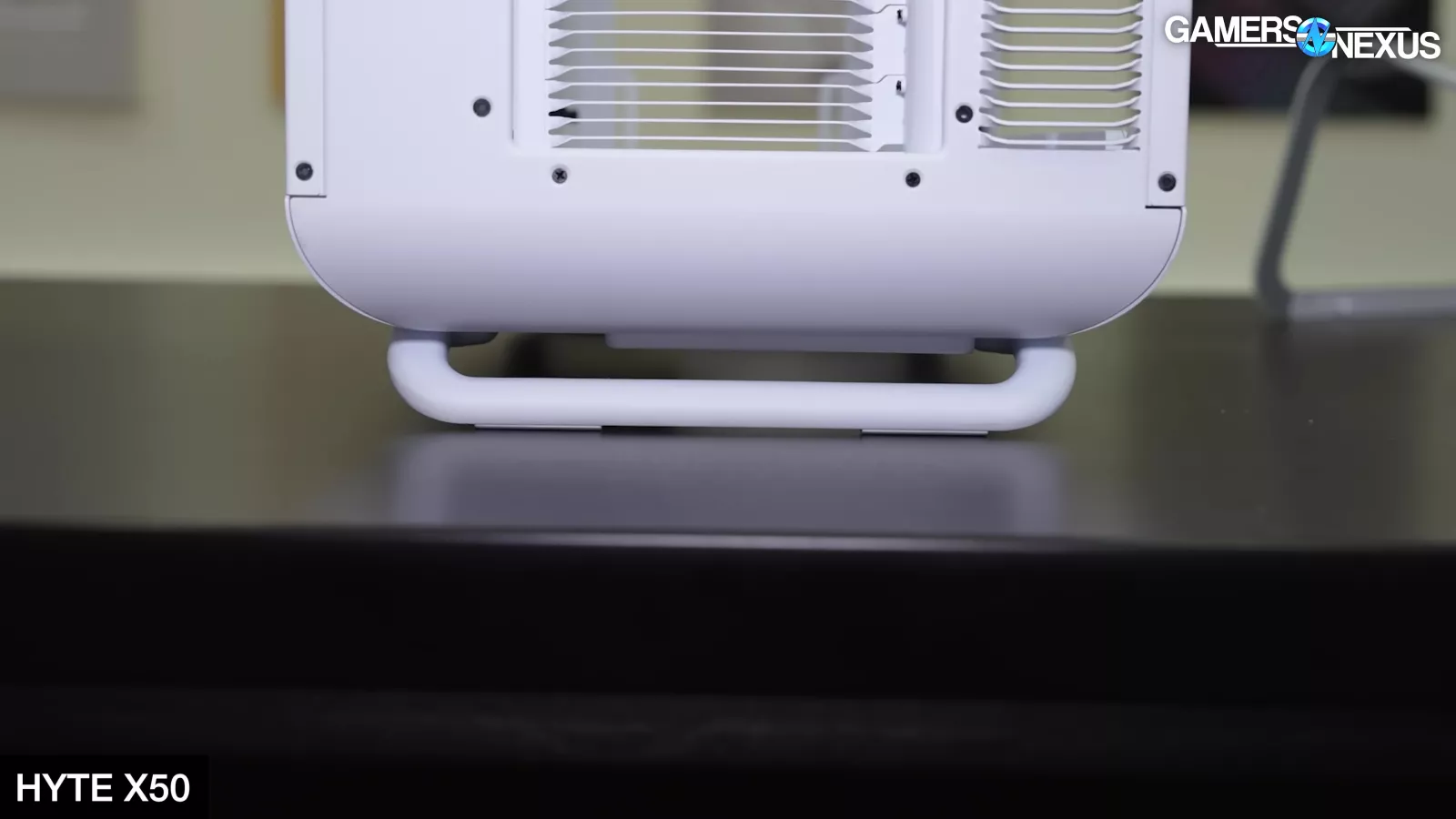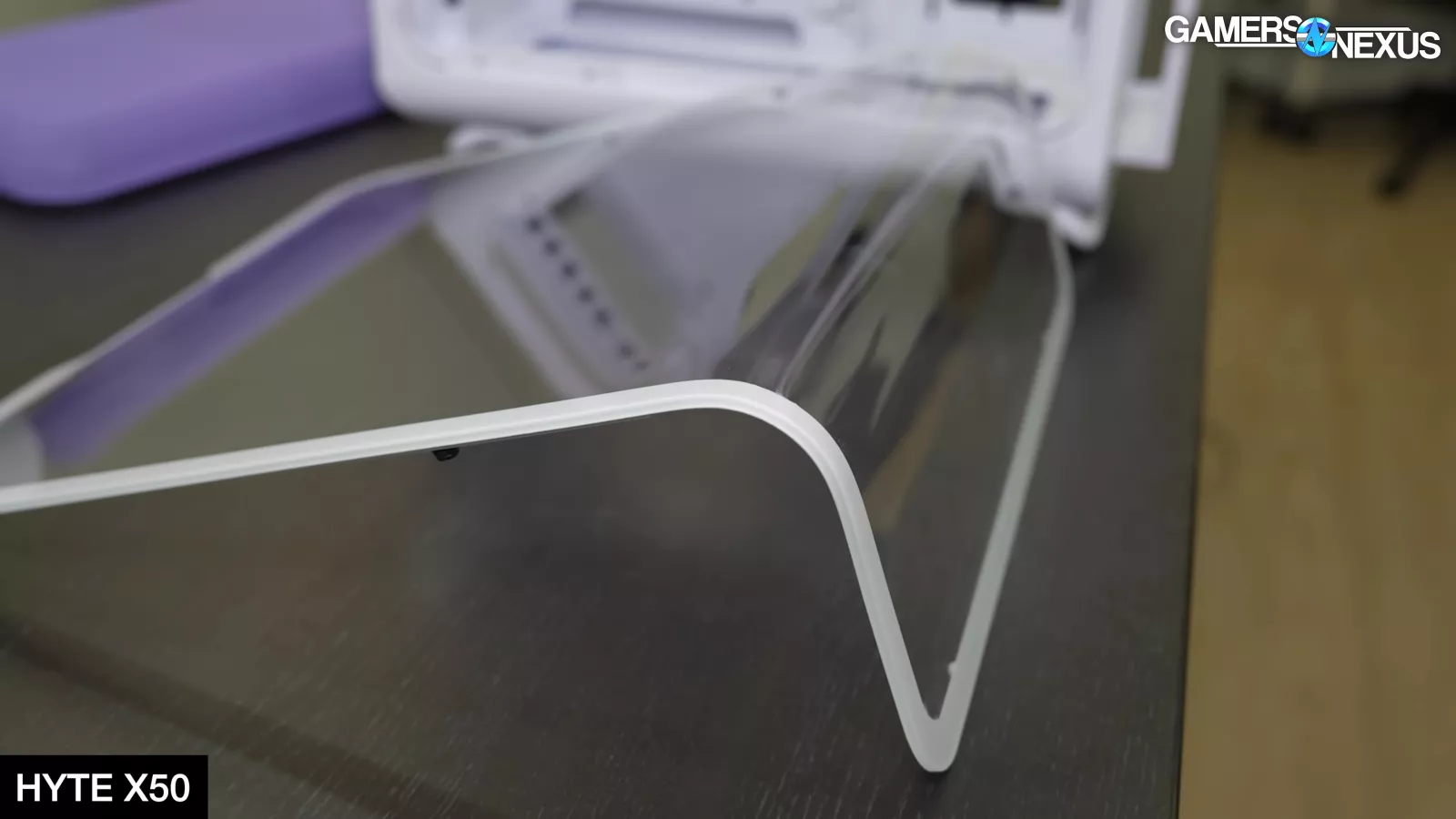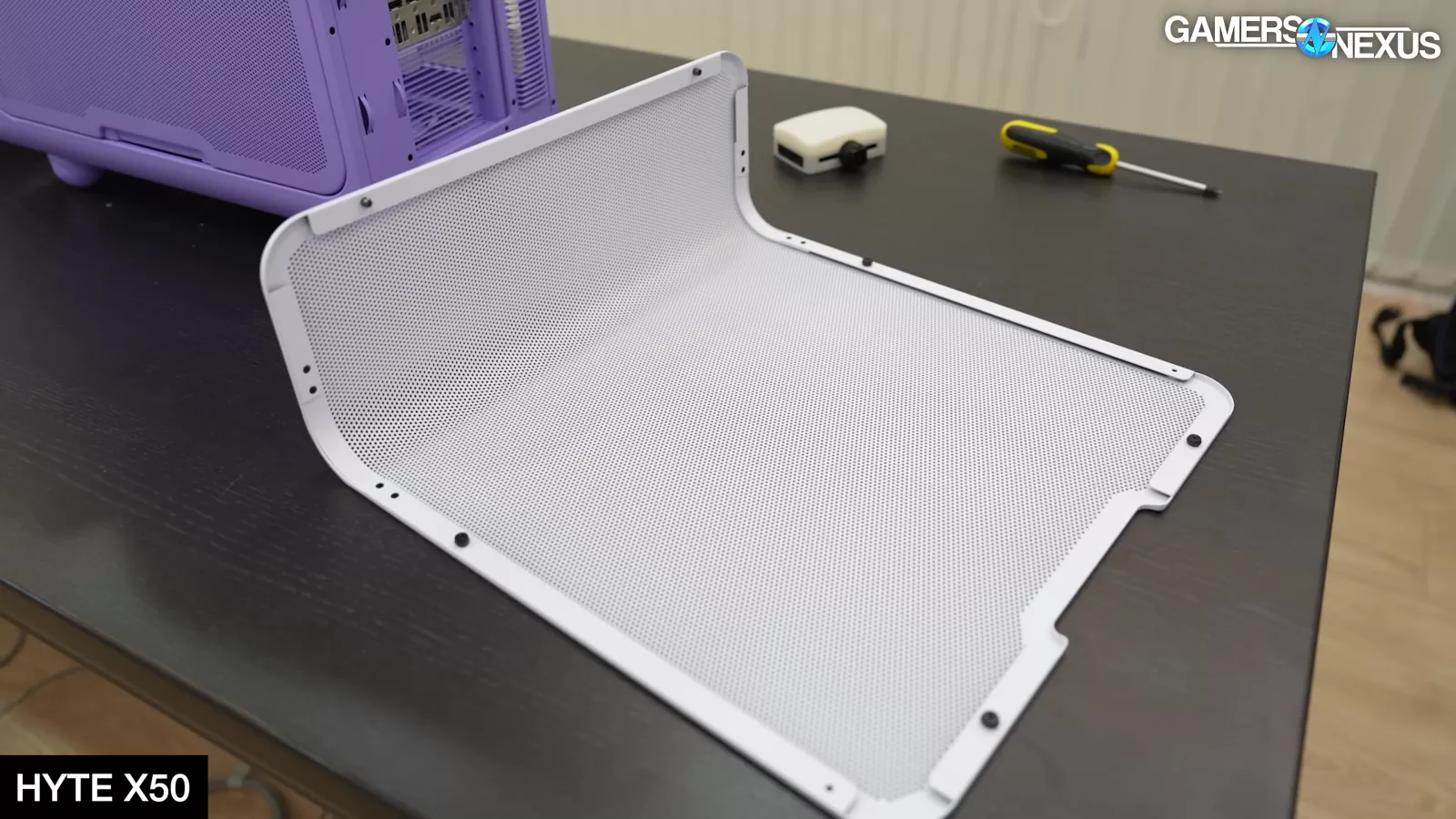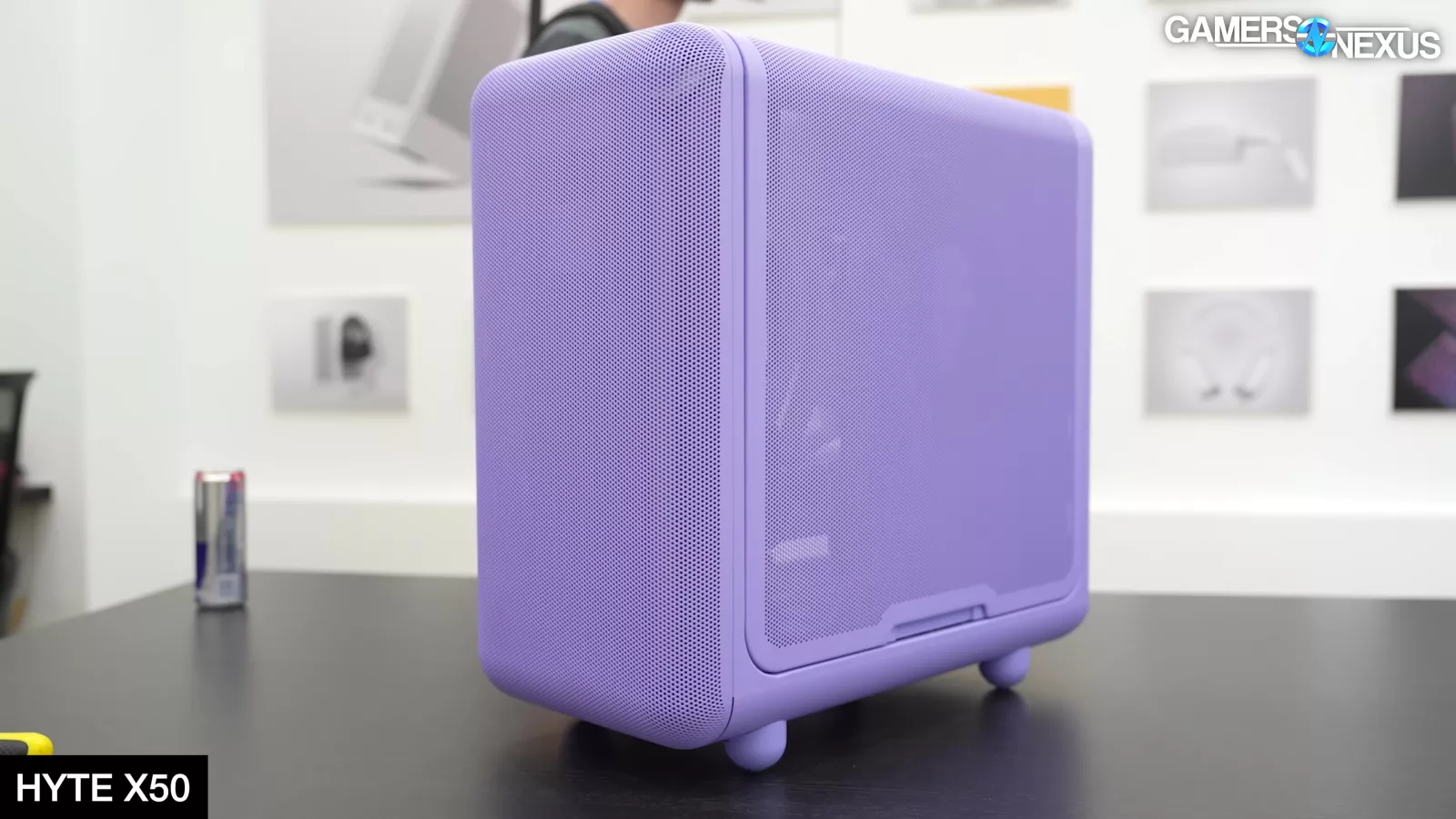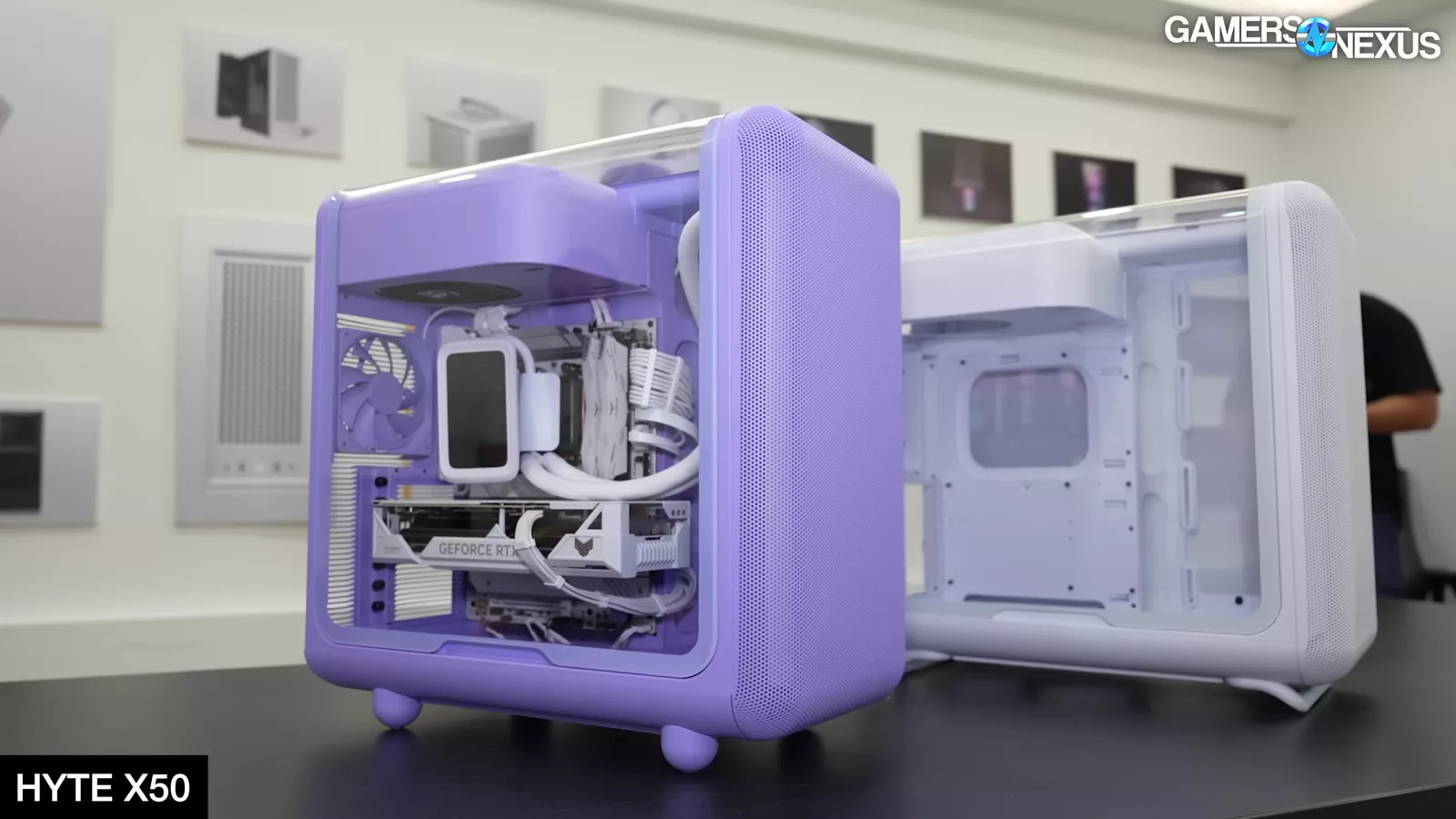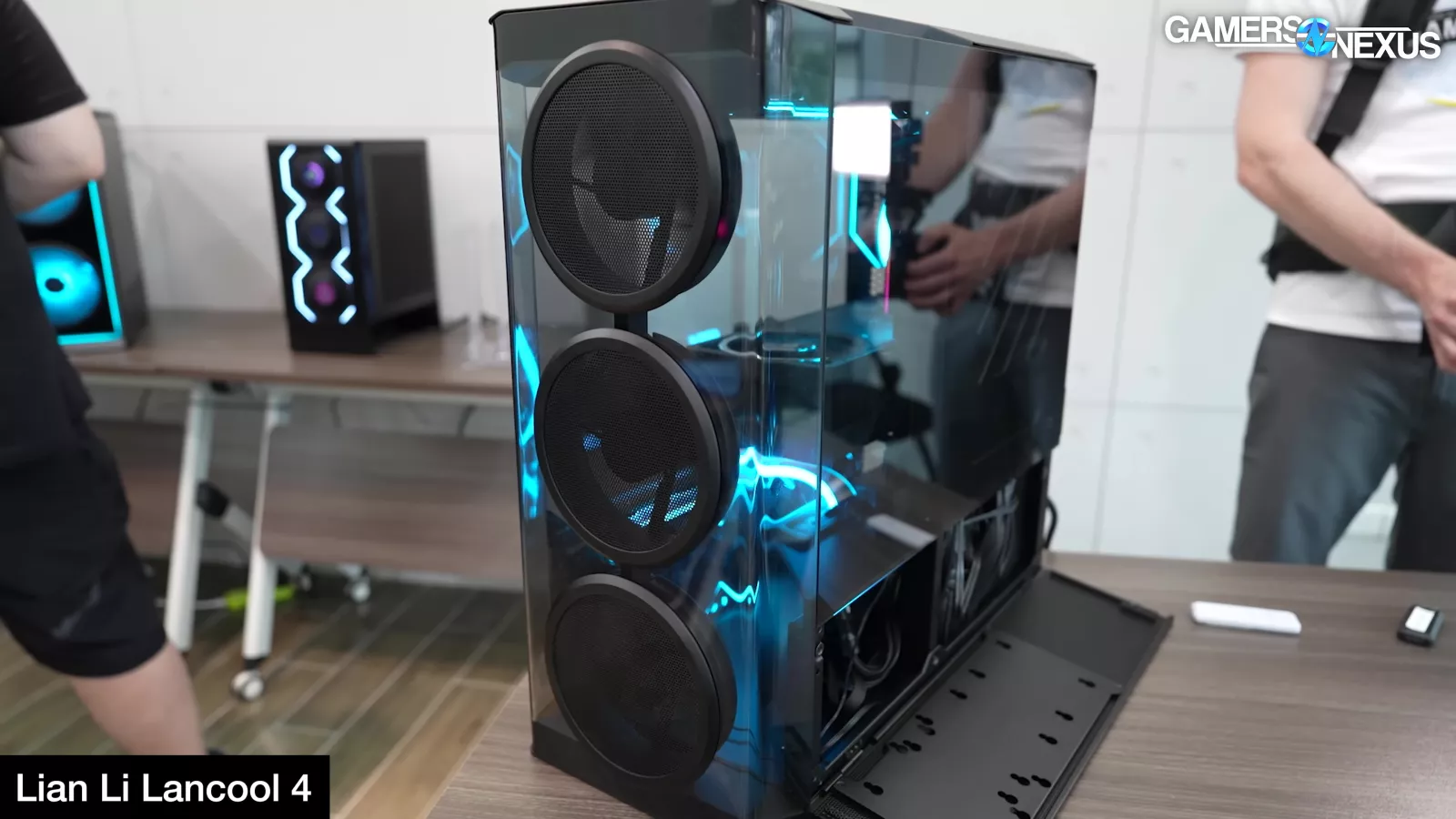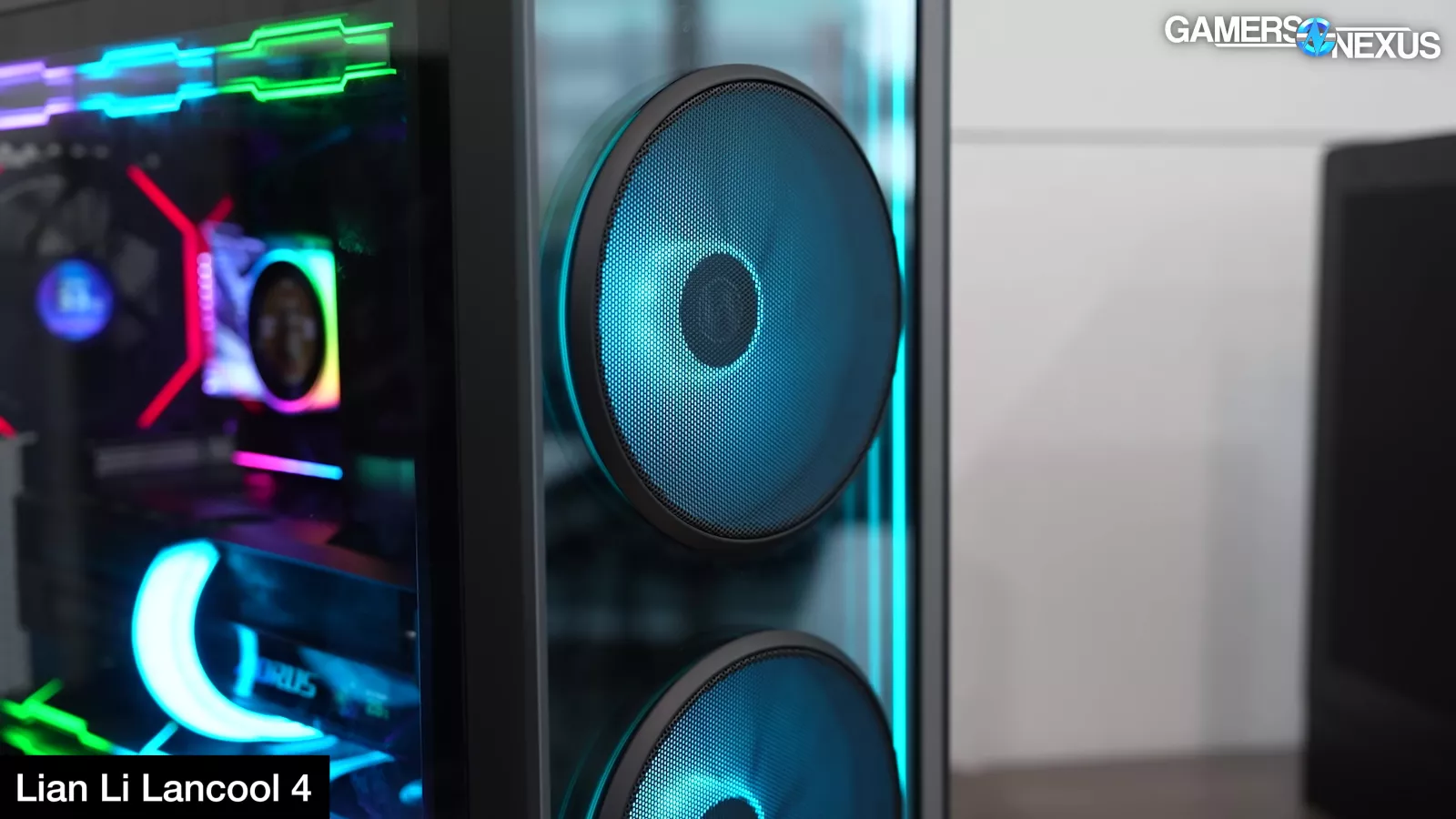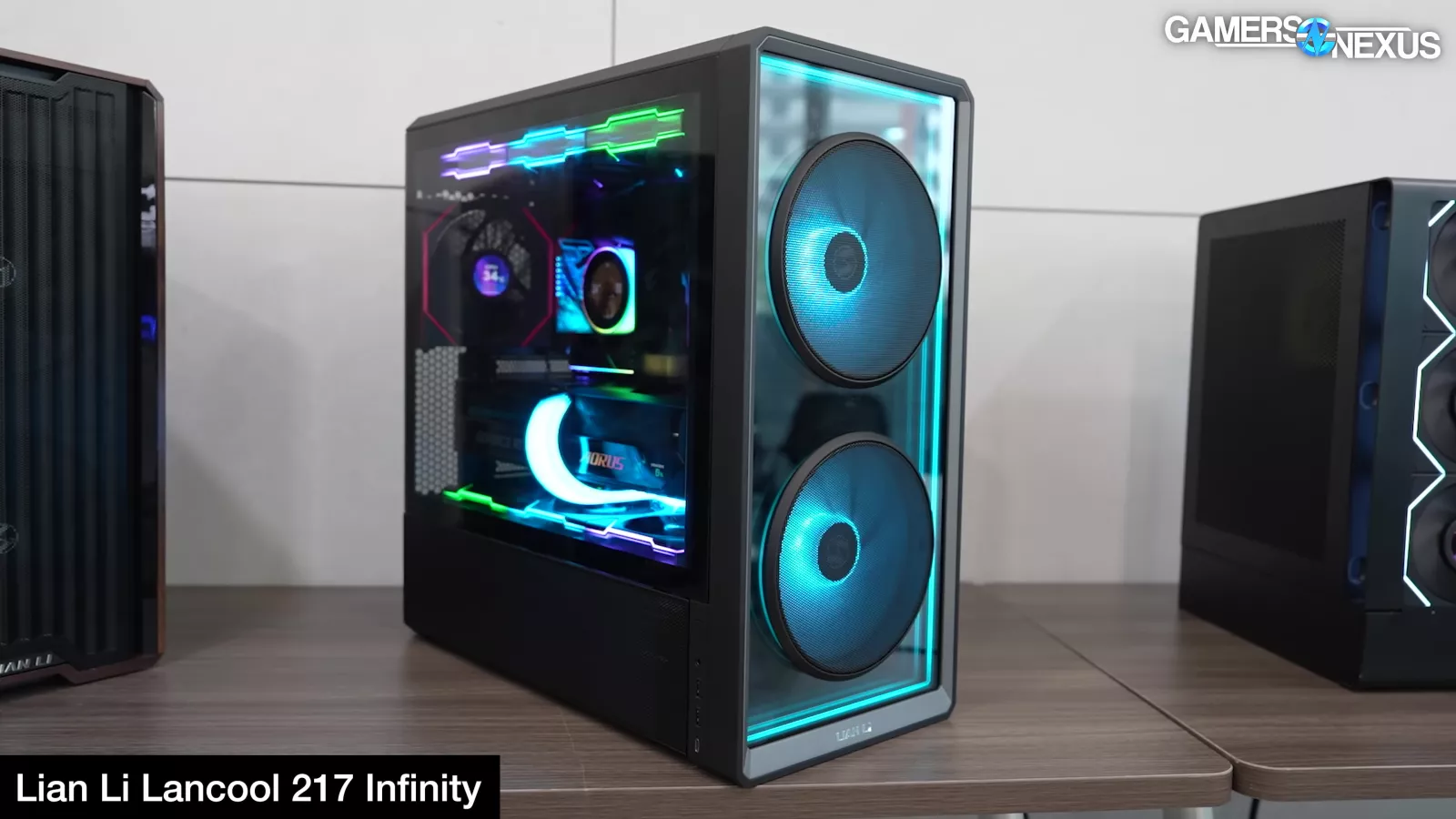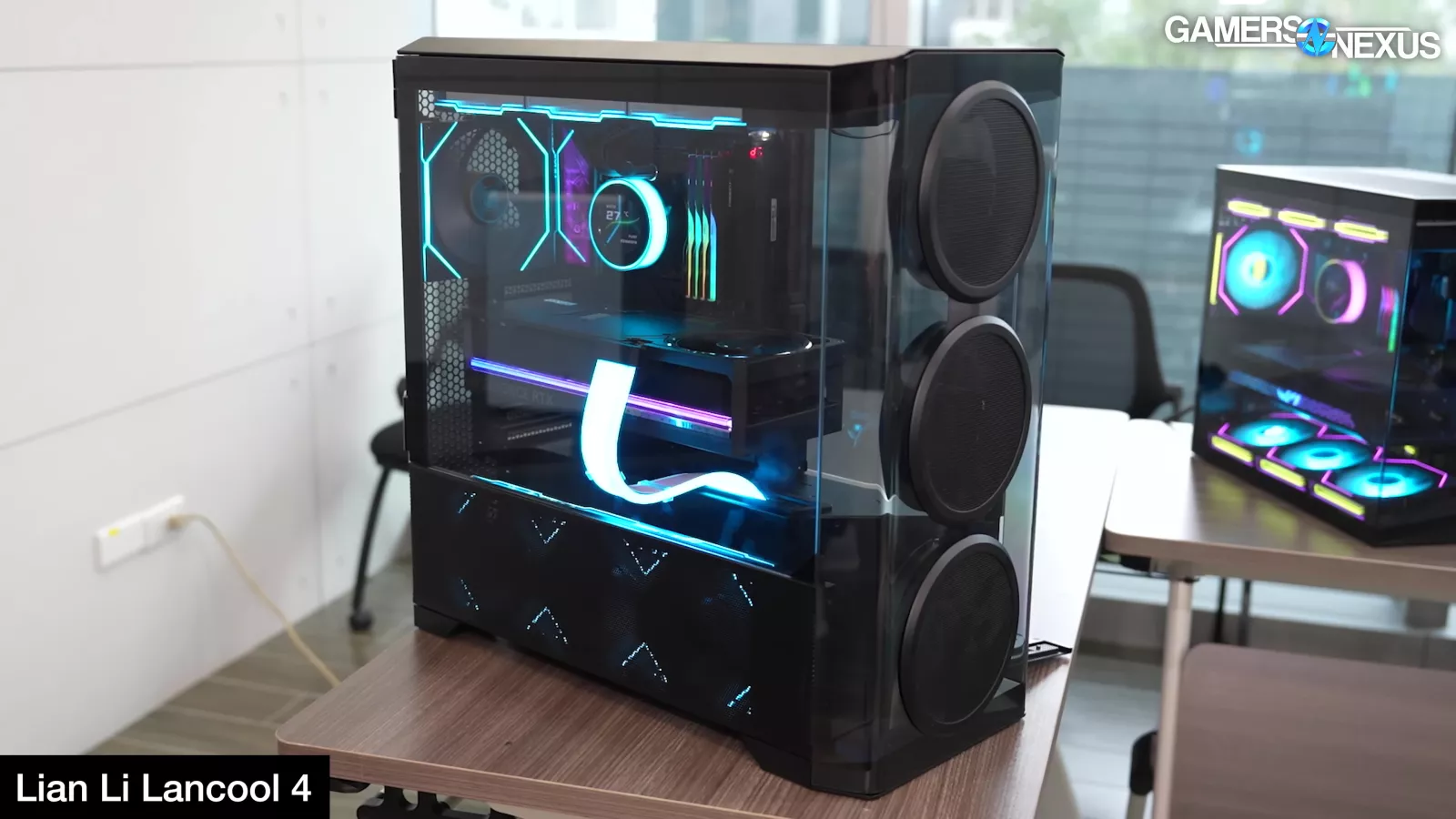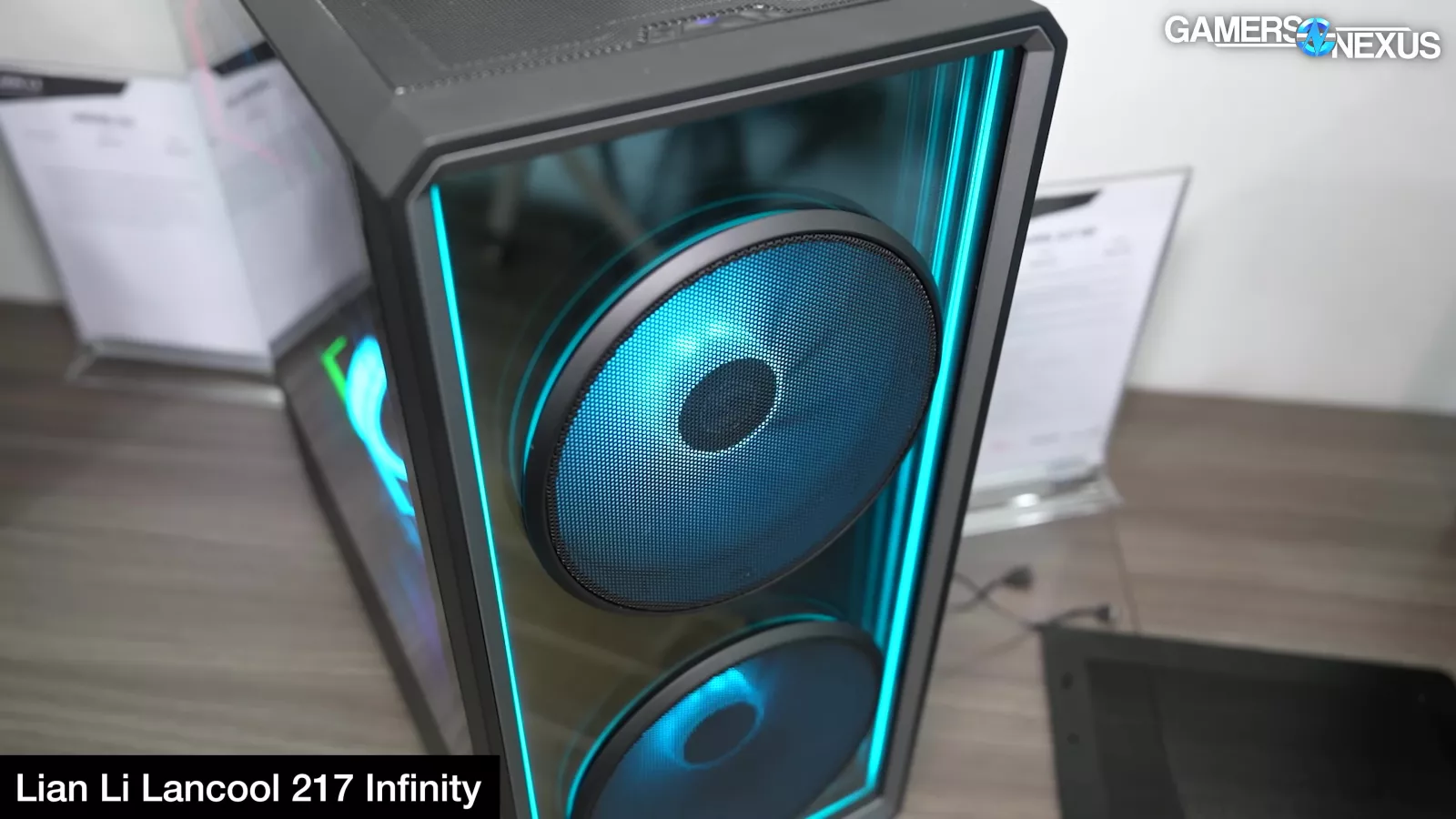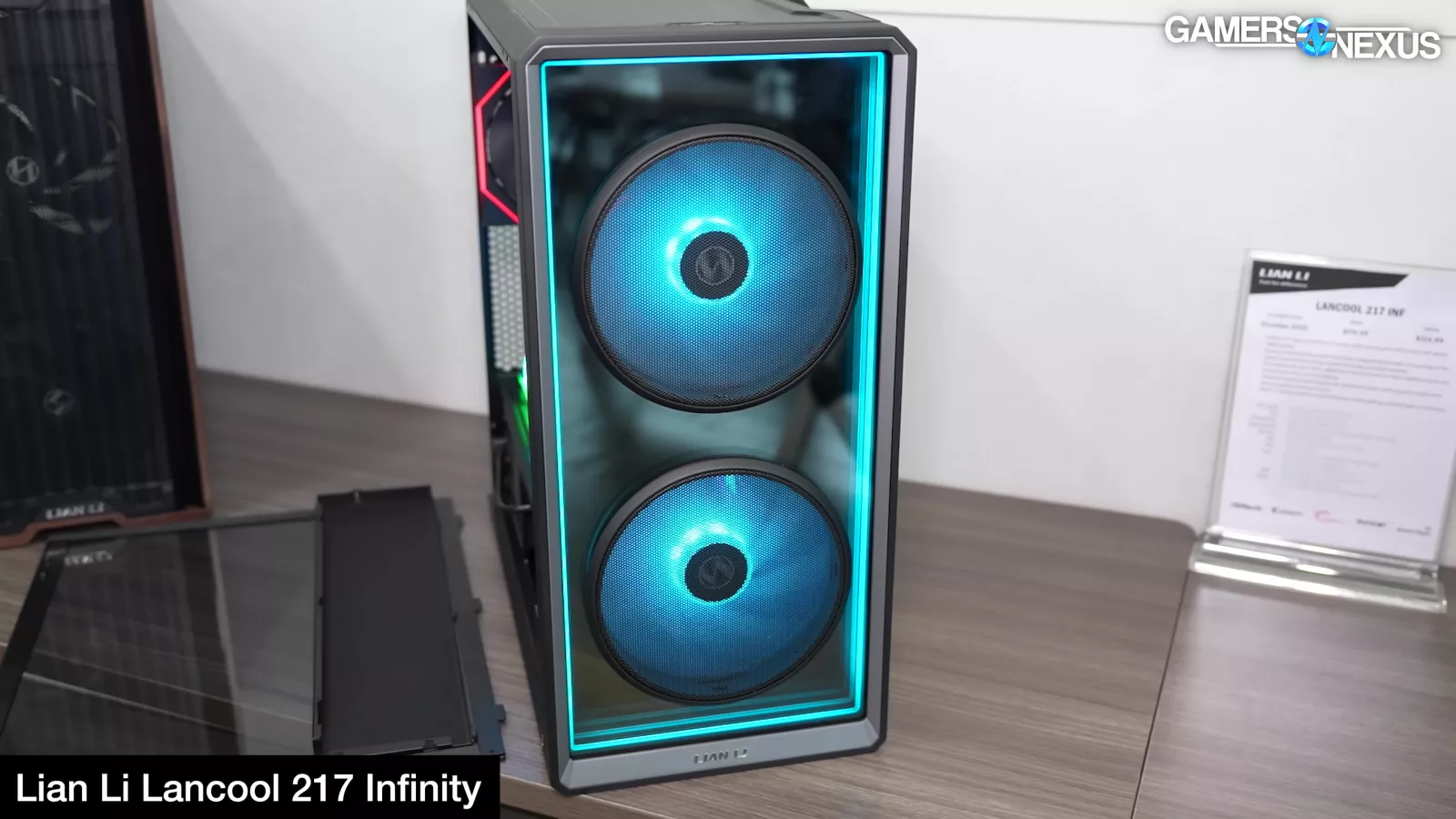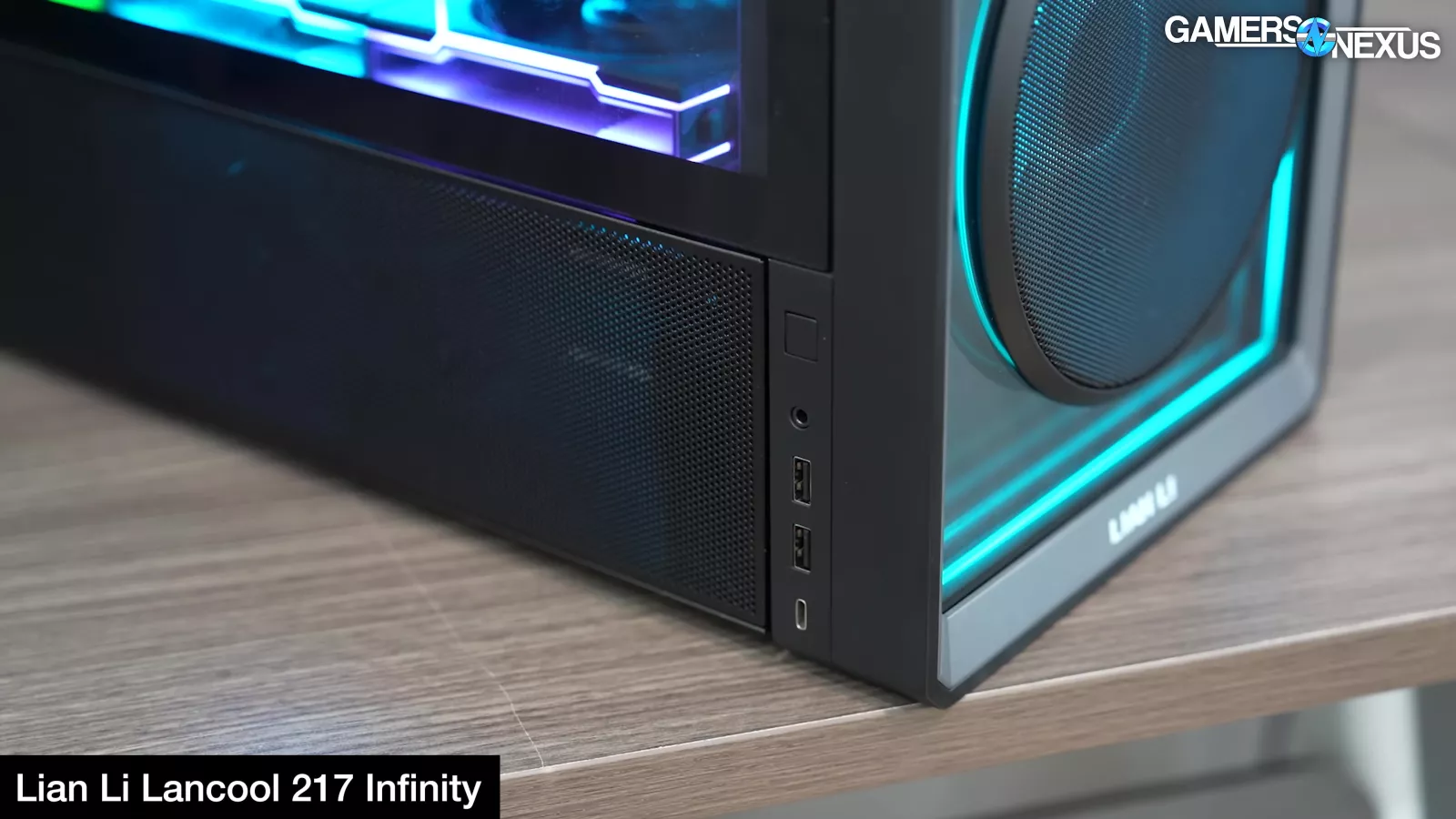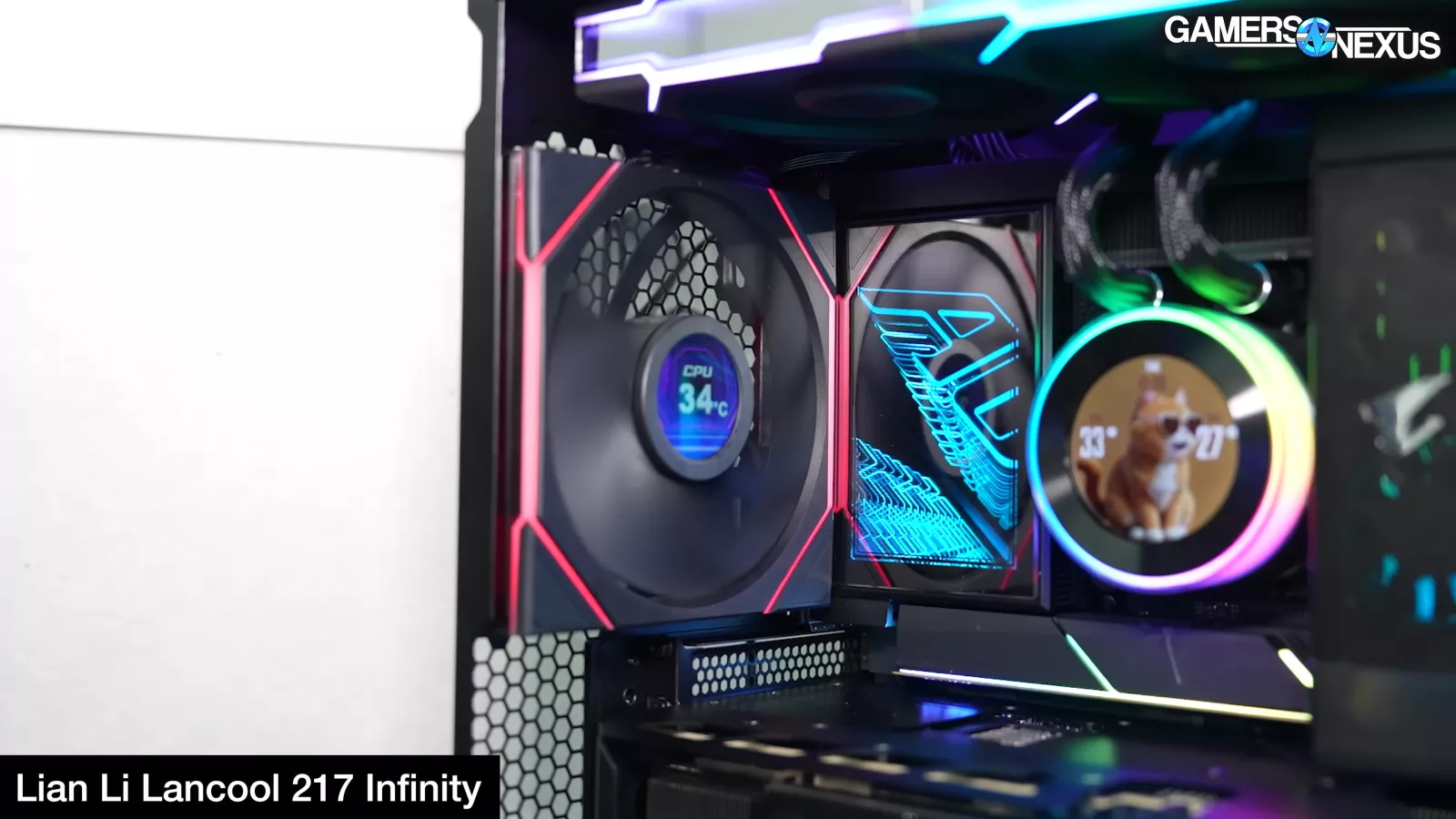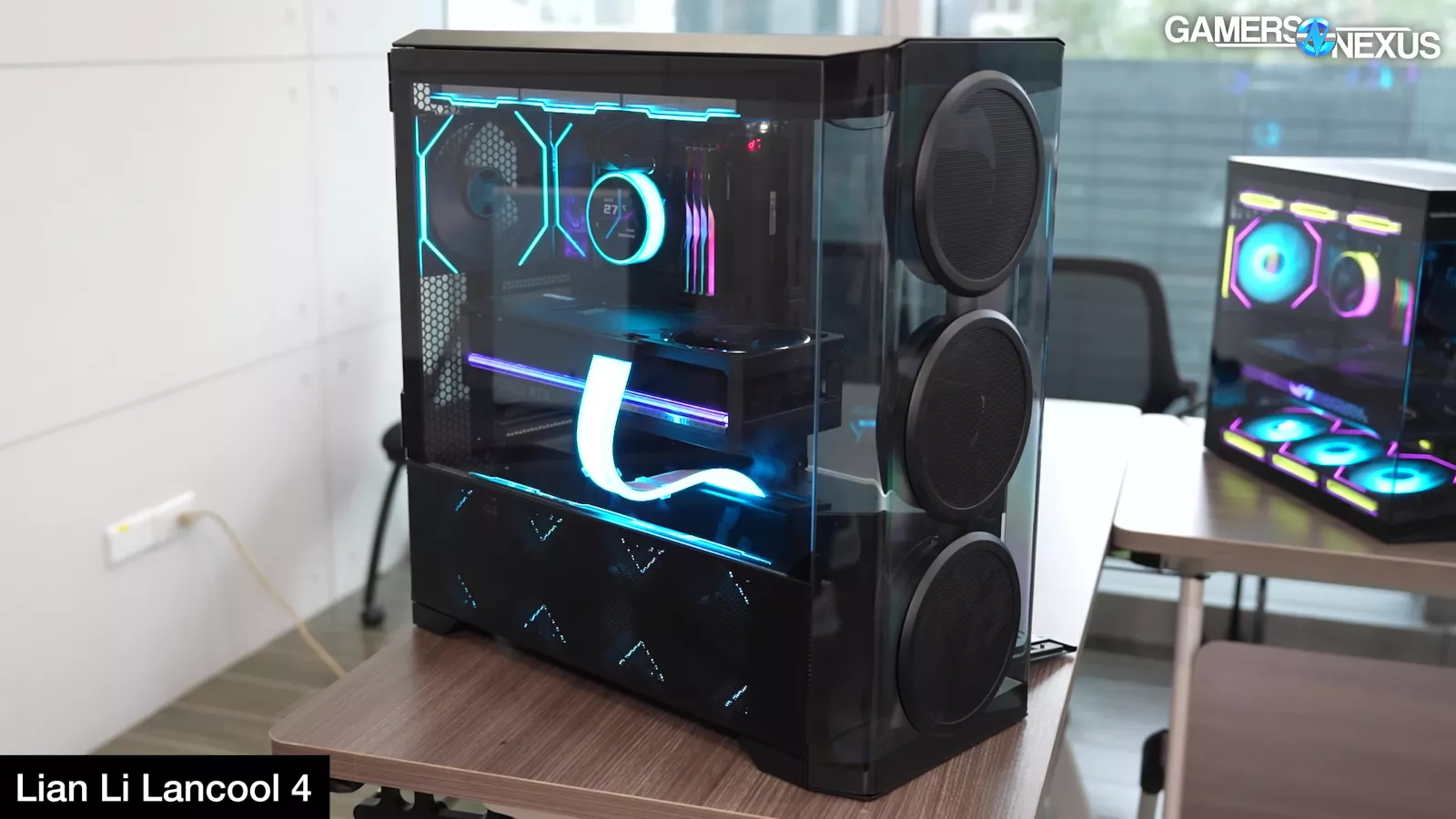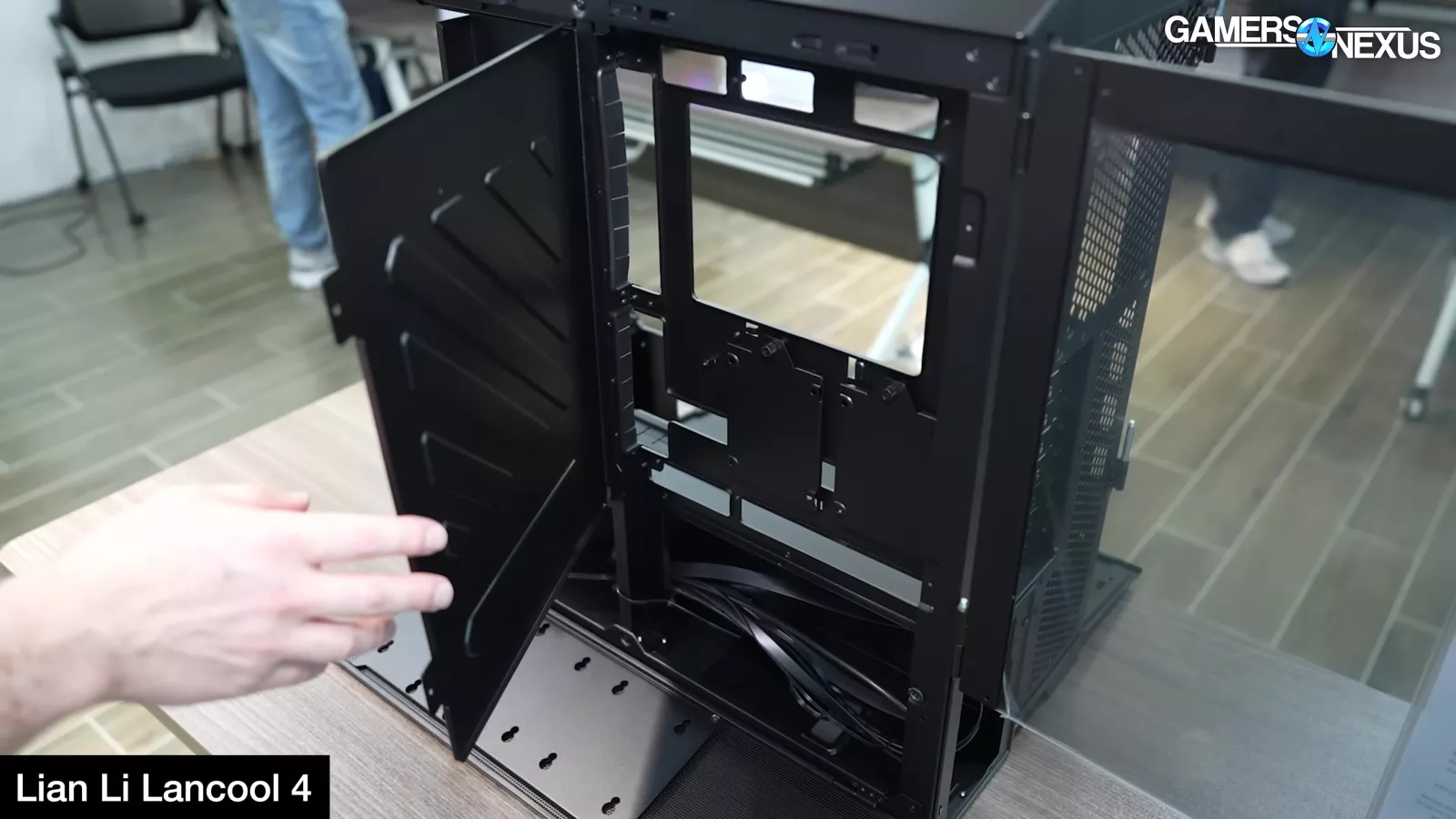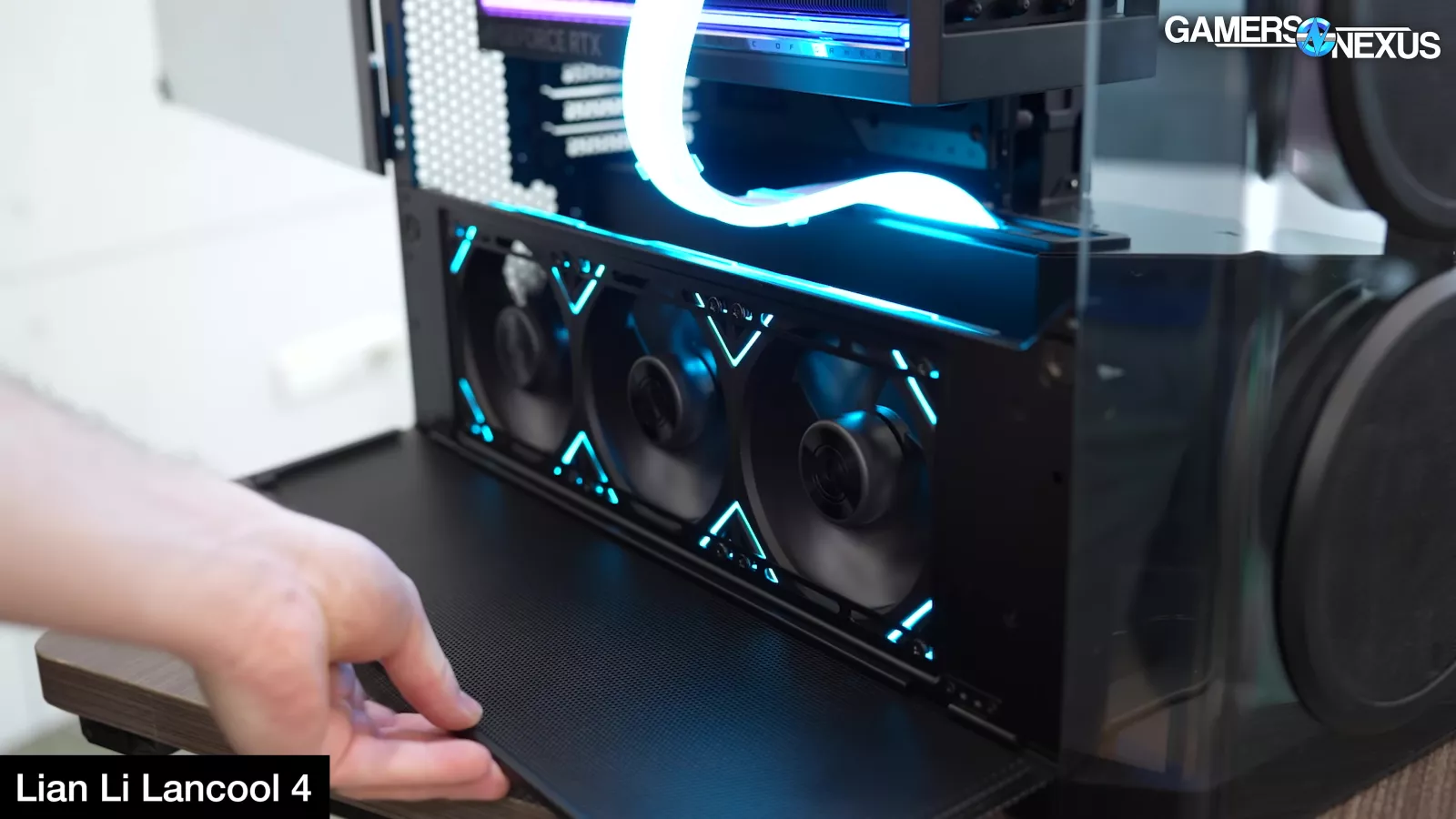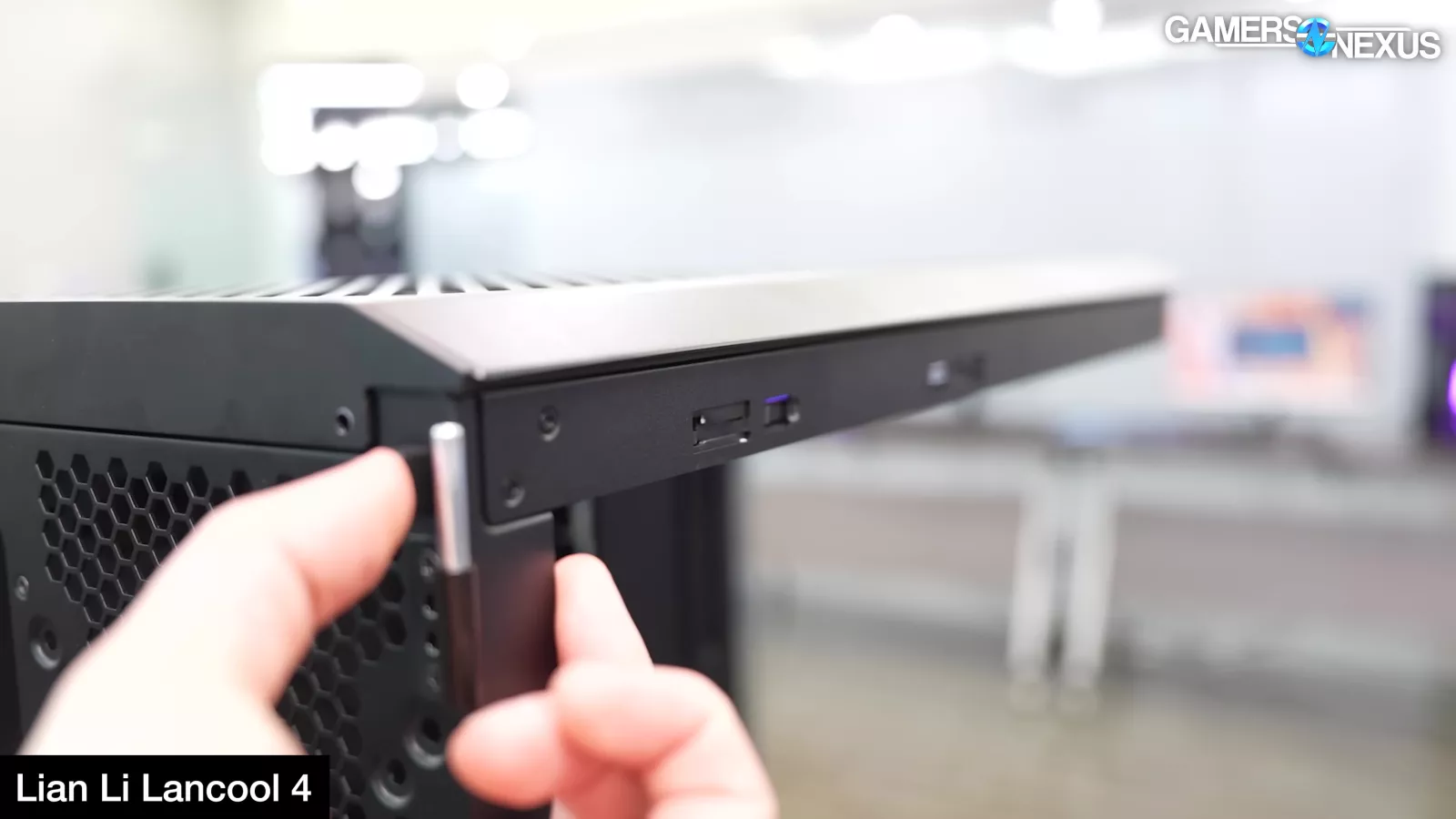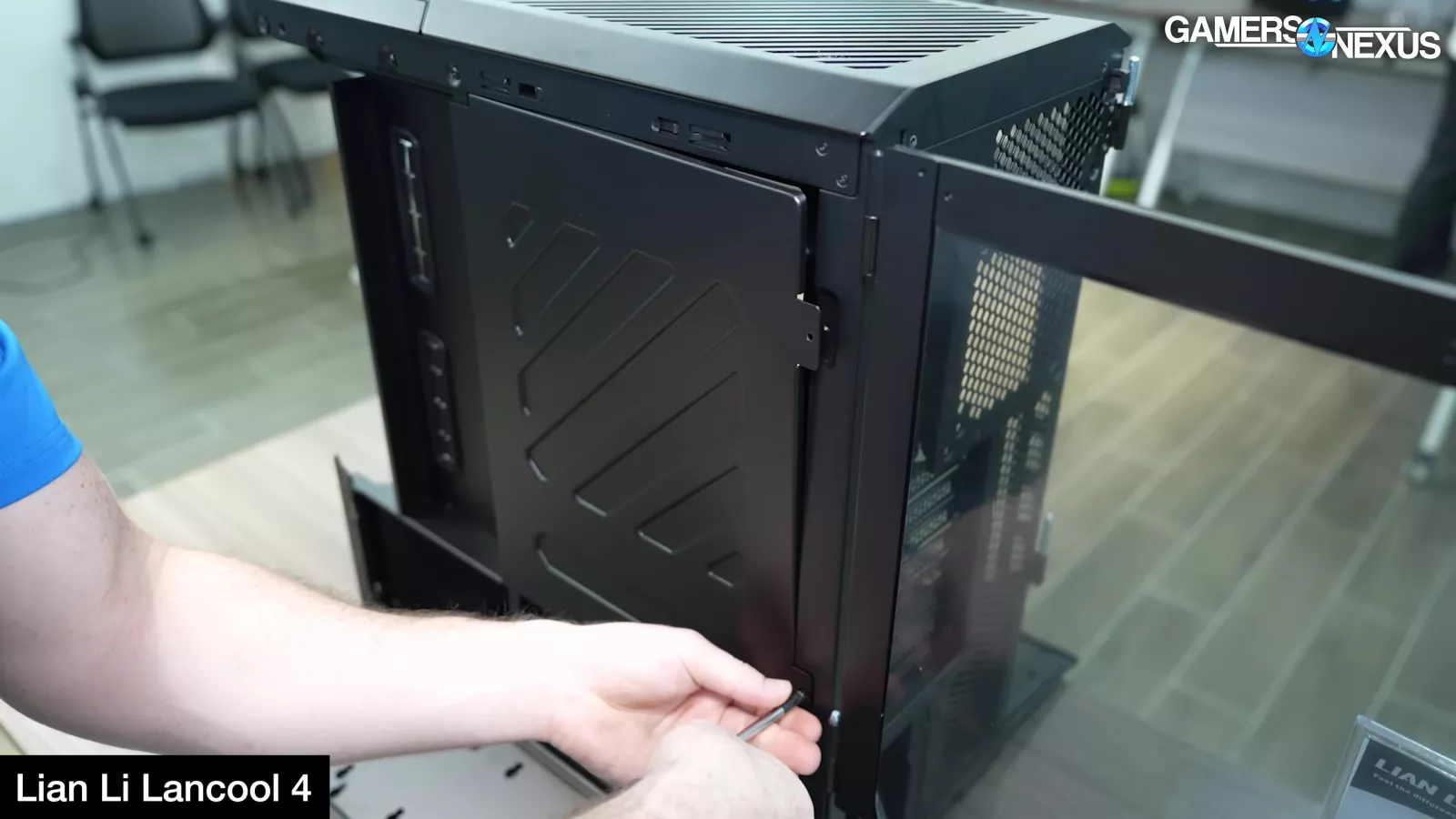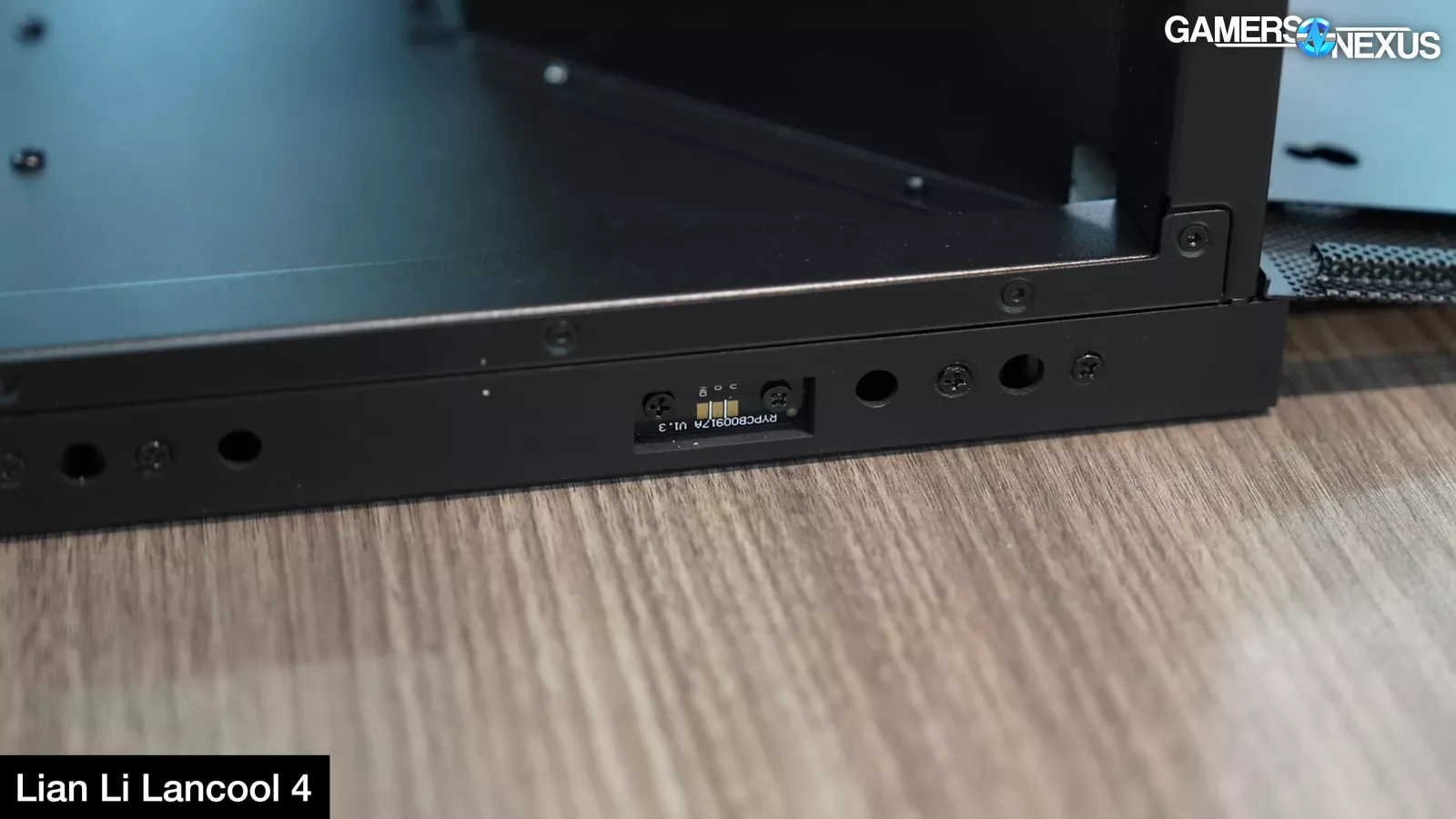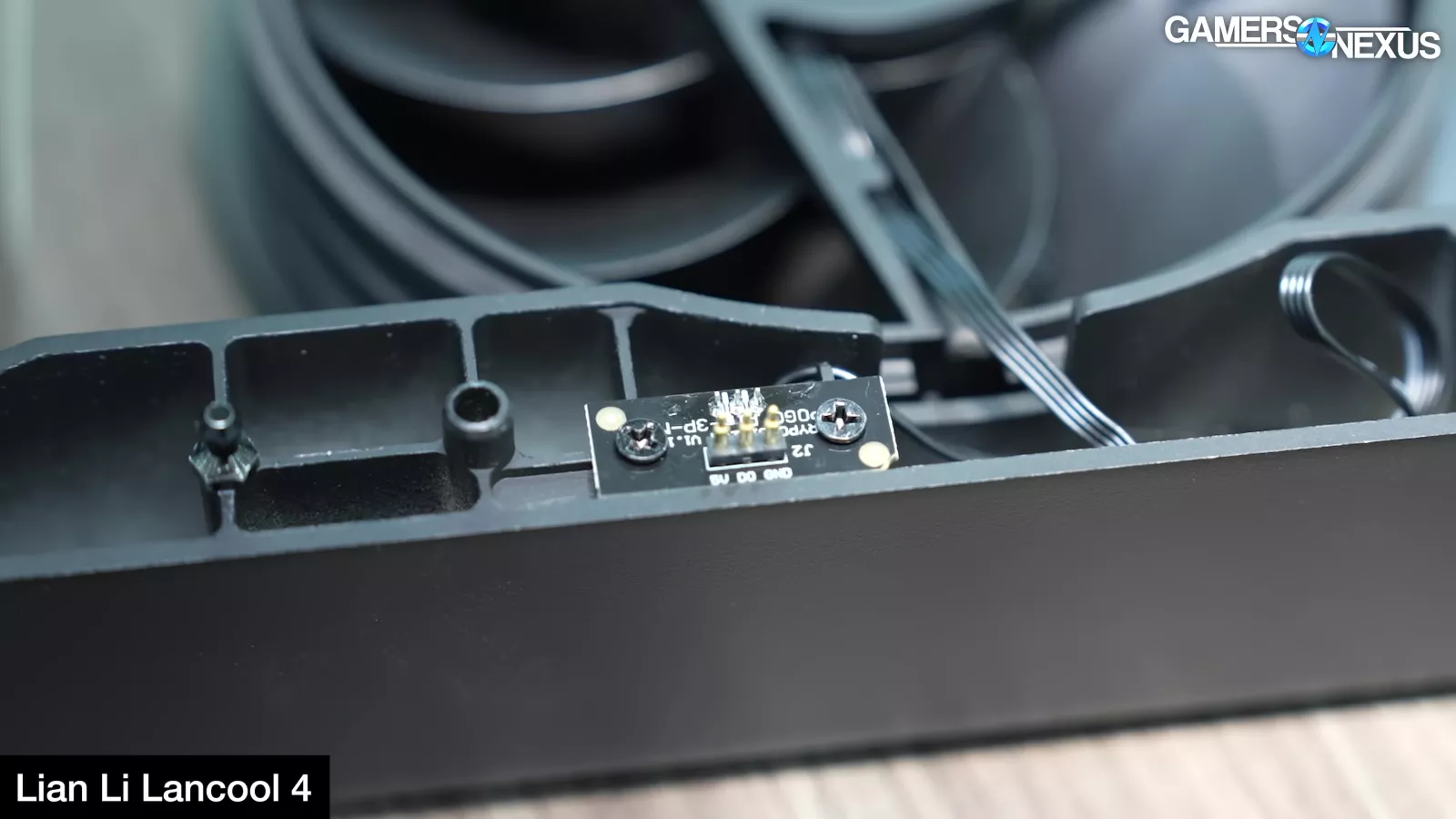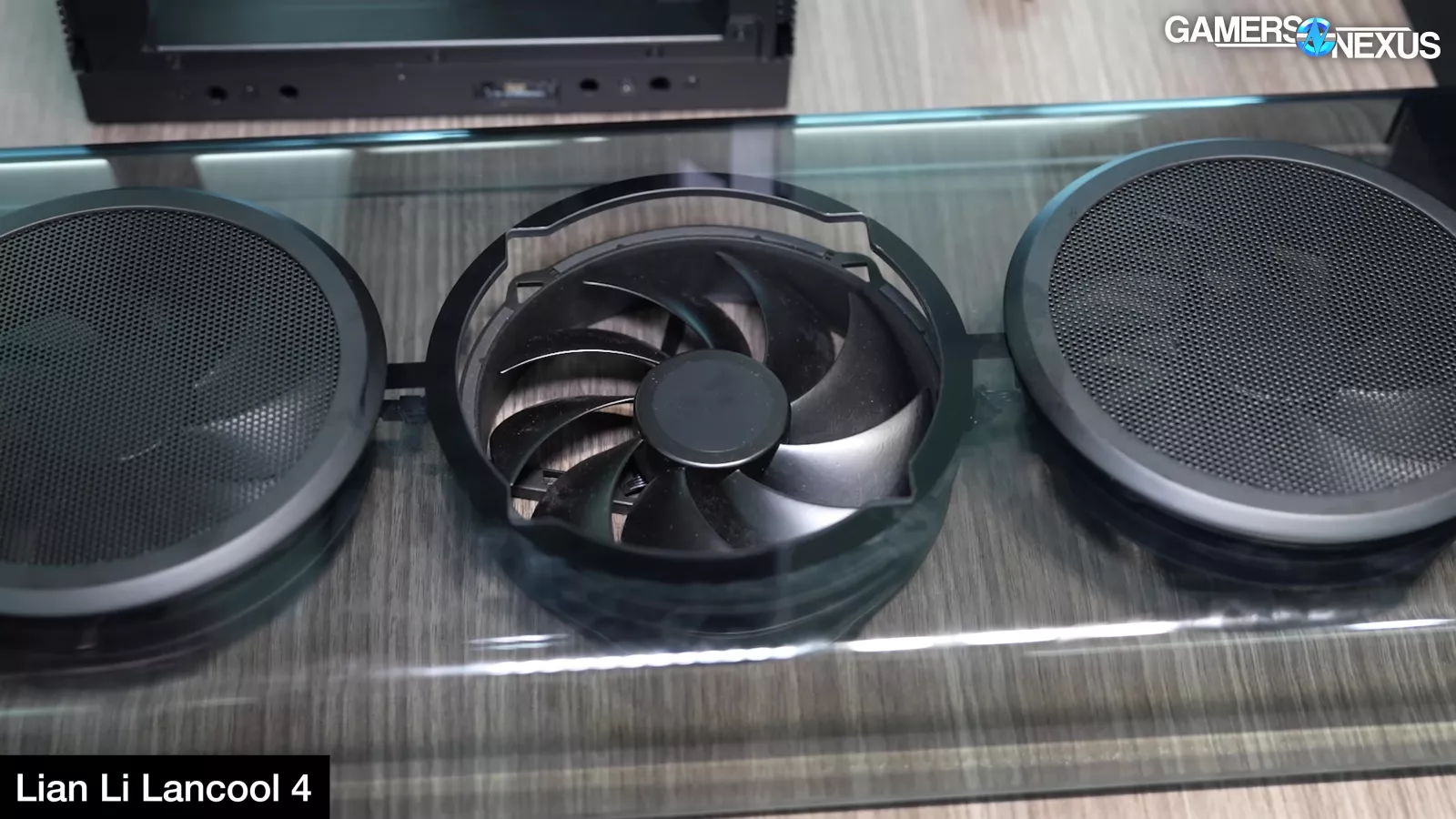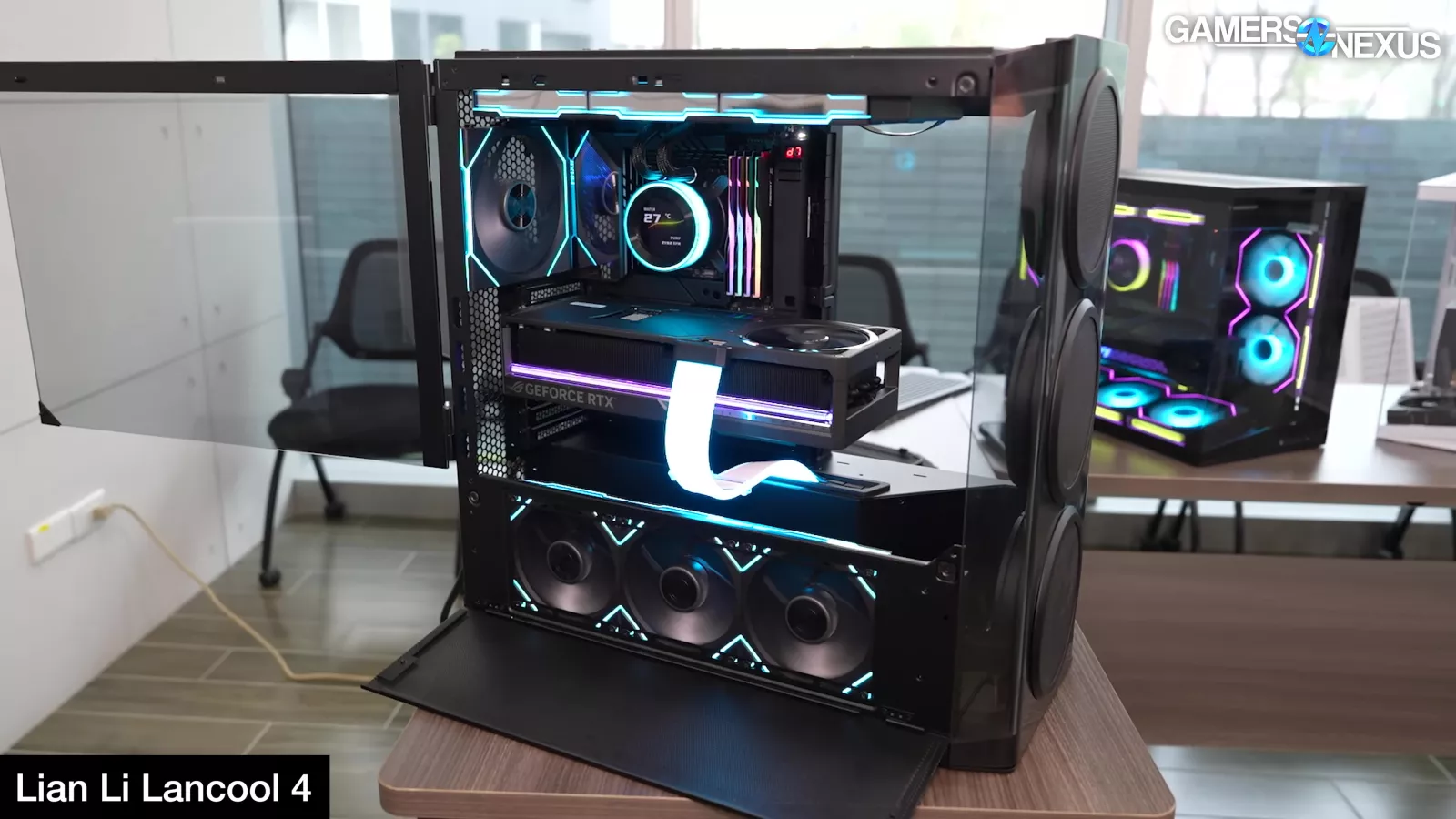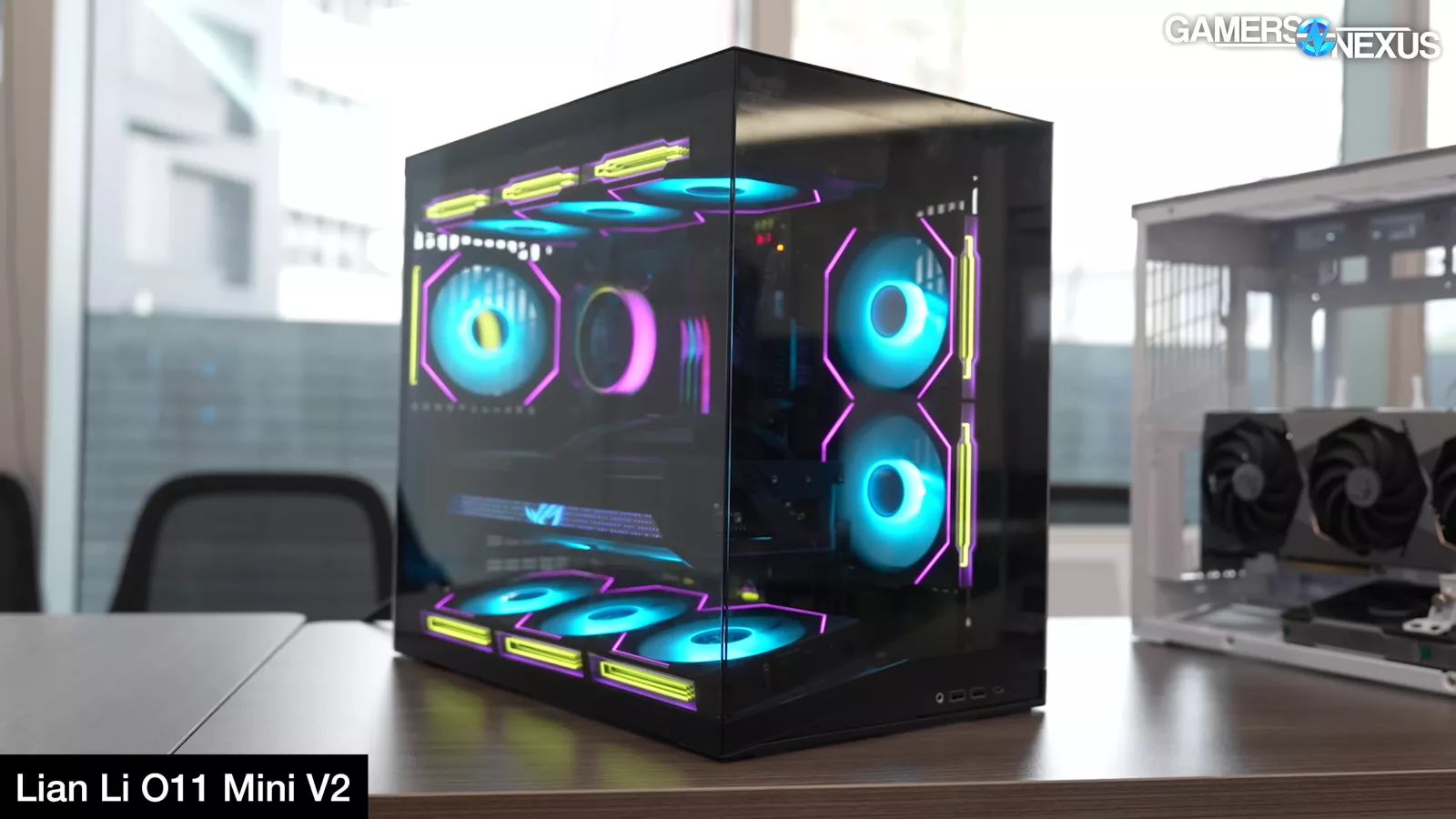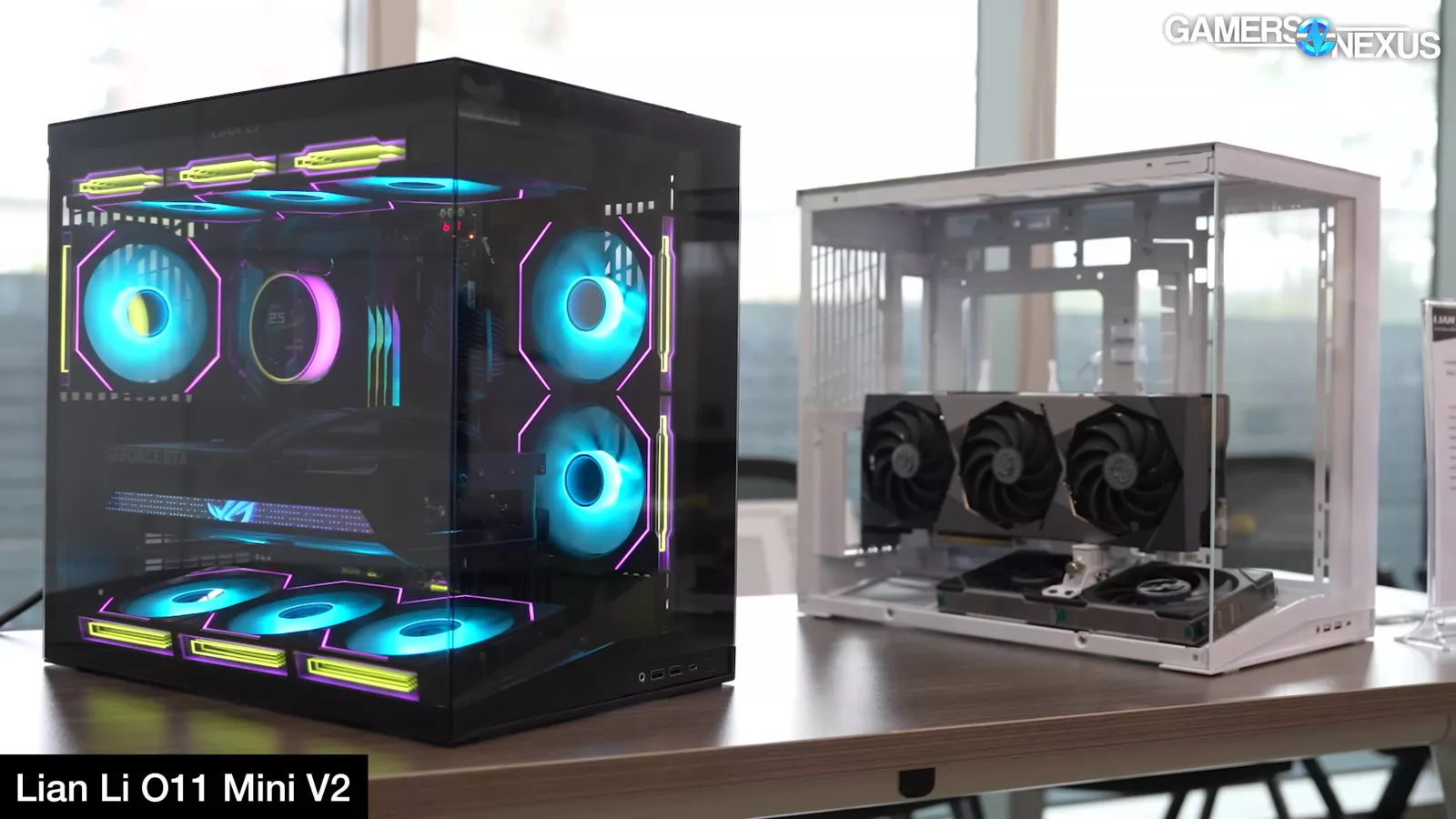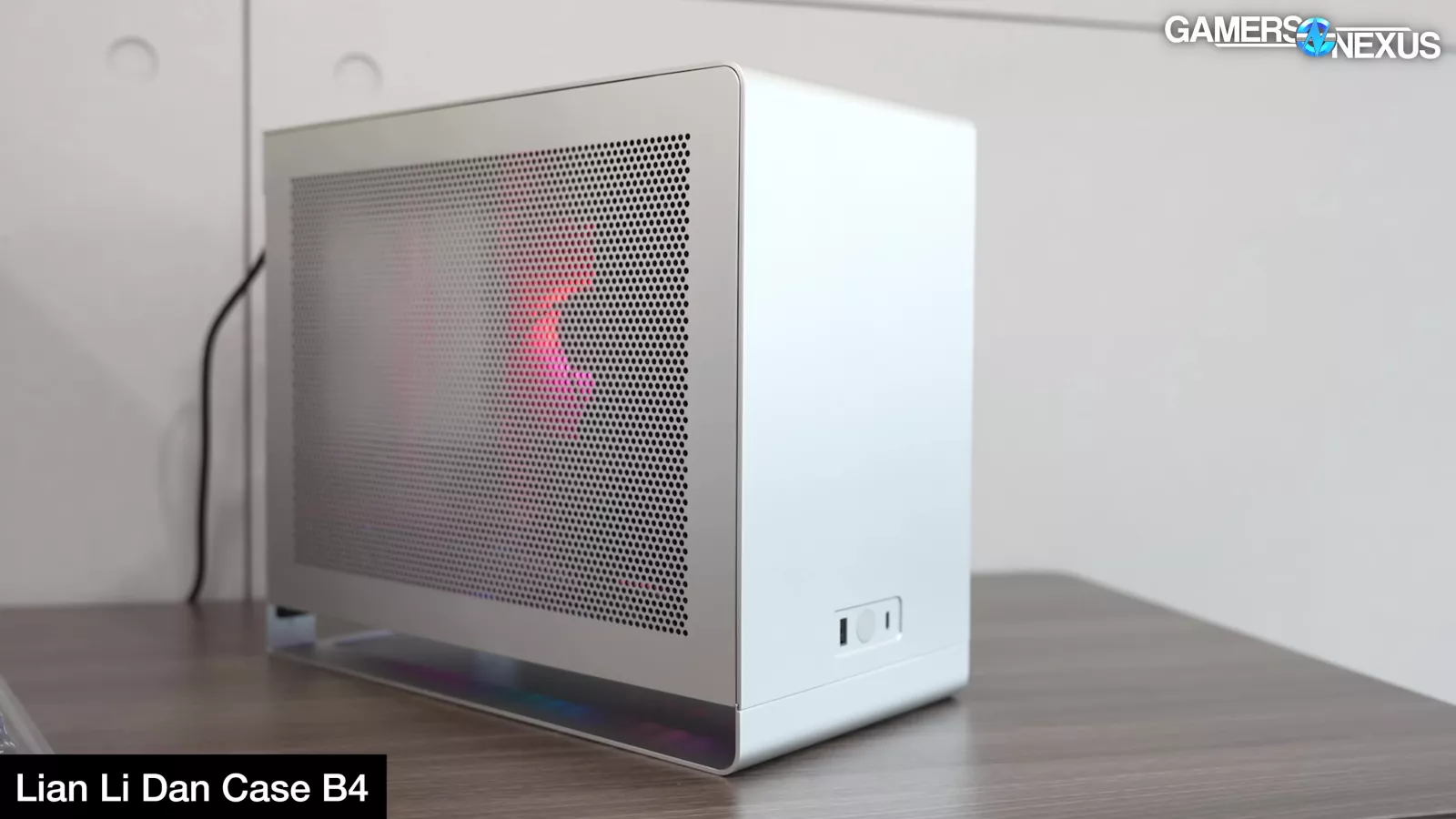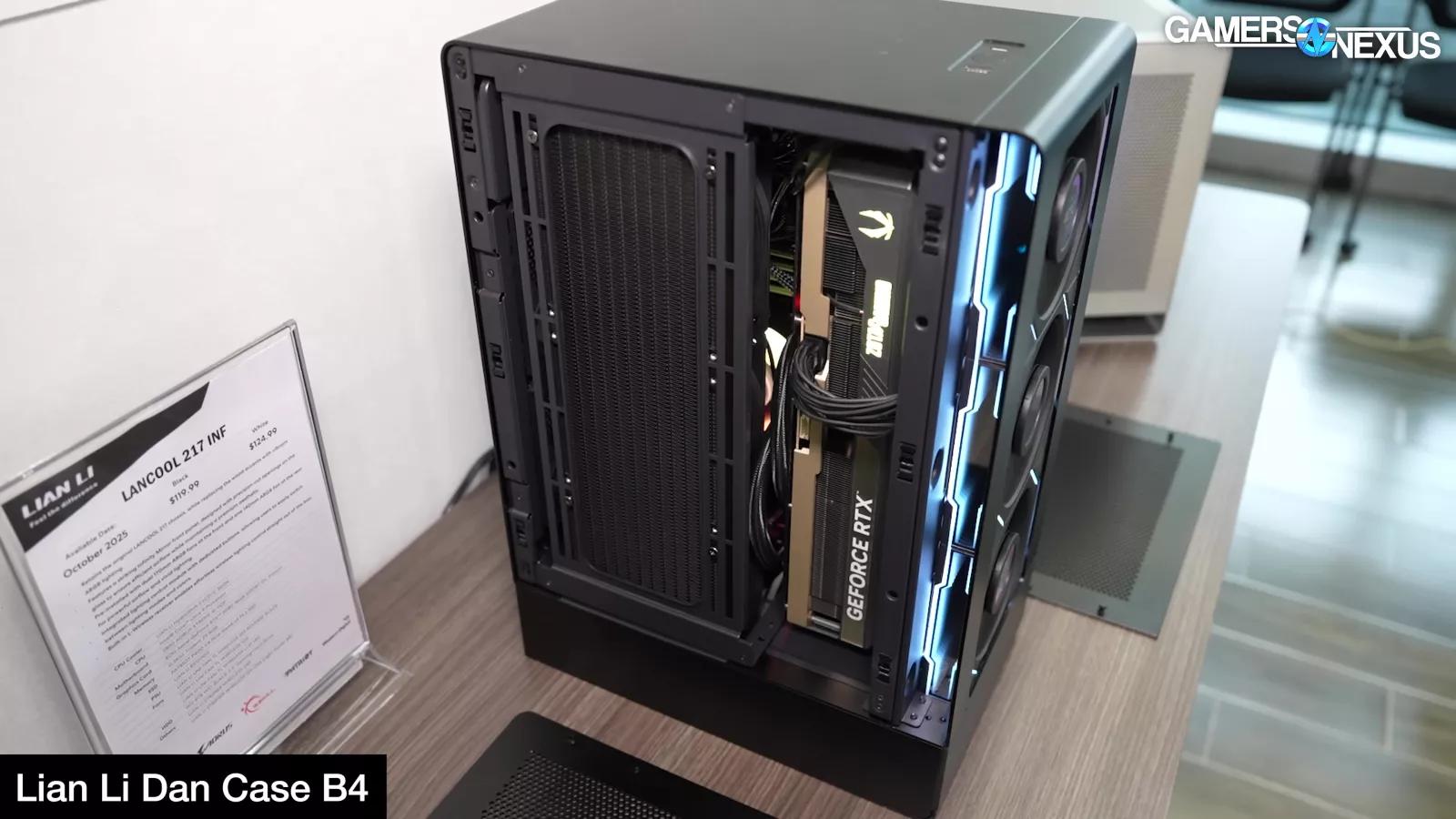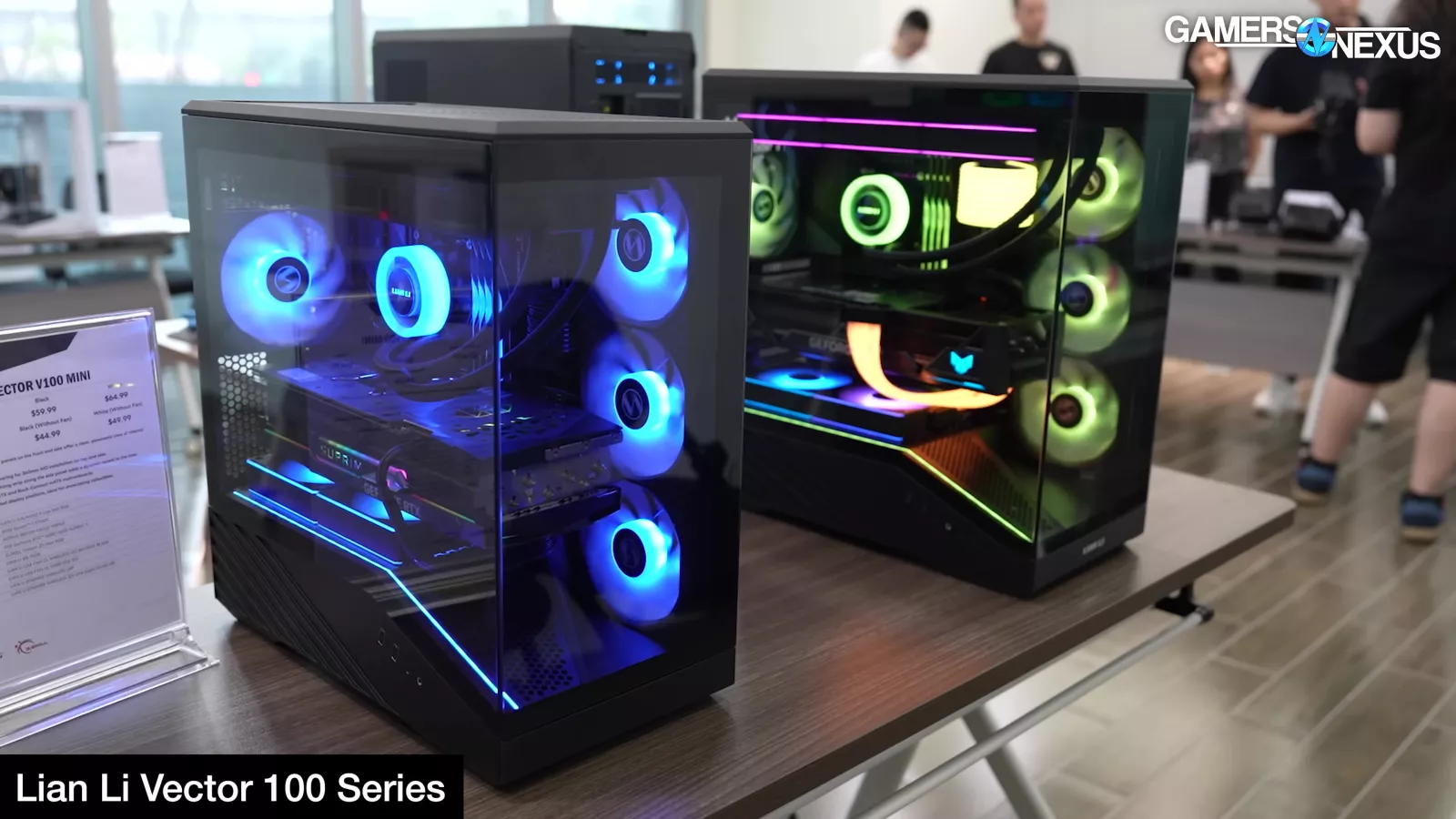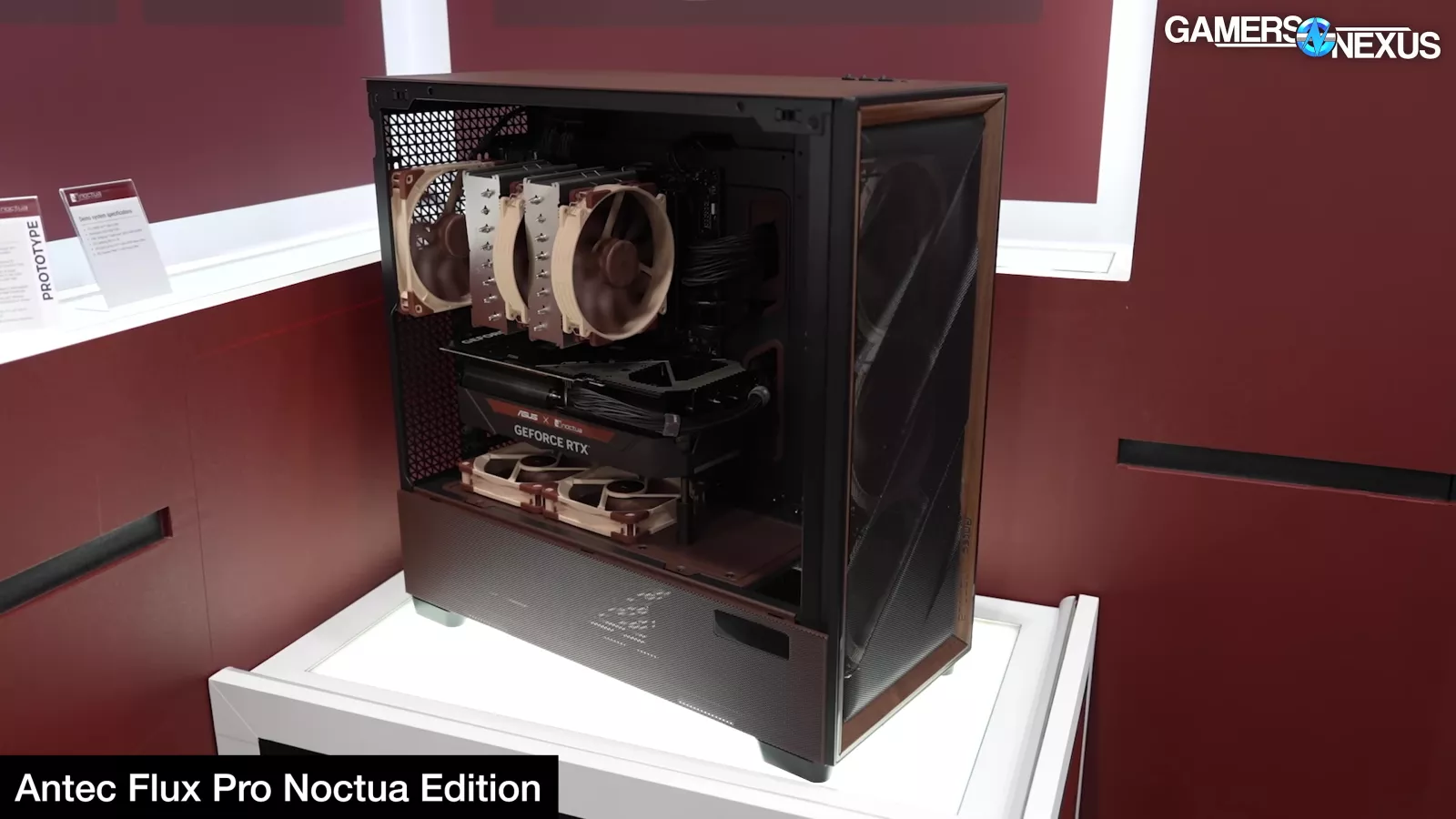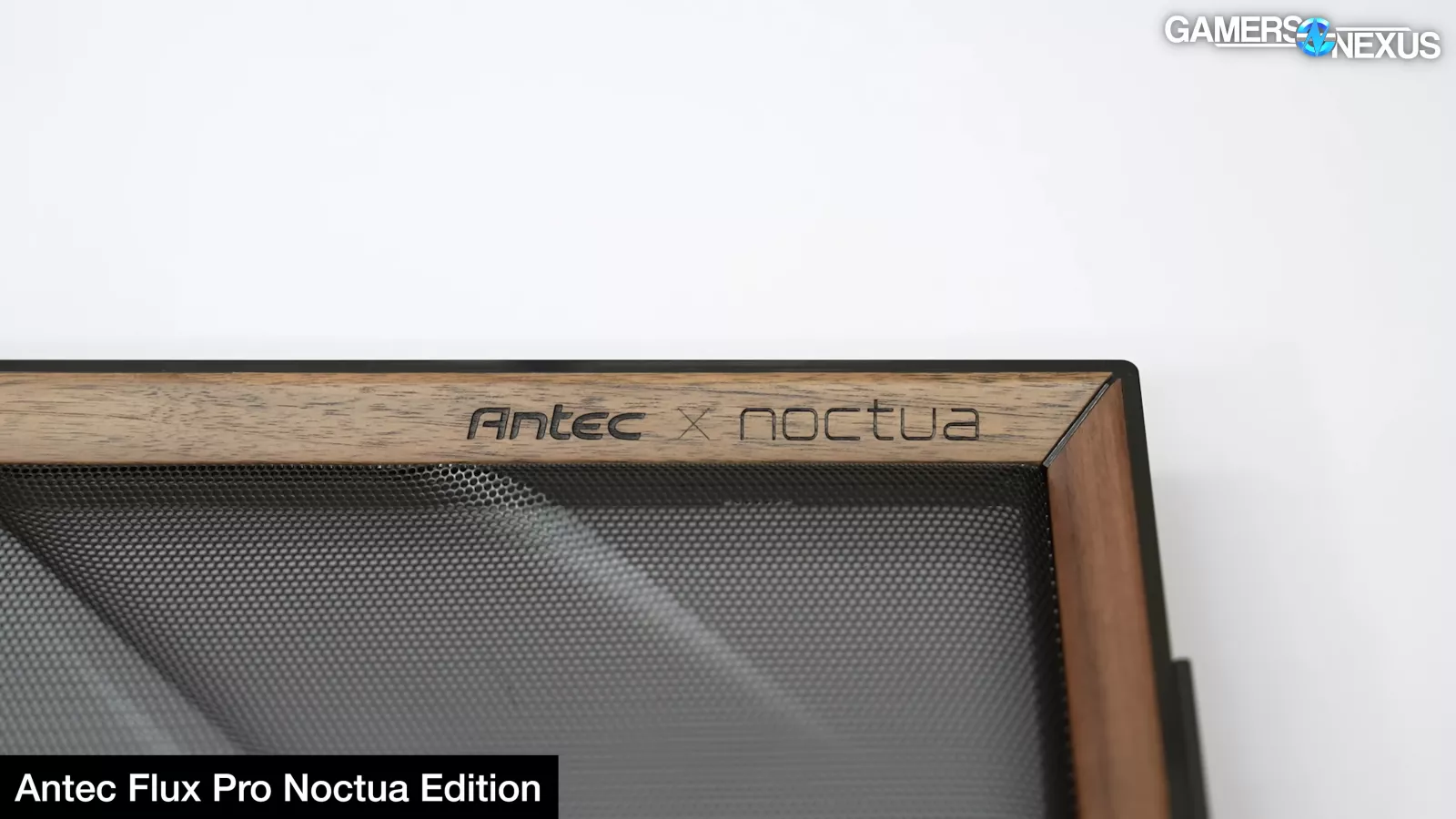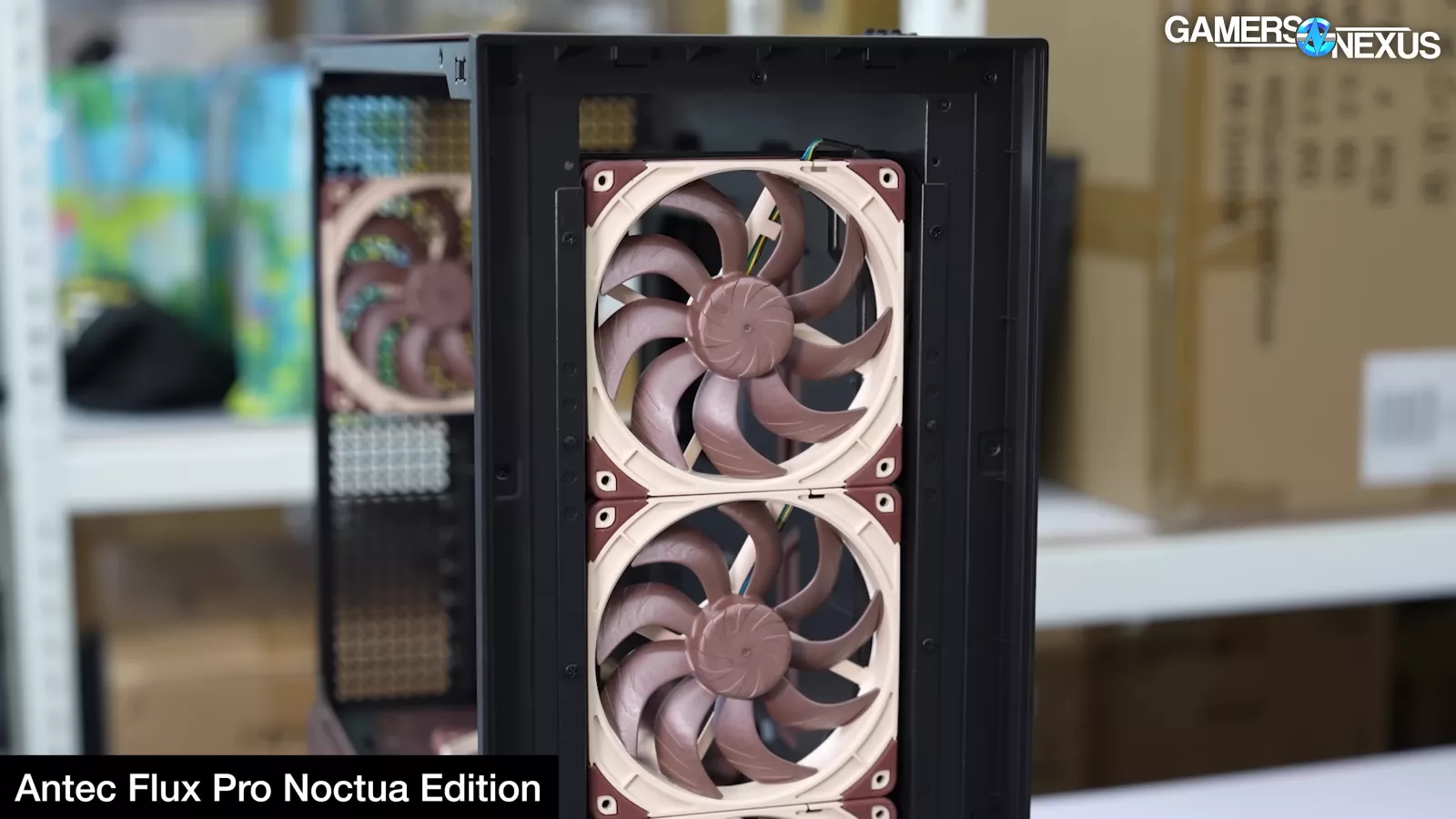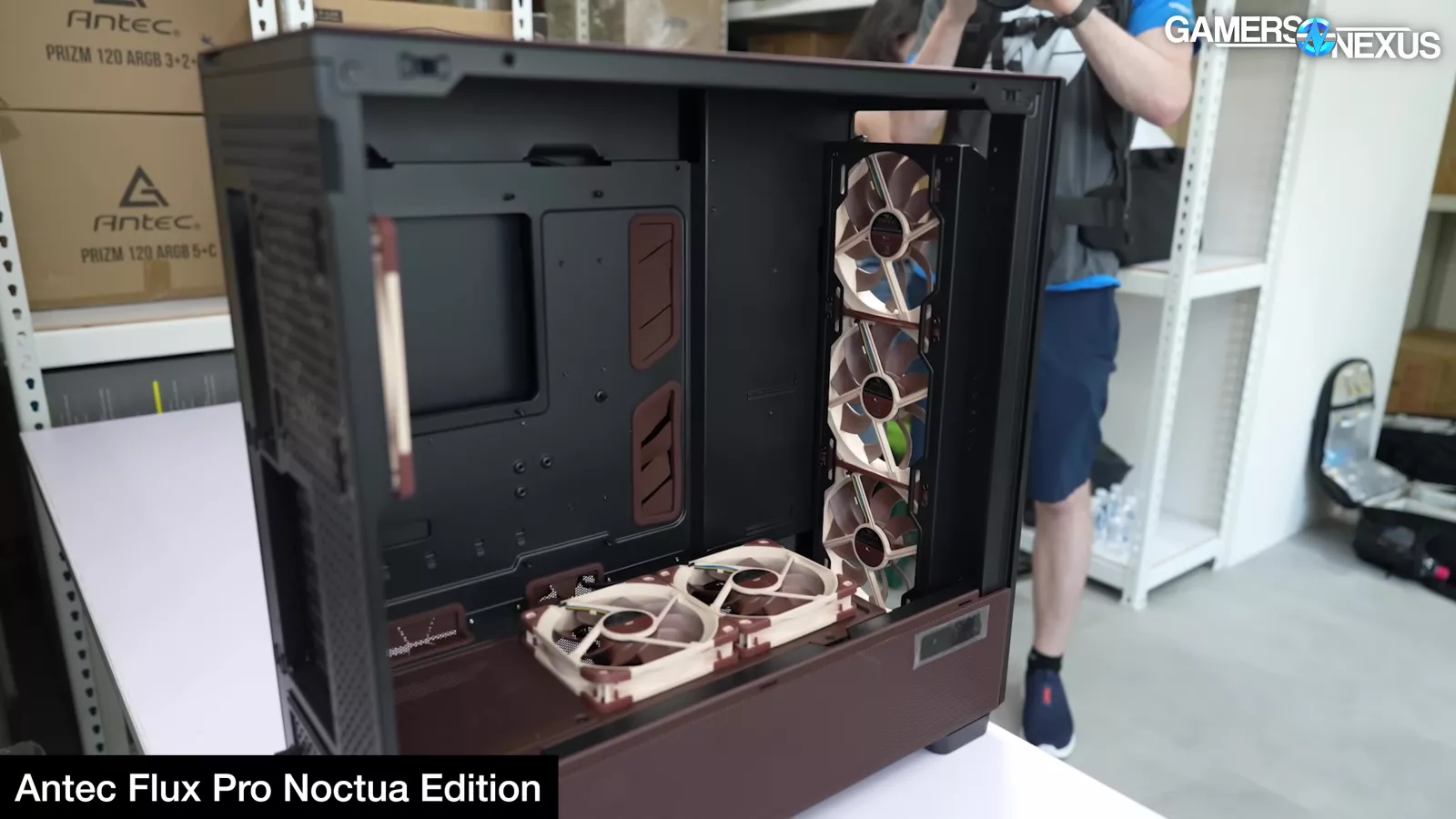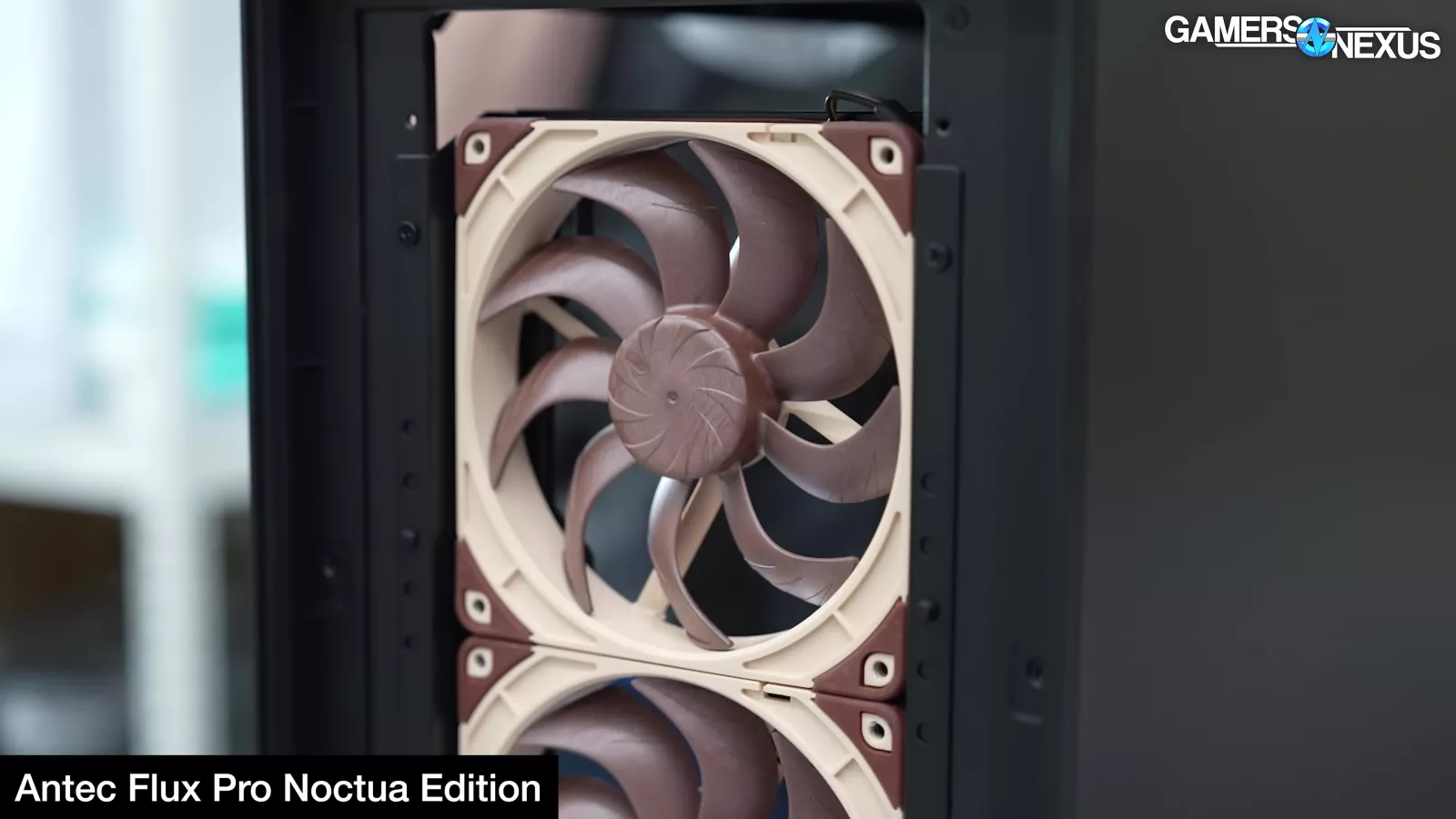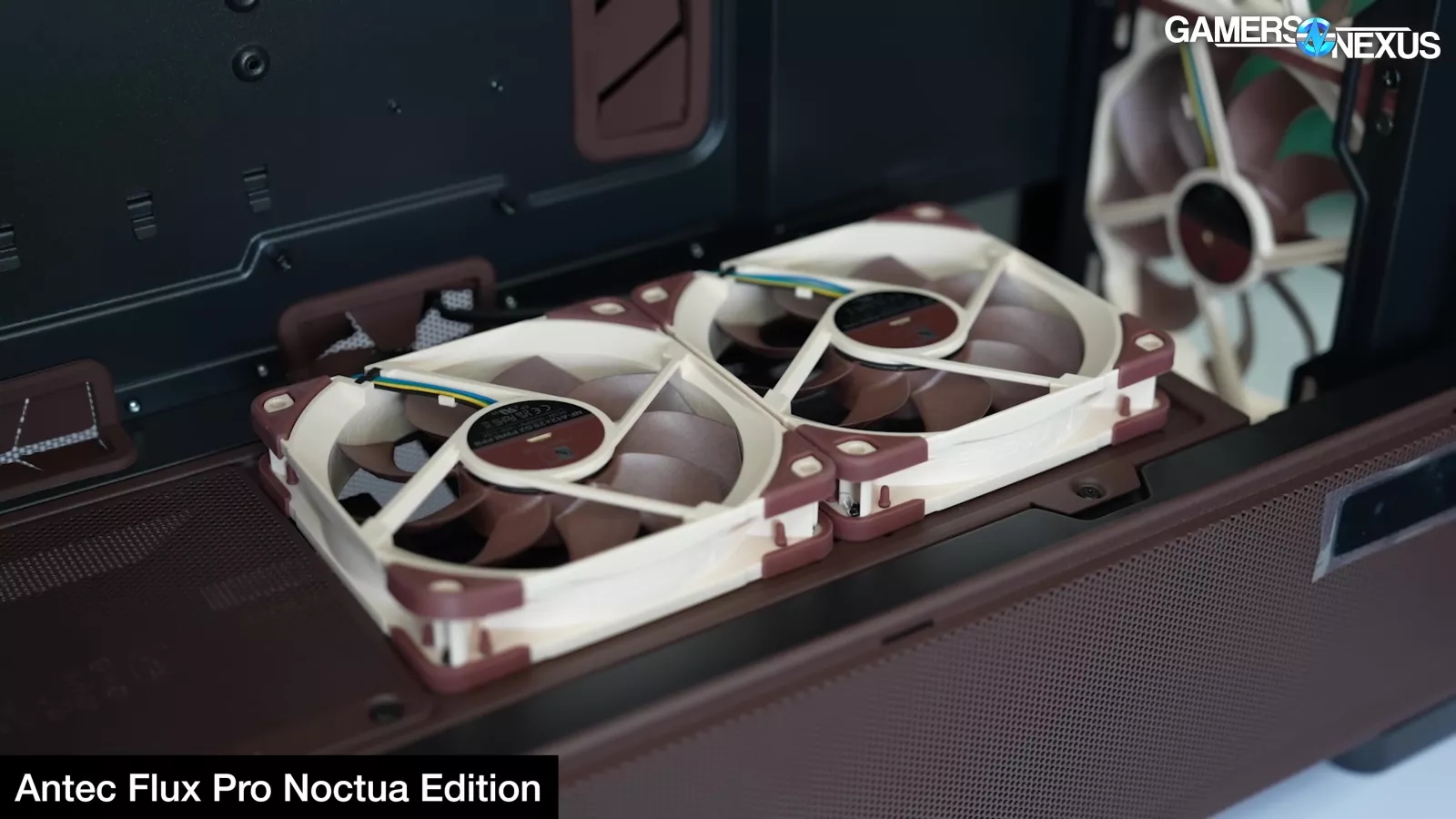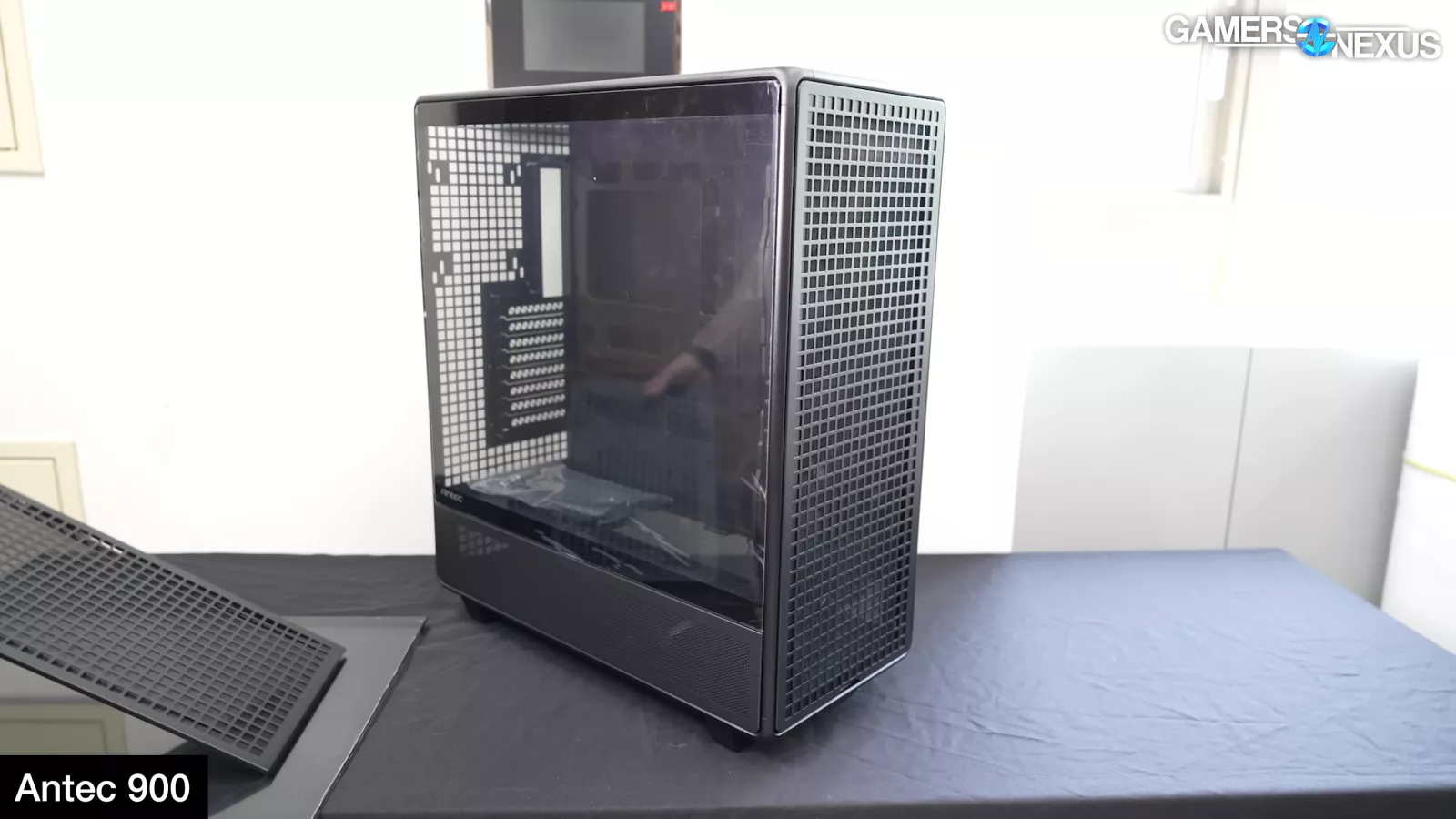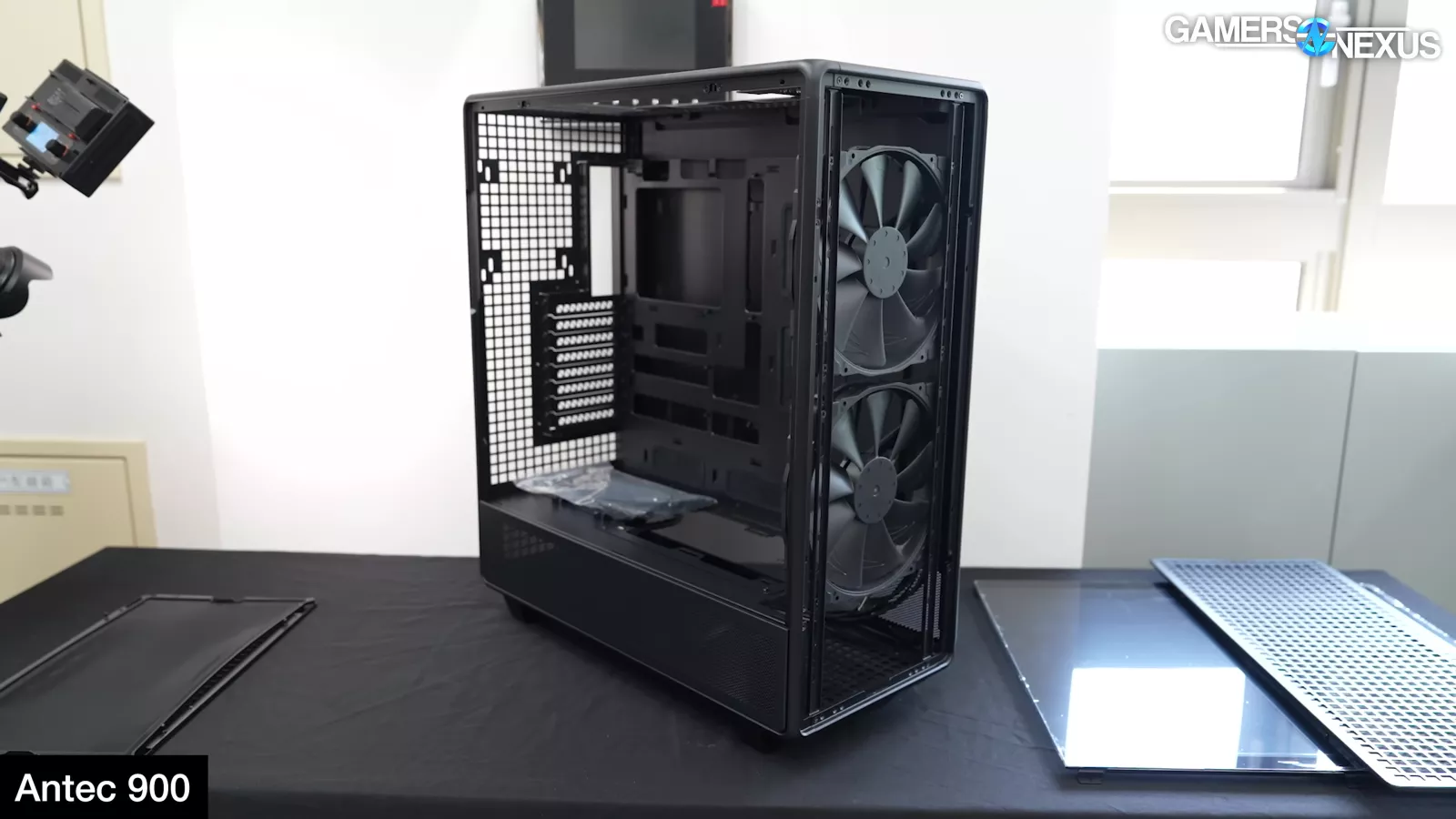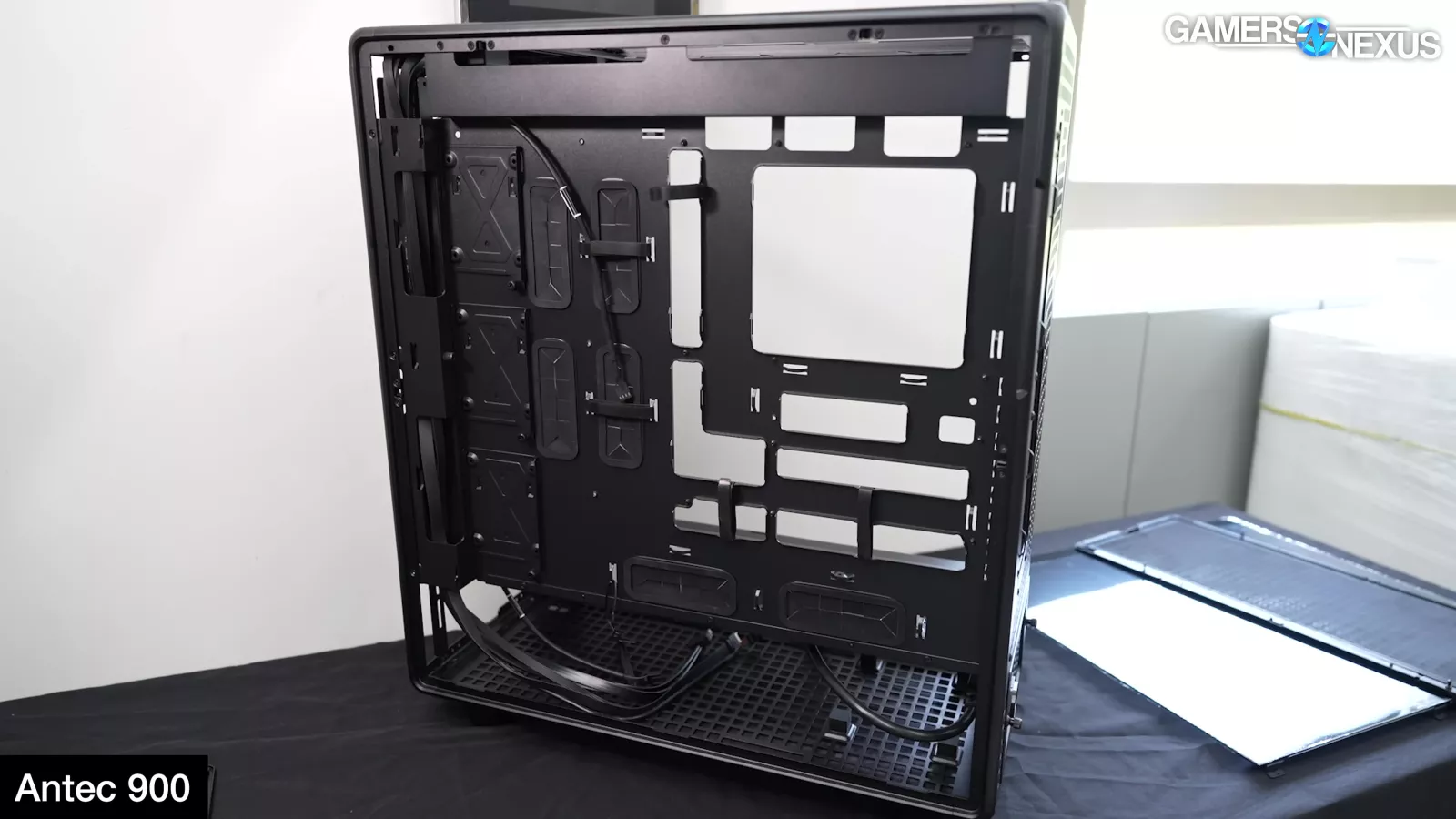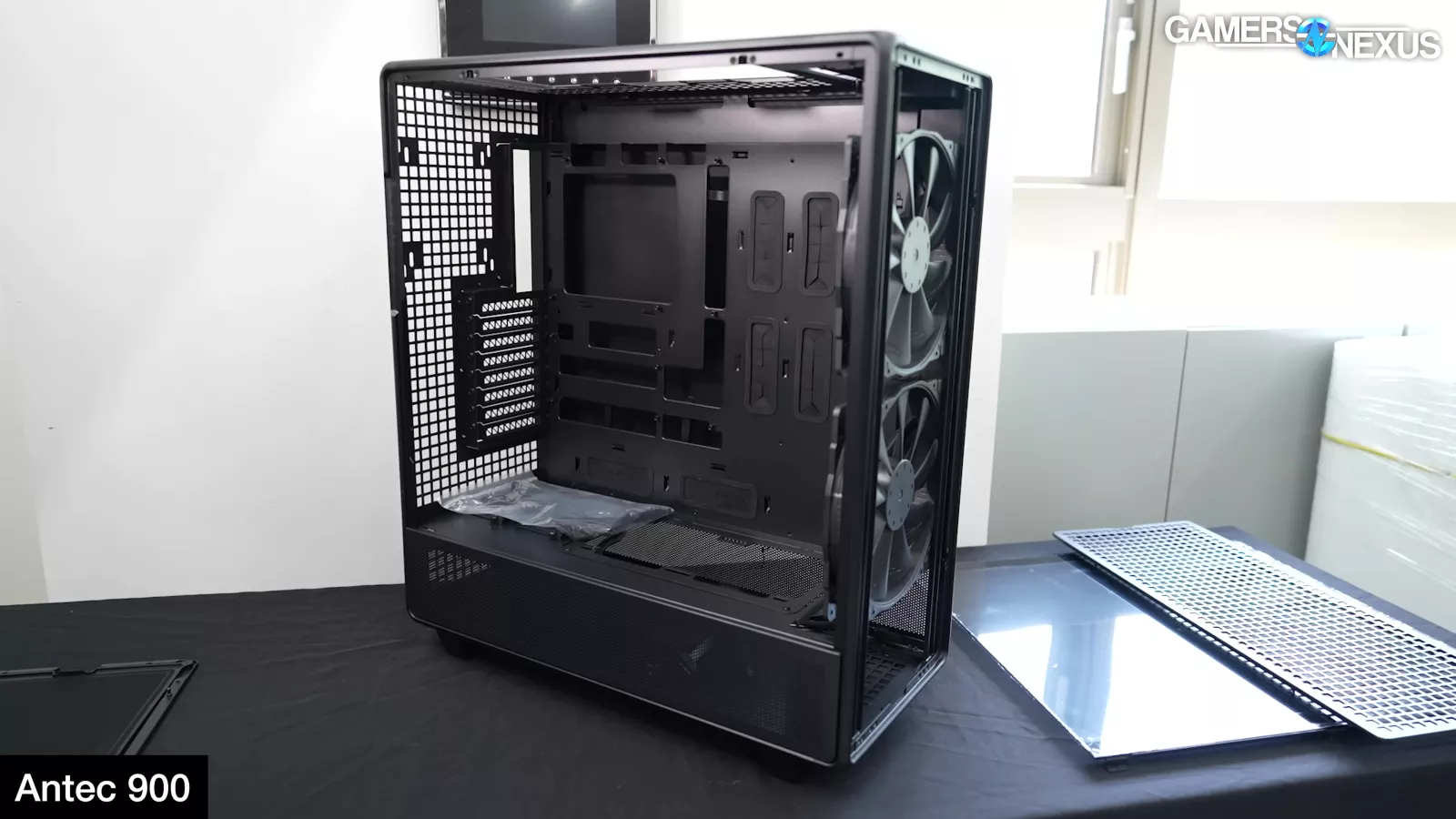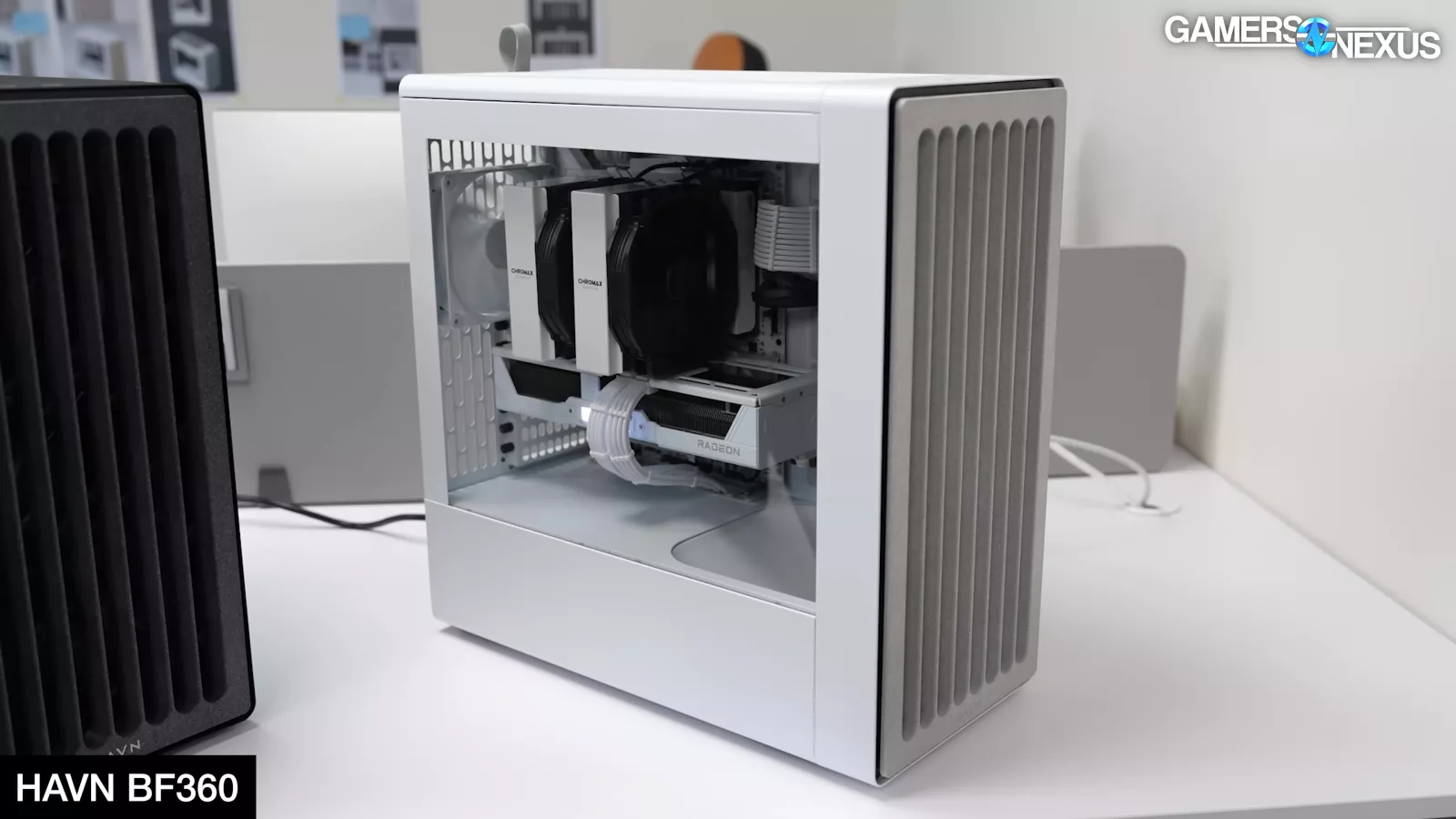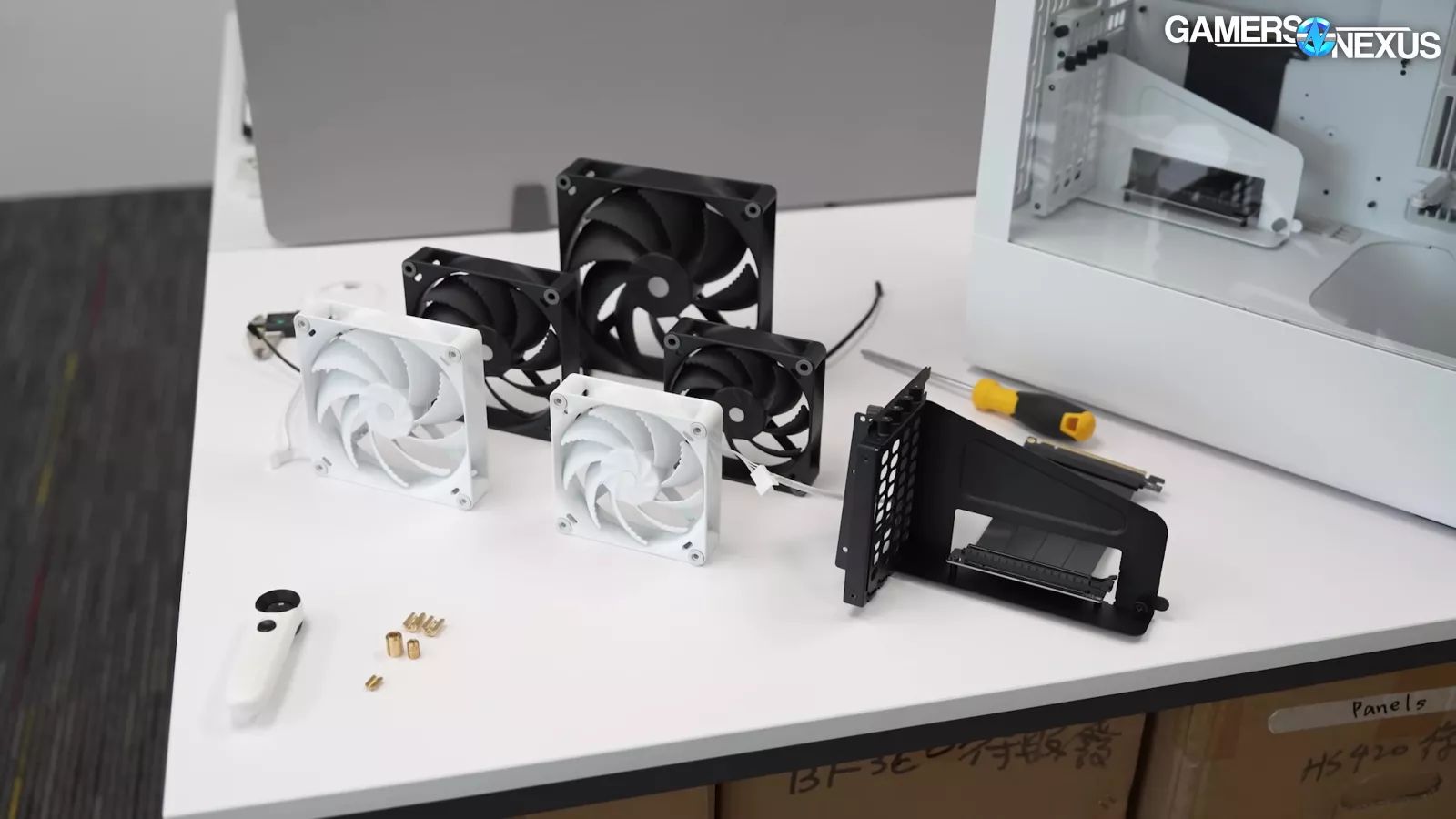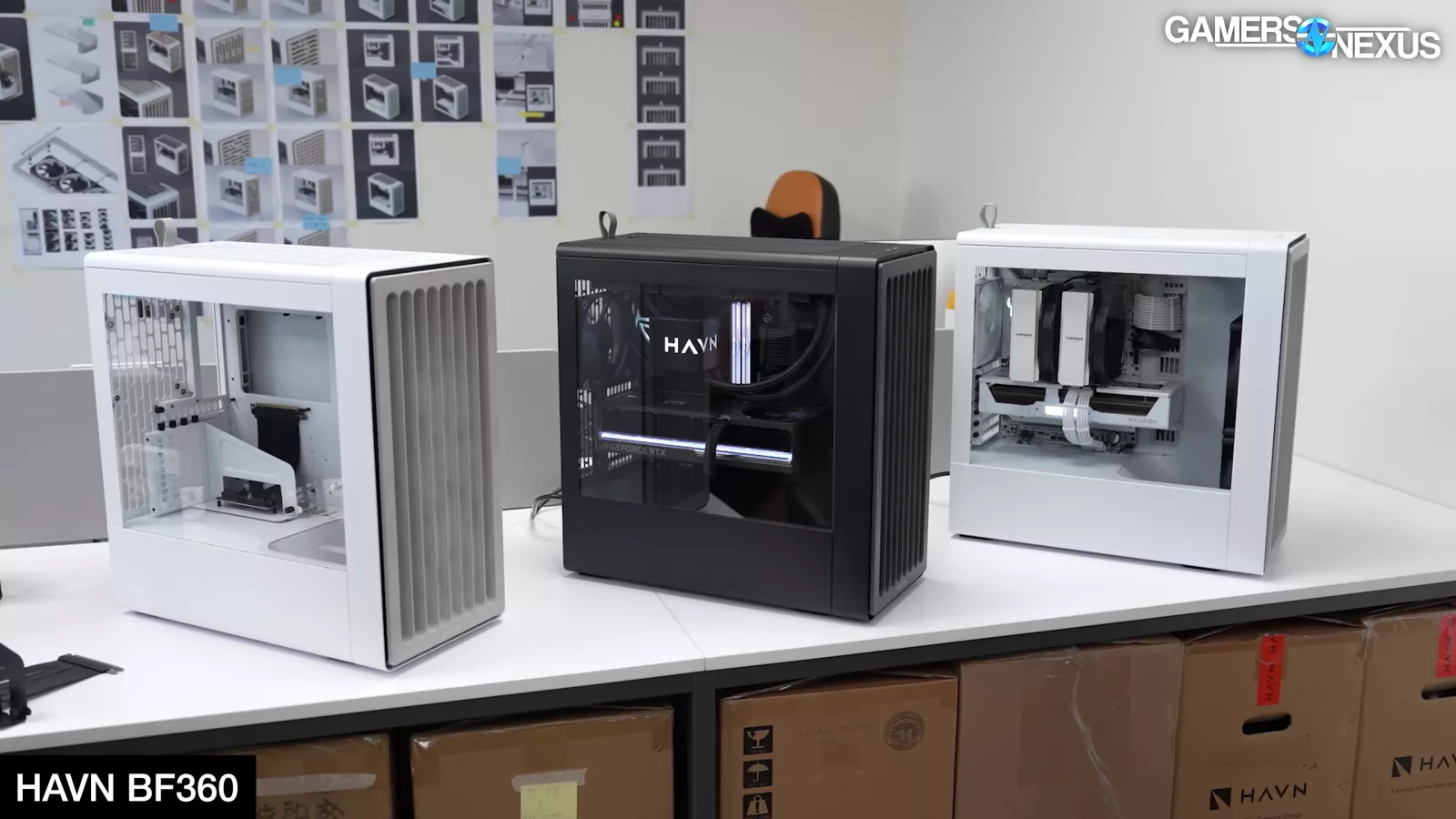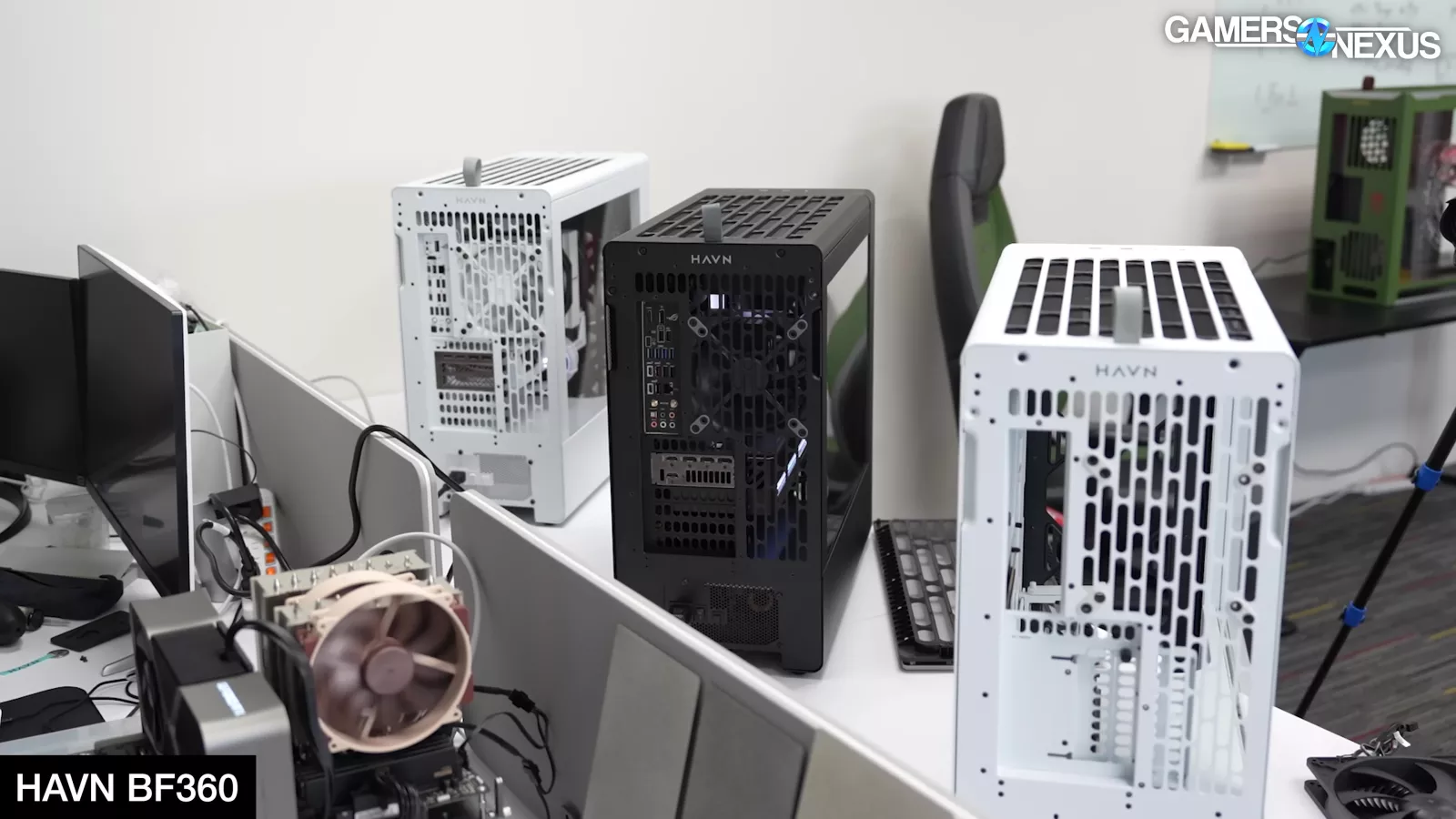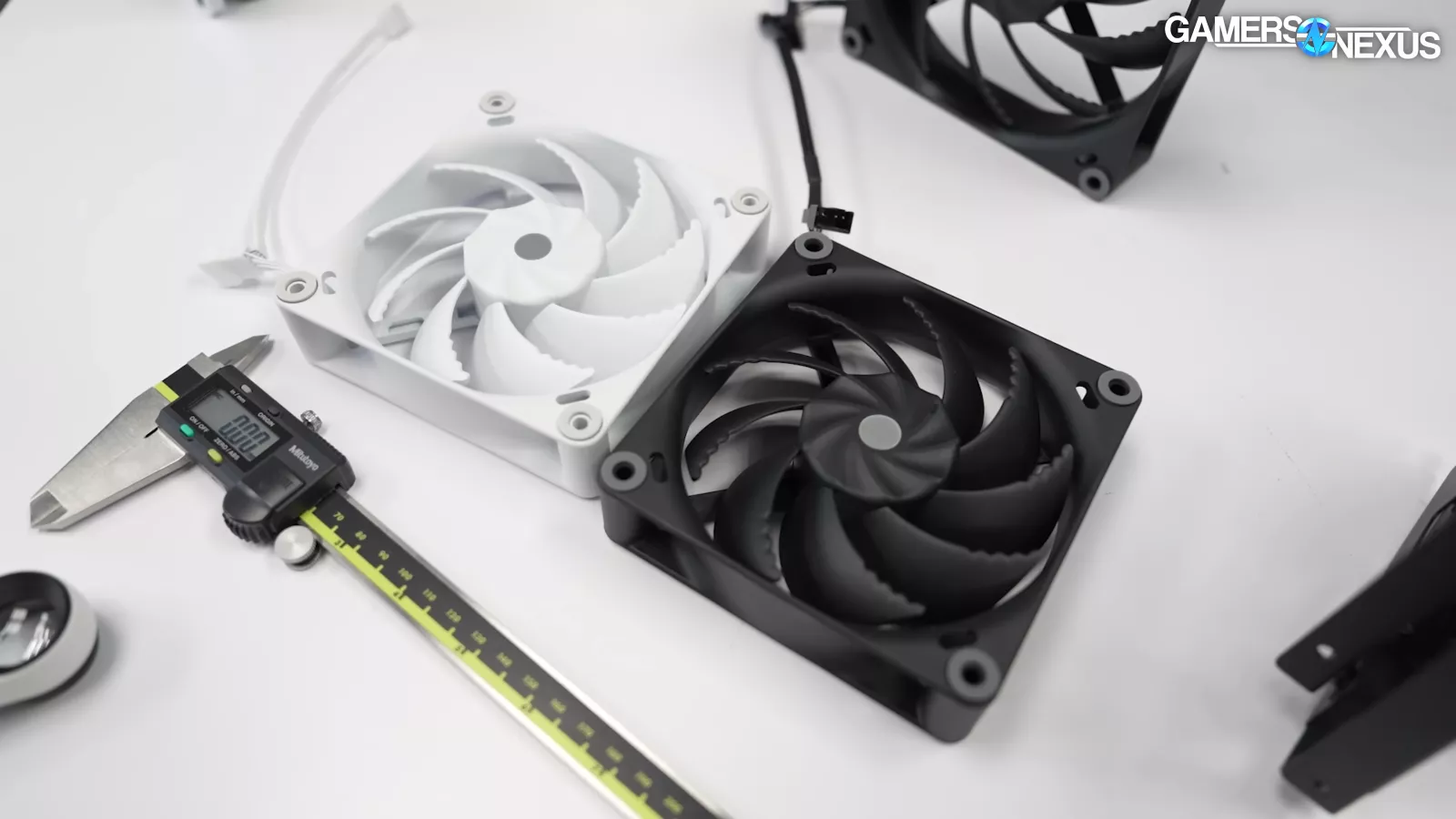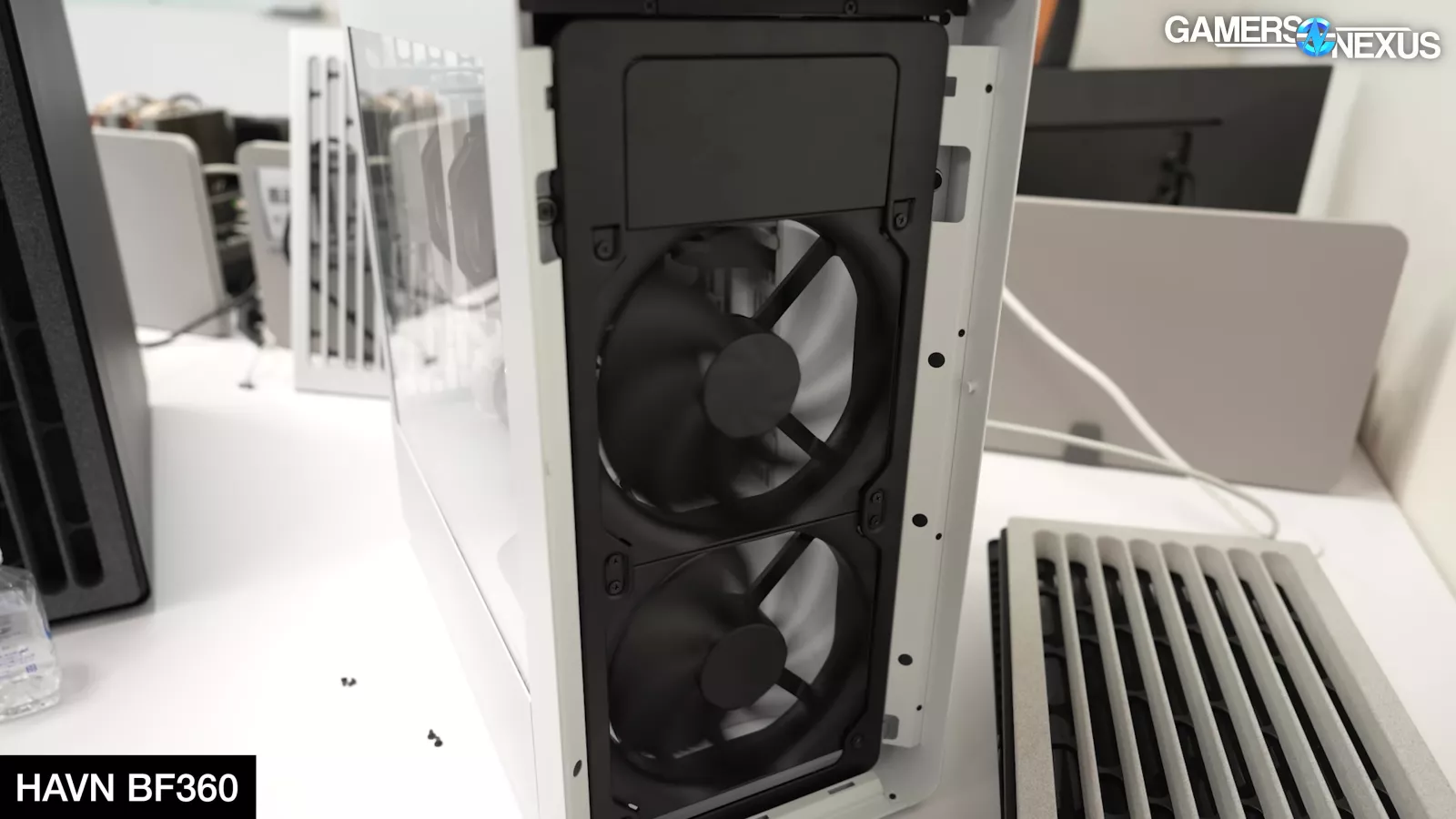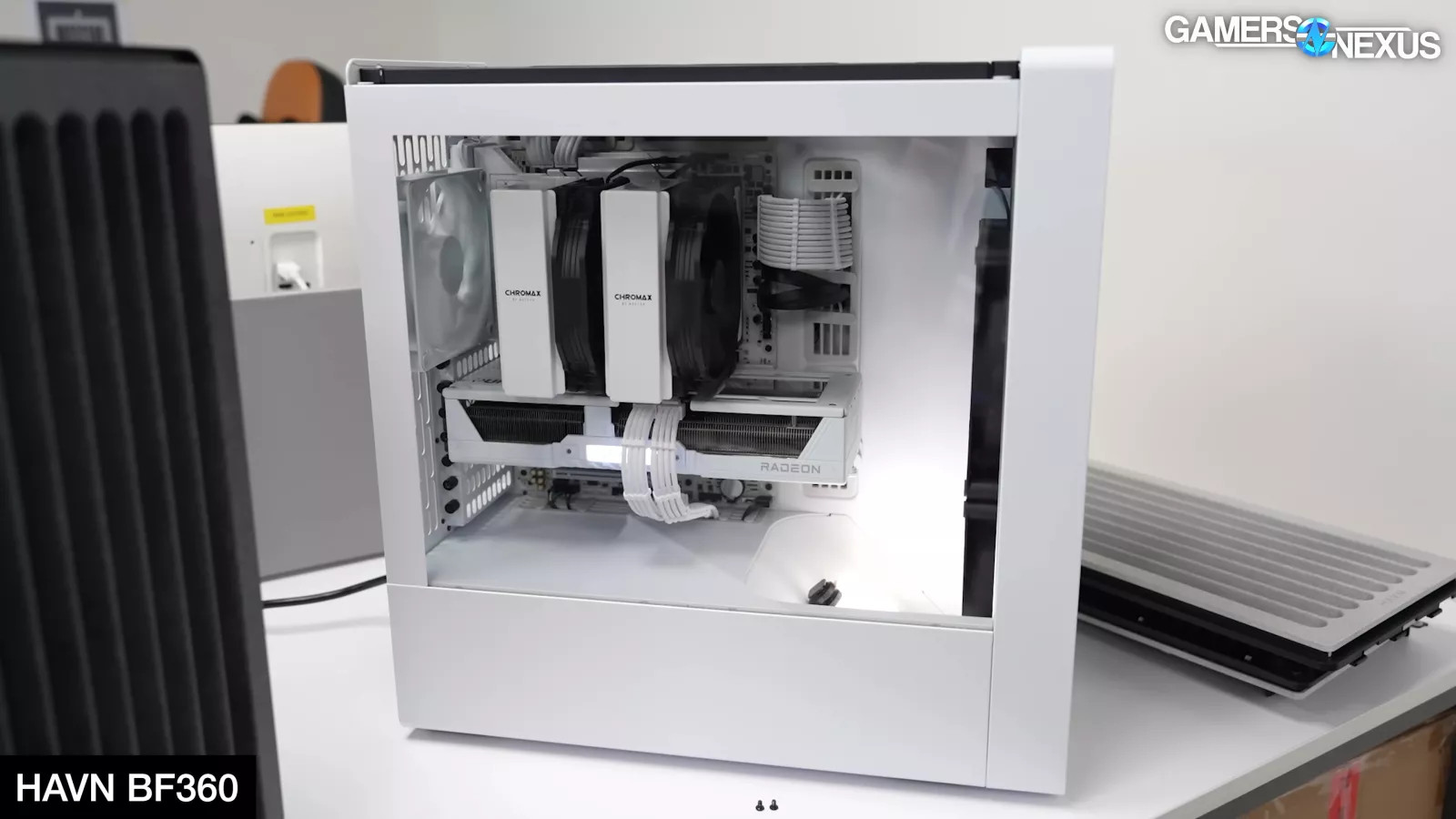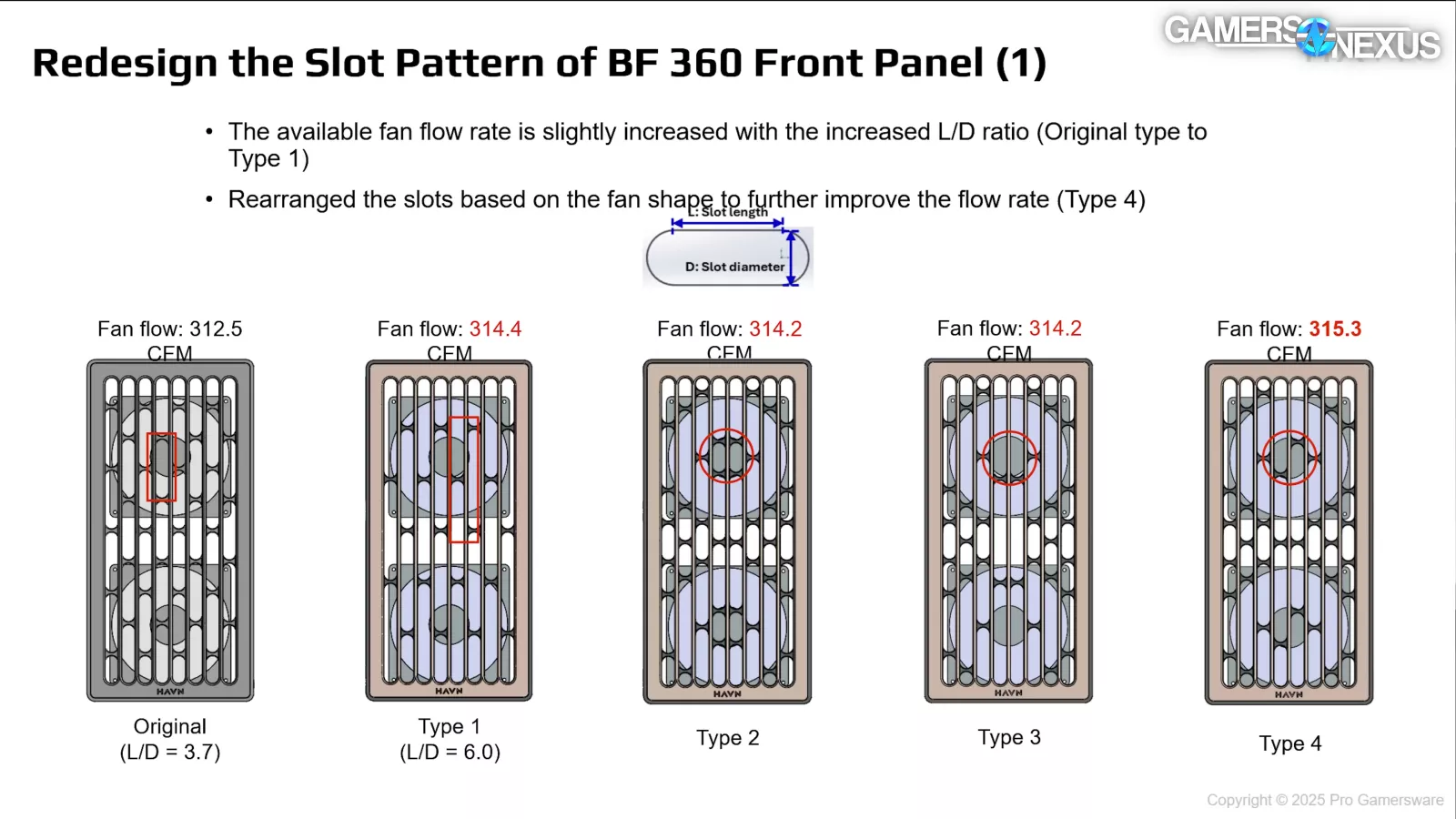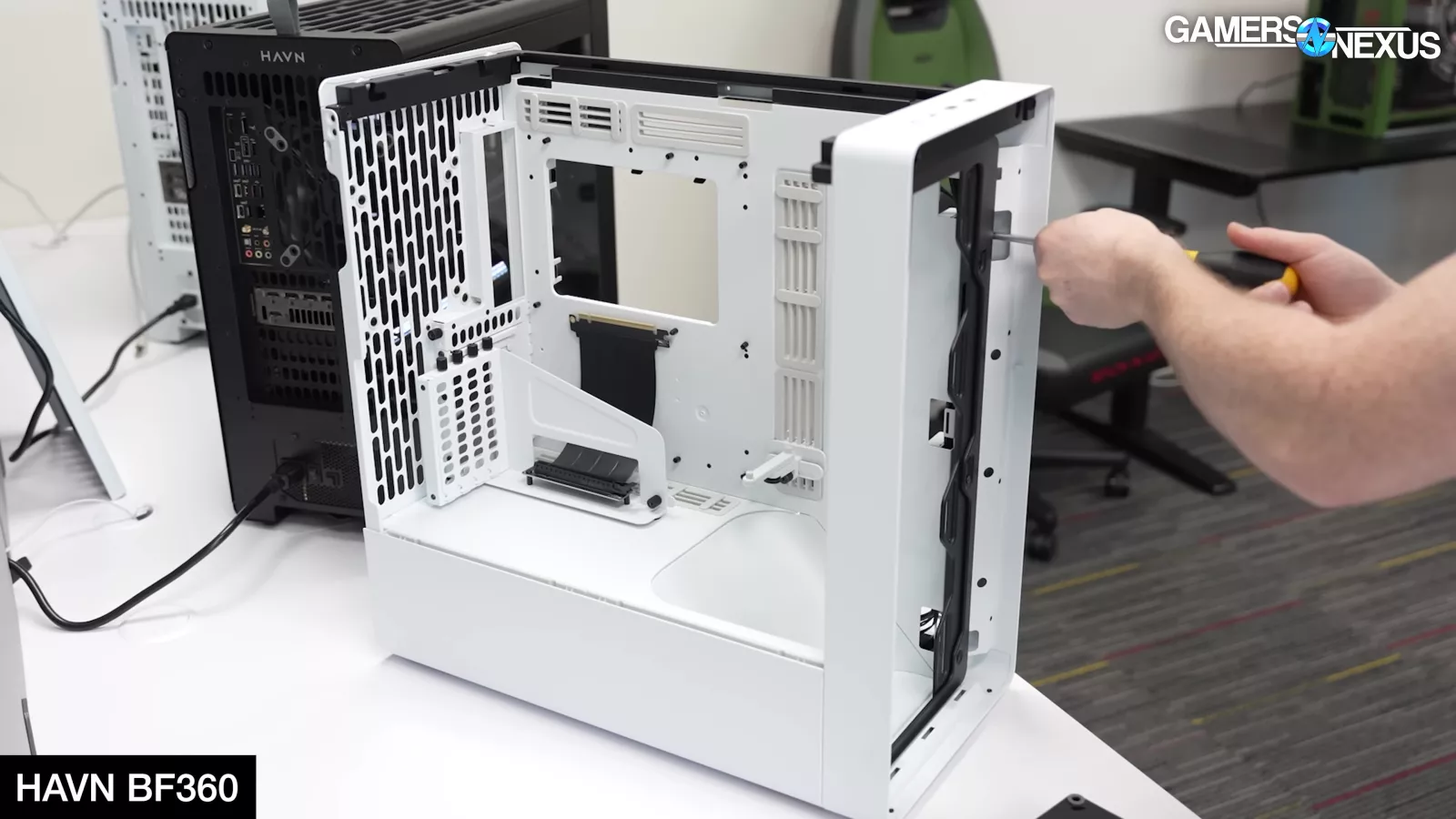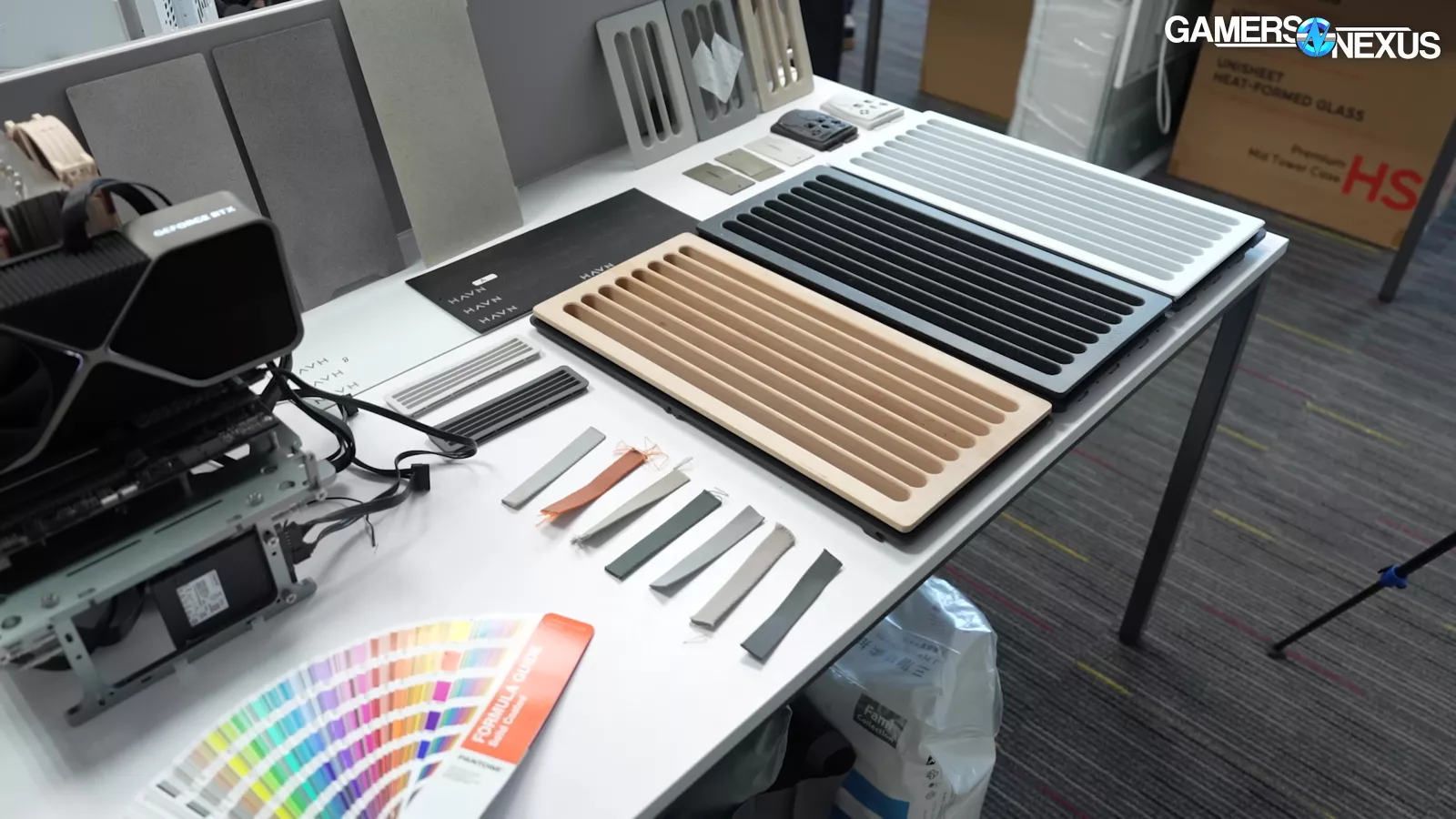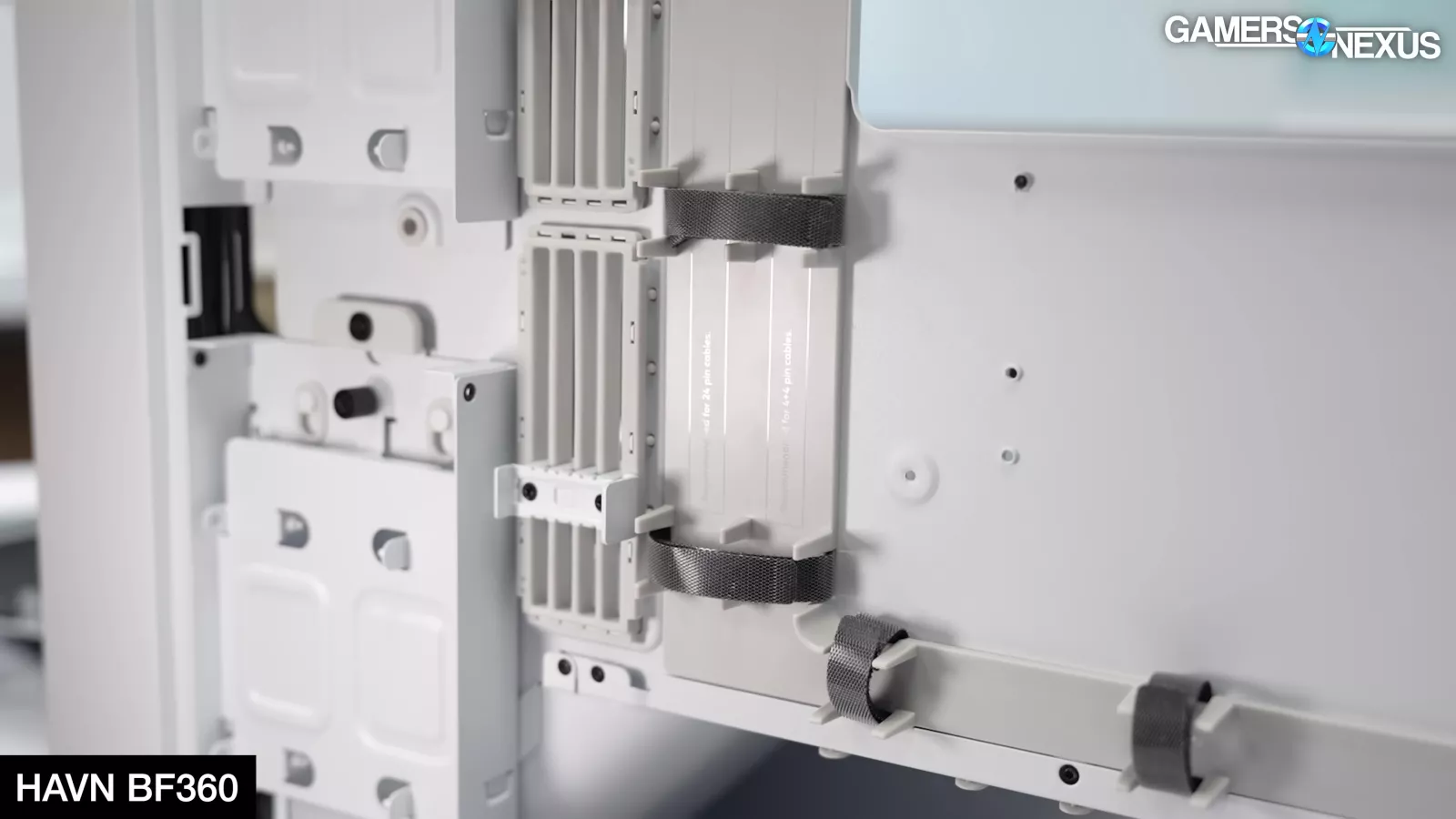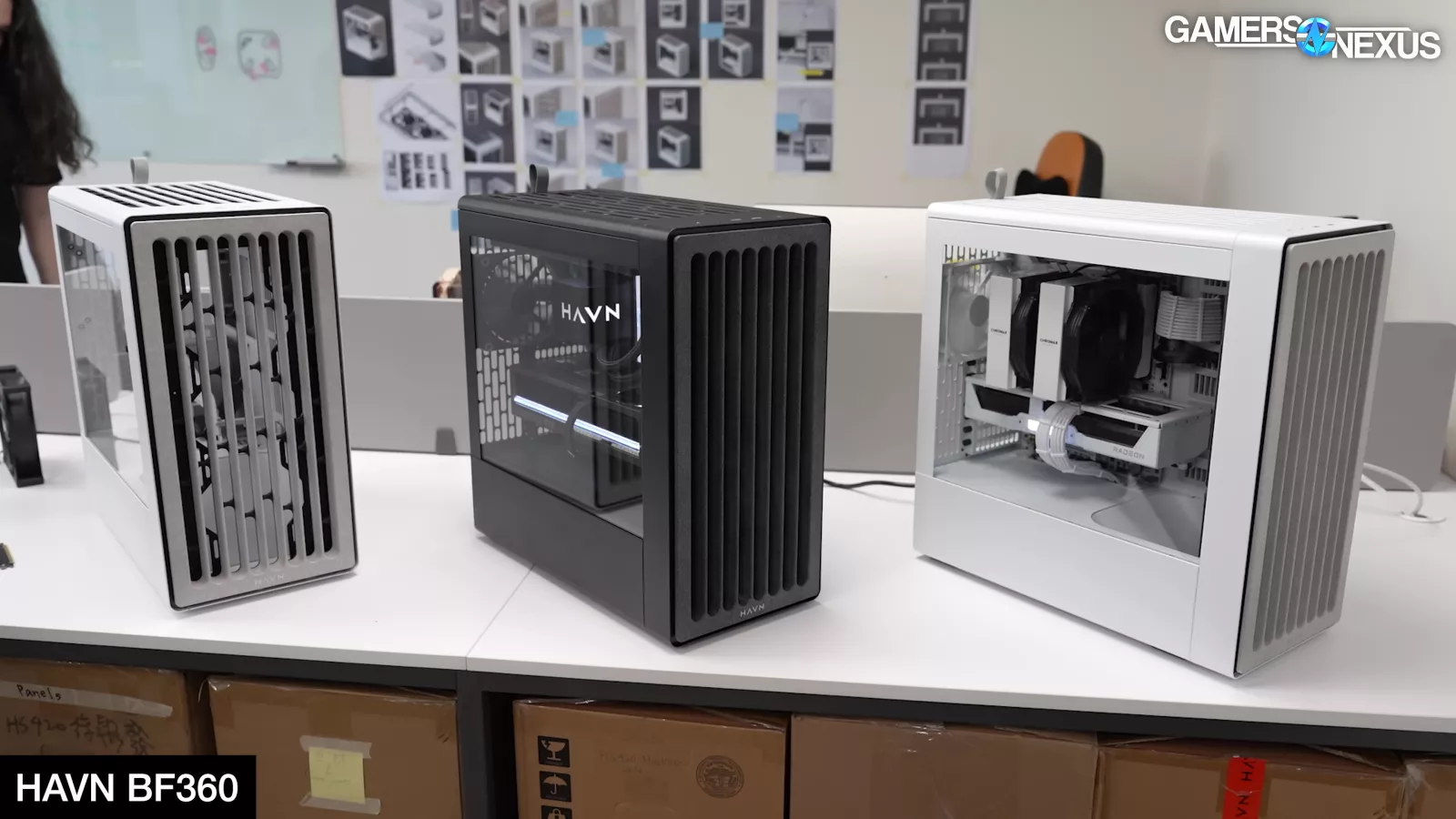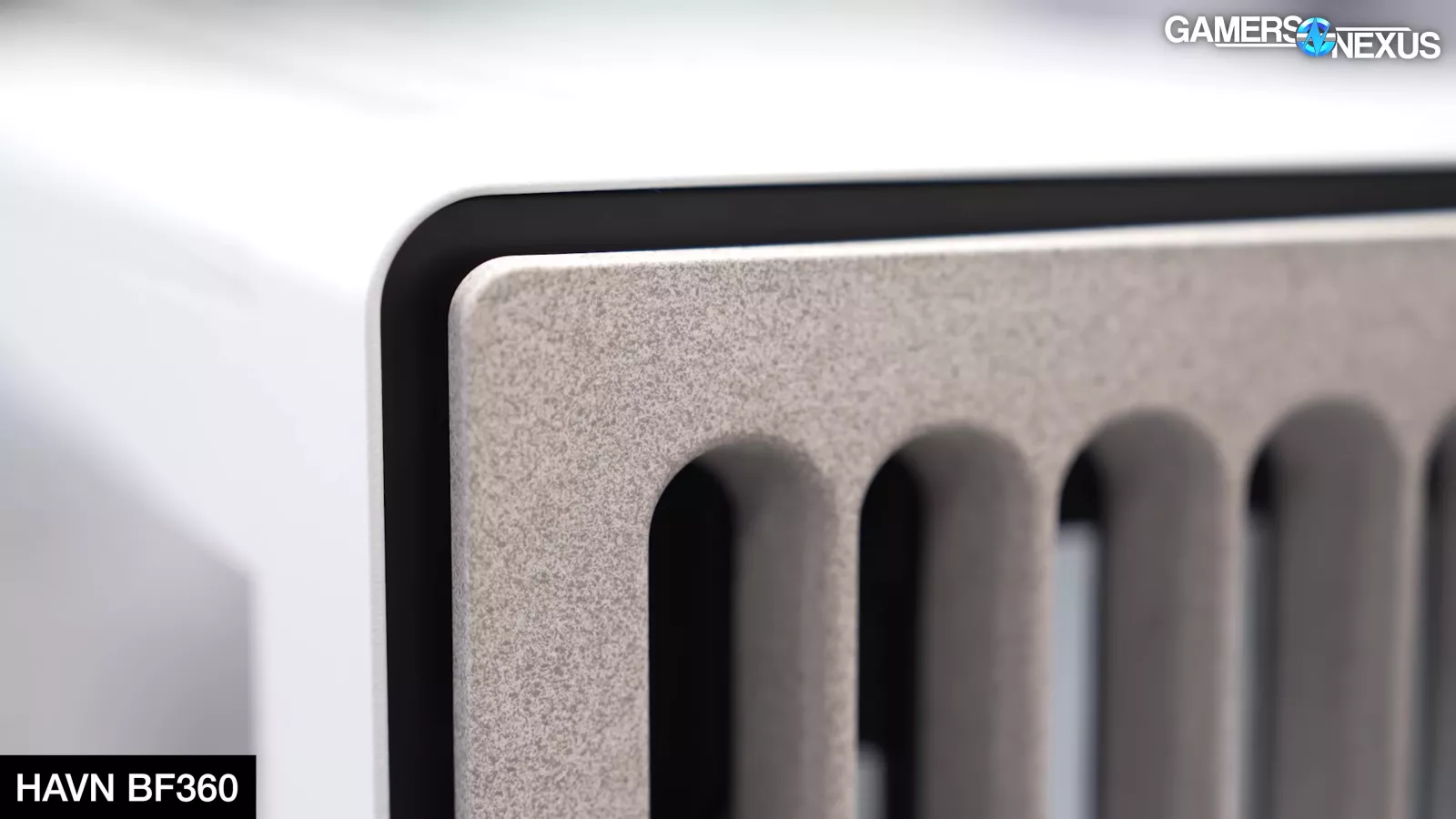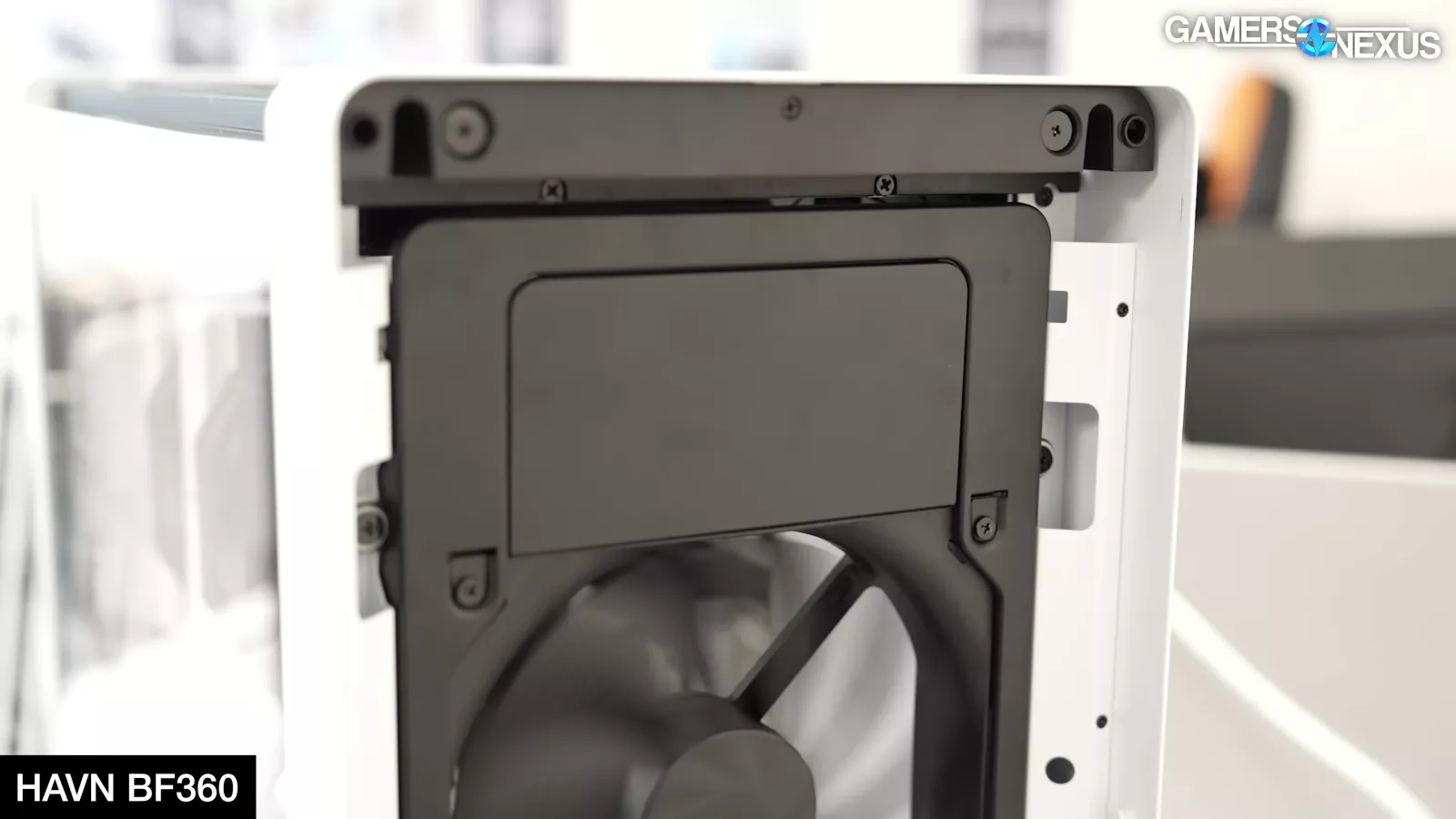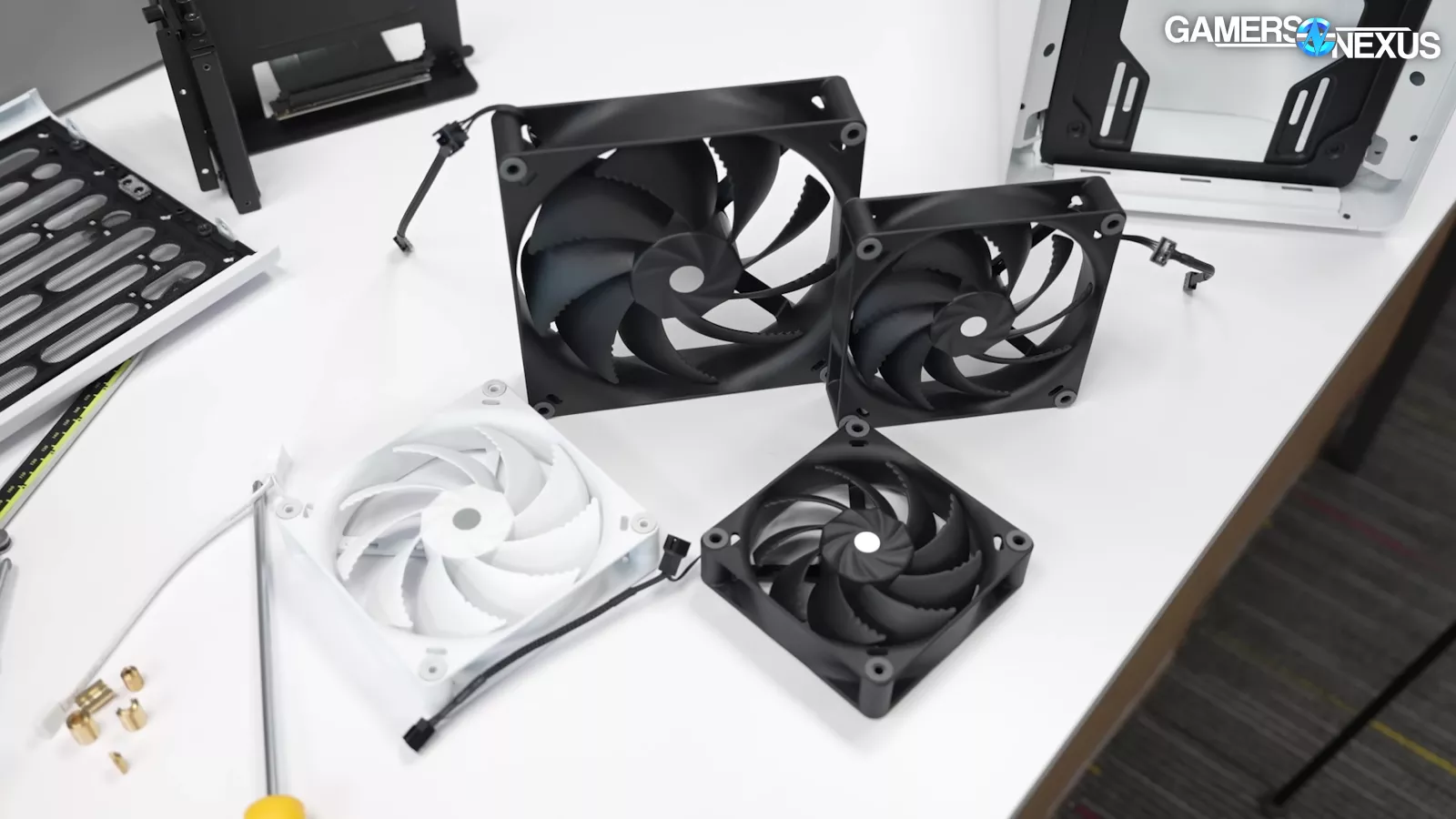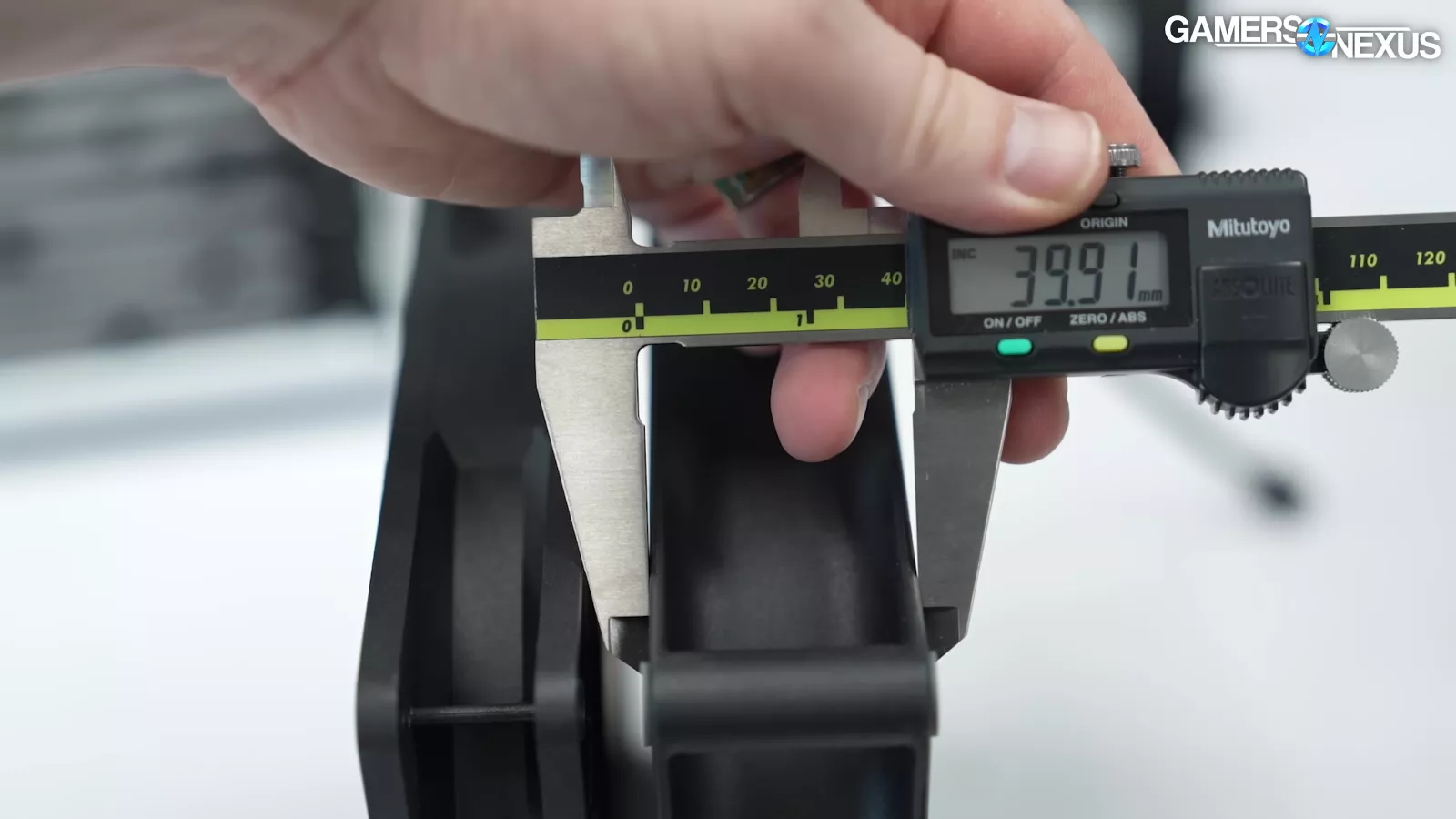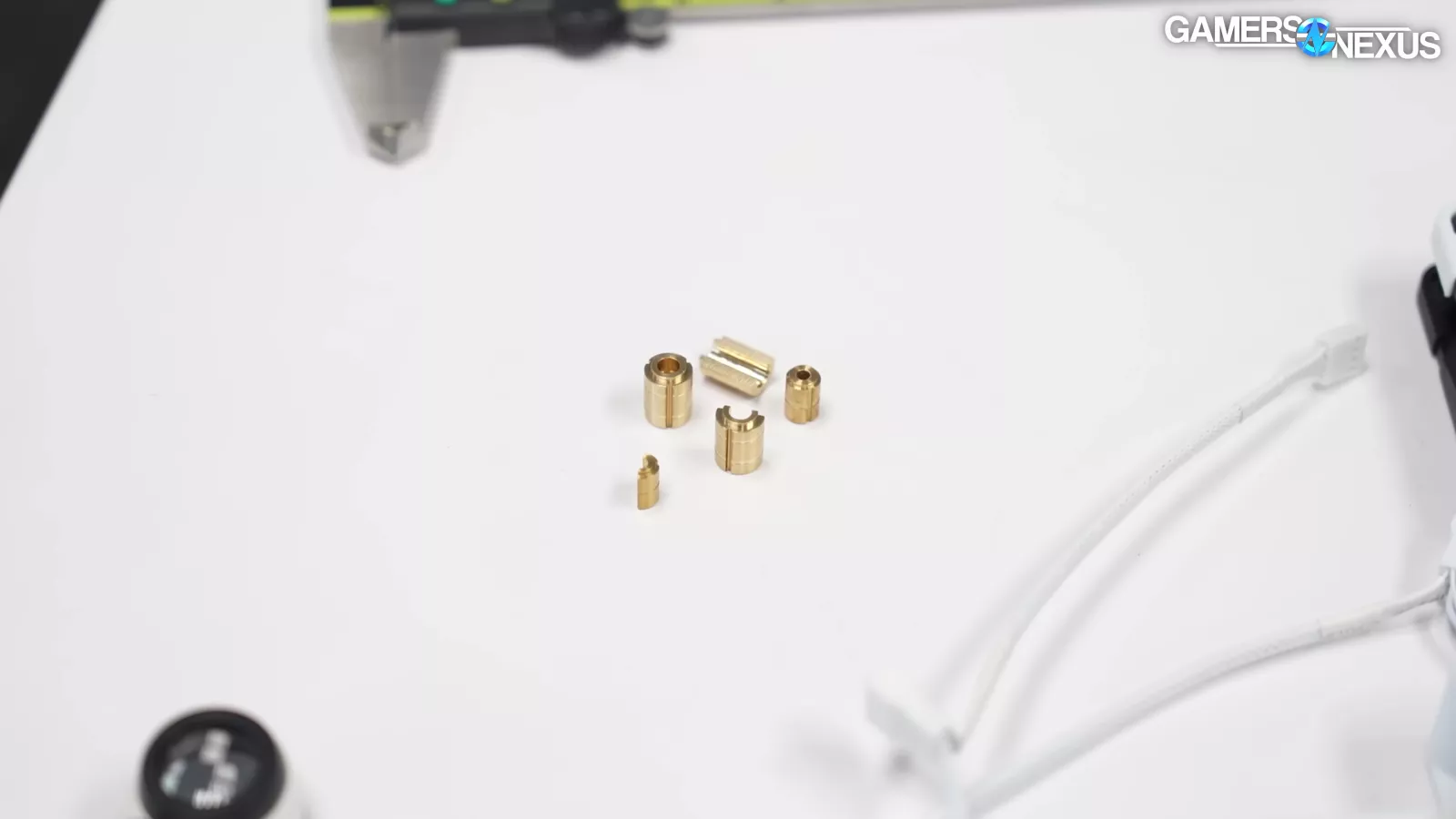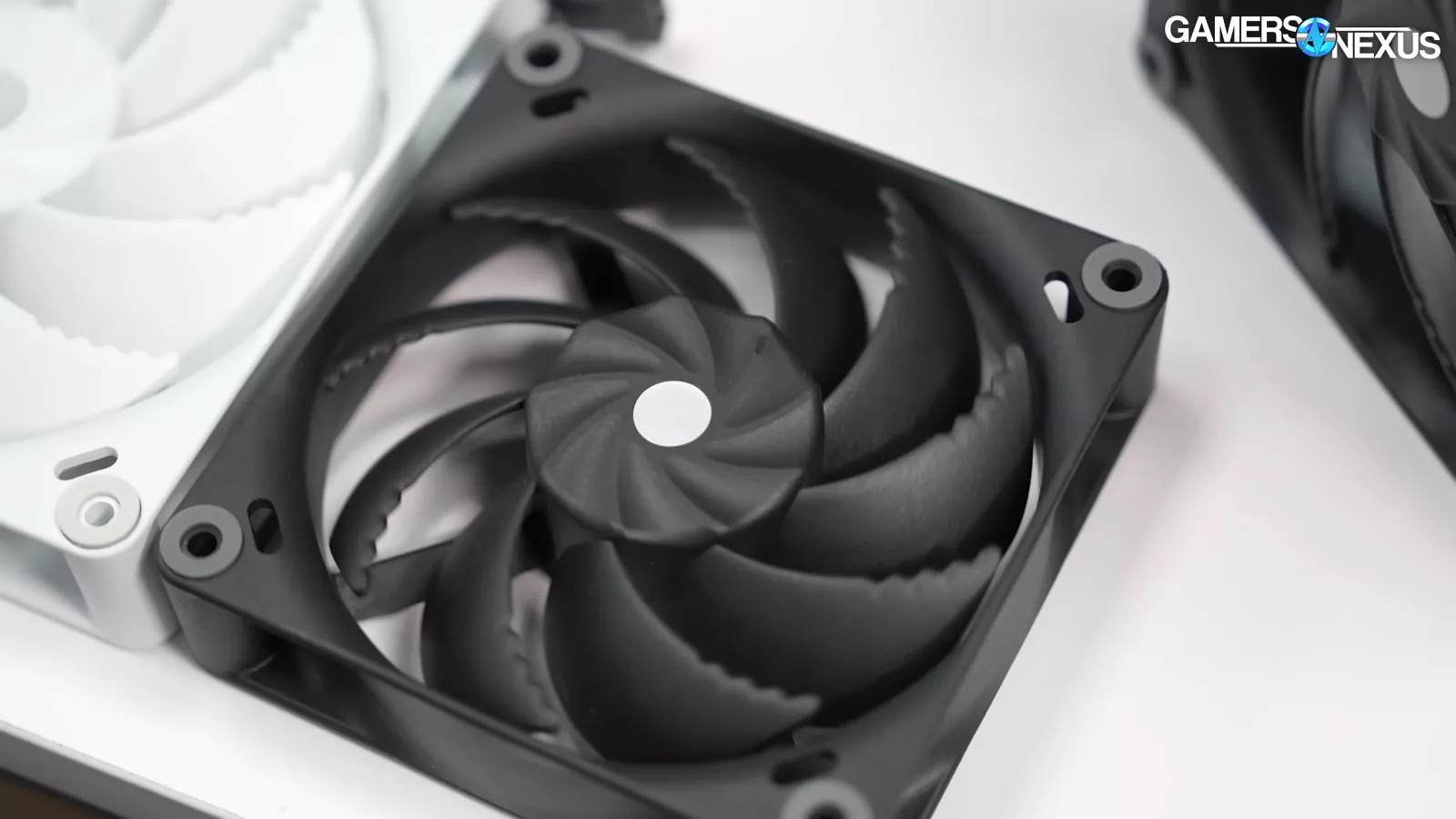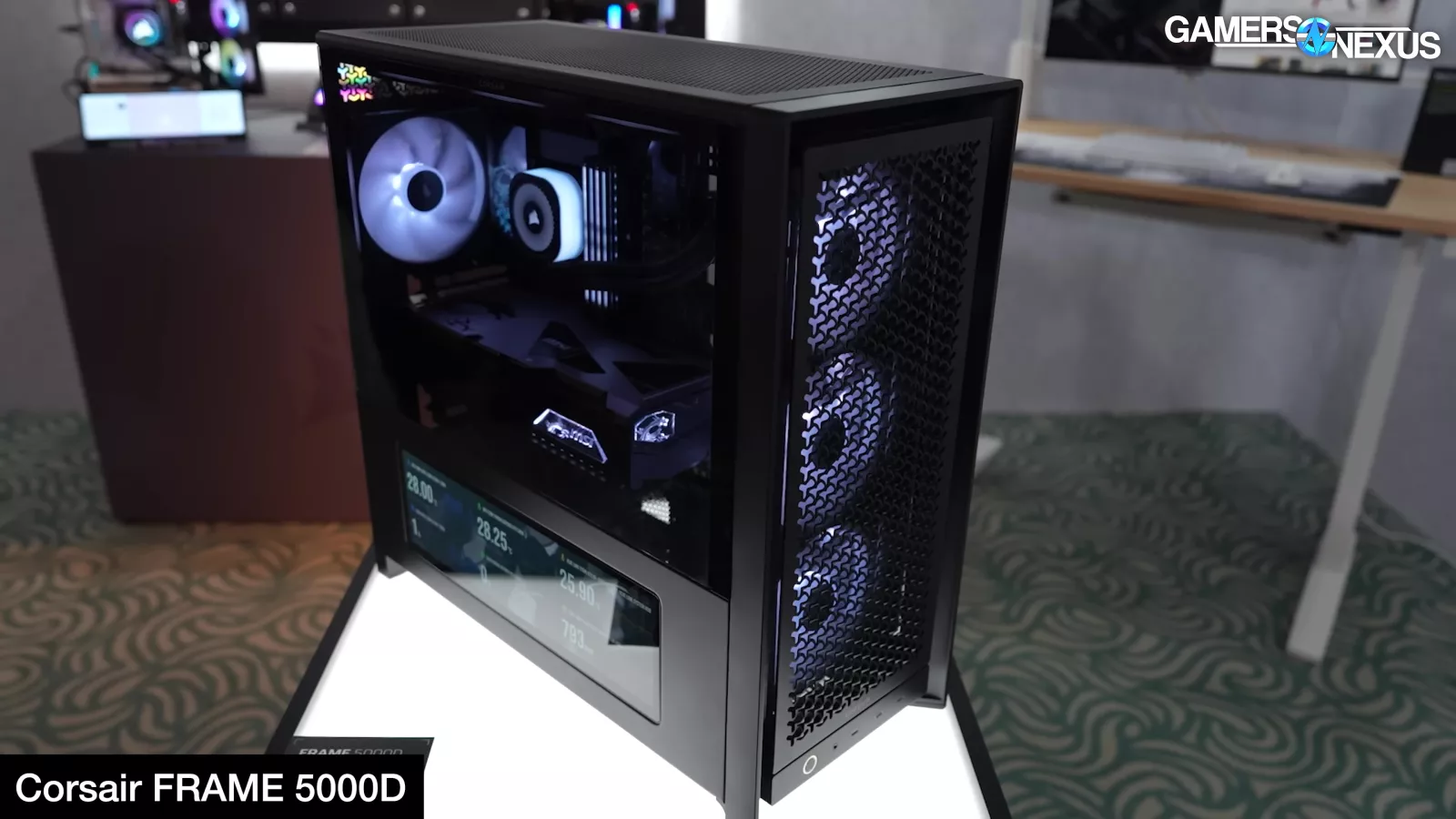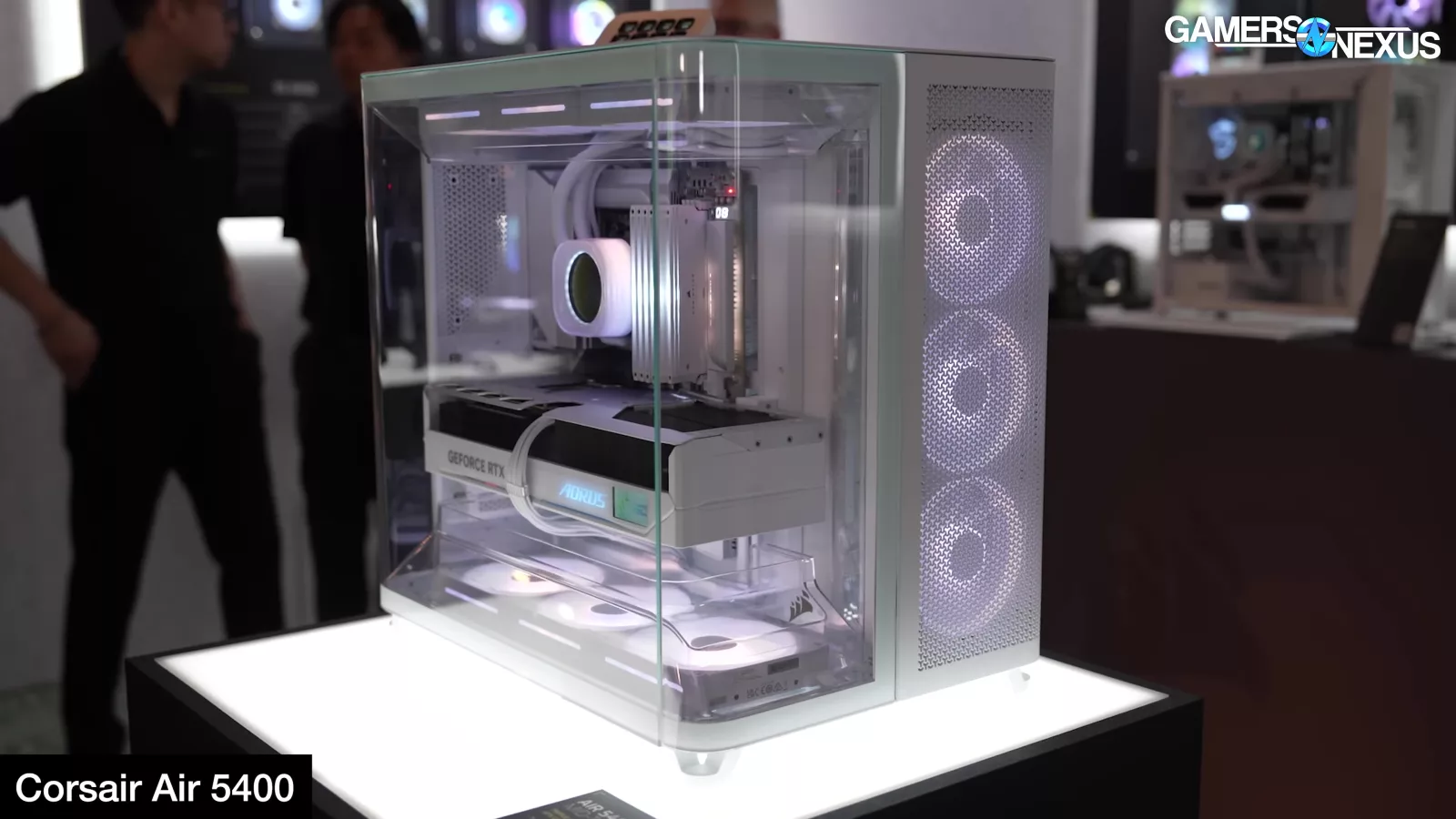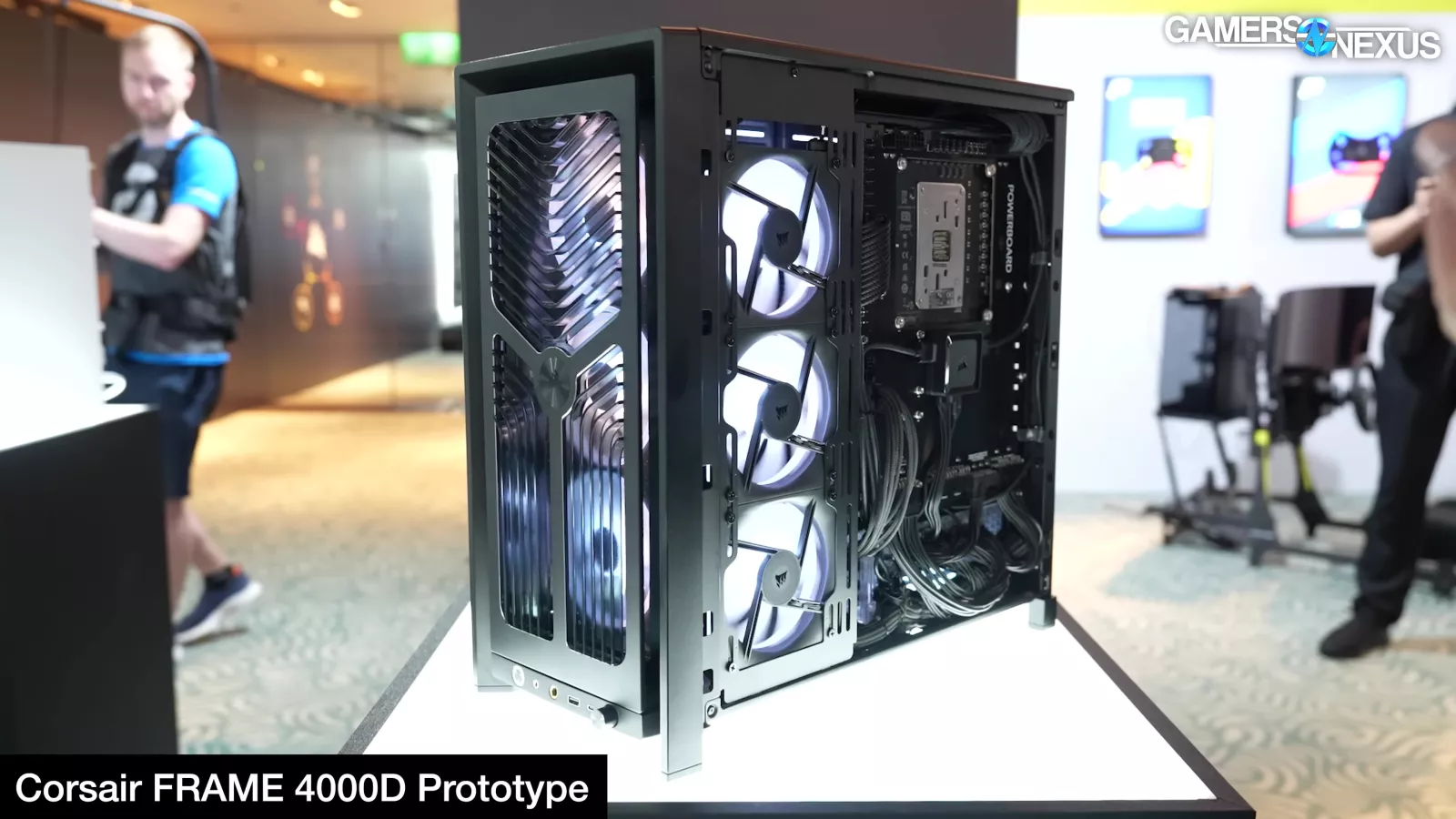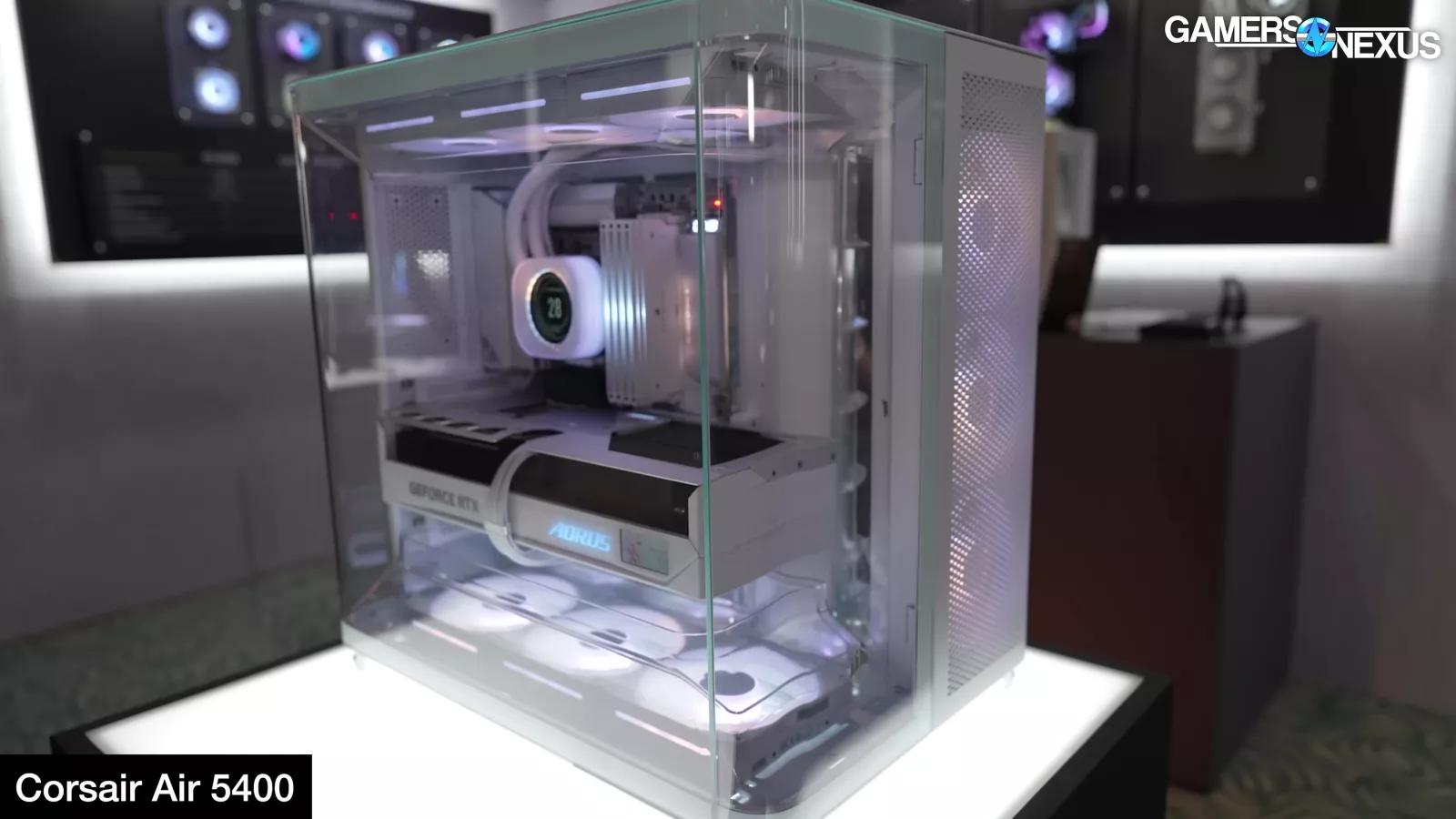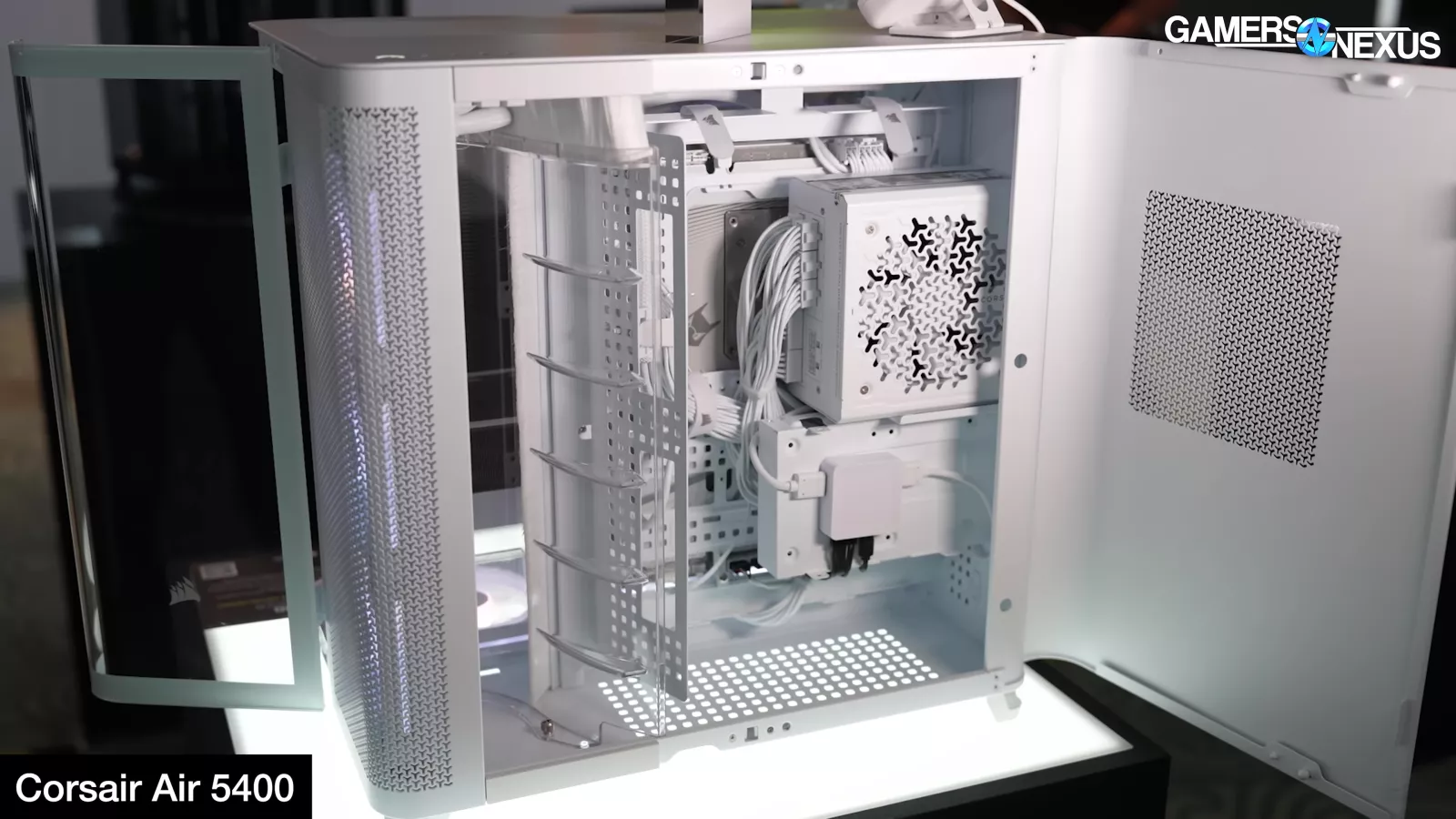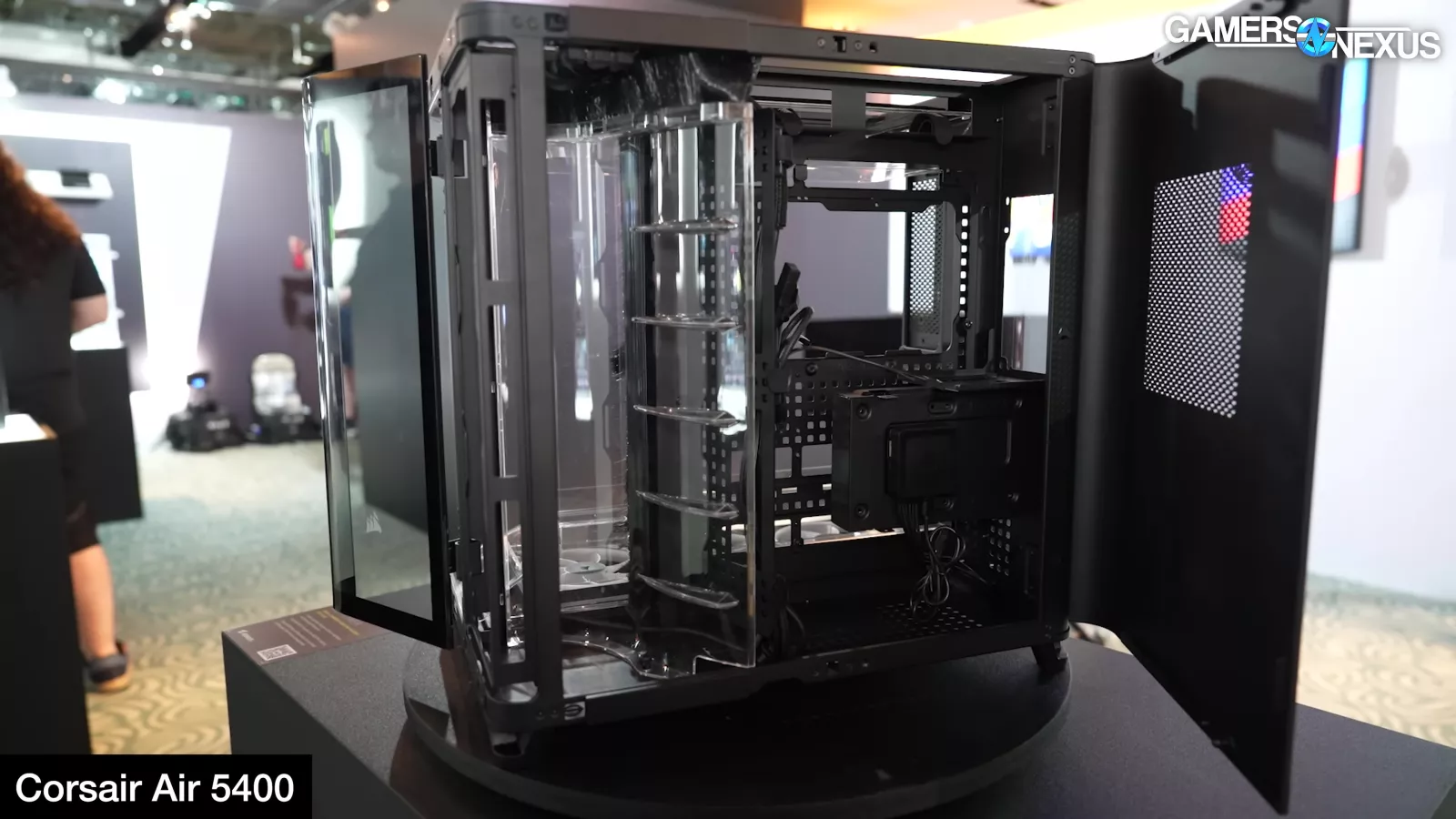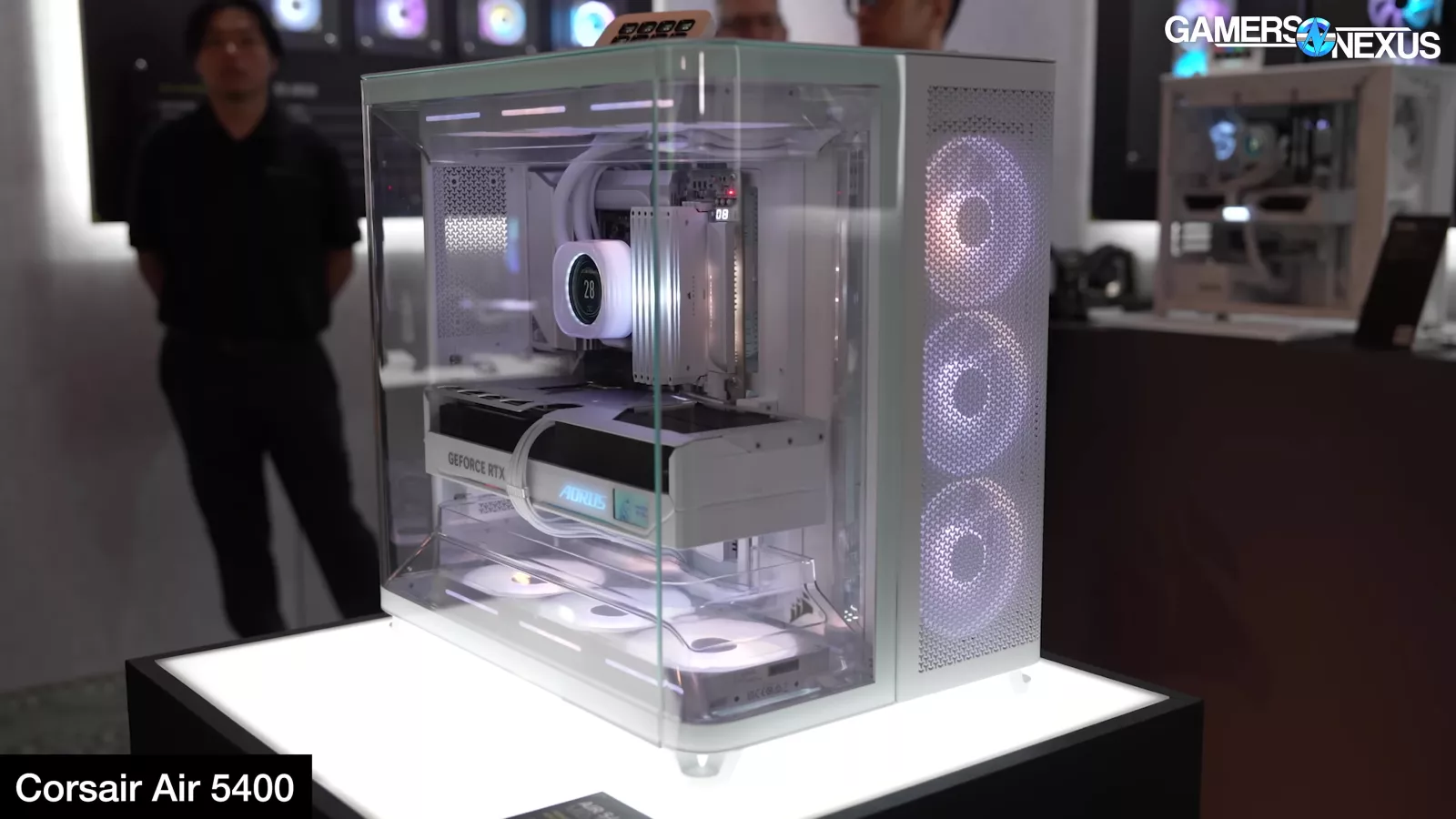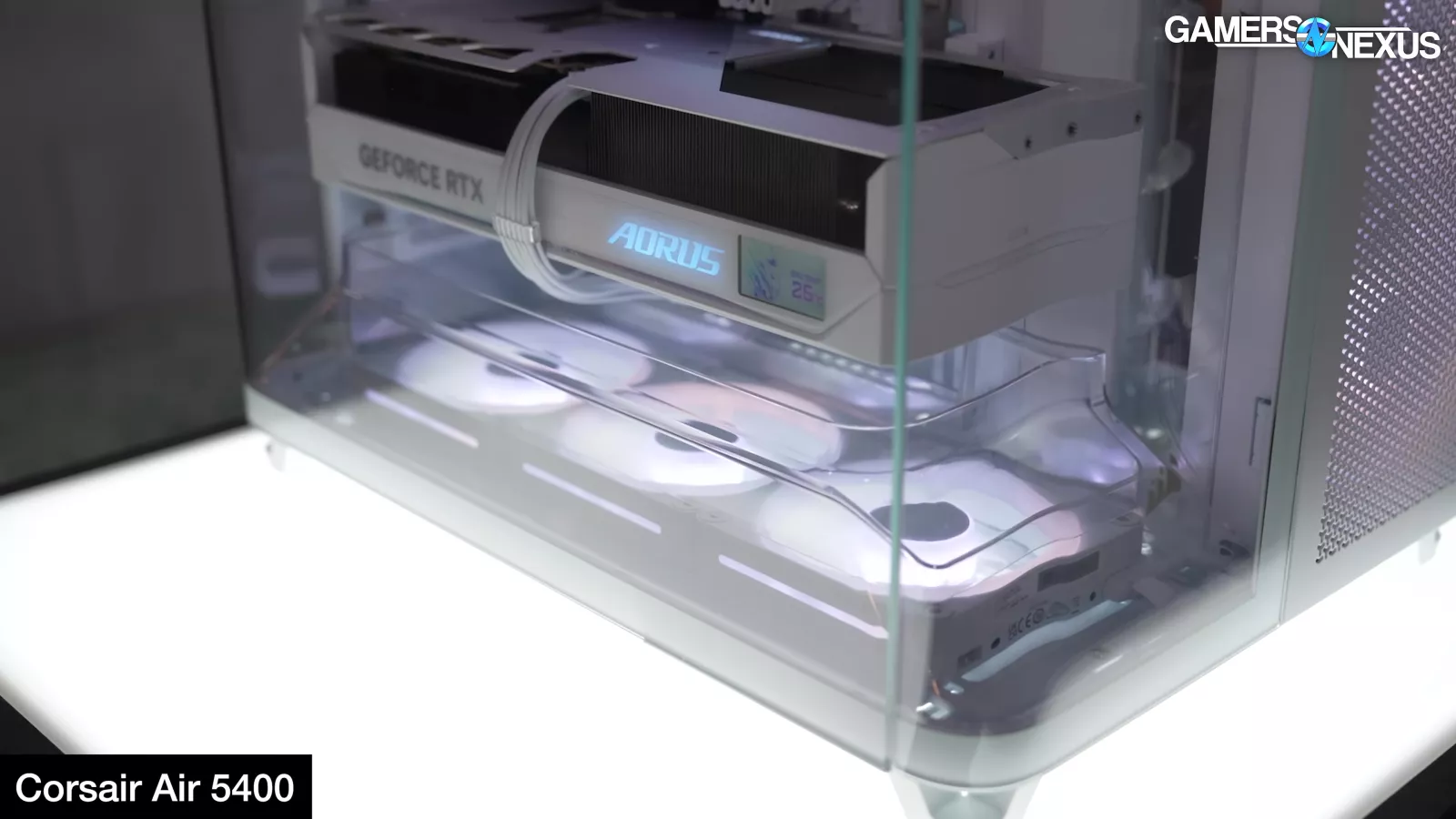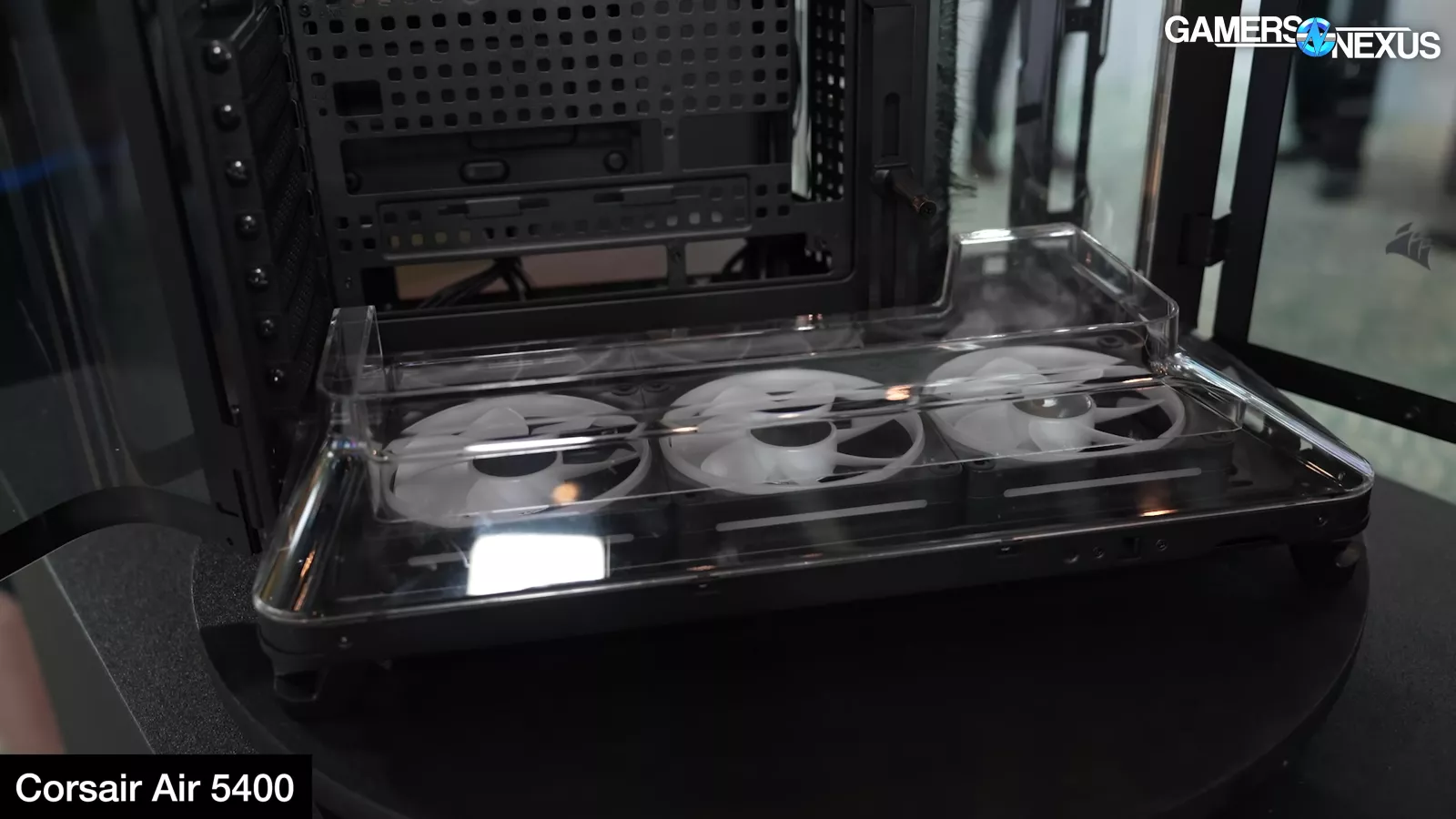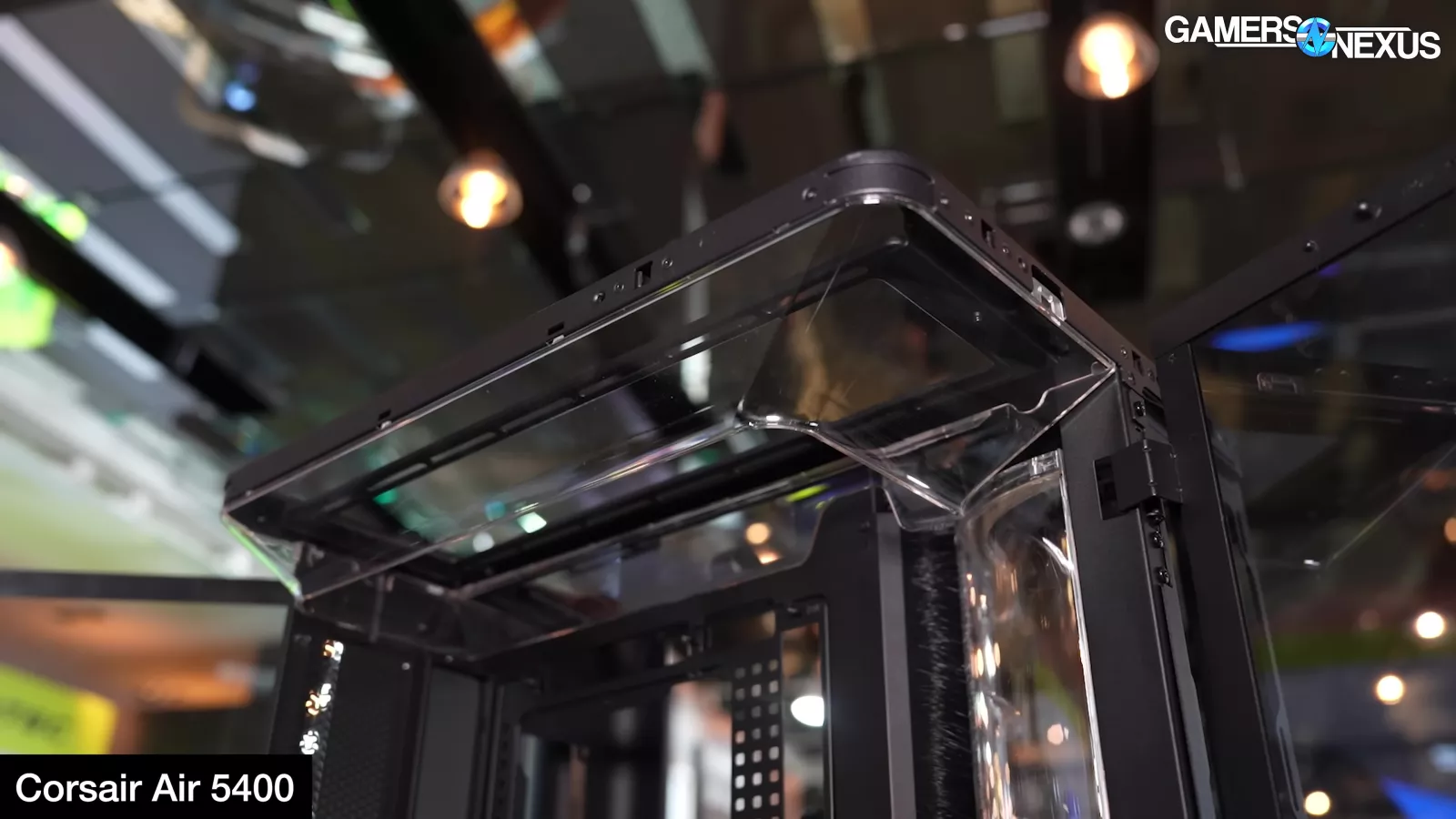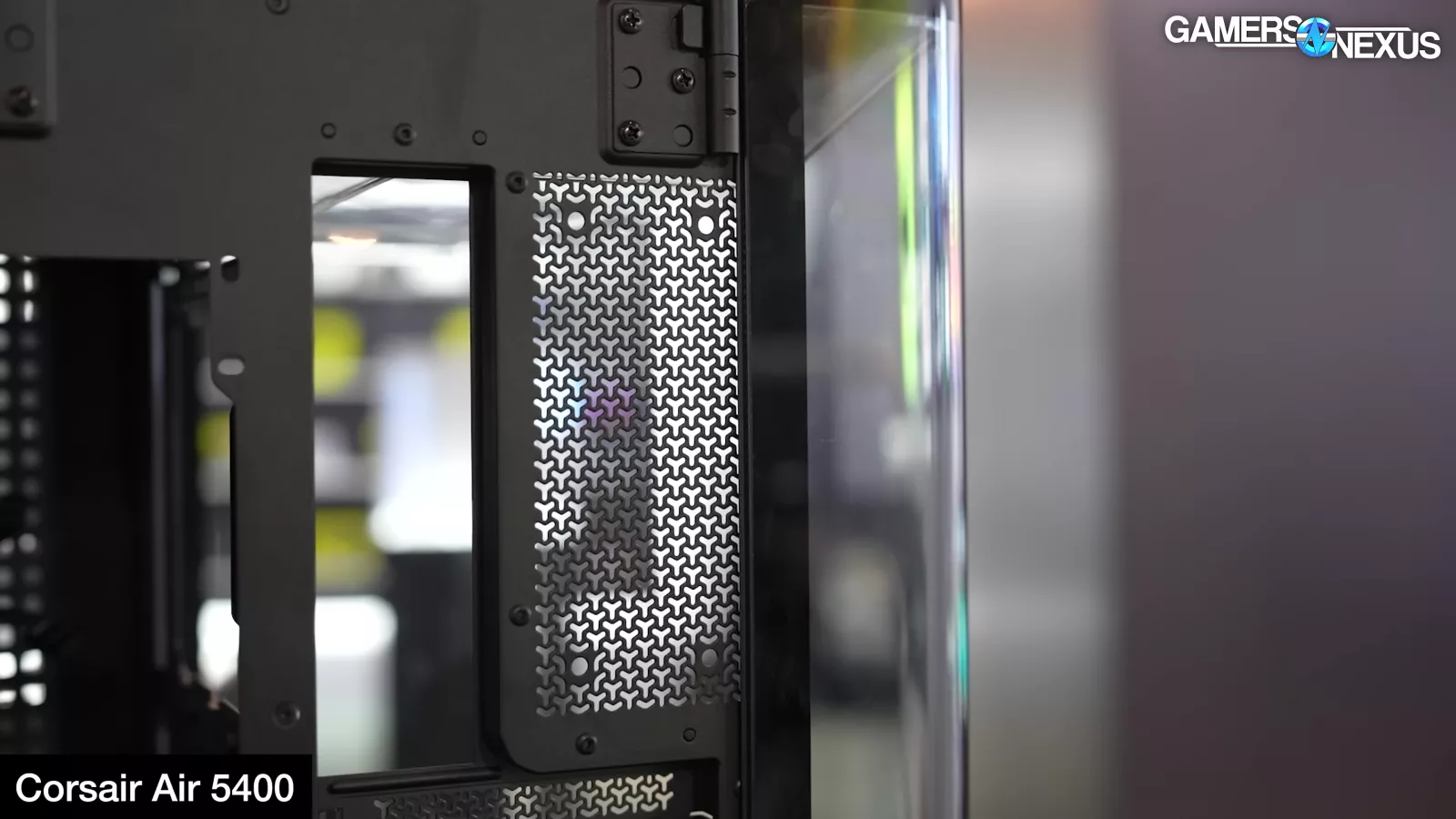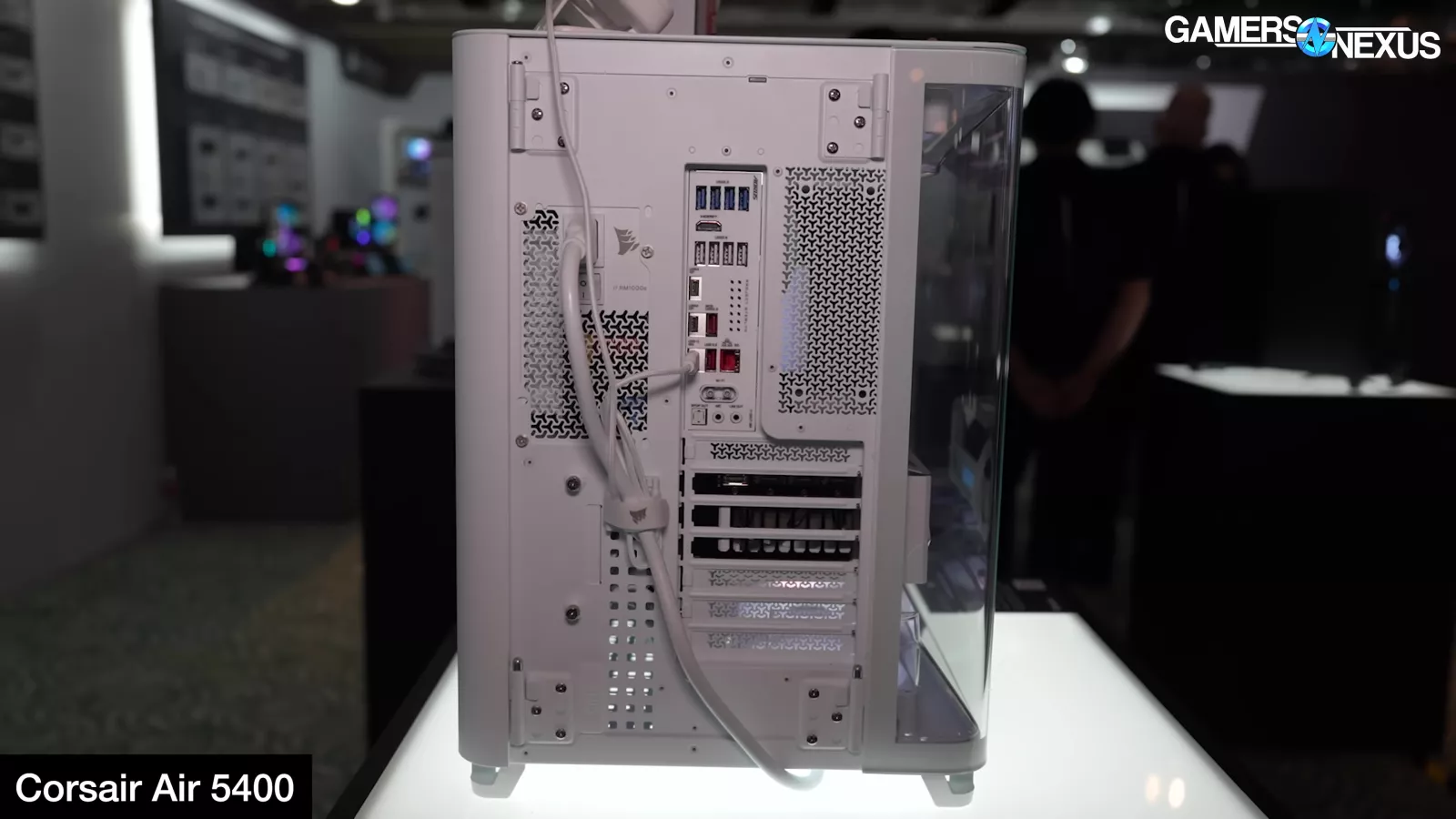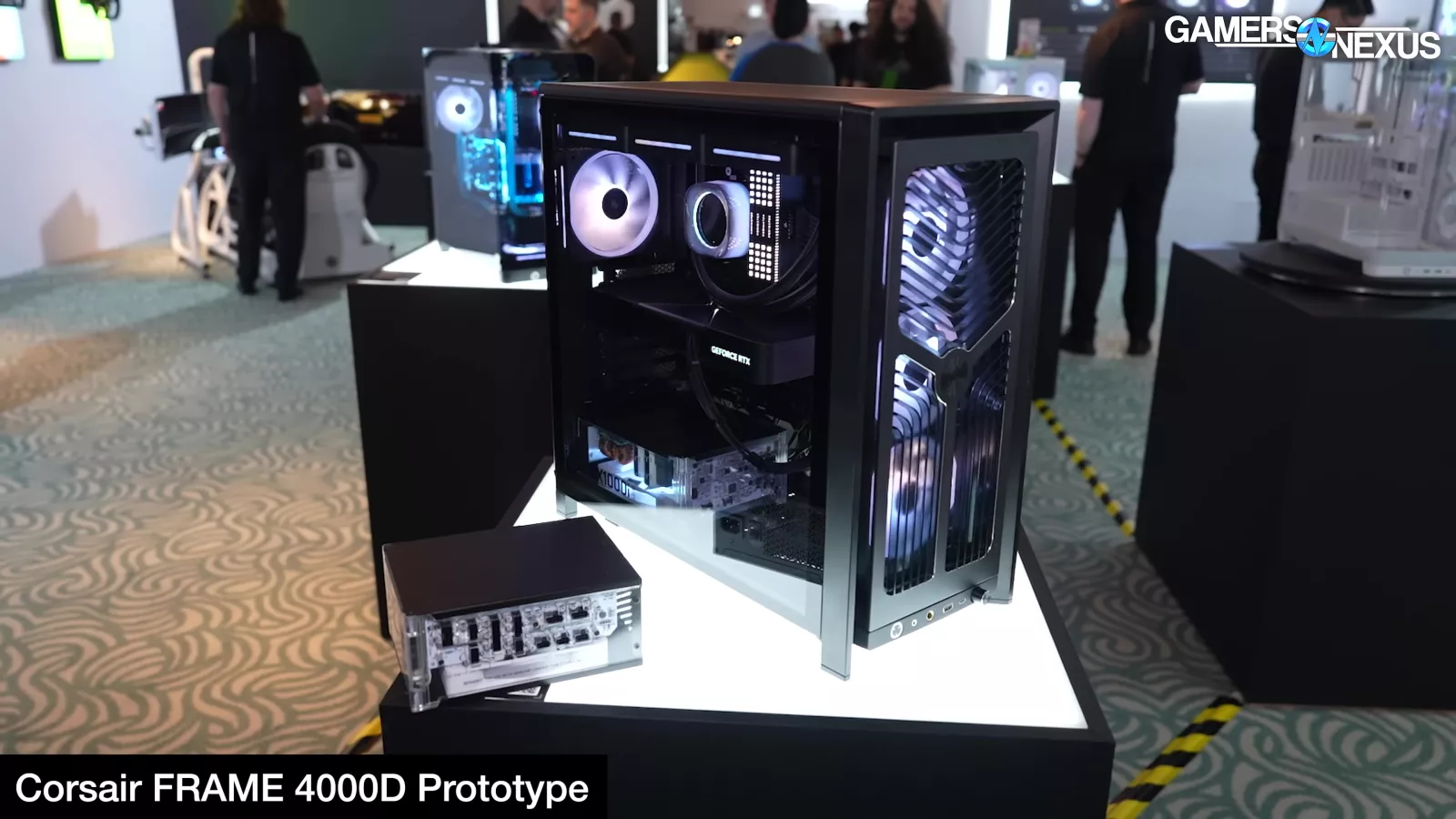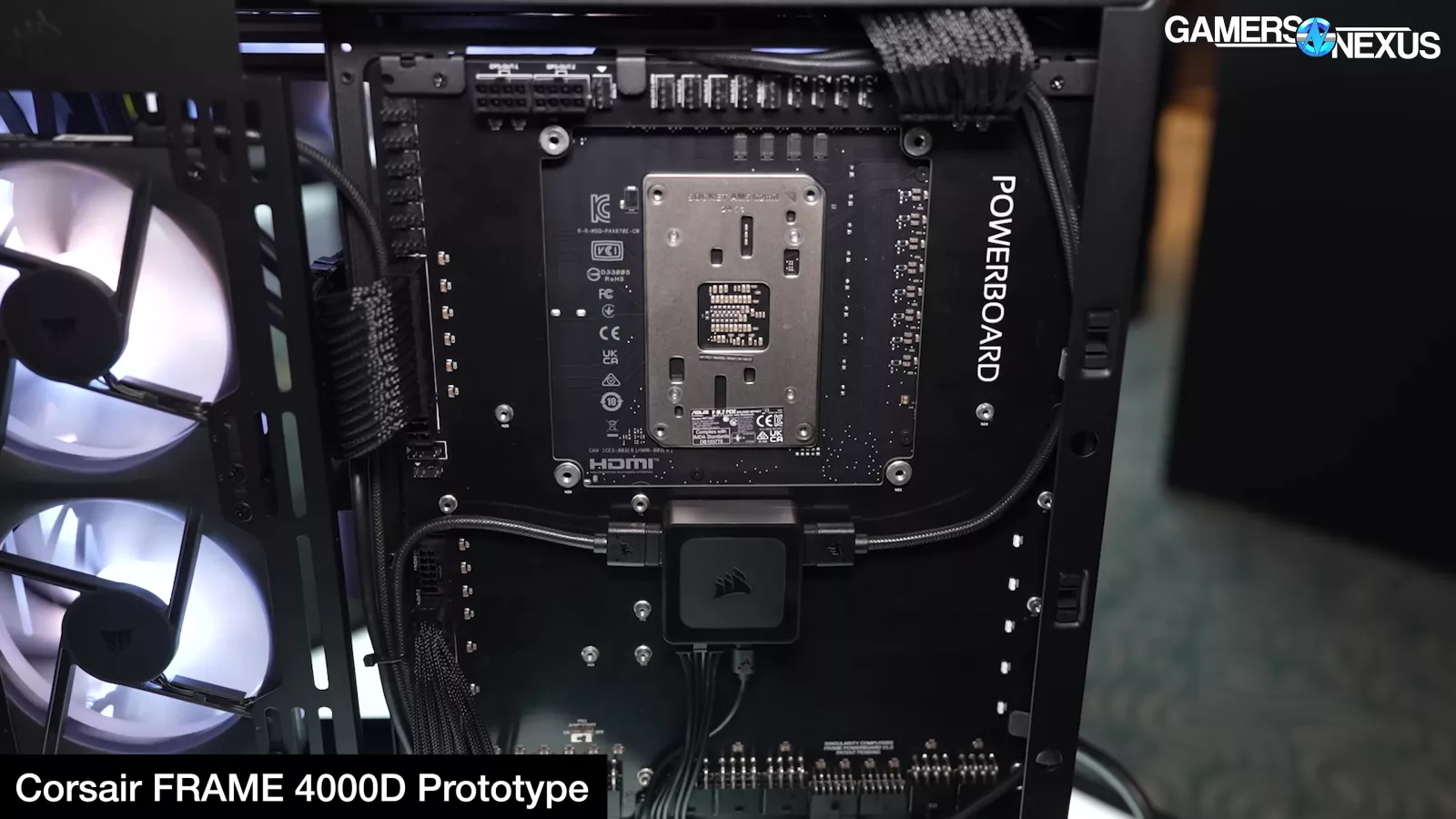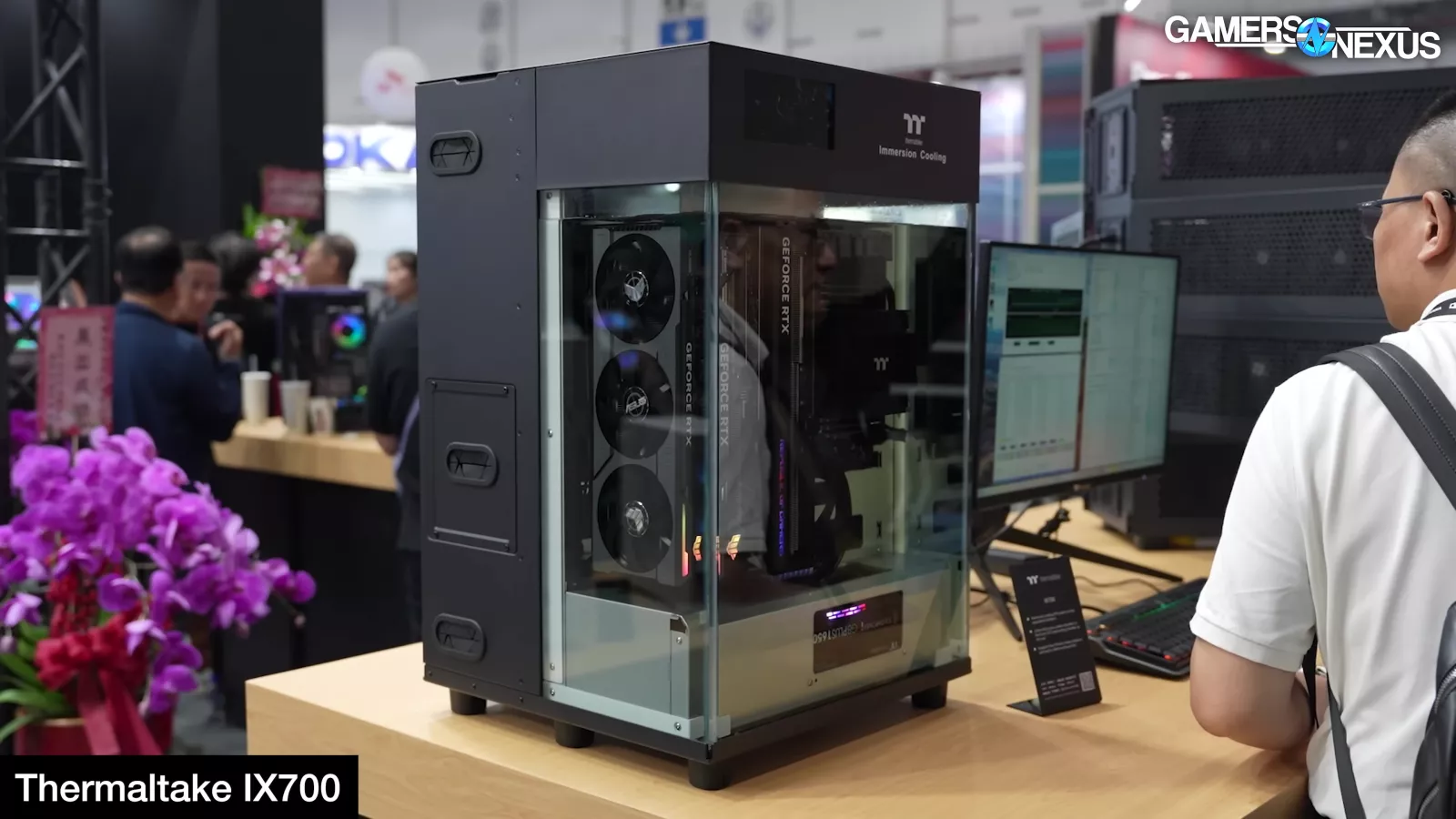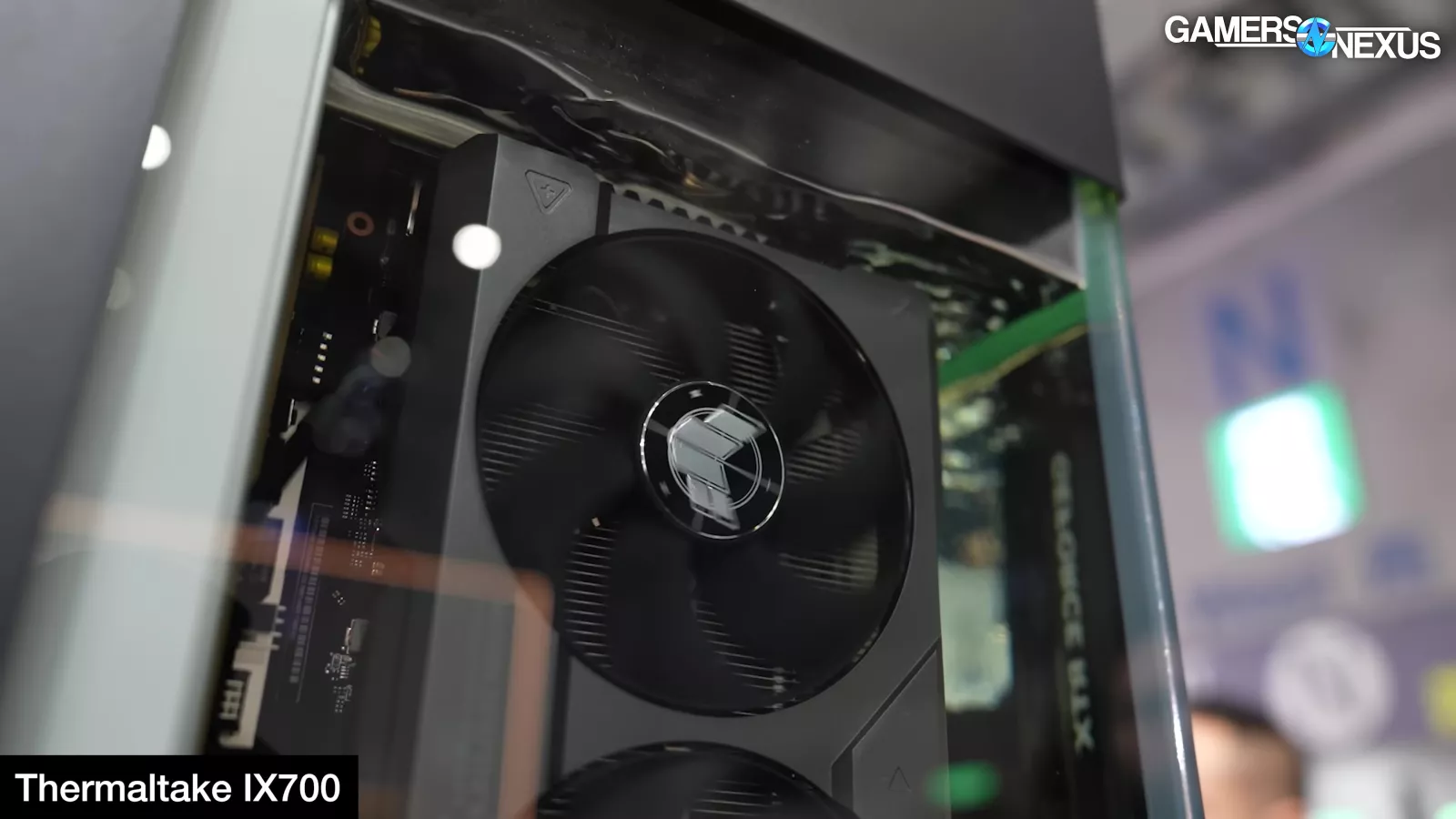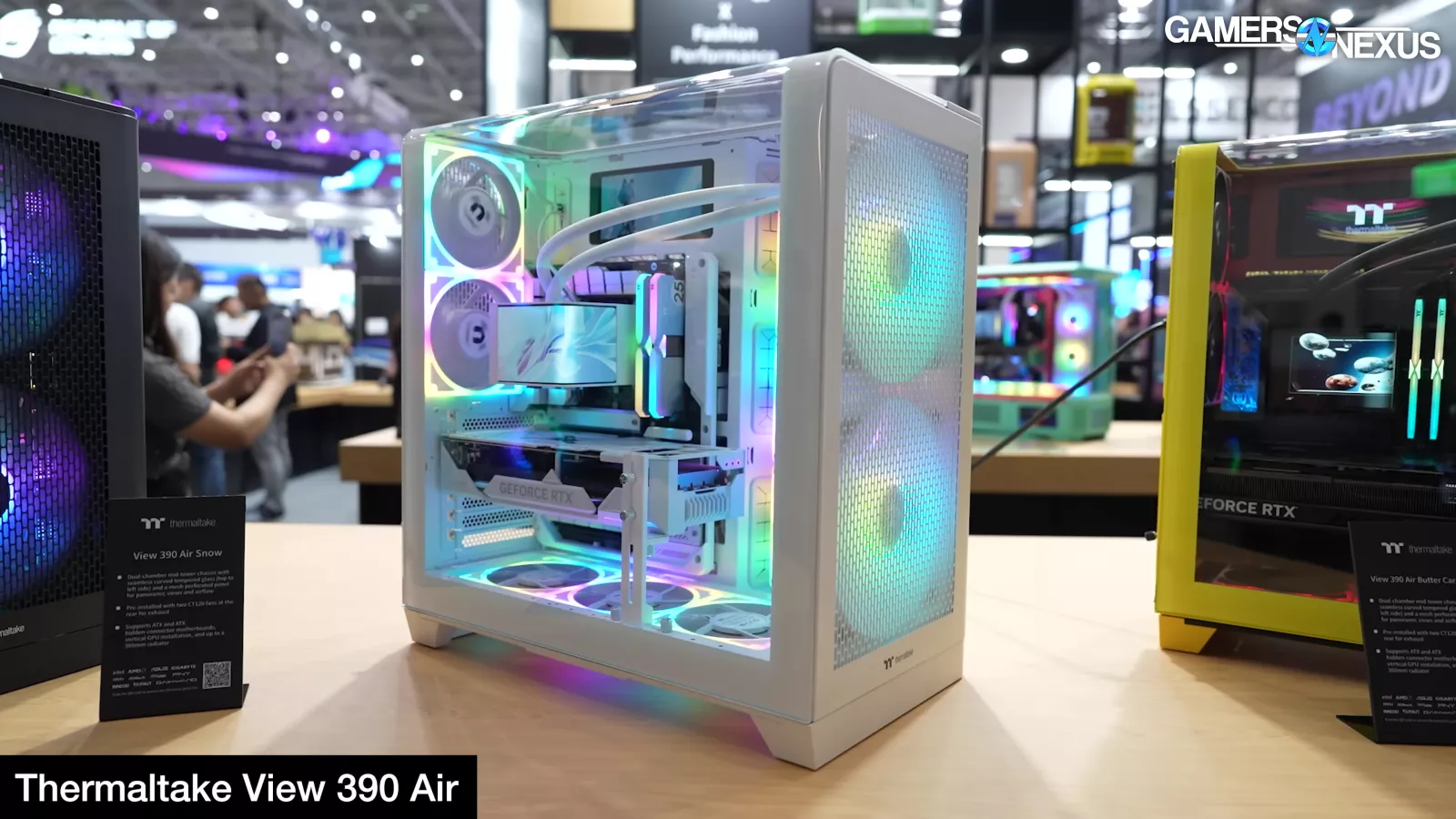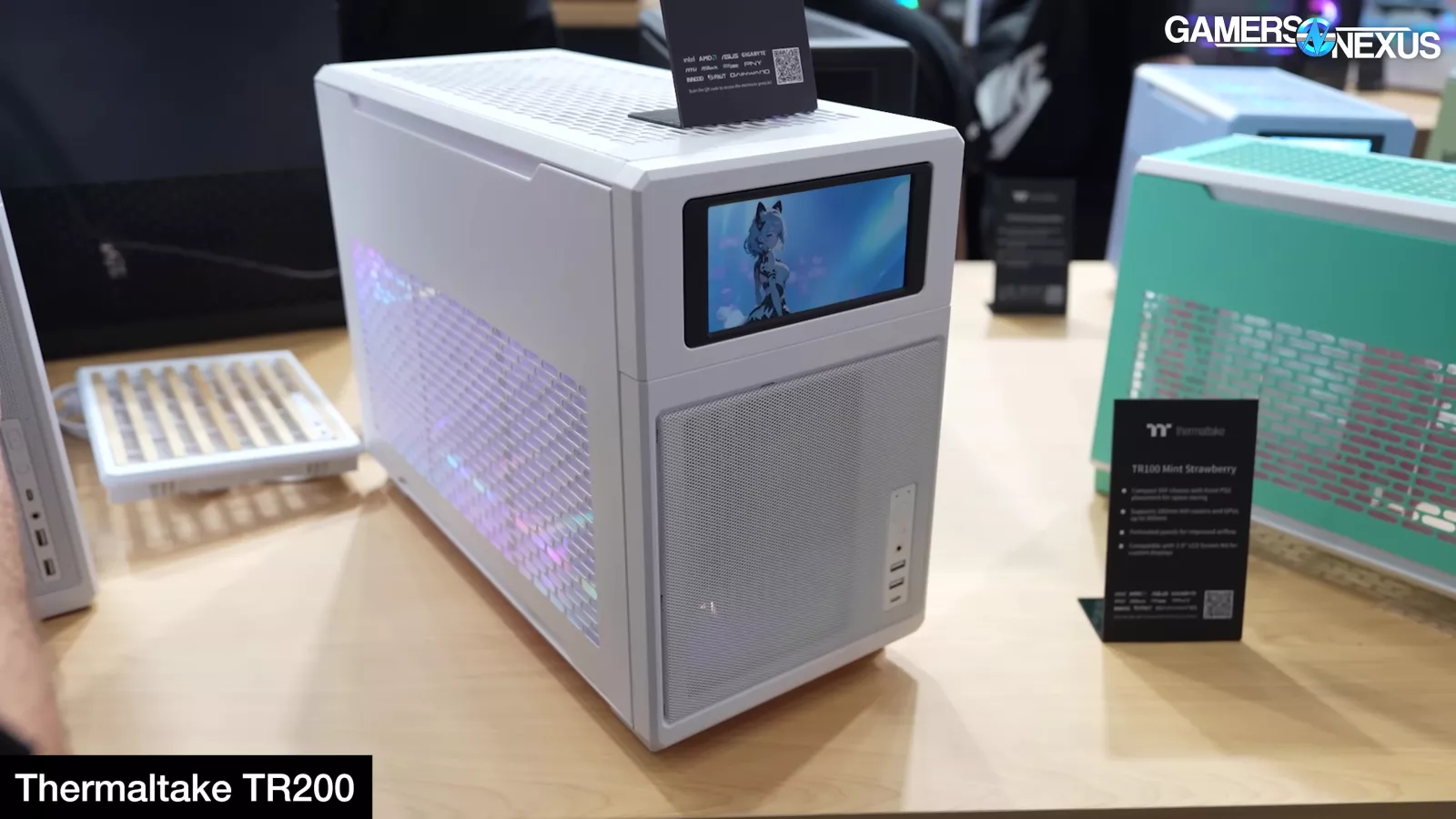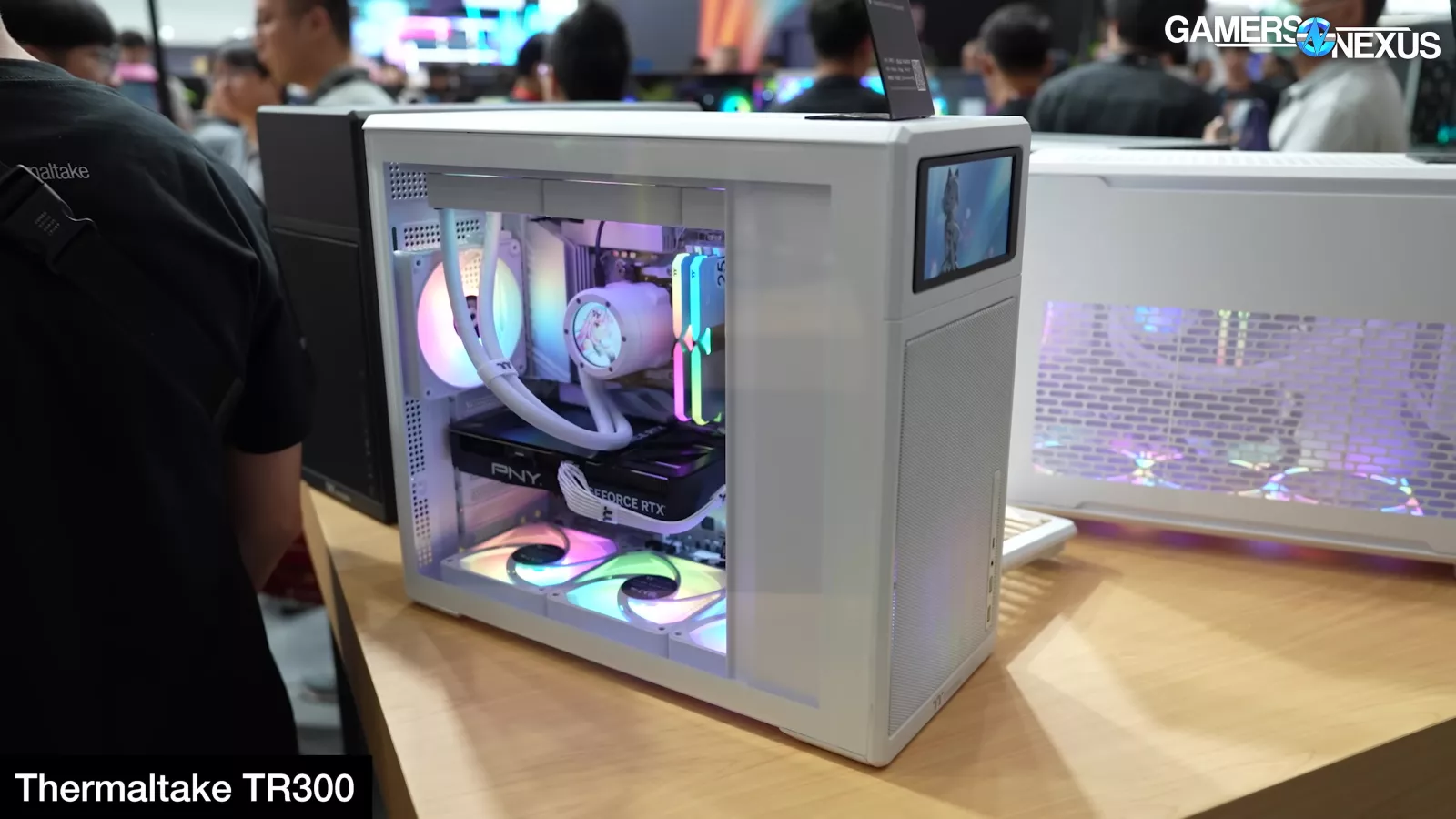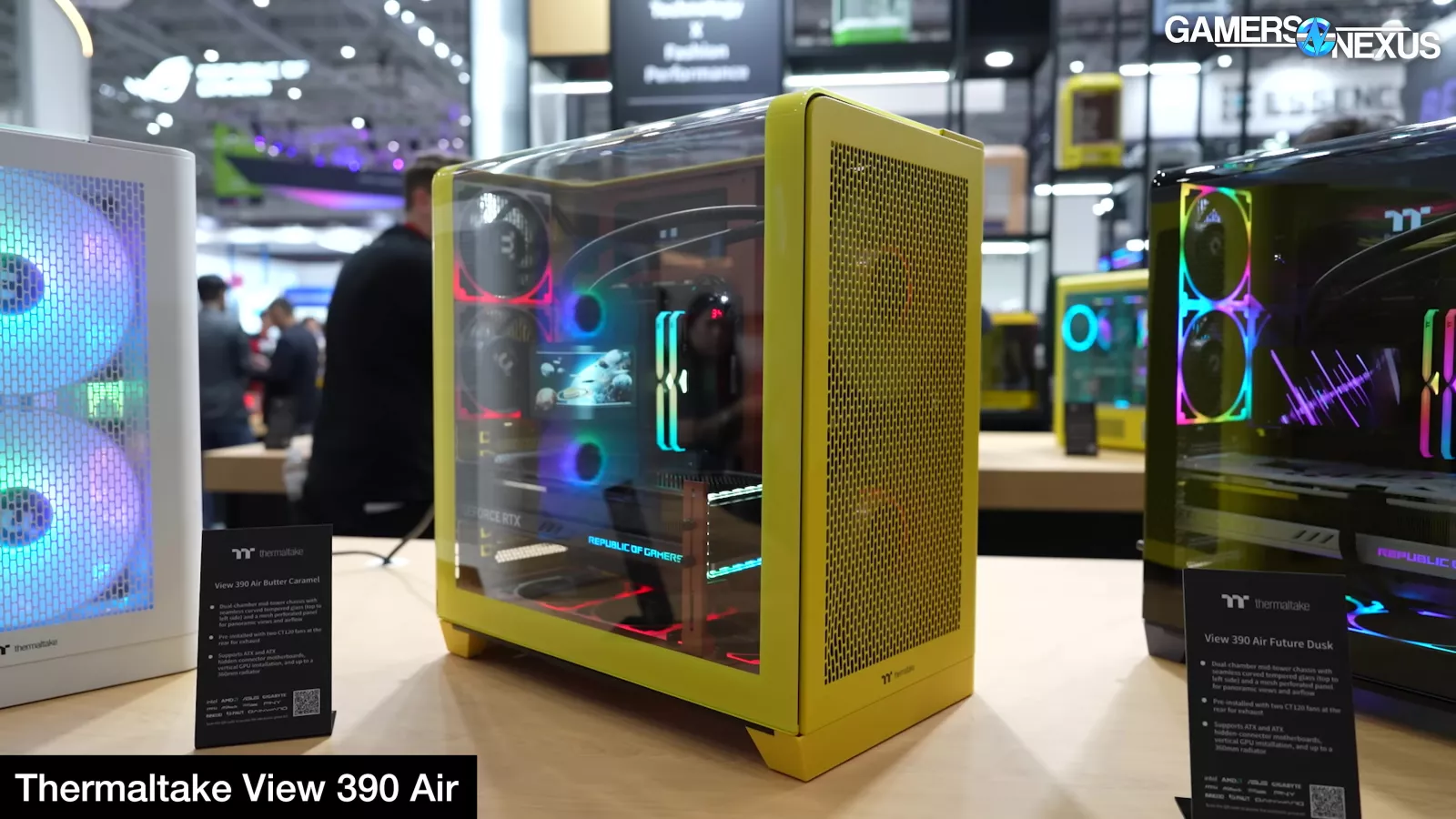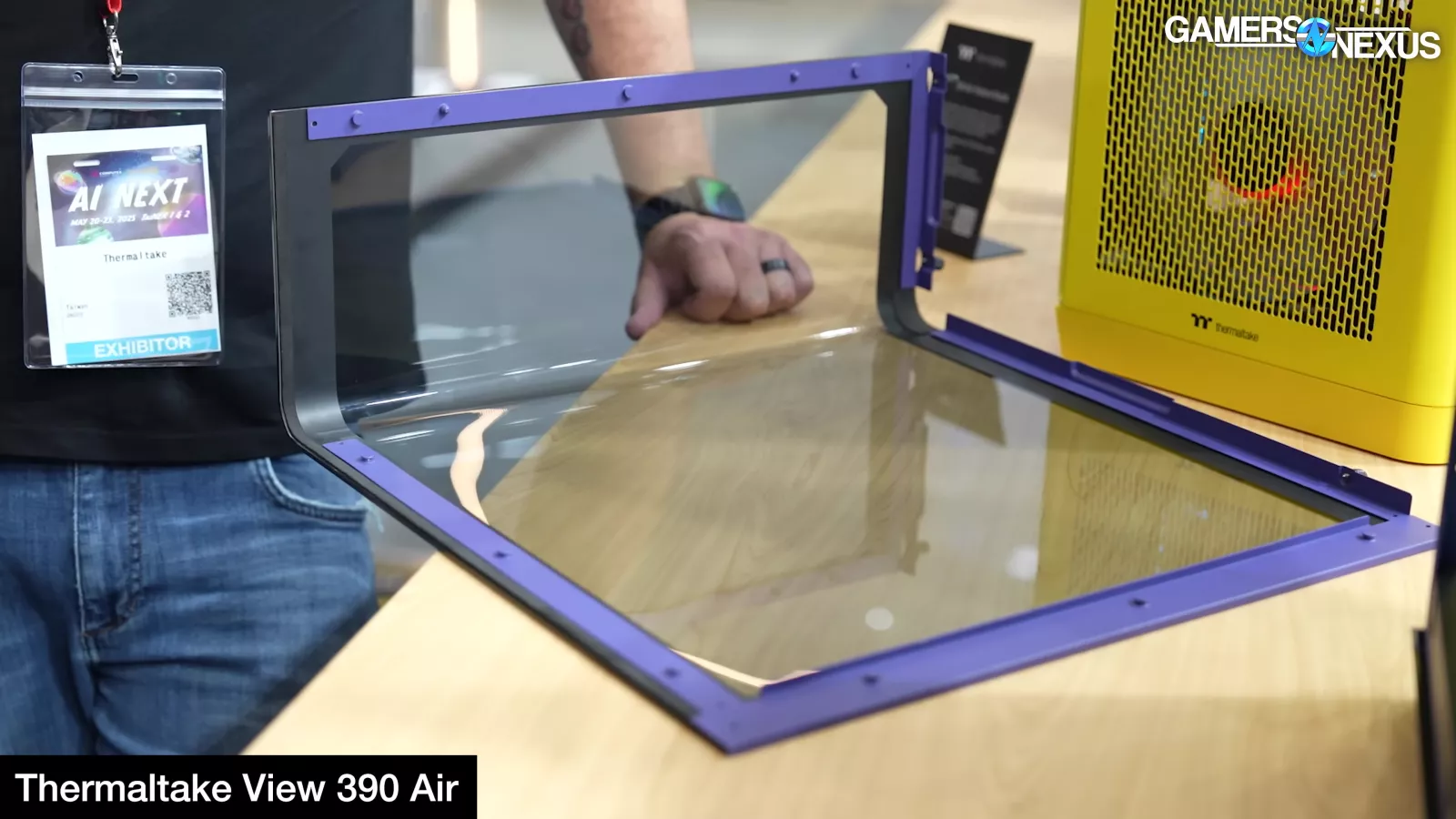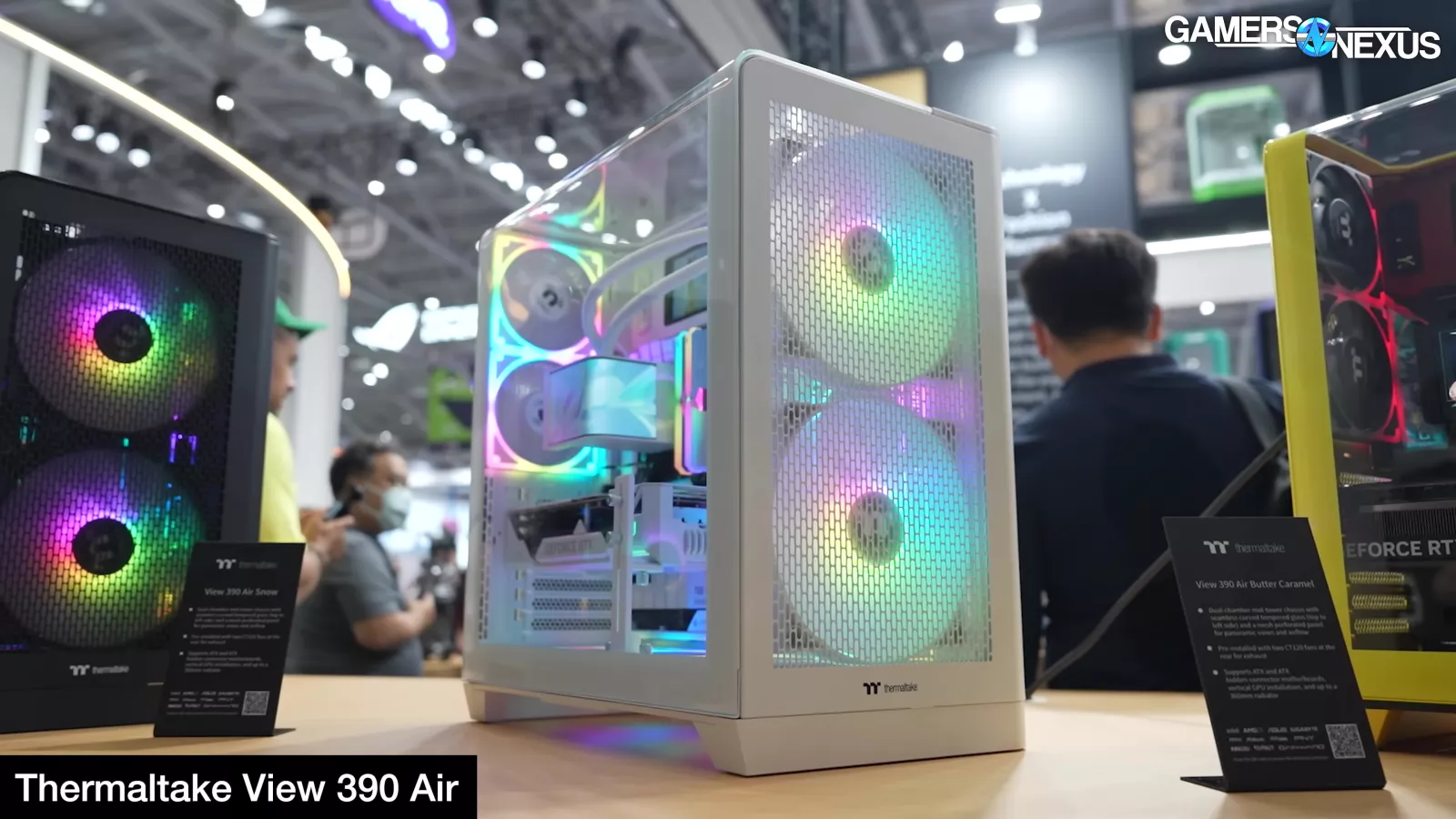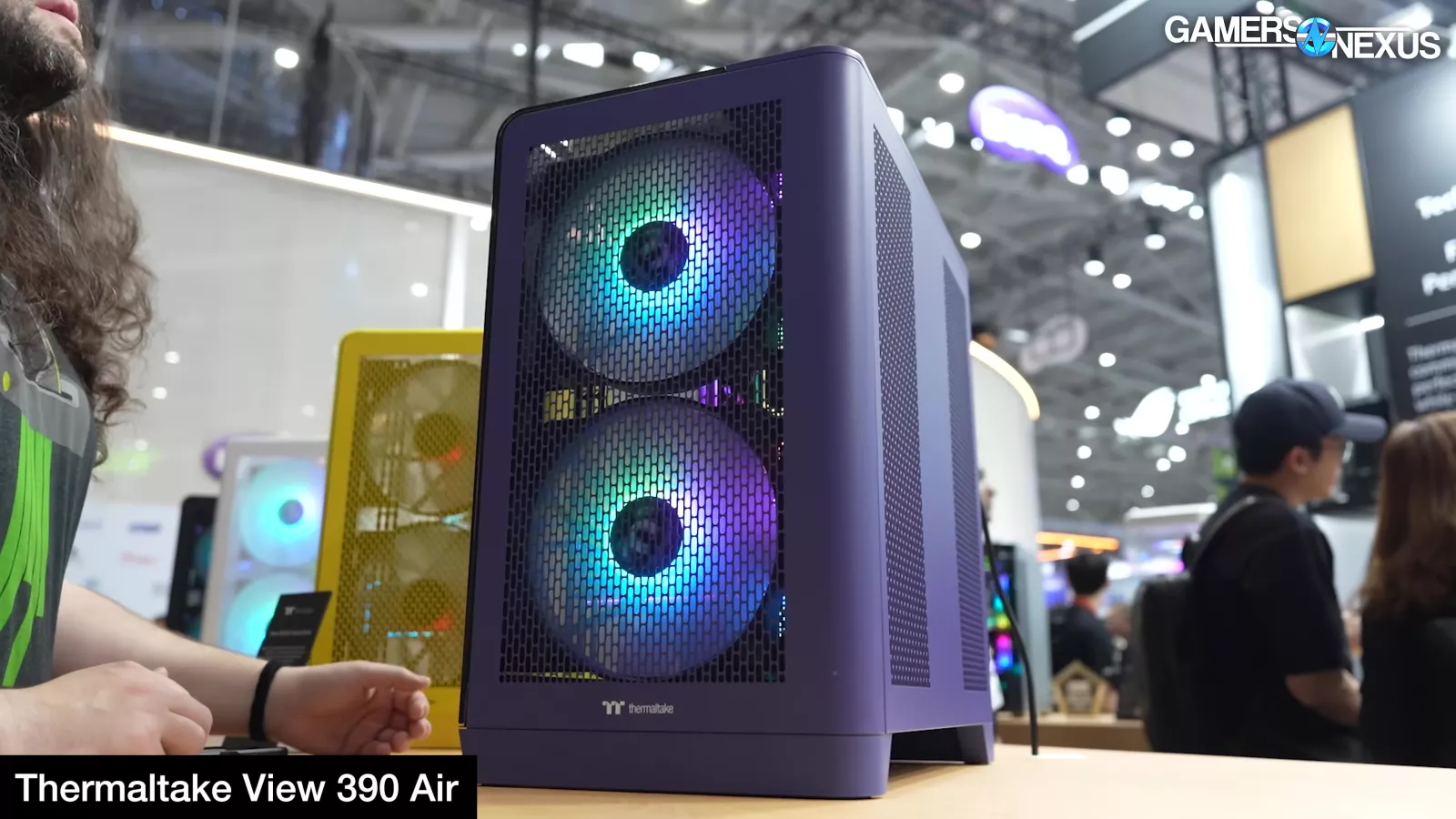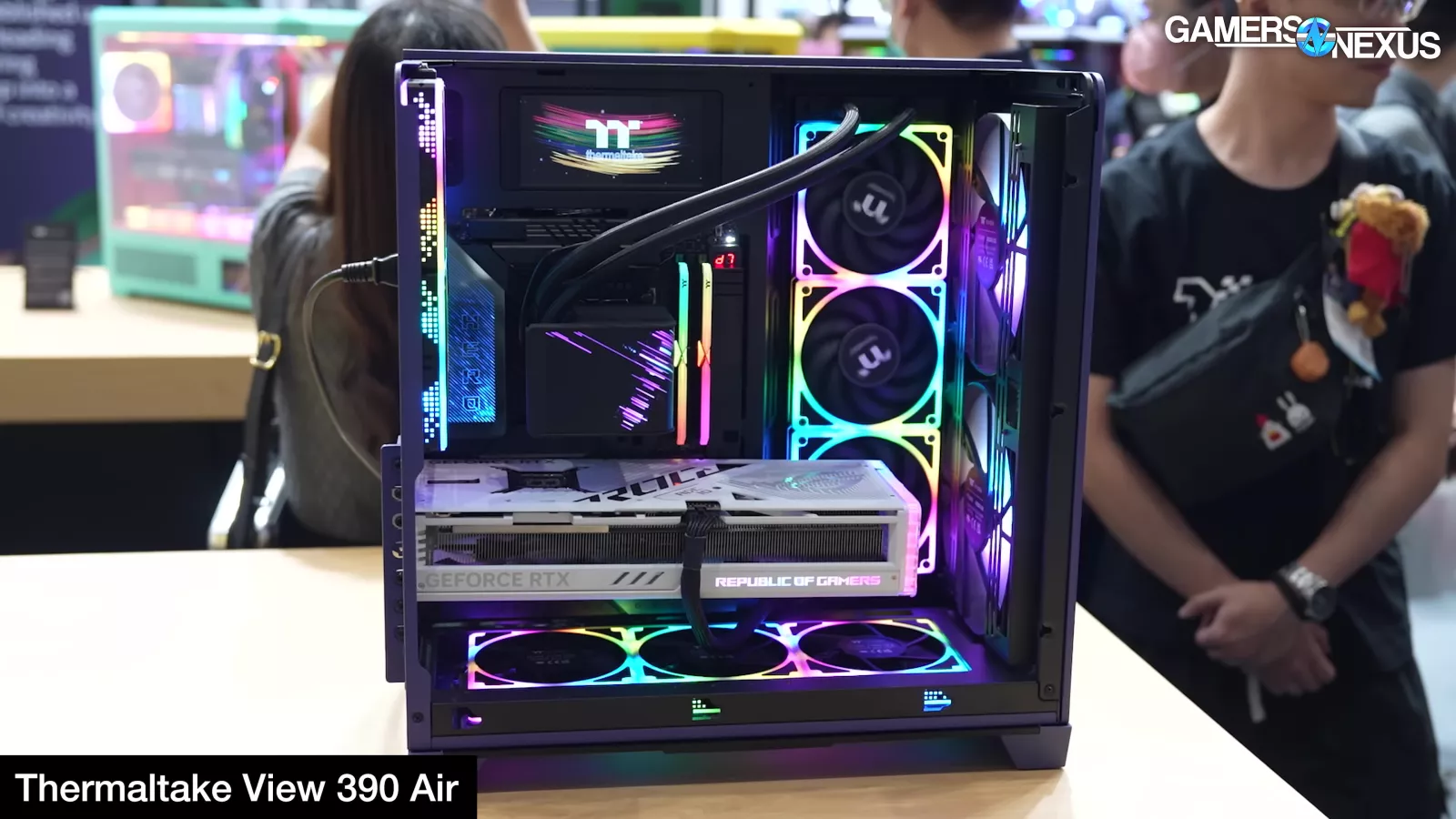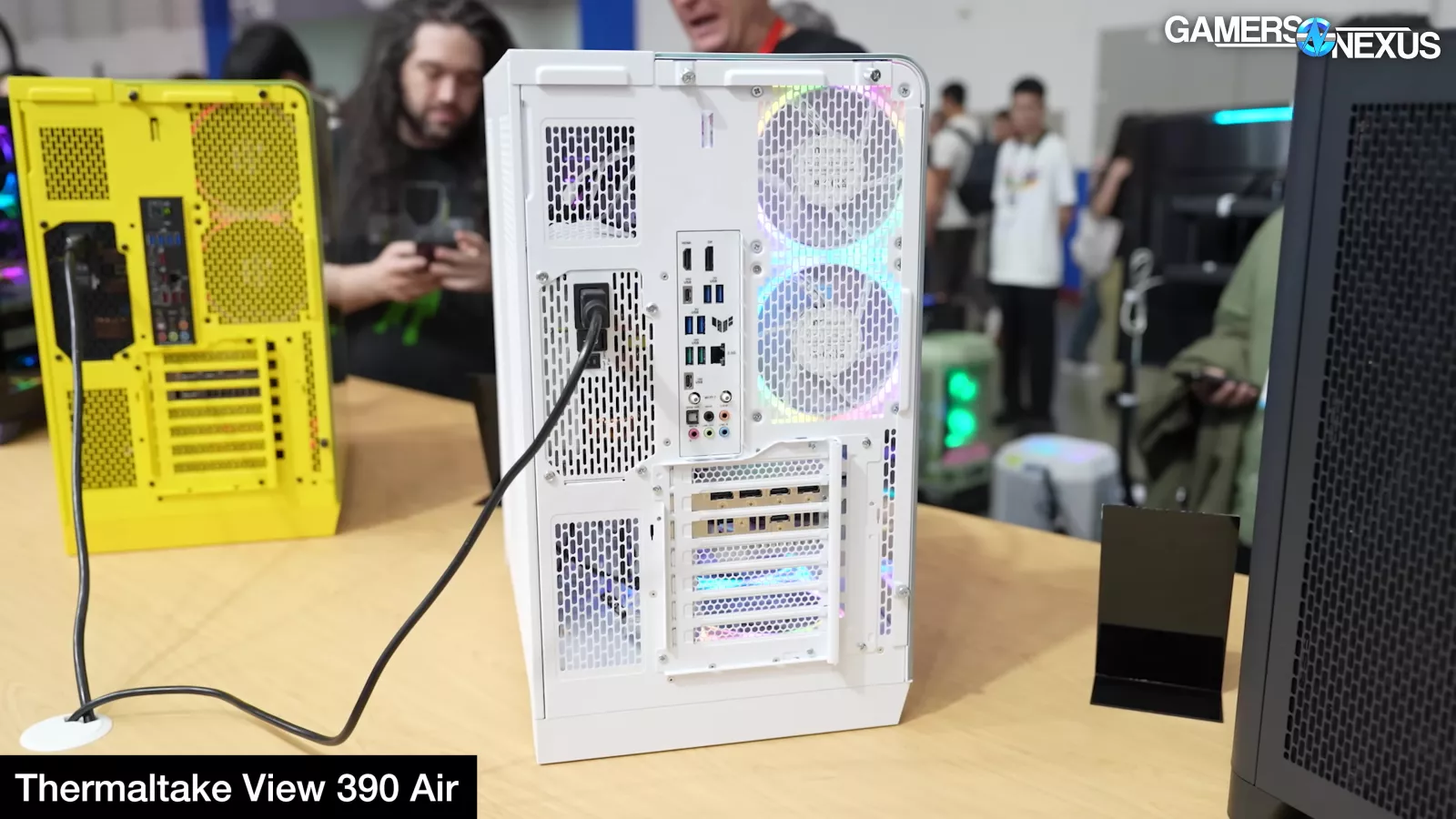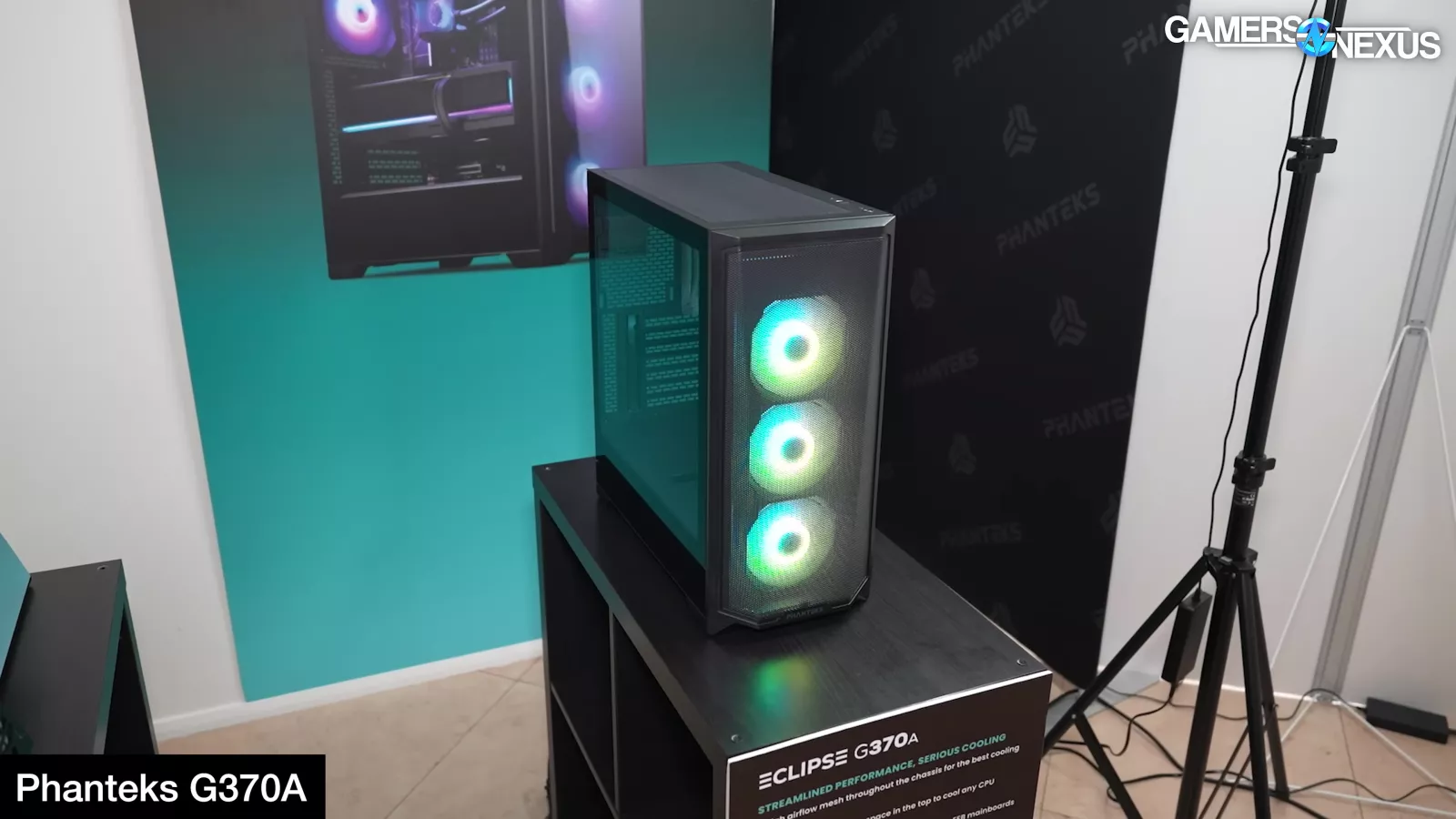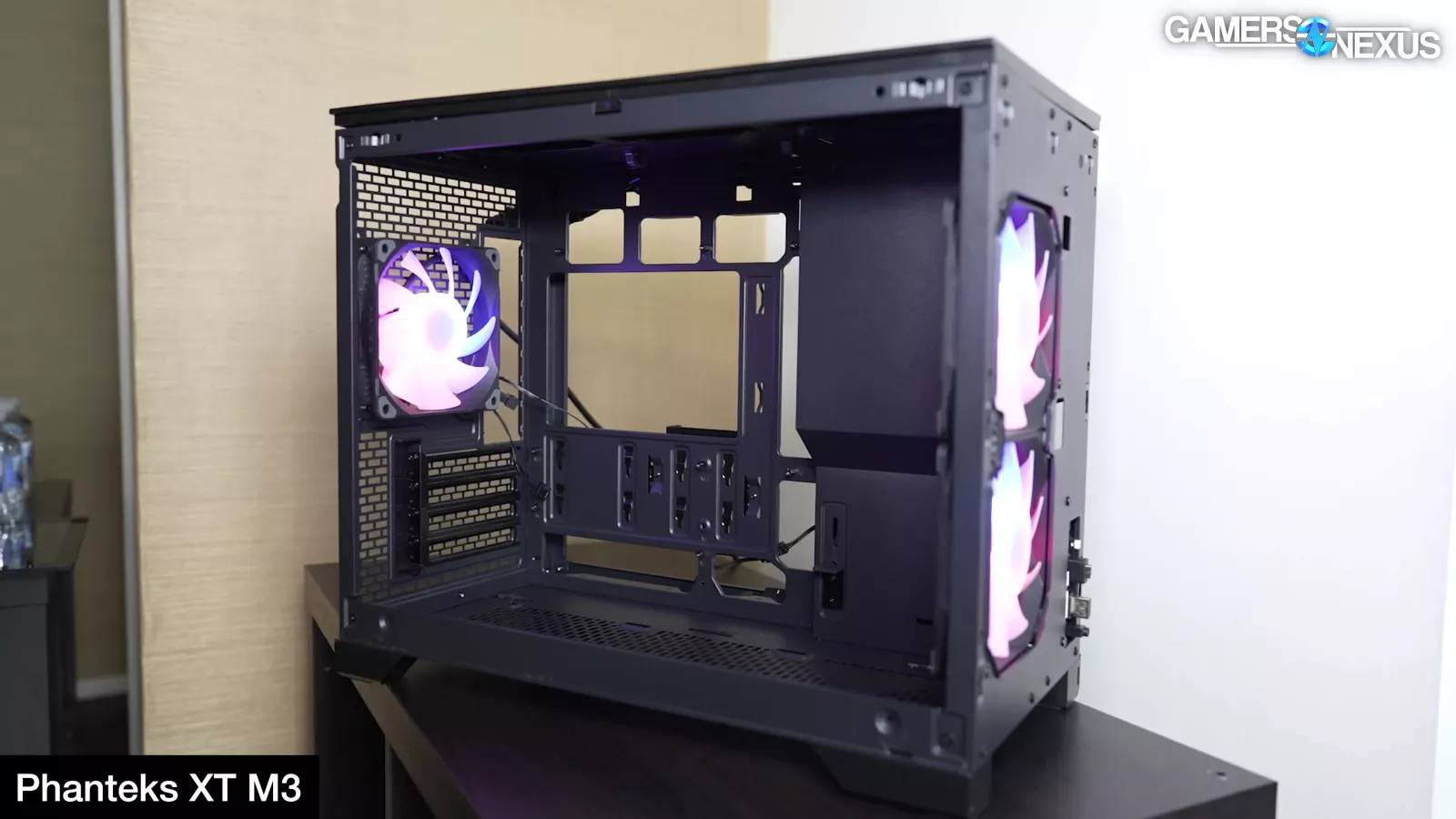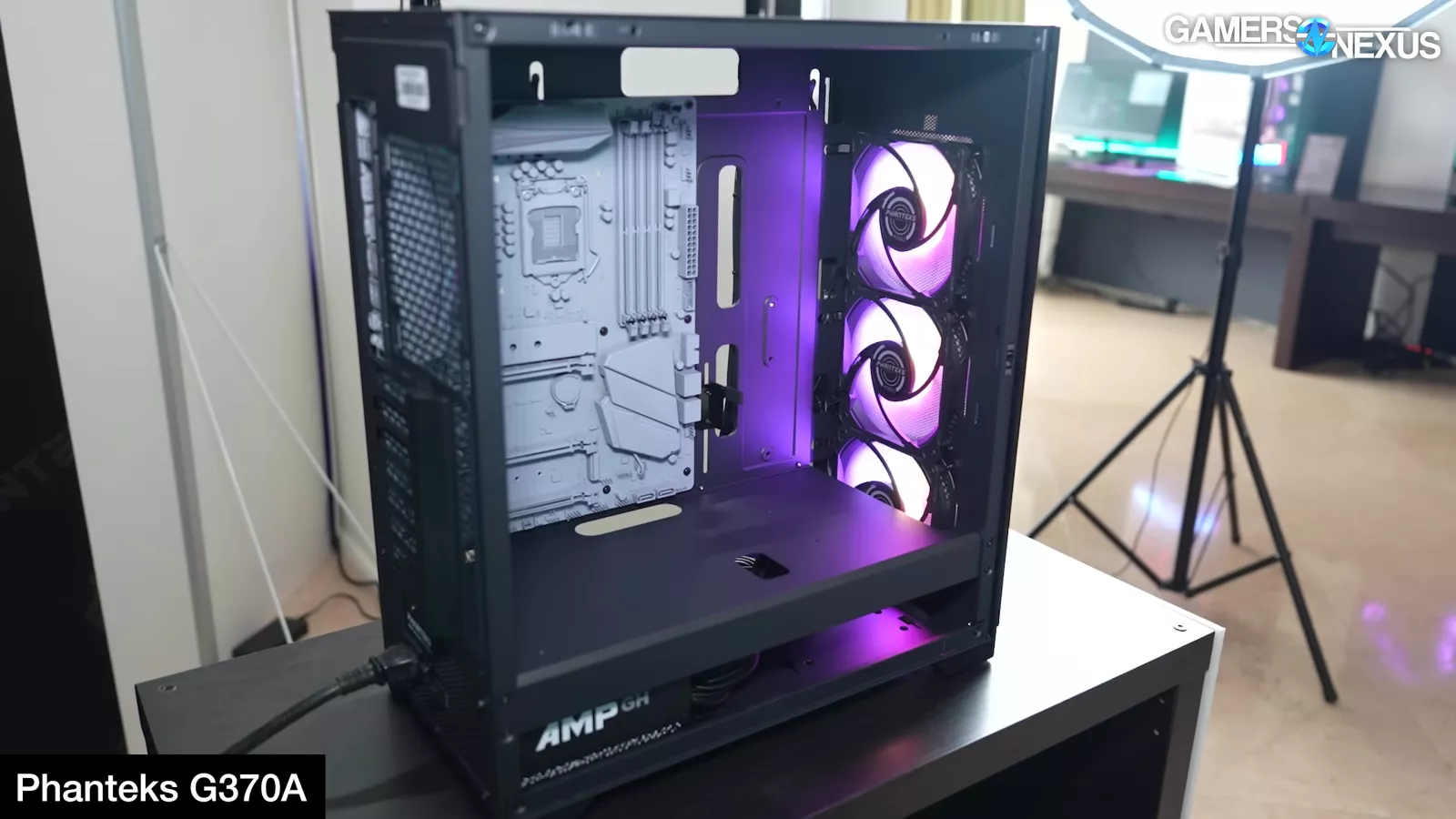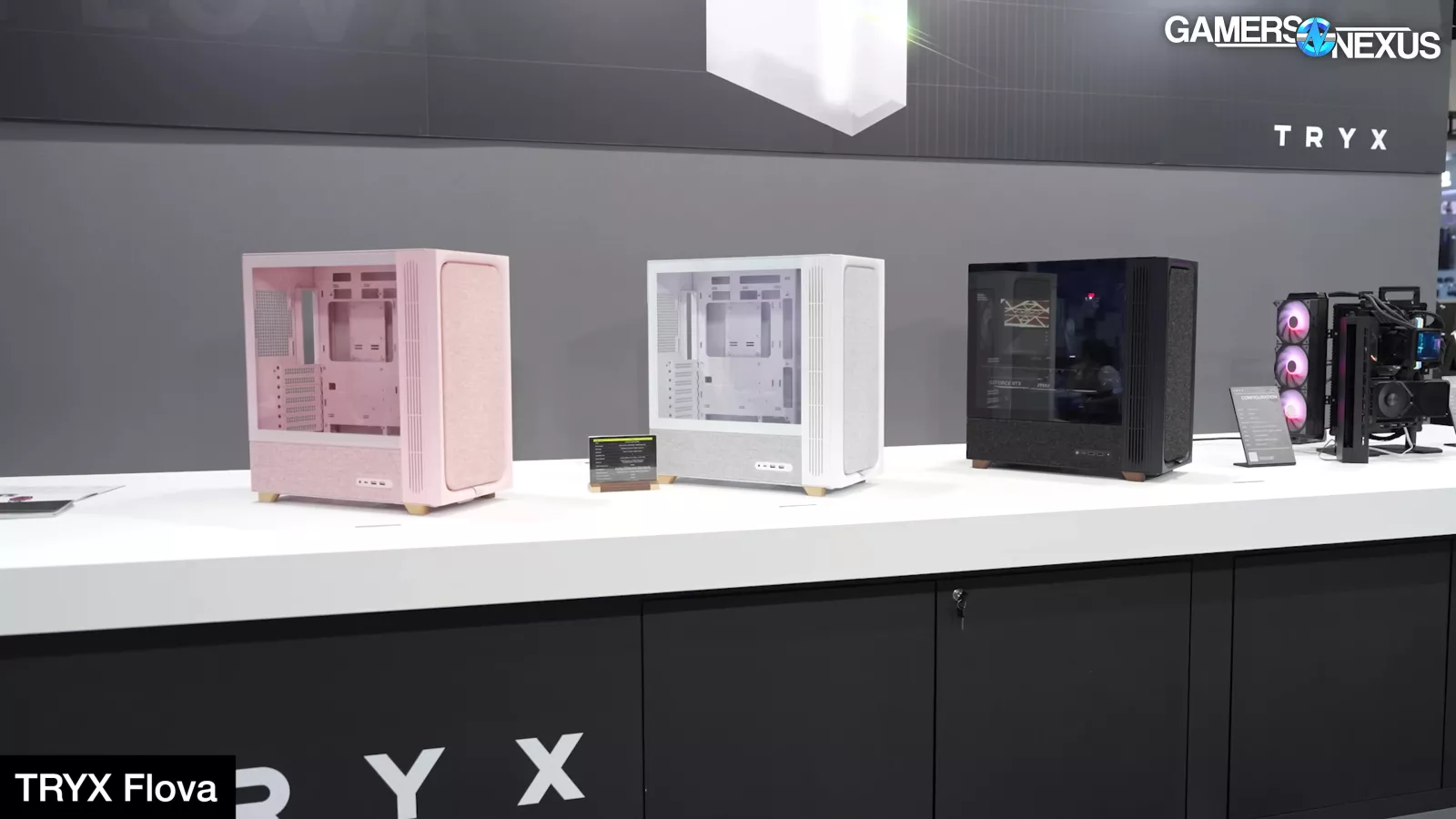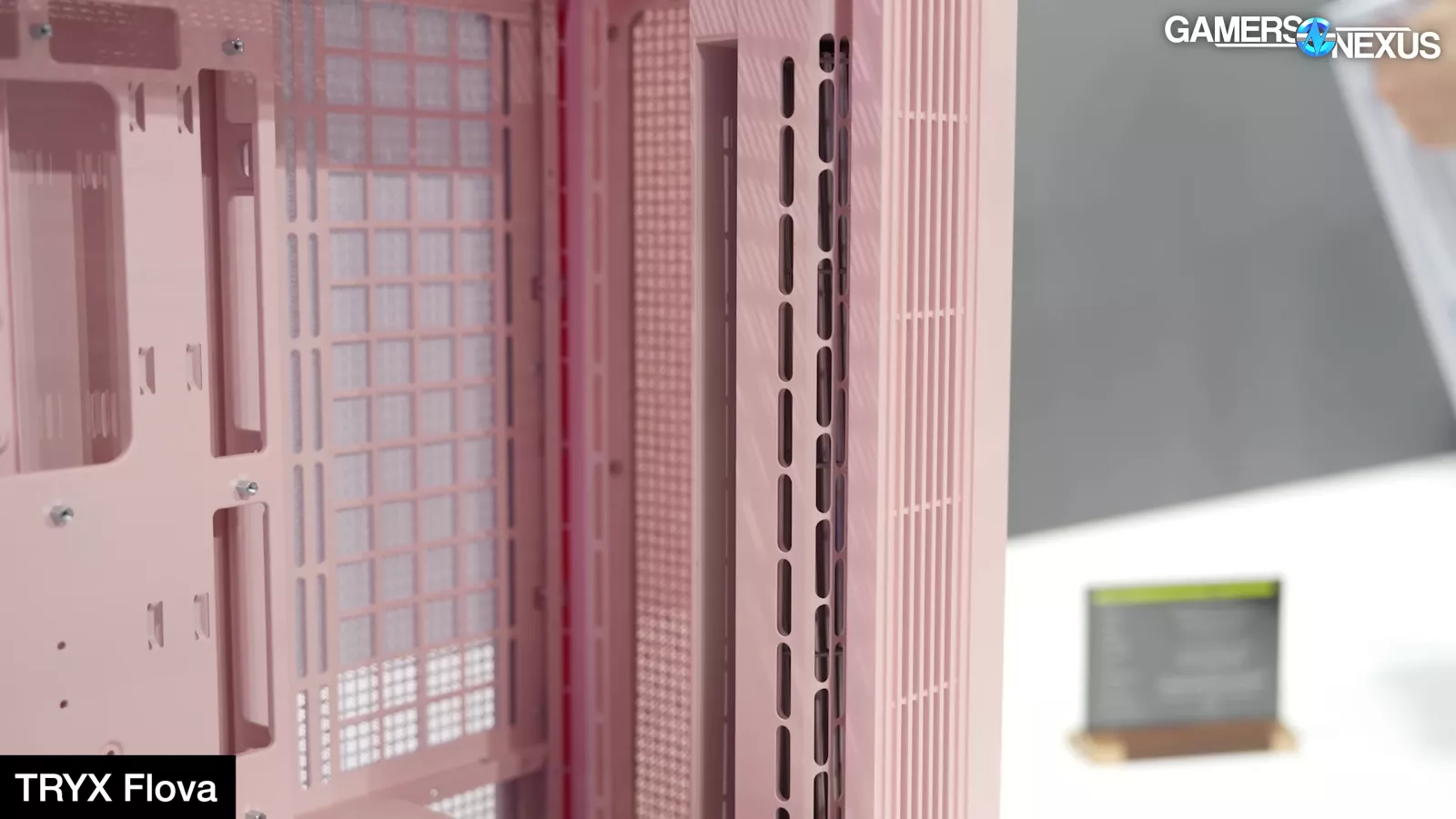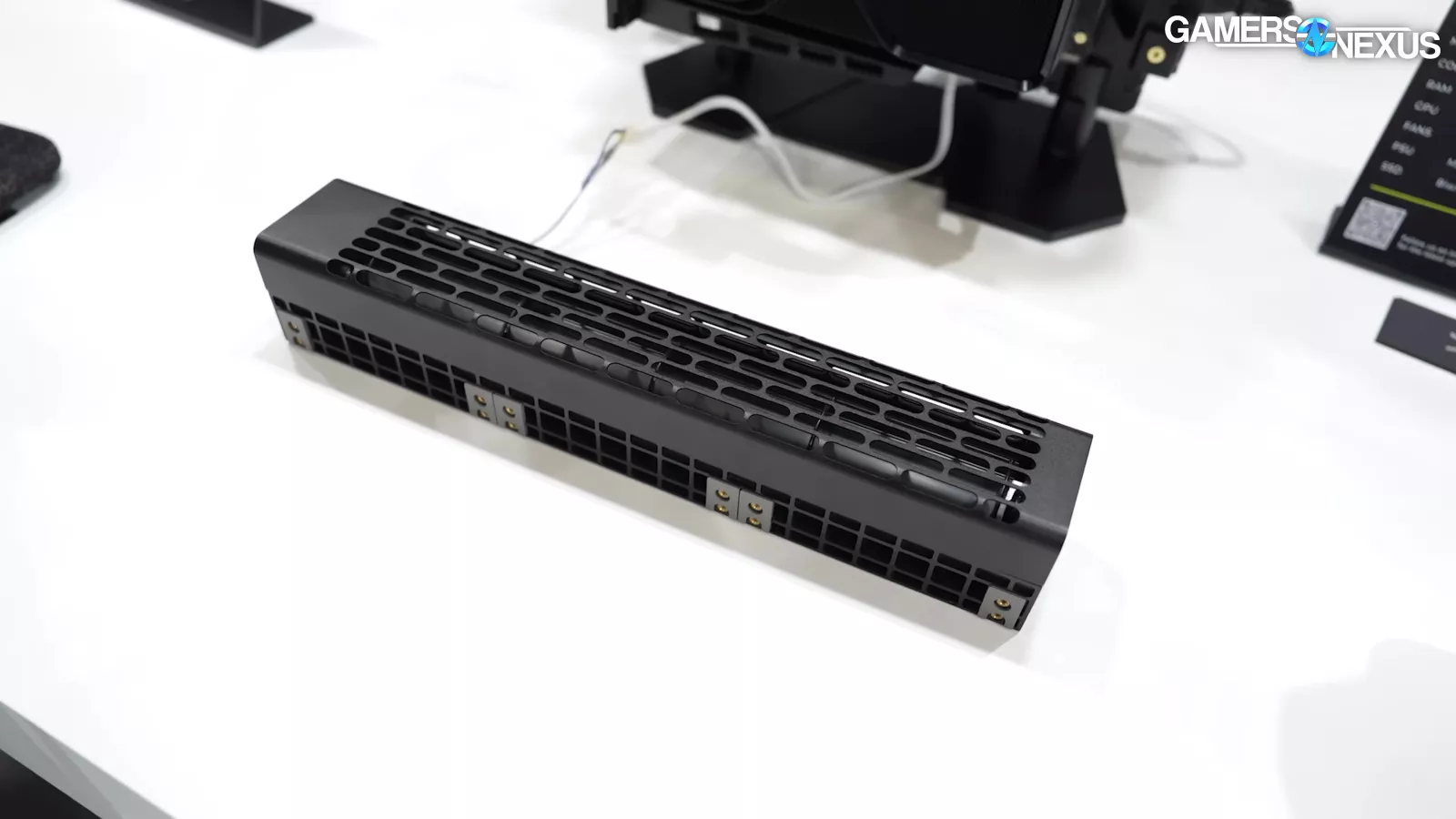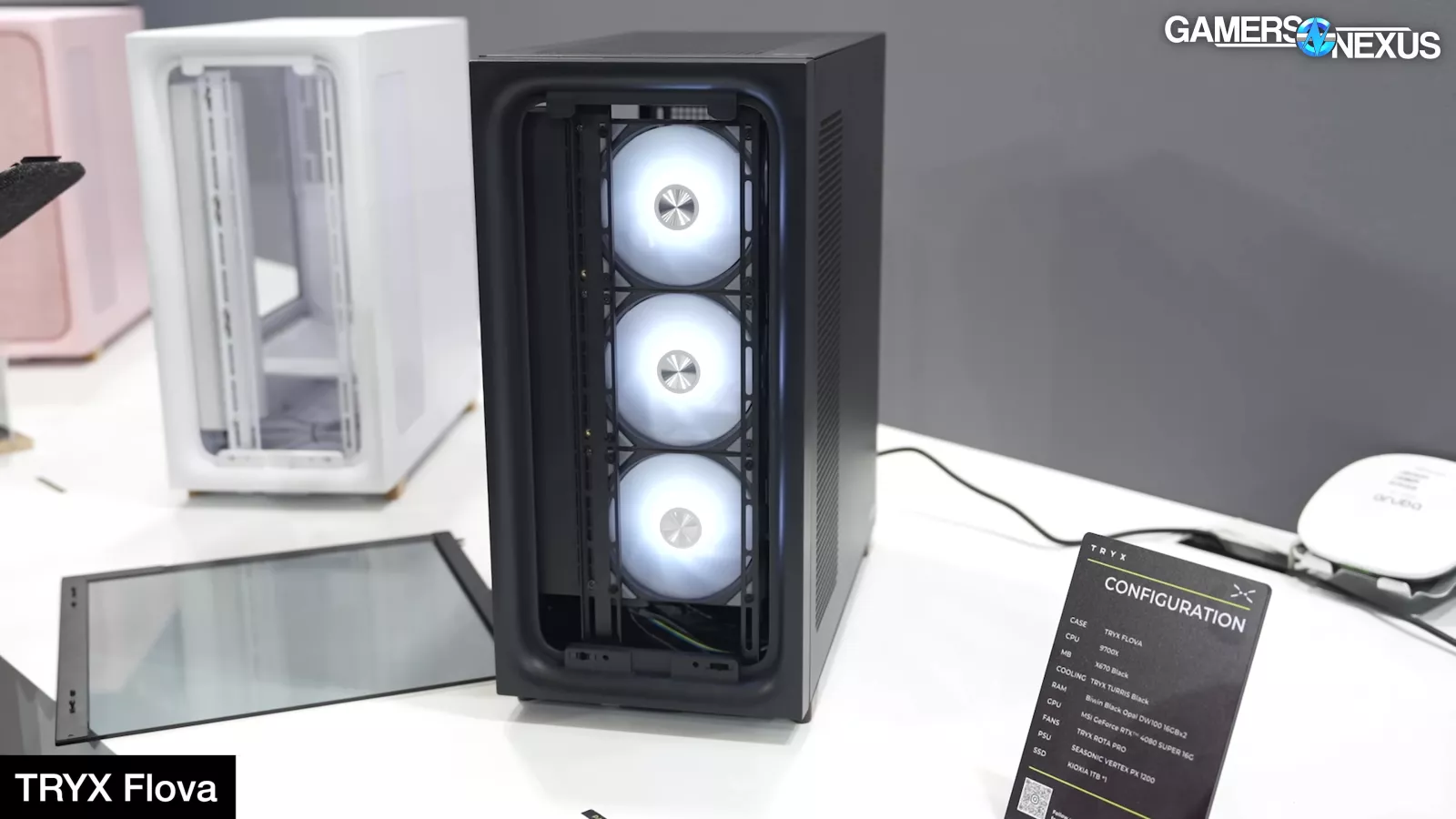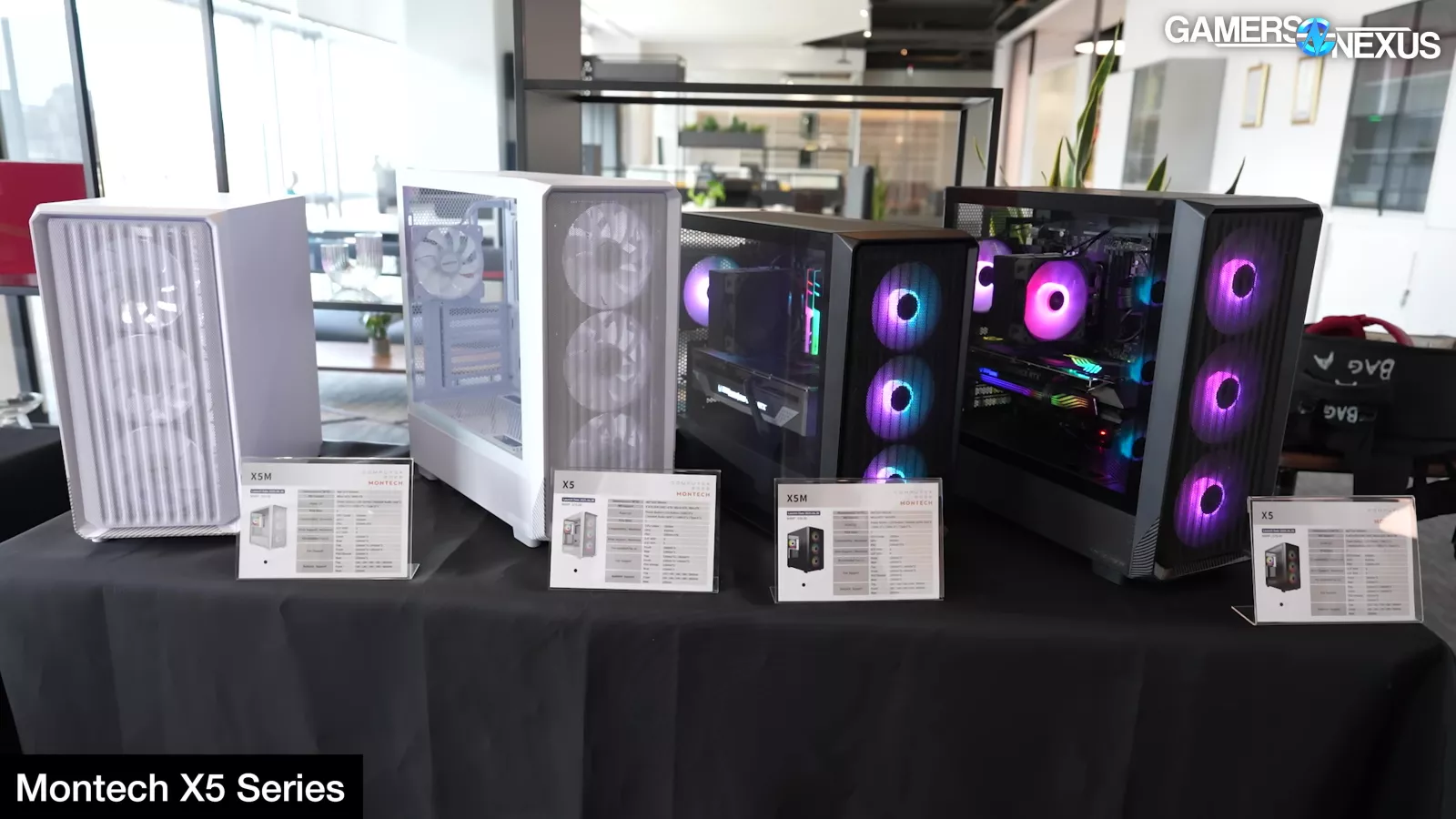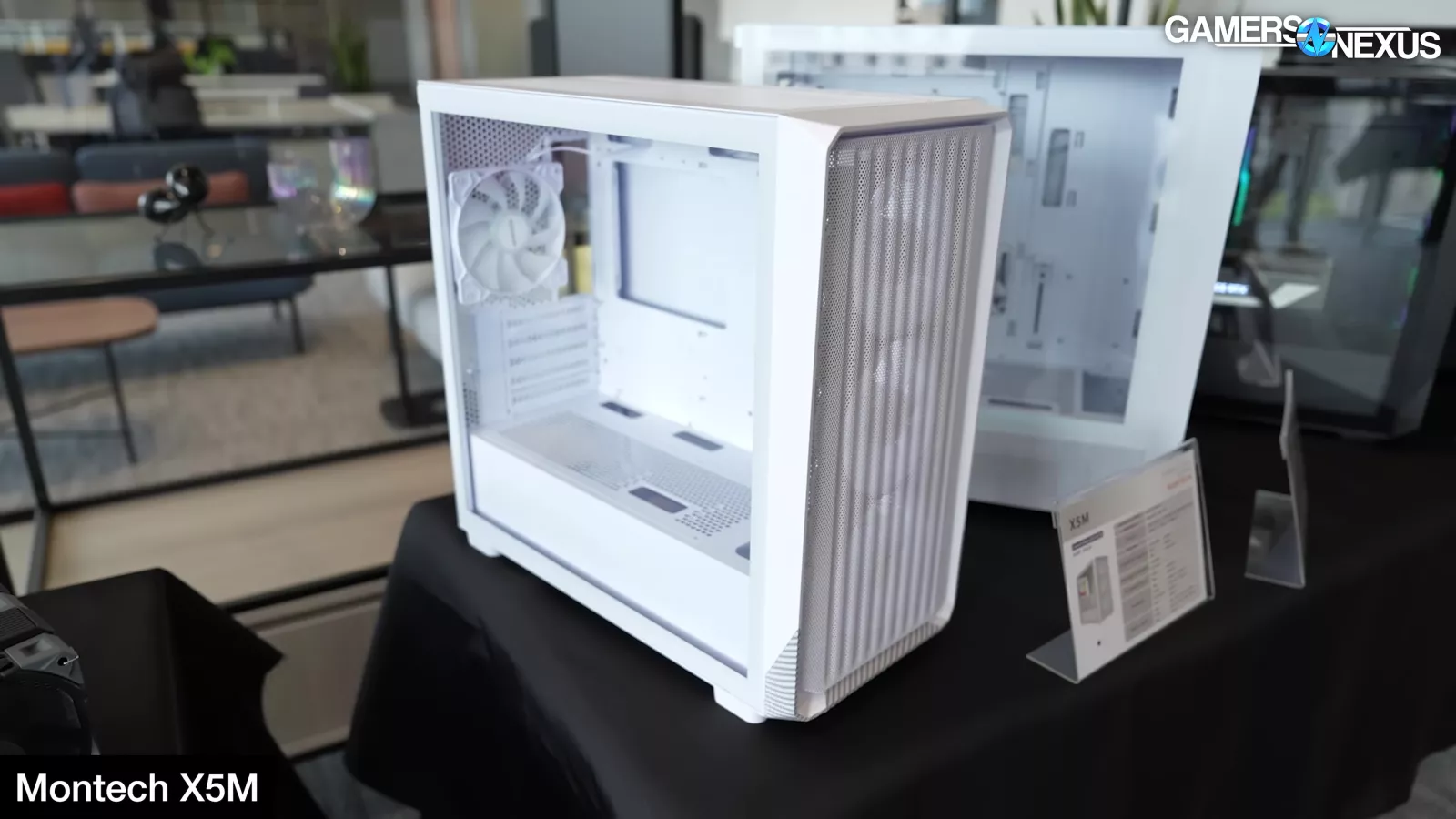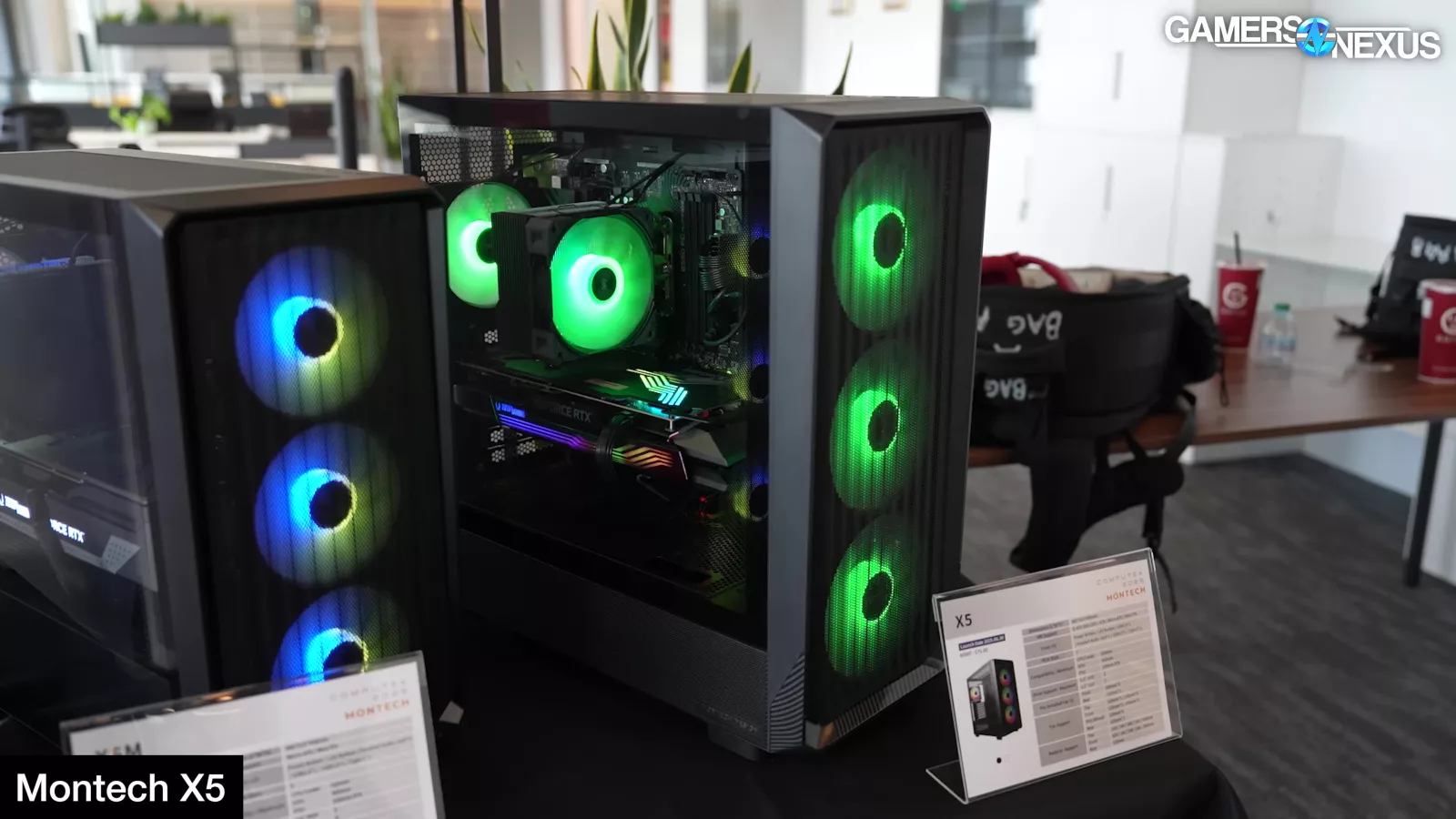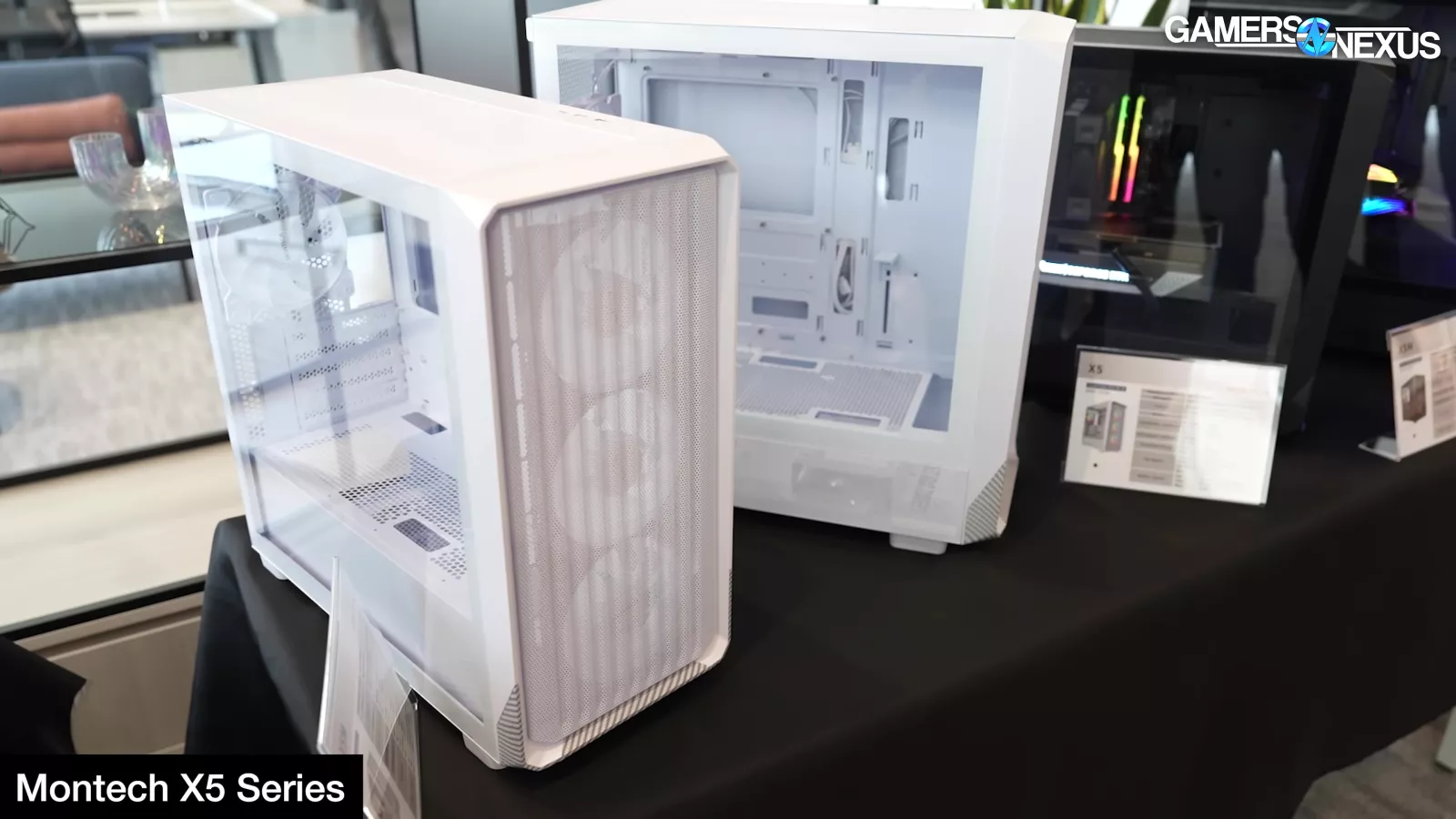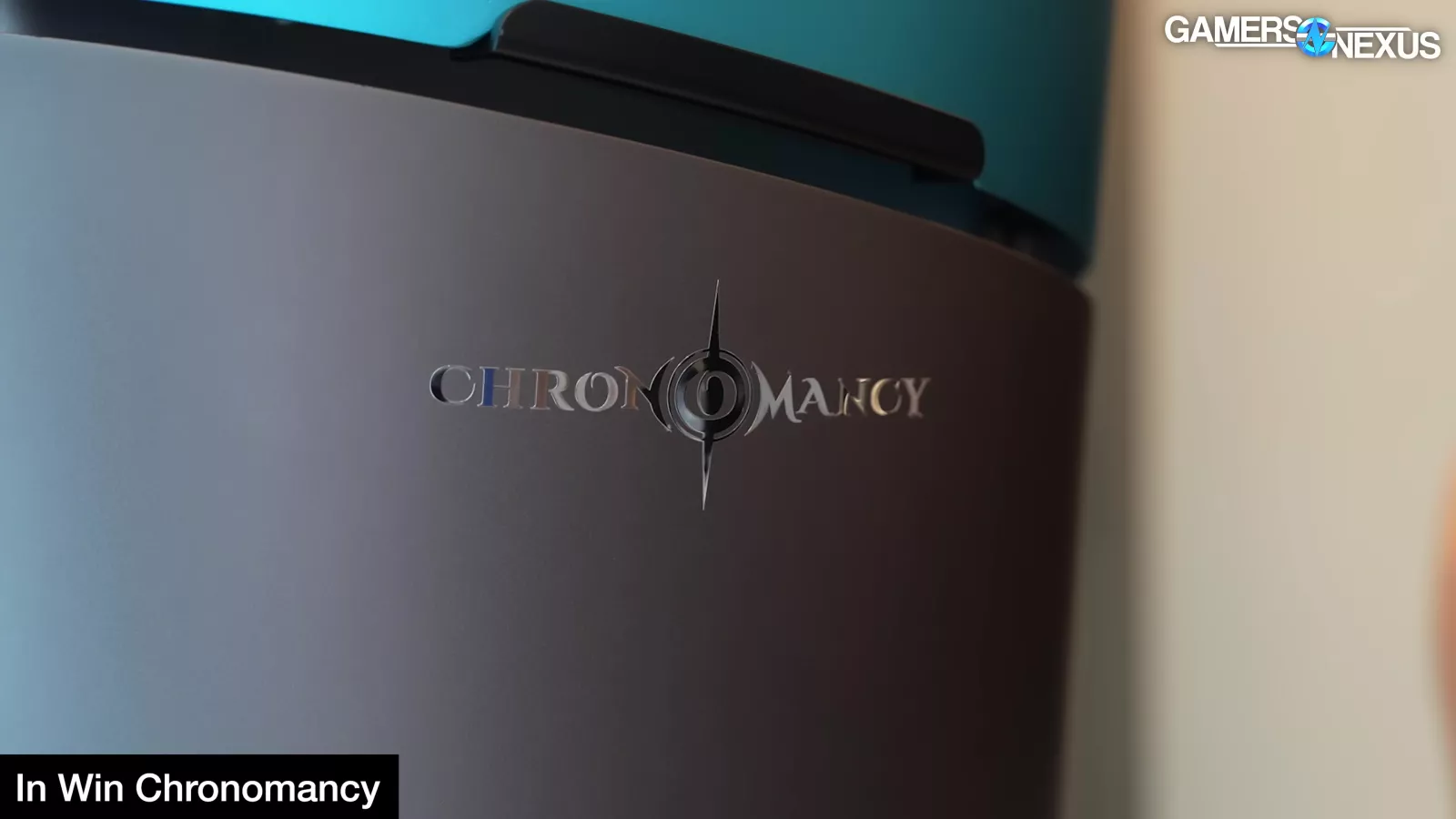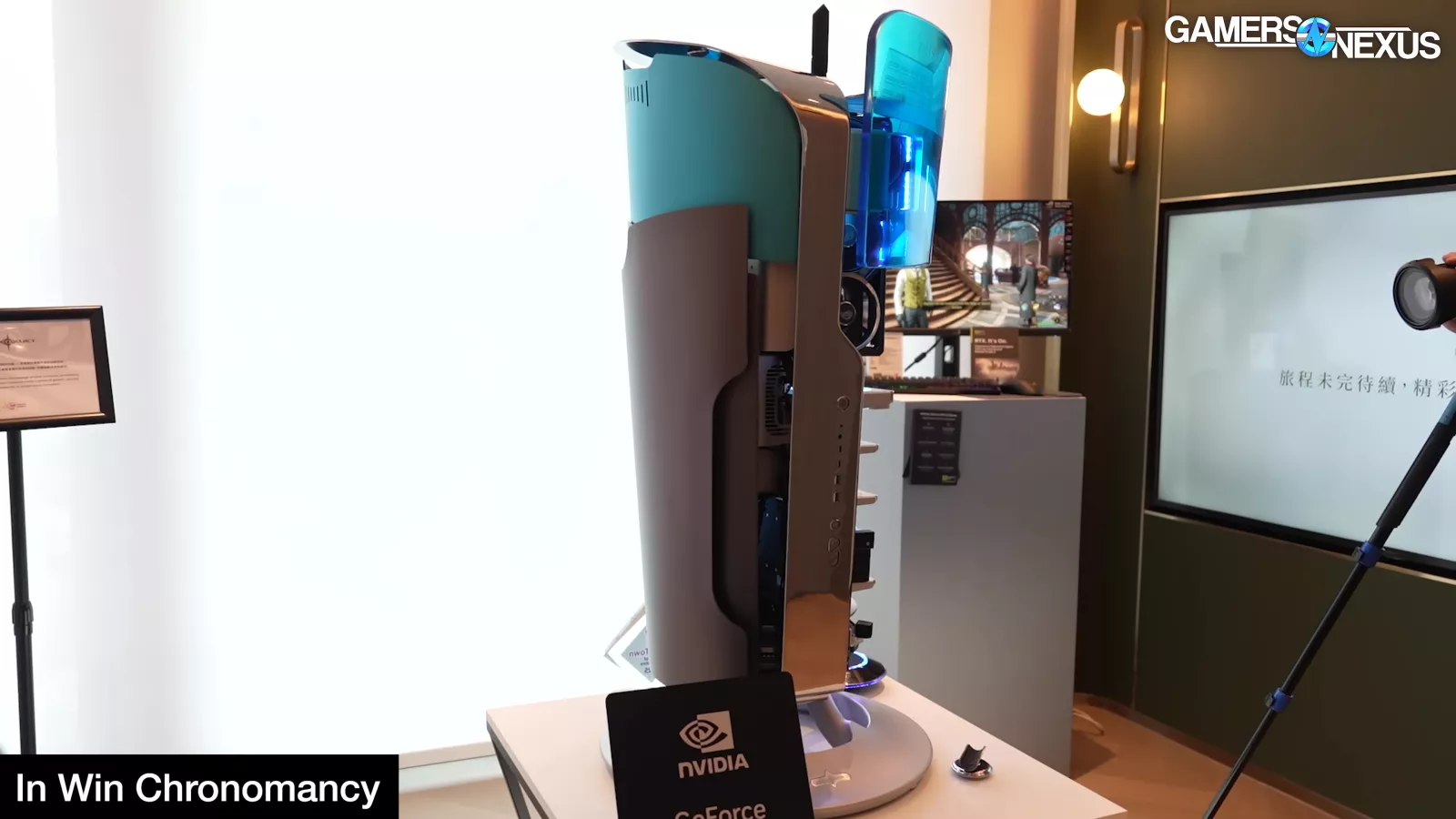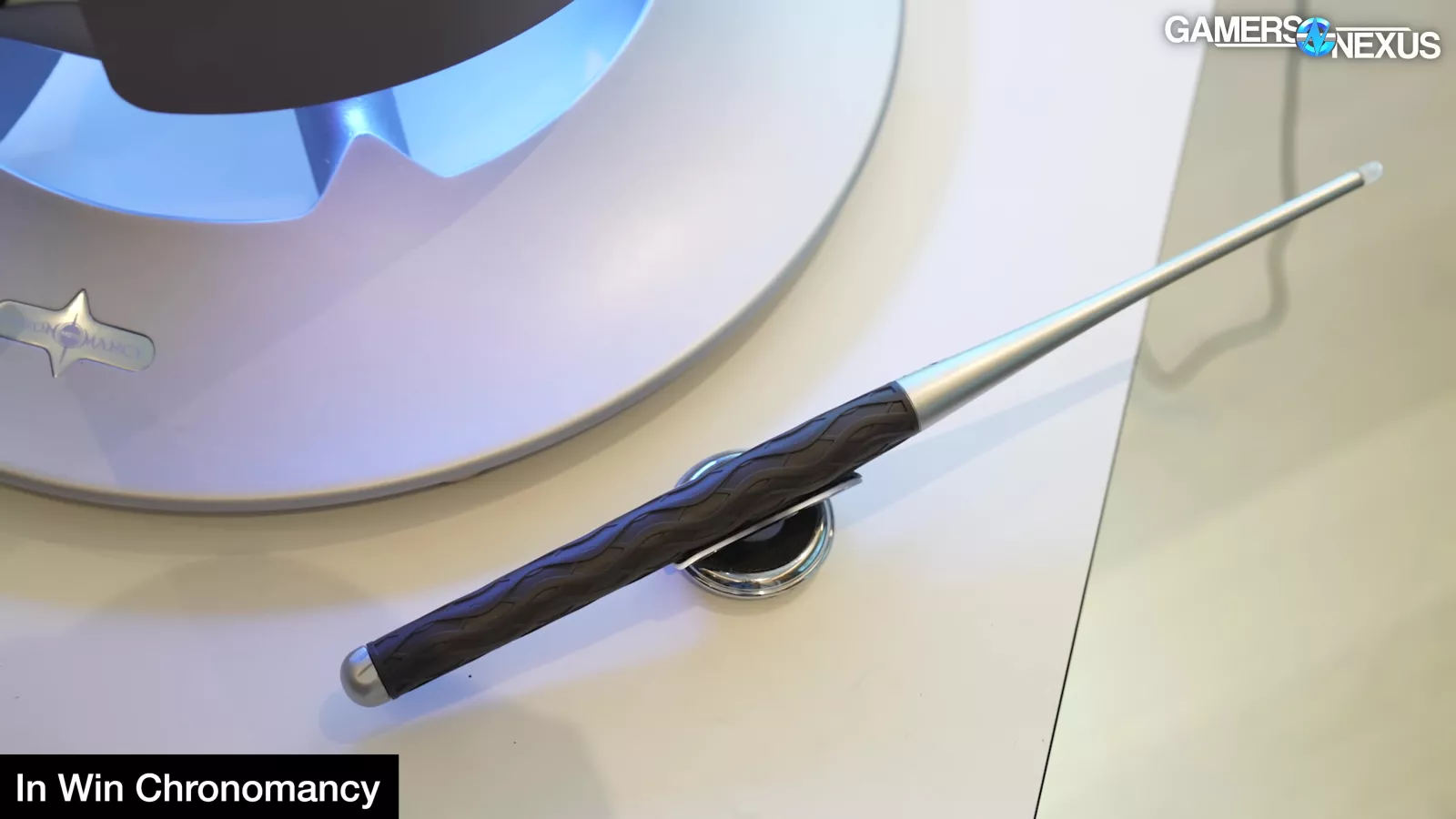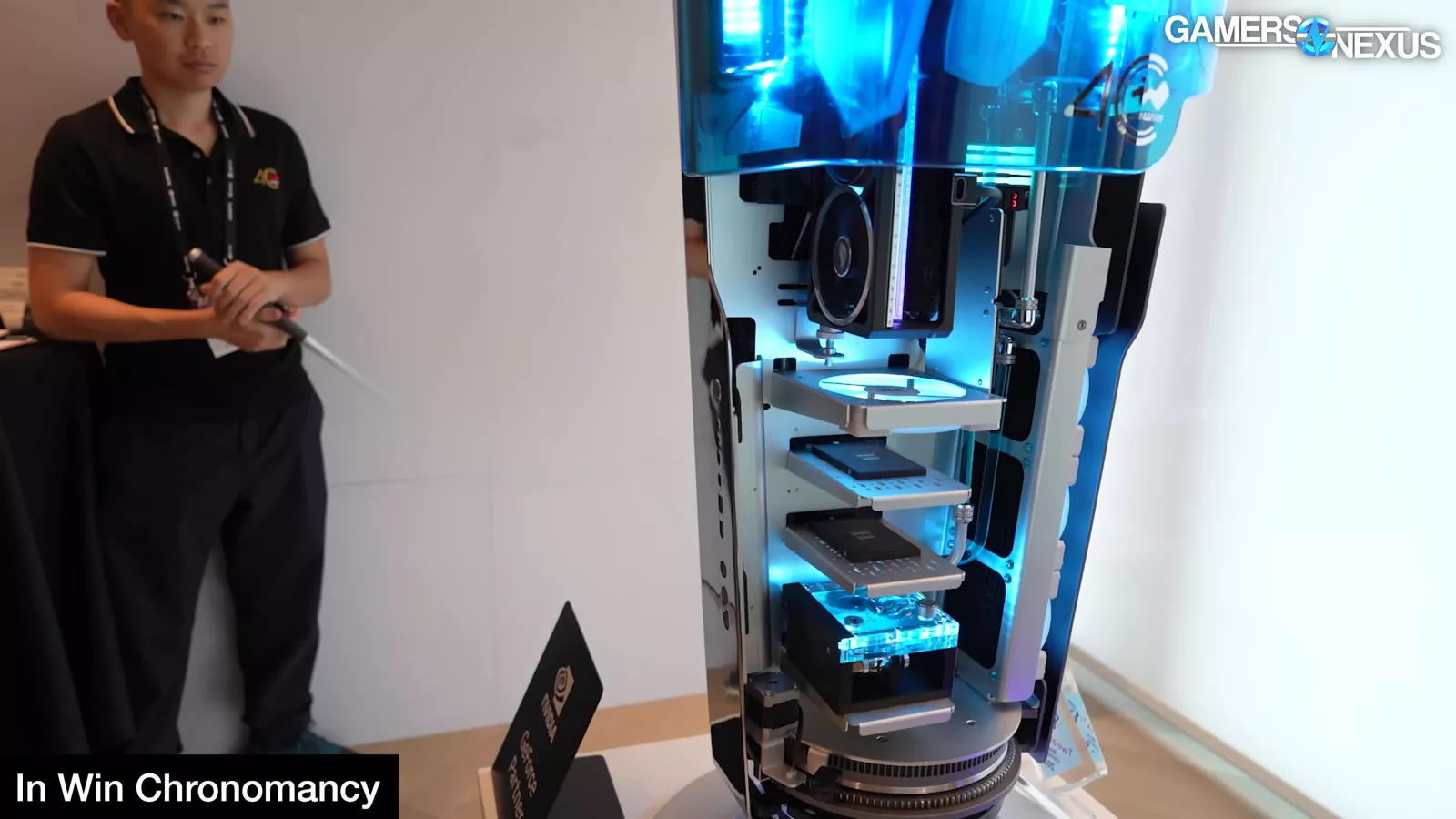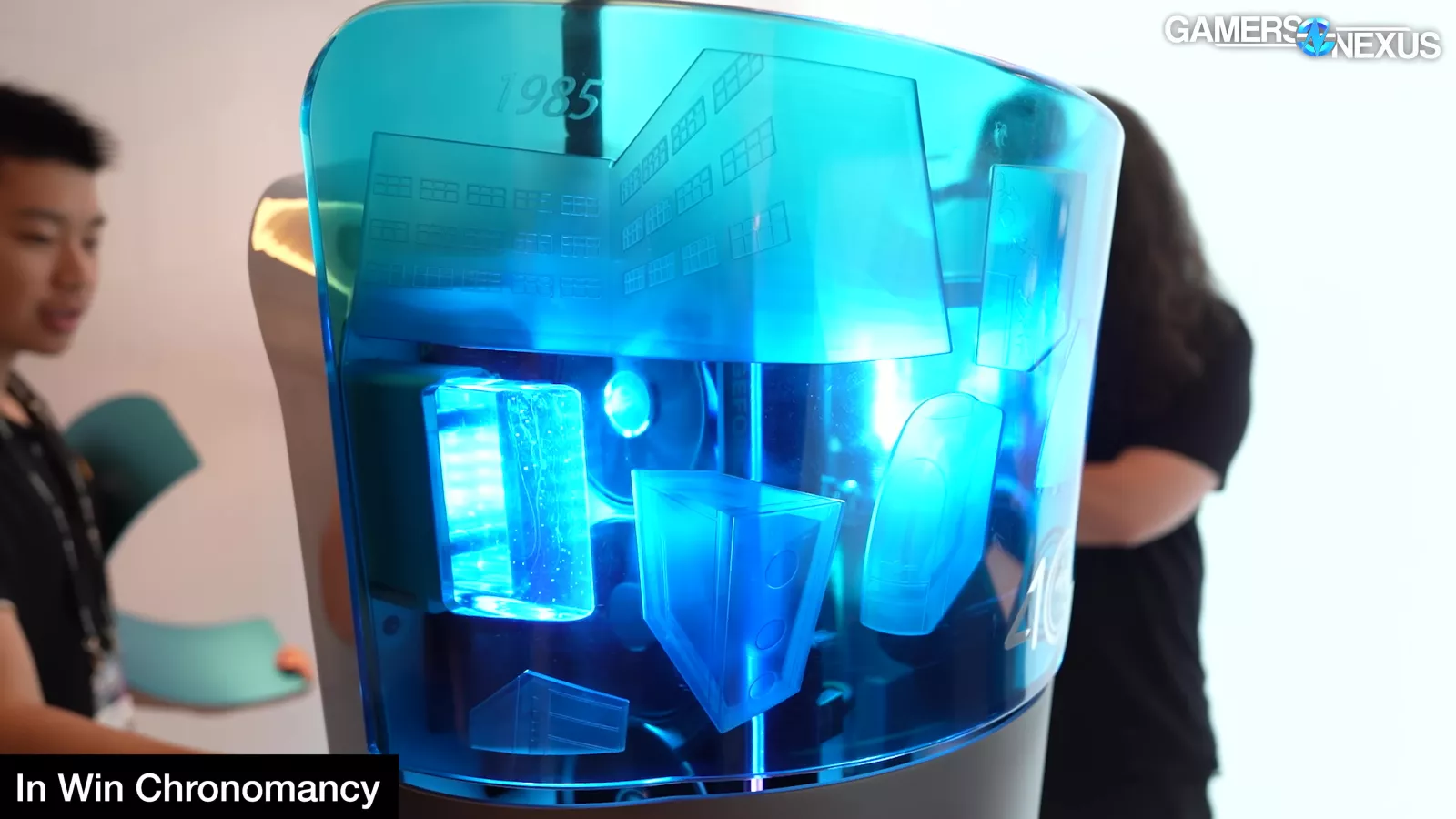
We’ve rounded up the best PC cases we saw at Computex 2025
The Highlights
- Thermalright is known for making a ton of cheap coolers and its trying that strategy with cases, starting with a $45 one
- SilverStone’s FLP02 is a retro-themed case that features 5.25” bay covers that resemble floppy drives
- Cooler Master showed off its MF cases, which offer a modular approach to case design
- Hyte’x X50 is the company’s most mechanically complicated product to manufacture to-date
- Lian Li is embedding fans into its case’s glass front panels
Table of Contents
- AutoTOC
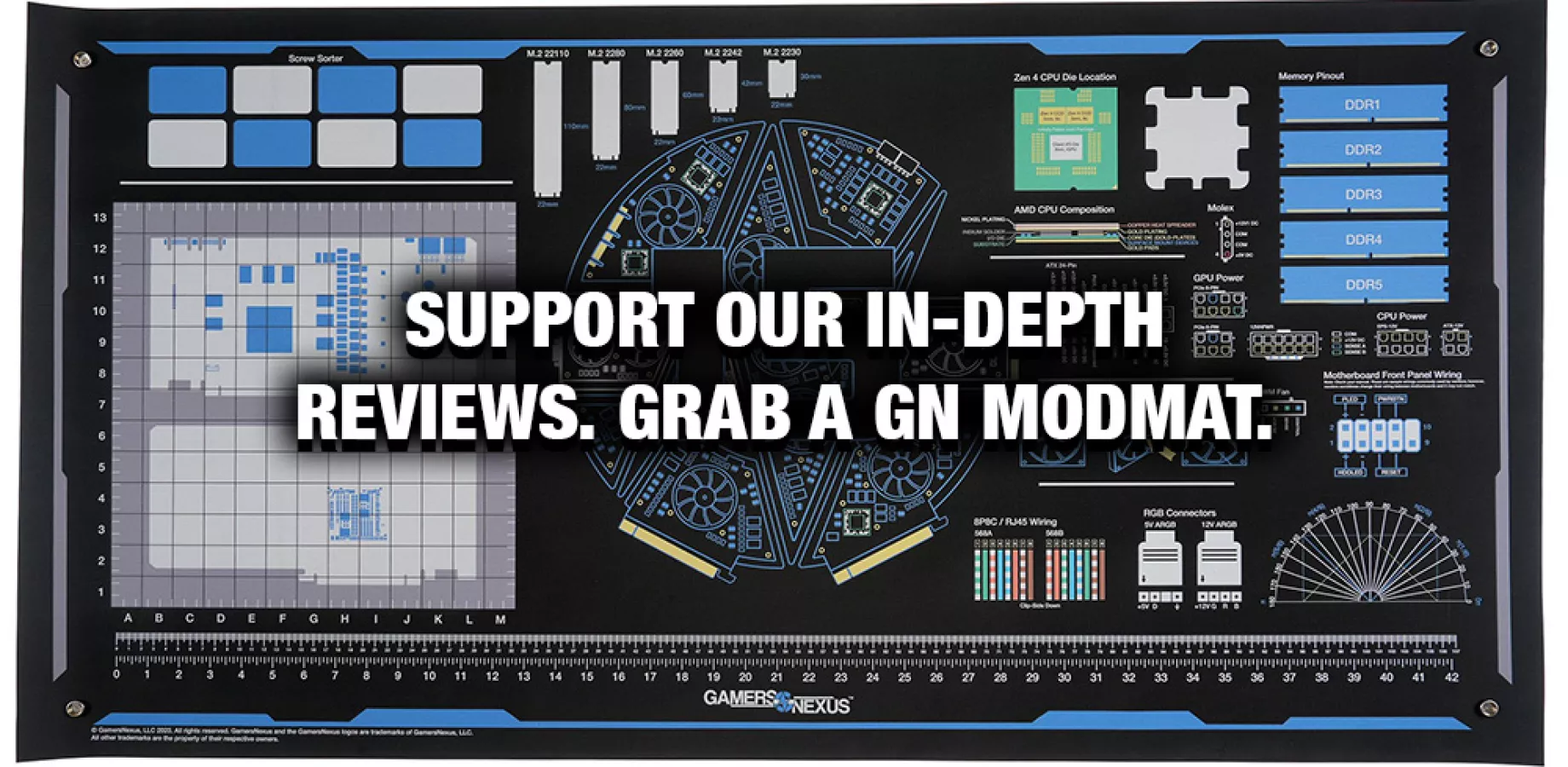
Intro
During our Computex 2025 trip, we saw numerous case announcements. In this story, we’ve rounded up the most promising cases.
The showstopper this year was Silverstone’s FLP02, which is a retro-themed PC case with a functioning real turbo button, molded 5 and a ¼-inch drive bay covers that resemble floppies, and a throwback look with modern compatibility.
Corsair also made bold moves. It had a case that split its radiator chamber into its own isolated compartment.
Thermalright is also threatening the case industry the same way it did to the cooler industry by bringing a $45 MicroATX case to the market.
Editor's note: This was originally published on June 1, 2025 as a video. This content has been adapted to written format for this article and is unchanged from the original publication.
Credits
Host, Writing, Editing
Steve Burke
Camera, Editing
Mike Gaglione
Camera
Vitalii Makhnovets
Editing
Tim Phetdara
Andrew Coleman
Writing, Web Editing
Jimmy Thang
Cooler Master is back on the scene, too, introducing its MF series of cases.
HAVN has the BF360, which couples a heavy focus on fan design and case-thermal engineering to content with Hyte’s X50, for what each company hopes will be the top performing case on thermal charts.
This story will re-cap some of the best cases that we think are coming out over the next few months. We’ll, of course, have to review these cases as they launch, which means we’ll have a busy year with cases. We also plan on running a story on the best cases of 2025 at the end of the year, which will include all of our test data. For now, we’re looking at the best cases from Computex 2025.
Thermalright TR M10
Thermalright is best known for making a ton of cheap coolers. The company is applying that strategy to their first case, which they announced at Computex. Thermalright revealed its TR M10 MicroATX case, which will start at $45 and scale up to $65 for a model that includes an LCD and a digital display. Neither variant will include fans.
The case has good cable management depth and simple cable-management passthroughs without BTF support. It also has heavily ventilated panels everywhere. The TR M10 fits 3x120mm side-mounted fans for intake and can technically fit fans at the top of the power-supply shroud. This is made somewhat more viable, although distance is a challenge, by all of the holes punched through the floor of the case and even the drive cages.
The more expensive $65 variant will feature an RGB digital display at the front that’s capable of spitting out basic numbers or seven-segment text. Externally, the case is simple. Thermalright has punched holes everywhere including the company’s logo on the side panel. The case also has a glass front and side.
Thermalright has added shiny plastic accents to the top and front. It's intended to look like brushed aluminum, though we don’t think it looks like that. The ventilation everywhere is at least promising for thermal performance at its price.
If the company is able to apply its CPU cooler model to cases, it will be a major price disruption for the case industry.
Silverstone
SilverStone FLP02
Up next: SilverStone’s FLP02 gets our next spot in this round-up. The retro-themed case is an actual real attempt at a modern computer case, not just some meme, while preserving aspects of cases from the late 80s and early 90s. Its clearest downside is limited cooling capabilities, with the clearest upside being the reason it has limitations in cooling: It’s true to the era while modernizing compatibility. The SilverStone FLP02 is a looks-first case, but not in the usual way.
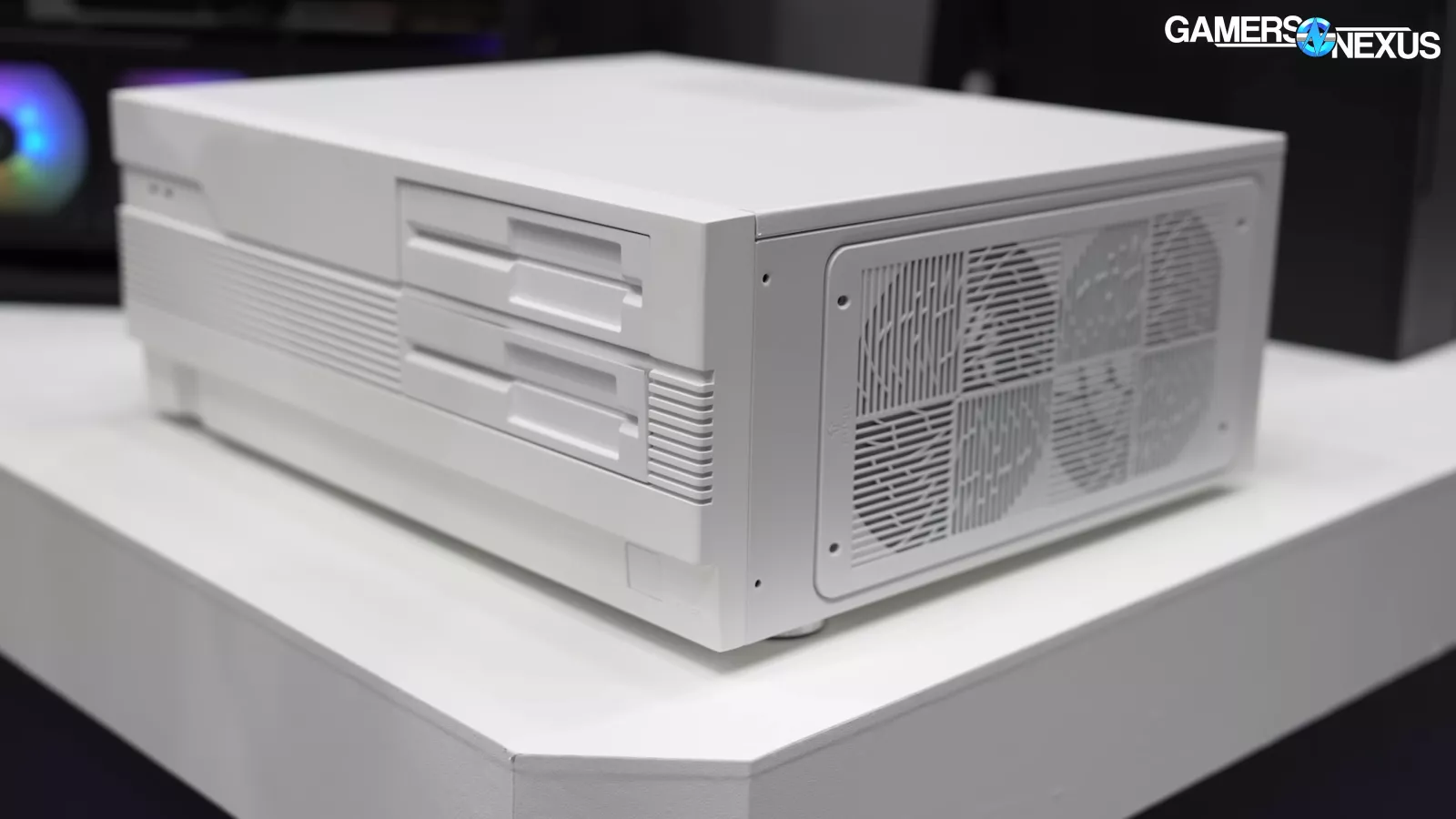
The case builds upon Silverstone’s FLP01 smaller form factor case, which was originally an April Fool’s joke, and deploys a functional retro theming: The front panel features 5.25” bay covers that resemble floppy drives and include functional levers for removal. The bays can be used as typical. Below these molded covers, there’s a functional I/O panel with a power switch and reset button, both controllable by the key lock which prevents accidental usage, which is more of a call-back to the old days. With the key in the unlocked position, the switches can be used as normal power/reset buttons. There’s also a Turbo Button, which controls fan speed. In theory, someone crafty could rewire it for use with something else. Above the stack of 5.25” bay covers is a covered set of modern USB and 3.5mm I/O for audio.
The box doesn’t have a ton of airflow. The bottom-front of the case has largely blocked-off intake and support for a fan below the drive cages is really the main place you’re bringing air in. Have no illusions: This will be a poor performer in our thermal benchmarking compared to other cases and that’s the trade-off they’ve chosen, so the objective would be to configure the build in a way where cooling can brute force past restrictive panels. The front panel supports two 120mm fans, depending on drive layout, the top supports 3x 120 or 2x 140 fans, the rear can fit a 120 or 140.
The top panel is also relatively low porosity while still allowing more air movement than the cases this is inspired by. The top can accommodate liquid cooling radiators, including the 360 shown installed. This is the type of case where you’d probably want to use a liquid cooler to help overcome limitations of airflow.
Internally, the tooling for the FLP02 is the same as SilverStone’s existing series of SETA Q1, H1, and D1 series cases.
SilverStone expects to sell the case for 200 EUR. US pricing was in flux due to variable tariffs, with an expectation of $220 USD pricing.
LD05
The company also had more contemporary cases, like the LD05 fishtank case. The LD05 has heavily ventilated lower panels and a ventilated side panel to get air into the system. This is more of a traditional design by today’s standards. SilverStone plans to ship it with 3x 120 ARGB fans included and wants to hit $100, depending on tariffs, for a budget-focused airflow case with the glass look to it.
Cooler Master
Cooler Master MF Cases
Cooler Master’s back in it this year. The company had a ton of cases. We’ll focus on the modularity offered by the MF series and will recap the others at the end of the section.
For the MF series, which we’ve decided means “Motherf*ckin,” Cooler Master has the MF600, MF500, and MF400 cases as pre-configured options of an otherwise totally modular approach to case design. The MF series will use a set of 8 corners and 12 columns, meaning that each case starts as a box of parts that can get screwed together into a case. These columns and corners will couple with a rails system internally to build the motherboard tray, allowing the cases to be reconfigured into nearly any layout. That includes inverted, mirrored or flipped, standard ATX, and also different form factors altogether.
Initially, Cooler Master plans to sell these as pre-configured, fully assembled cases by using the modular parts. In the future, the company wants to offer the ability for users to customize the build on a web interface, at which point the build instructions would go to Cooler Master’s new Los Angeles-based assembly team in the US.
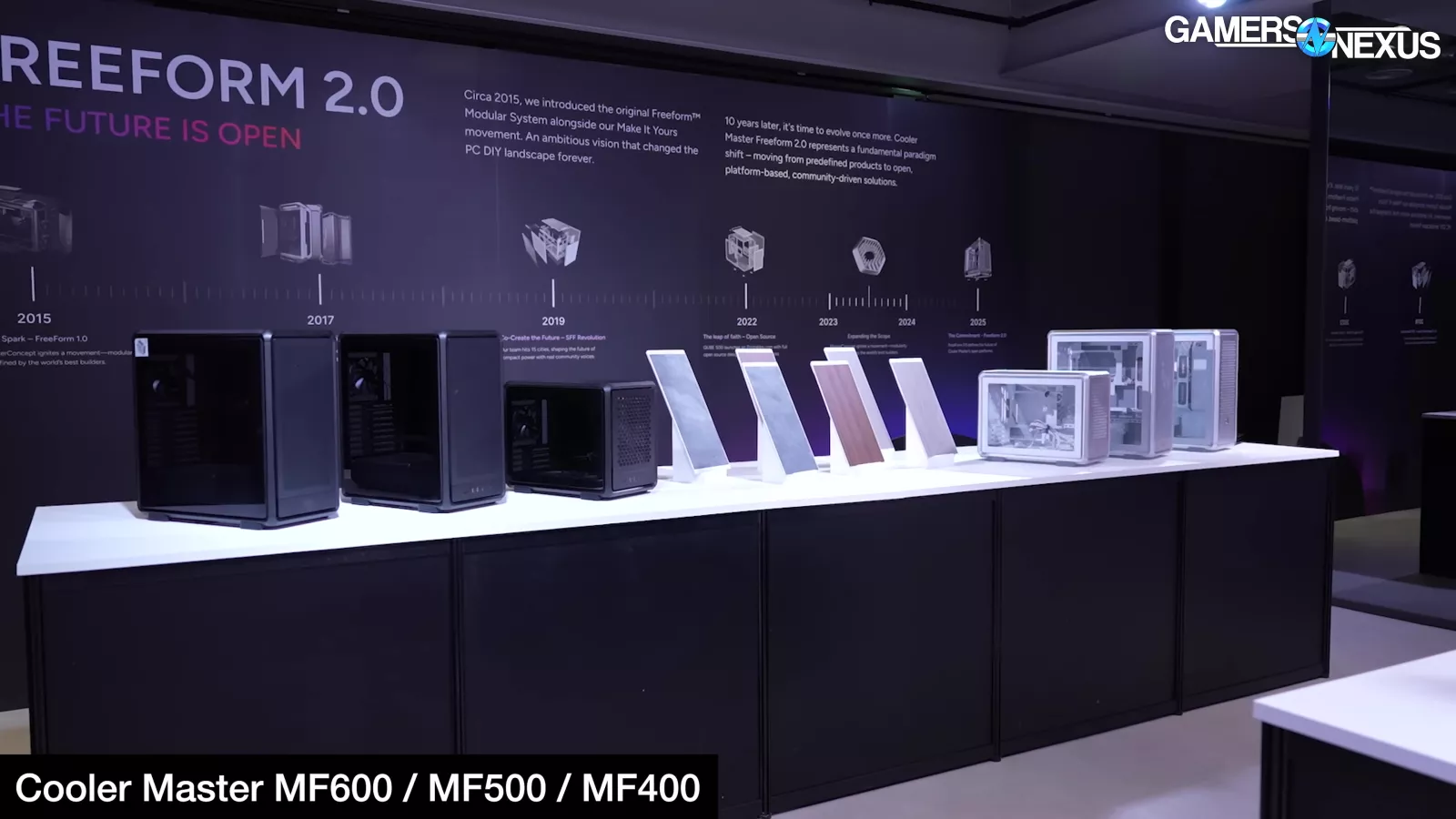
As for what’s being sold sometime this year, the MF400 through 600 will be varying sizes and layouts.
The MF600 is the largest of these, with 3x 140 fans and 1x 120 fan included. Price target is $200, tariffs notwithstanding. The MF600 has an all aluminum look to it, though uses a mix of materials for the chassis. Externally, Cooler Master has done well to blend the columns, corners, and panels to create something that has a less-gamer aesthetic to it. The front-to-back flow design is classic and should work well. Internally, the motherboard tray is basically a giant hole with some rails and slats across for support. This means a weaker tray structurally, but one which is more versatile (as shown in the reconfiguration with different orientations).
The pre-configured MF500 should be $165 and will have 2x 200mm fans and 1x 120mm fan, a much finer mesh front, and I/O on the bottom of the front panel. Going with the 2x 200s is a classic Cooler Master move that we’re looking forward to testing.
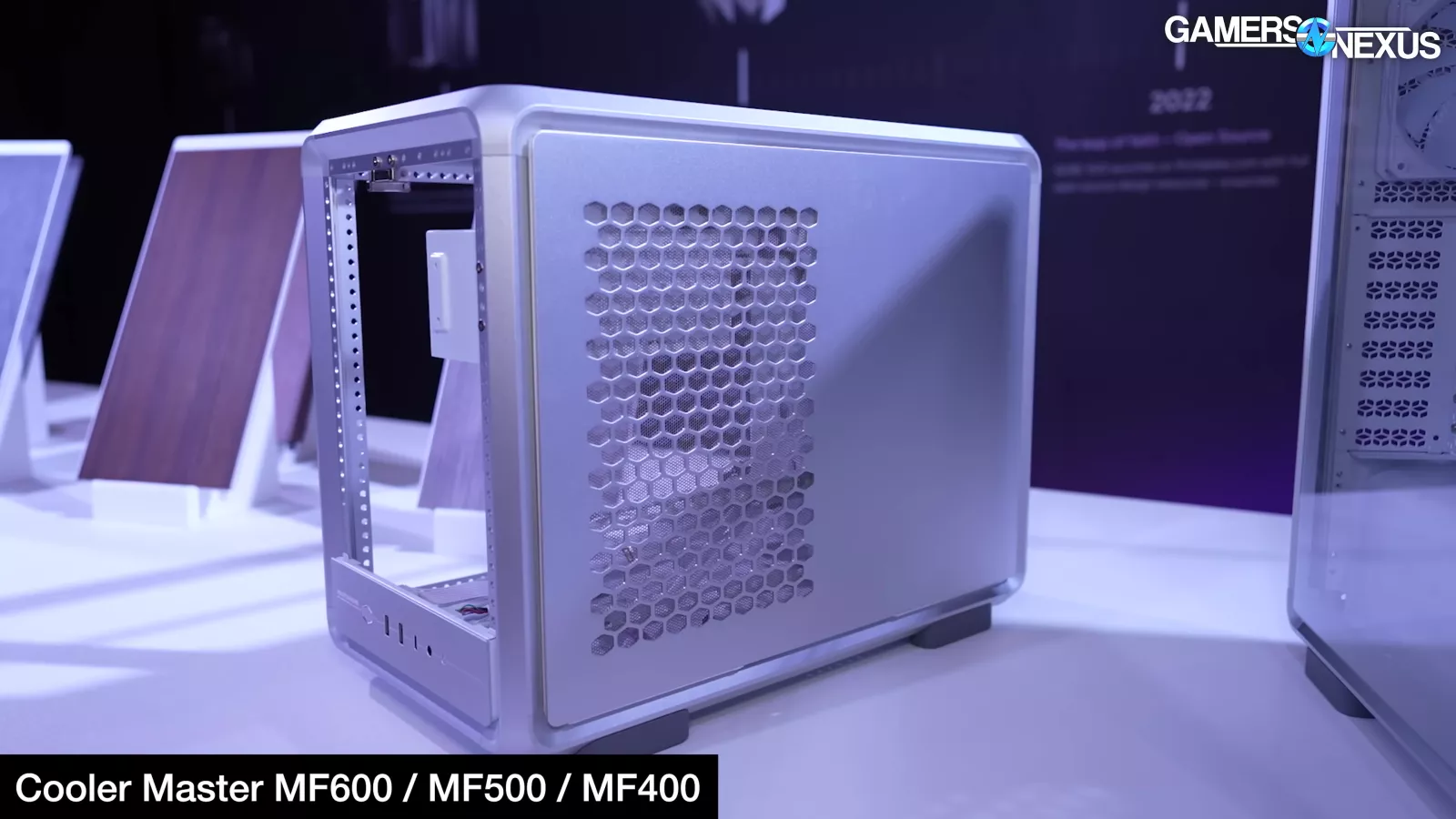
The MF400 is micro-ATX, and so it’s smaller, with a lower price target at $150 for the same 2x 200 and 1x 120 configuration. It still uses 8 corners and 12 columns.
Cooler Master also debuted its new Cosmos cases, including a special edition variation with the NVIDIA DGX style front panel and another with ductwork for air cooling. We are currently critical of the special edition’s liquid cooling configuration and question how well it’ll work, though the size of the radiator should brute force performance (since it’s using 4x 180mm fans). It’s just that they’re blowing straight into a motherboard and wall.
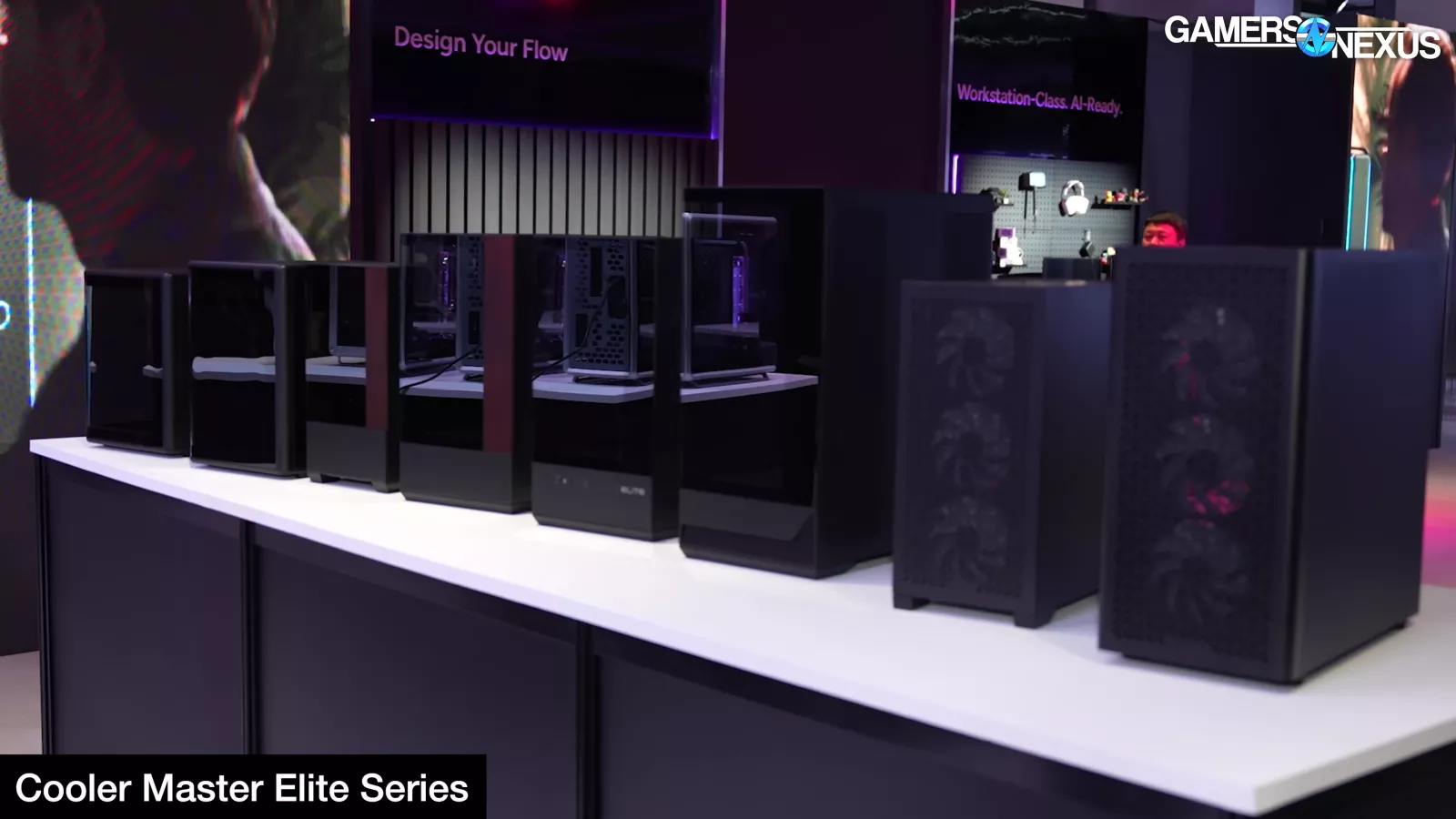
The company also showcased its “Elite” series of budget cases, featuring a tragedy of naming that doesn’t have much rhyme or reason for the model numbers.
It also had a new Q500 Core following the Q500 series styling. The Q500 Core is supposed to be $60 to $70 and is made entirely of steel. It’ll include 3D print source files for modifications and can fit up to a 360mm radiator, but it’s not our focus today.
Hyte
Hyte X50
Hyte showcased its new X50 case, which is its most mechanically complicated product to manufacture to-date. The X50 uses a bubbly external look while attempting to be the highest-performing case on benchmark charts. Hyte uses a front panel that’s perforated all the way around the apex of the turn, leaving only a small strip at the mounting point for rigidity. The case also has louvered slats at the back, including for the PCIe slots, which add mechanical and manufacturing complexity but strengthen the chassis structure while improving airflow performance. Hyte noted that its intent, which we’ll test in our review, is to help project air away from the system, highlighting that there’s always focus on reducing intake impedance but noting that exhaust impedance is similarly important.
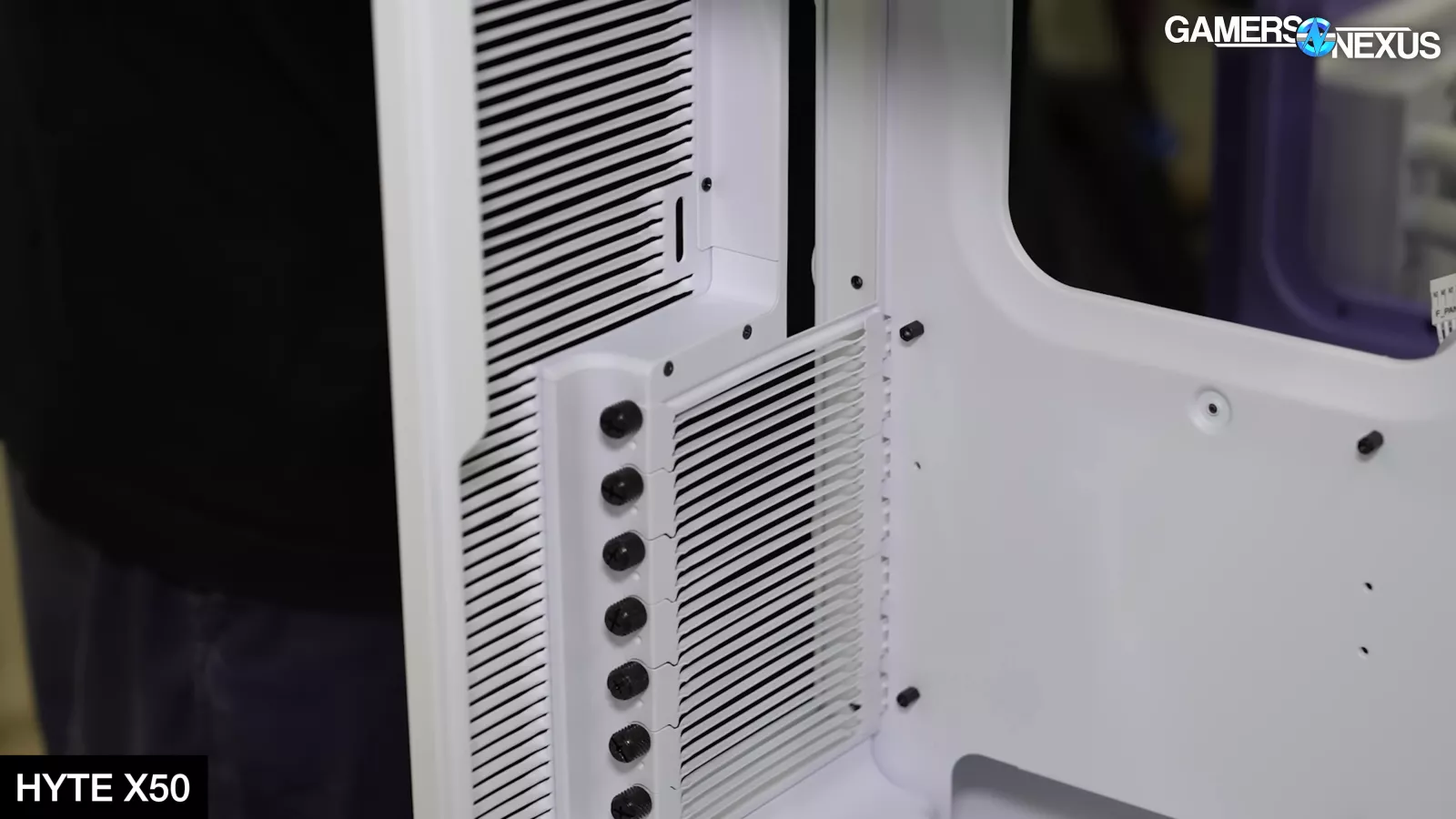
The louvered approach means that PCIe slot covers keep all of their original steel (rather than being removed like a typical slot cover), but the gaps are created by punching the steel outward and twisting at the joint. This keeps rigidity while theoretically reducing exhaust impedance.
The case is almost entirely steel. Internally, the power supply shroud is steel, the motherboard tray (as usual) is steel, and the walls are mostly steel. The floor and some connecting pieces are plastic, but its presence is overall mitigated.
Hyte has a few styles of feet for the X50, including what the company refers to as “paws” (shown as the rounded feet) on some color models, with bars for models like the white case.
The case can have either a laminated so-called “acoustic glass” side panel or a full-on mesh panel that’s focused on cooling performance.
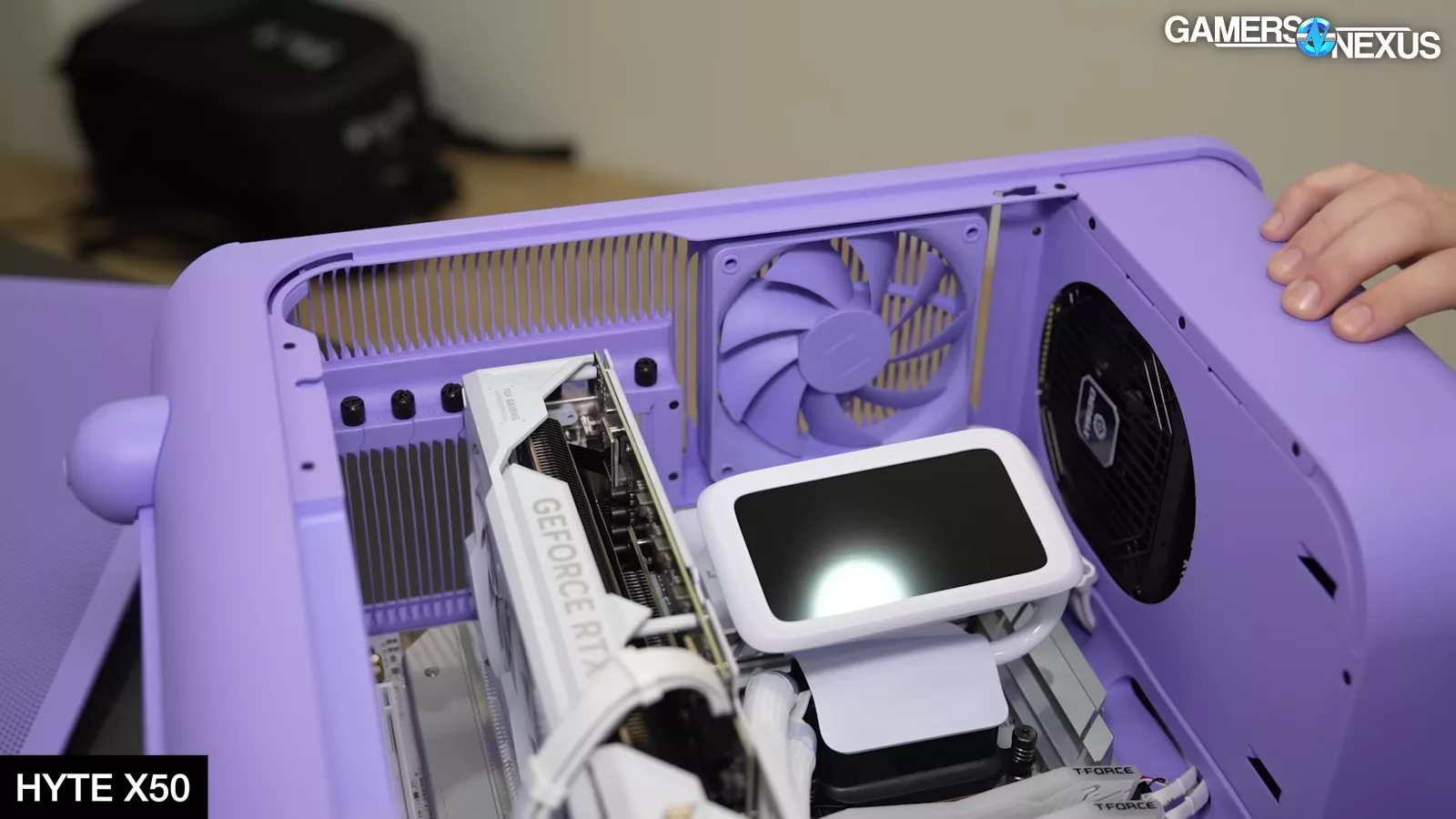
The top-mounted PSU shroud will help by enabling more bottom intake by getting the PSU out of the way, in addition to using the power supply as another fan to help guide air through the system. With a fully mesh panel, this should also help bring air into the computer from outside.
We’ll see how the case does in our review, but from a manufacturing and engineering standpoint, it already gets credit for overcoming challenges with going as mesh-heavy as the case is. You can learn more in our interview with Product Director Rob Teller in the X50 coverage from Computex. We spend a lot of time talking about Hyte’s tens of thousands of dollars of failed samples, where the company walked us through all the trial-and-error of front panels before it finally figured out how to manufacture the panel the company wanted. The case should be priced for $120 with mesh and $150 with glass pre-tariff.
Lian Li
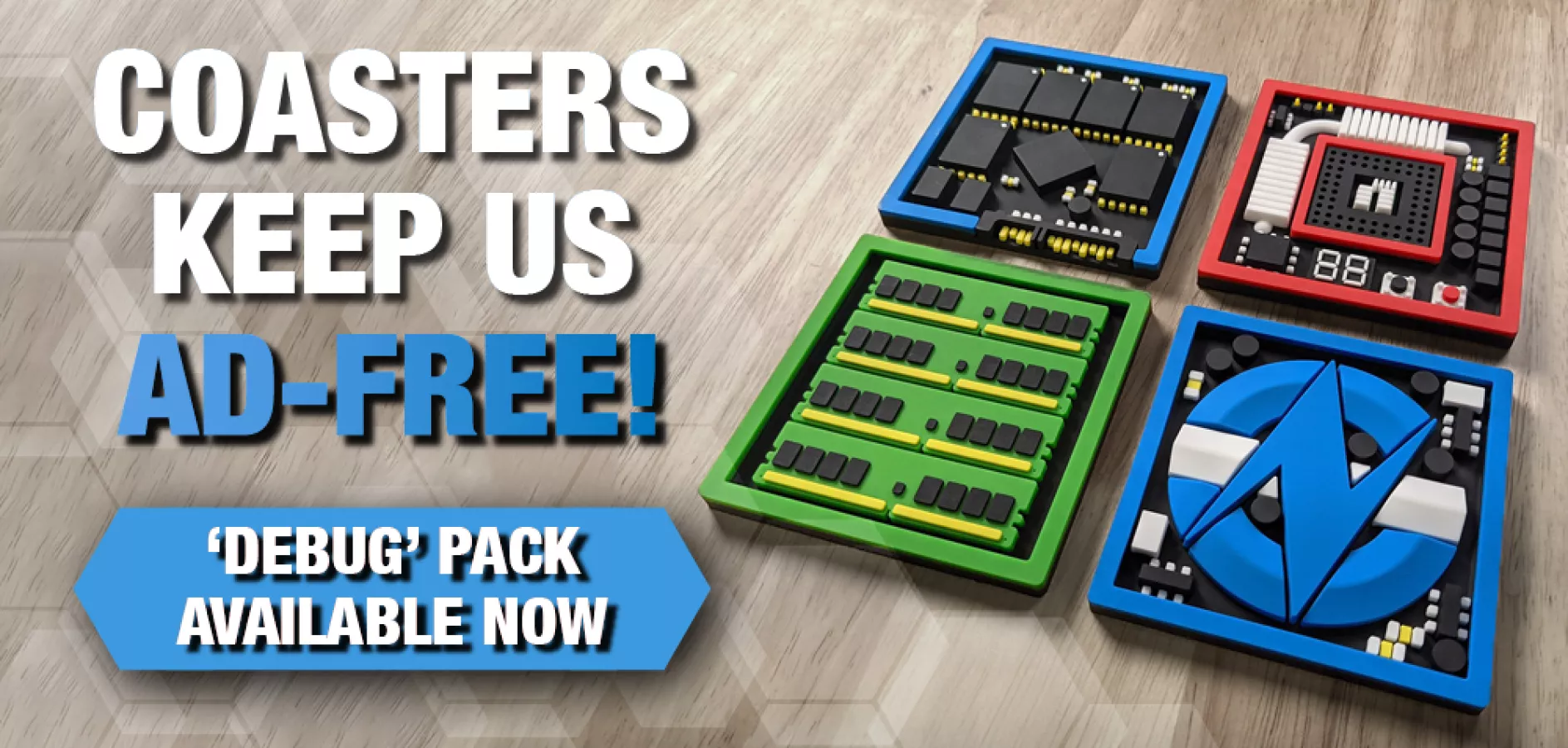
Lian Li had a relatively large breakthrough this year with its ongoing attempts to figure out how to embed fans in glass front panels. This has historically been challenging since it results in lower yields and broken glass, or in the worst case, just less surface area available for intake since a larger border has to remain for structural reasons.
The Lian Li Lancool 217 Infinity and Lancool 4 cases both make use of this new approach to fans-in-glass, effectively mixing mesh grates in front of the fans with the tempered glass look.
The Lancool 217 Infinity is a Lancool 217 (check out our review here) including all of the tooling for the case internals. The only exception where tooling changed was to the front panel, enabling the infinity mirror effect with LEDs and the support for mounting the glass panel. The only other change is to IO, where Lian Li made it optionally mountable to the top or bottom side. The case will ship with 2x 170mm front fans in the glass and one rear-mounted fan. It should ship at $120.
The Lancool 4 is more complicated and is entirely new tooling. The case still uses the 4-door approach that the Lancool series has become known for, so the left side features a large sheet of glass resting on top of a mesh plate that opens separately. The mesh plate allows intake through fans mounted in the bottom of the case (or just the GPU), with lower panel side mounting available for 120mm fans. The panels open with a button release mechanism to allow them to separately lock. The right side also features glass and steel, with a clear line of sight through the other side of the front of the case. A cable cover door can be screwed down to hide the cable management.
A pogo pin setup allows the front panel to transfer power without use of a cable, followed by a mix of painted glass and plastic covers to hide cables daisy chaining the fans. Lian Li is considering including 3x 140x30mm front fans and 3x 120x25 side fans, with a pricing target at $130 including all 6 of these fans. This would be extremely competitive if they can do it. Lian Li has committed on camera with us to a 5-year warranty for the fans.
Lian Li had a few honorable mentions at the show: Its O11 Mini V2 made an appearance and manages to cram an ATX power supply into the case by punching out space in the side panel. The Mini V2 should be $90 without fans and $100 with 5x 120 fans. The Dan Case B4 was also an interesting showing, mostly for its ability to attach feet and switch to a much higher volume vertical orientation. It makes use of the space provided by the feet by also including a radiator extension chamber to support a 360mm radiator on the side. More interestingly to us, the Vector 100 and Vector 100 Mini cases are extremely cheap. The Vector 100 Mini micro-ATX case is intended to sell for $45 without fans, making it a direct competitor to Thermalright’s new mATX case.
Antec x Noctua
Antec and Noctua are up next in a collaboration. The companies are working together to manufacture an alternative to the Antec Flux Pro except with Noctua fans. The Flux Pro was already a chart-topper in our case benchmarks and reviews and has been a high performer, so Antec isn’t changing much beyond colors and what fans are included.
The companies will do a like-for-like swap of 6 Noctua fans in place of the 6 Antec fans, switching to 4x 140mm NF-A14 G2 fans and 2x 120mm NF-A12 G2 fans for the shroud top.

The case price is still being finalized, but it’ll be expensive. We’d expect to see this fall in the range of the $300s to $400s somewhere, as the case itself is typically around $180 before the Noctua fans.
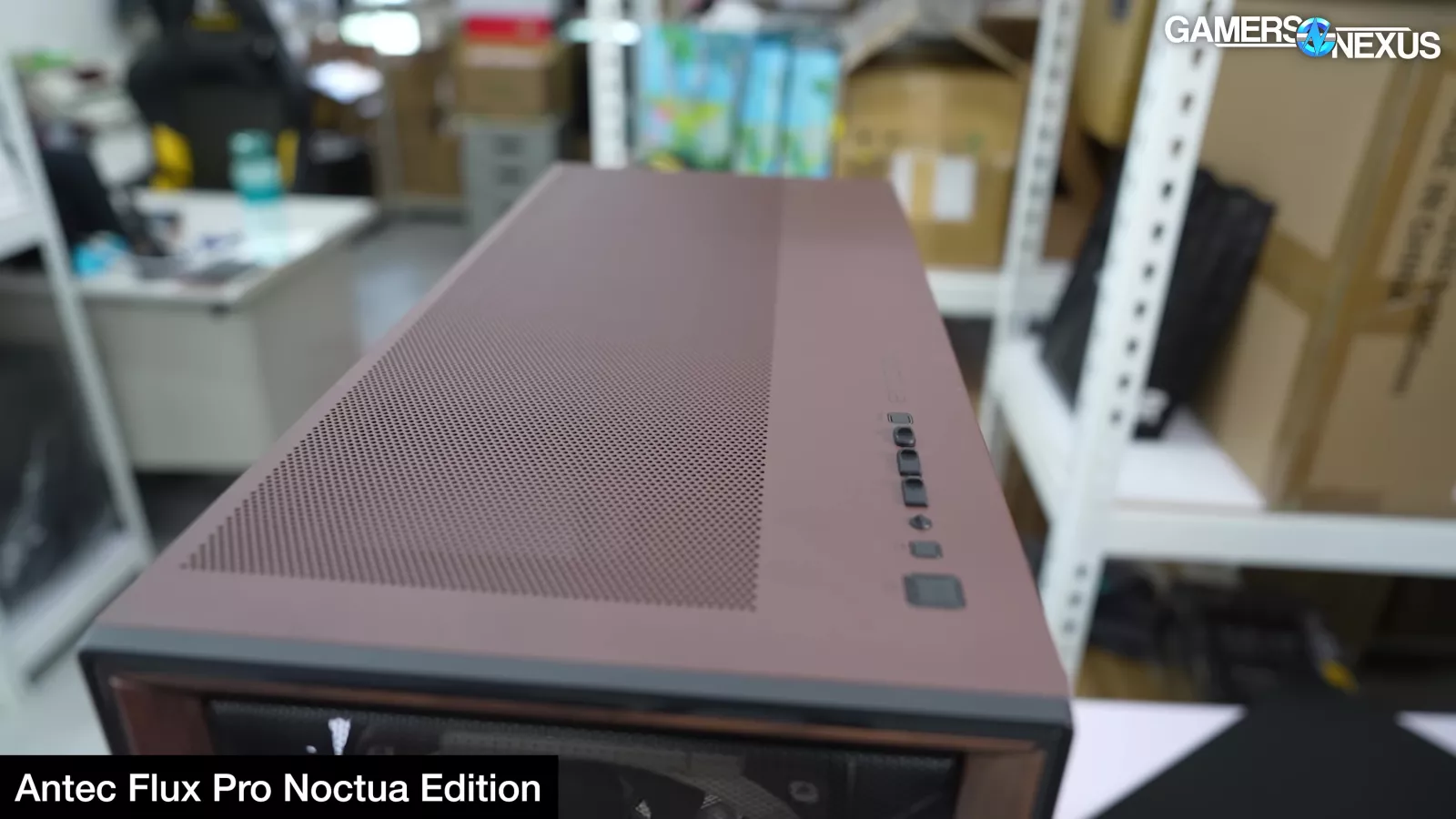
Most of the time was spent on coloring the brown panels and grommets to match the fans as closely as possible.
Antec also had some other stuff, like the company’s new Antec 900, which is based on the case of the same name from decades ago.
The case had 2 variants. One of them included 2x200mm Noctua fans at the front.
HAVN BF360
We toured the HAVN testing lab in Taiwan to look at the company’s new BF360 case, following-up the HS420 that we previously reviewed overall positively. In addition to a 40+ page presentation from its thermal engineer detailing all the various testing performed to prepare the new case and fans for launch, we also got a look at the new BF360 and its fans. We appreciated the time the company spent to demonstrate all of its testing and engineering, as most companies don’t make thermal engineers readily available.
HAVN’s new BF360 aims to be highly competitive for case thermals and has dedicated a significant amount of that toward fine-tuning the fans. We’ll see how it does in testing later in the year, of course. The case will use 2x 180mm fans at 40mm thickness in the front, helping with higher static pressure performance. In testing, HAVN experimented with positioning these front fans higher versus lower on the front panel, settling to mostly bias them slightly up in the case. This should help push more air straight into the GPU, which gets further tuning from a “ramp” shaped at the front of the PSU shroud. HAVN tested numerous shroud ramp types and shapes, finding ultimately that a wide, relatively modestly angled ramp provided the best performance with the fewest acoustic trade-offs.
The panels are heavy-duty and designed with similar attention to detail as the HS420. The case has tuned placement of the structural struts in the panels to reduce impedance to flow, with wide enough top mounting to support more 180mm fans without additional fan mount rail obstructions if going the larger route.
HAVN has brought over smaller attention to detail embellishments on this case from the HS 420, including molded text in the plastic cable routing channels to guide novice users to potentially optimal routing pathways. For looks, HAVN is going for white and black, but with a faked stone-looking front panel. Pulling that front panel reveals the steel plate above the top 180mm fan, serving to prevent re-circulation and force air intake through the ideal channels.
For the fans, HAVN experimented with fans up to 52mm thick, but ultimately settled on 40mm thick options for a balance of thickness and performance. All of HAVN’s new fans use larger bearings, which it says helps to stabilize the blade during rotation. HAVN also has notched the leading edge of the blades to help capture and force air through the blades, although we’d need to see A/B testing to know how much that really matters.
Corsair
Corsair’s Computex showing this year was much stronger than some of its prior years. The company seems to be pushing hard after the relatively good reception of its FRAME 4000D cases and is expanding the scope of the FRAME series, but also making some radical cooling changes to its new cases.
Corsair showed its new FRAME 5000D with LCD panel, its Air 5400 with effectively three chambers that completely isolate front radiator air from the rest of the system, and it had a prototype FRAME 4000D with a power board from Singularity PCs.
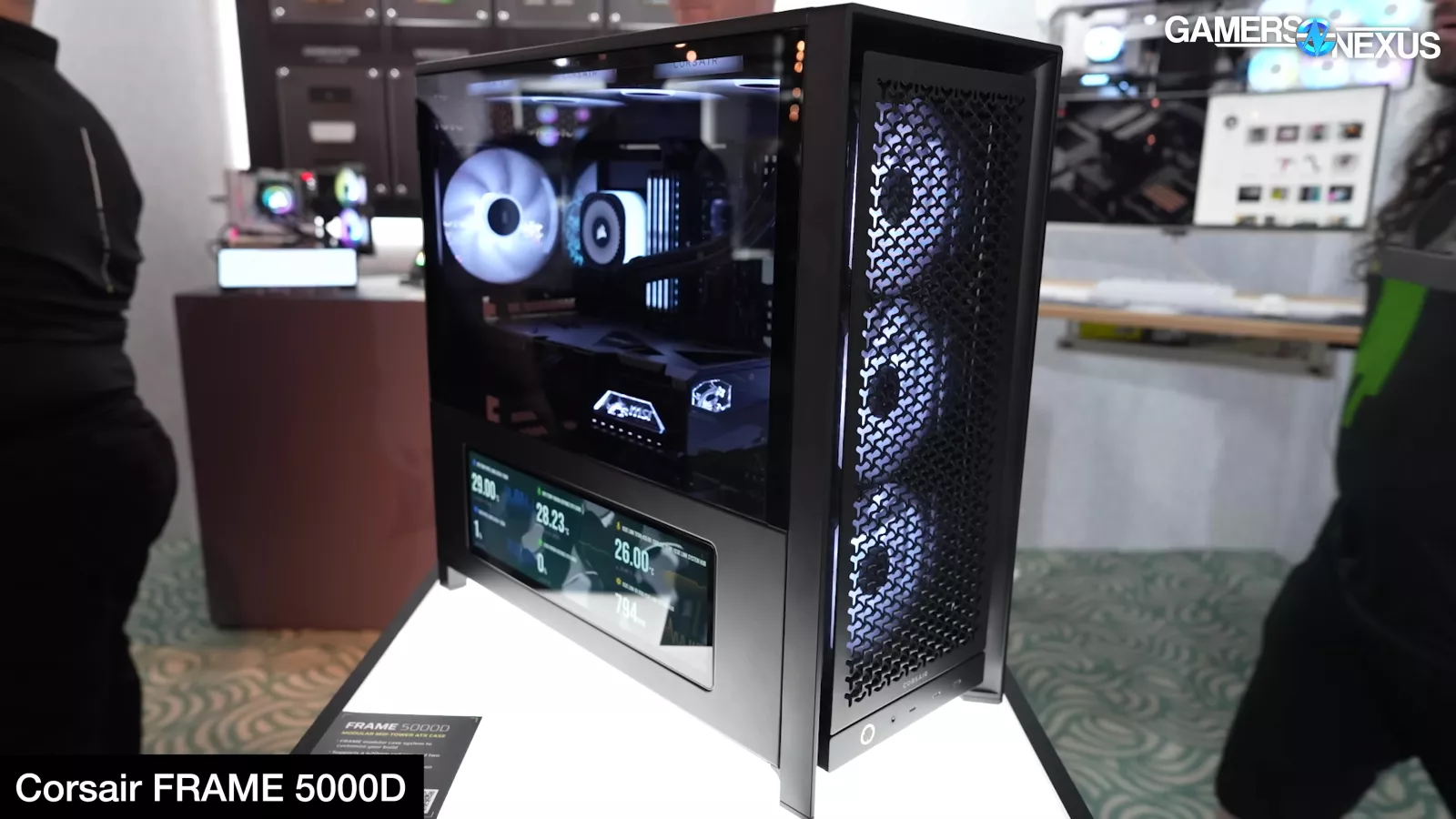
The FRAME 5000D is a larger 4000D and we’ll likely test it soon enough, so we’ll skip that one and focus on the most unique of these.
The Corsair Air 5400 uses a separate chamber for a front-mounted radiator, which involves running the tubes across effectively shop brush bristles for tube routing. This means that the radiator, likely used for the CPU cooler, would pull air in externally and then propel it out of the case immediately by following an interior curved wall. The air never gets into the main chamber, which means it doesn’t increase local ambient temperature. Likewise, as a downside, this means less airflow over ignored components like the VRM or system memory.
The bottom of the case uses a duct to guide air straight in from bottom intake, then points it straight at the GPU. Corsair claims that its A/B testing of this ductwork creates about a 1-2 degree improvement in GPU thermals versus testing without it. Likewise, there’s another top-mounted duct that could encase top fans to provide some cooling to the rest of the motherboard, although flow-through cooling from a GPU would also push air into the memory. It’ll be warmed, but that’s better than no airflow.
The rear can technically fit a 120mm fan with an adapter, but there’s no real reason to mount one. It’ll blow nearly half the air straight into a curved glass wall, potentially causing noise issues but definitely limiting thermal benefits.
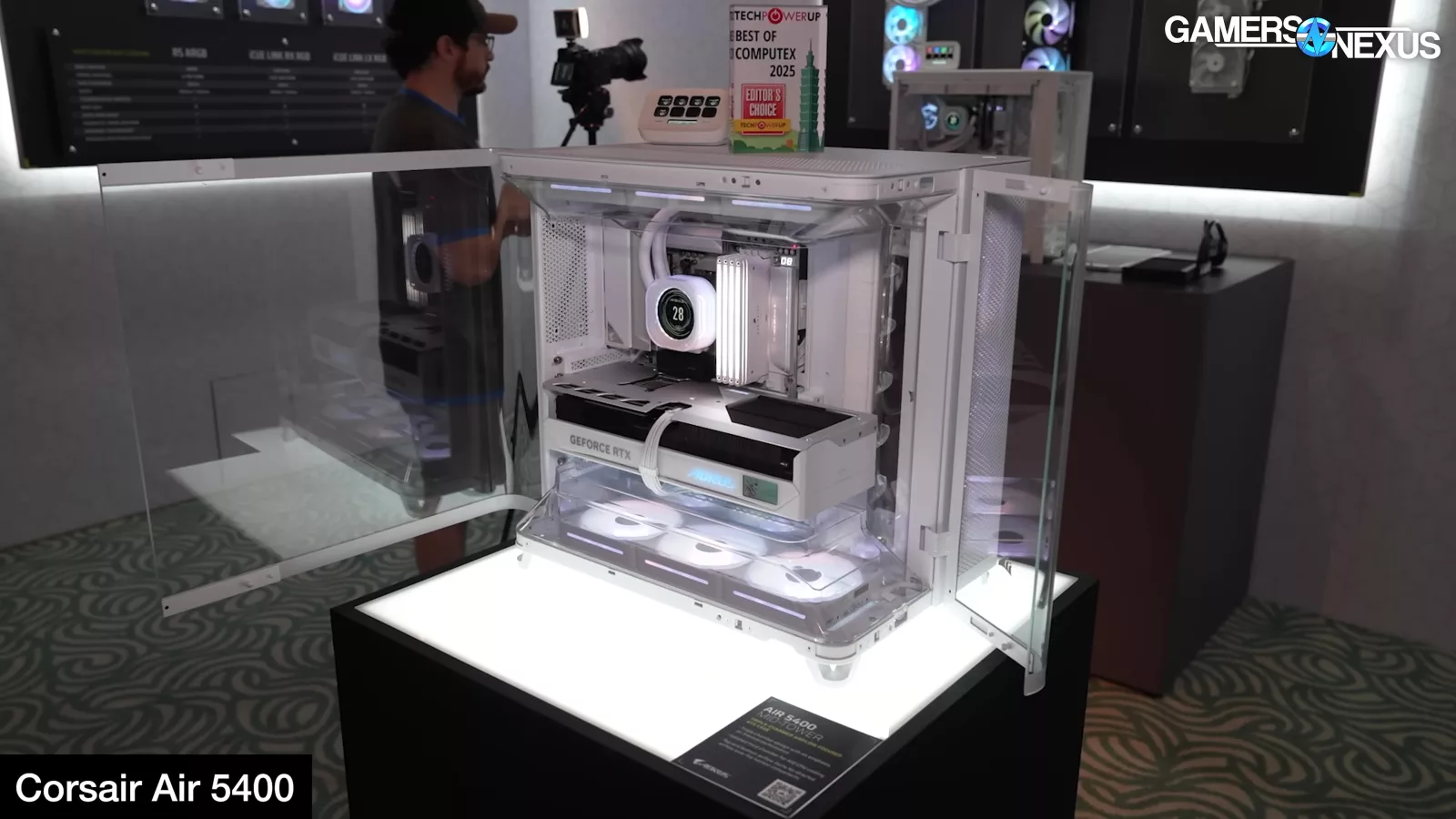
Overall, the case is a riskier attempt at a new design that we don’t often see from Corsair. We’re looking forward to thermal testing on it.
The FRAME 4000D Prototype is also worth showing here: The power board at the back doesn’t provide any logging functionality (like you might find with an Elmor Labs Benchtable), but does offer cable routing by funneling all the connectors through a rear-mounted PCB.
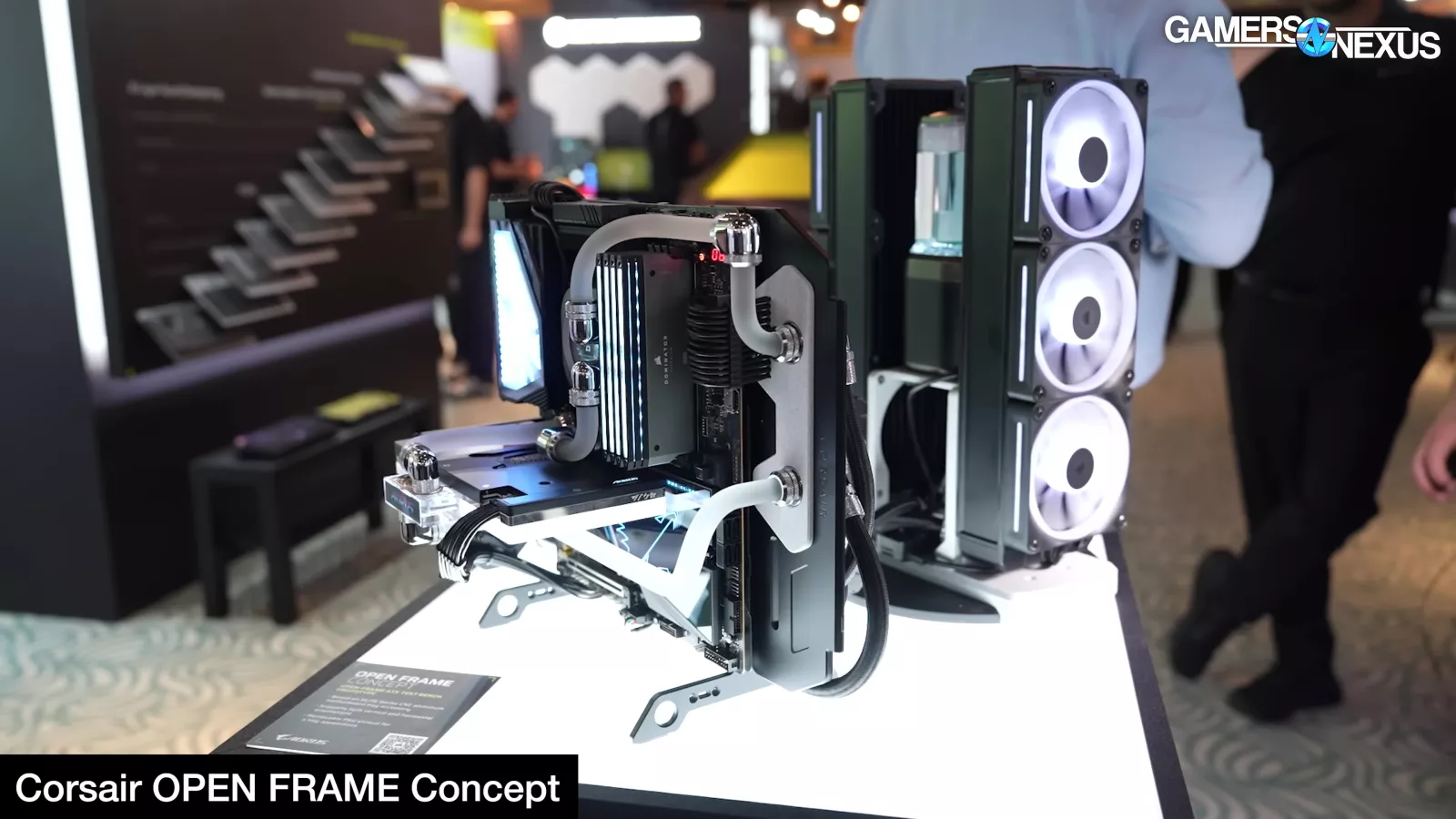
Like everyone else, they had other cases present, such as an open frame case, but we’ll point you toward our Computex news coverage for that.
Thermaltake
Thermaltake also had a lot at the show. For cases, its IX700 enclosure was being used in an immersion cooling system, which was mostly just cool to see.
The more consumer-focused cases for our audience would include the View 390 Air, the TR200, and the TR300.
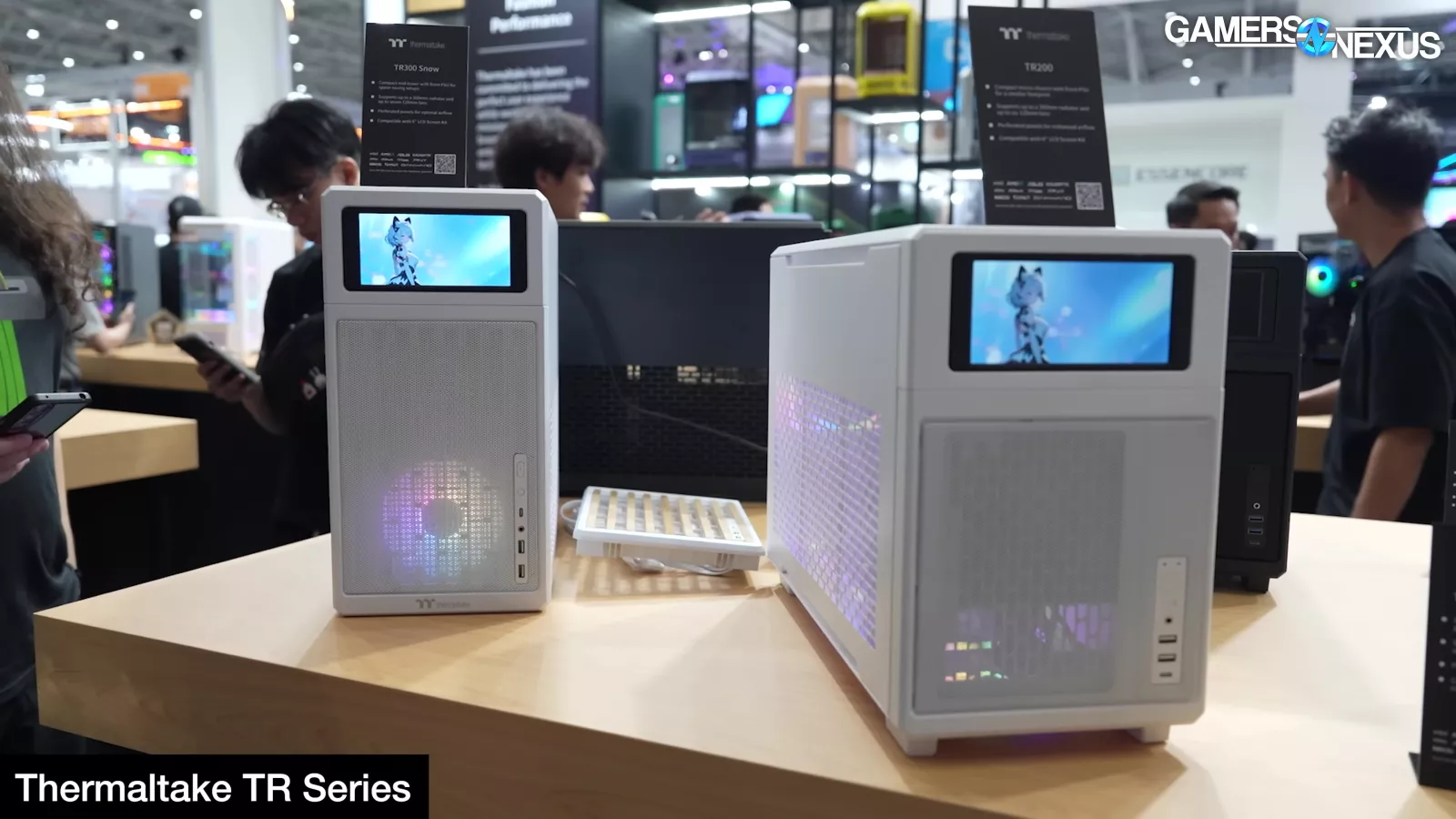
The TR200 and TR300 introduce larger versions of the mini-ITX TR100, just with micro-ATX support in one and ATX support in the other. Micro-ATX seems to be taking off more this year in the case market.
The View 390 Air uses a curved tempered glass panel around the top and side, with options for up to 200mm fans at the front. Thermaltake hasn’t yet finalized the stock fan configuration, but has finalized the price: It’s trying to hit $150 pre-tariff and the company thinks it can include 2 fans at that price. They mentioned to us options of either 2x 200s at the front or 2x 120s at the back or side. We’d favor the 2x 200s, mostly because users with liquid coolers will already be getting 120s, and 120s are also more common just in bins of parts from seasoned PC builders.
The case can fit fans along the right side panel as well, with 2x 120 rear exhaust fans available optionally at the back. Two can fit here because the optional screen location, found above the motherboard tray, makes the case taller and provides the clearance for a second fan.
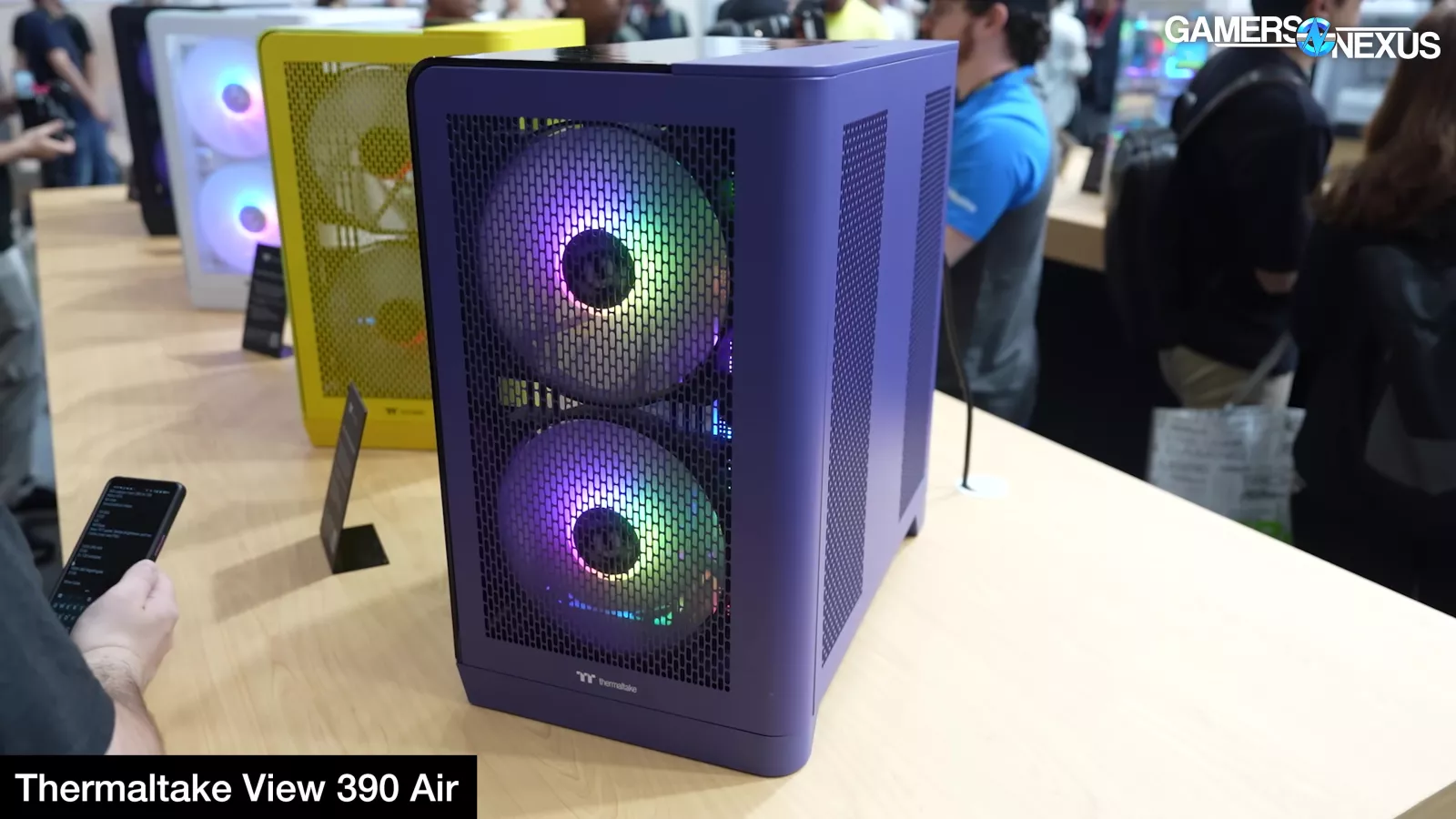
The front panel design uses a brick pattern with a high porosity, which might actually make this fairly competitive thermally, depending on the fan configuration.
Phanteks
Phanteks was also present at the show. Phanteks had the budget-focused G370A ATX case and its XT M3 micro-ATX case. The G370A makes compromises to hit a price target of $60 while including 3x 120 RGB M25 fans. Phanteks described it as a smaller version of the G400 case. The case can fit SSI-EEB boards, though they’d block all the cable management routing aside from the highest pass-throughs, and is otherwise about as standard and plain as a case can be. The goal is price on this one.
You can learn more about the XT M3 in our Phanteks Computex coverage.
Tryx
Tryx was also present at Computex. The new Flova case is currently a concept, but Tryx is experimenting with trying to get a crossflow fan integrated with axial fans in the case. The idea would be to shove a crossflow (or transverse) fan in the space that could traditionally be used for larger front fans, which would then provide a more even, laminar flow along the top edge of the GPU and nearest the glass. Crossflow fans aren’t necessarily the best at this type of cooling, but could definitely be tuned to be competitive with enough research and care. We saw it work in the Meshless AIO mini-ITX case previously.
For now, this is an experiment that we’re excited about because we want to test something different. We have an animation showing how these work in our Meshless AIO case video review, in case you want to learn more of the science.
Montech
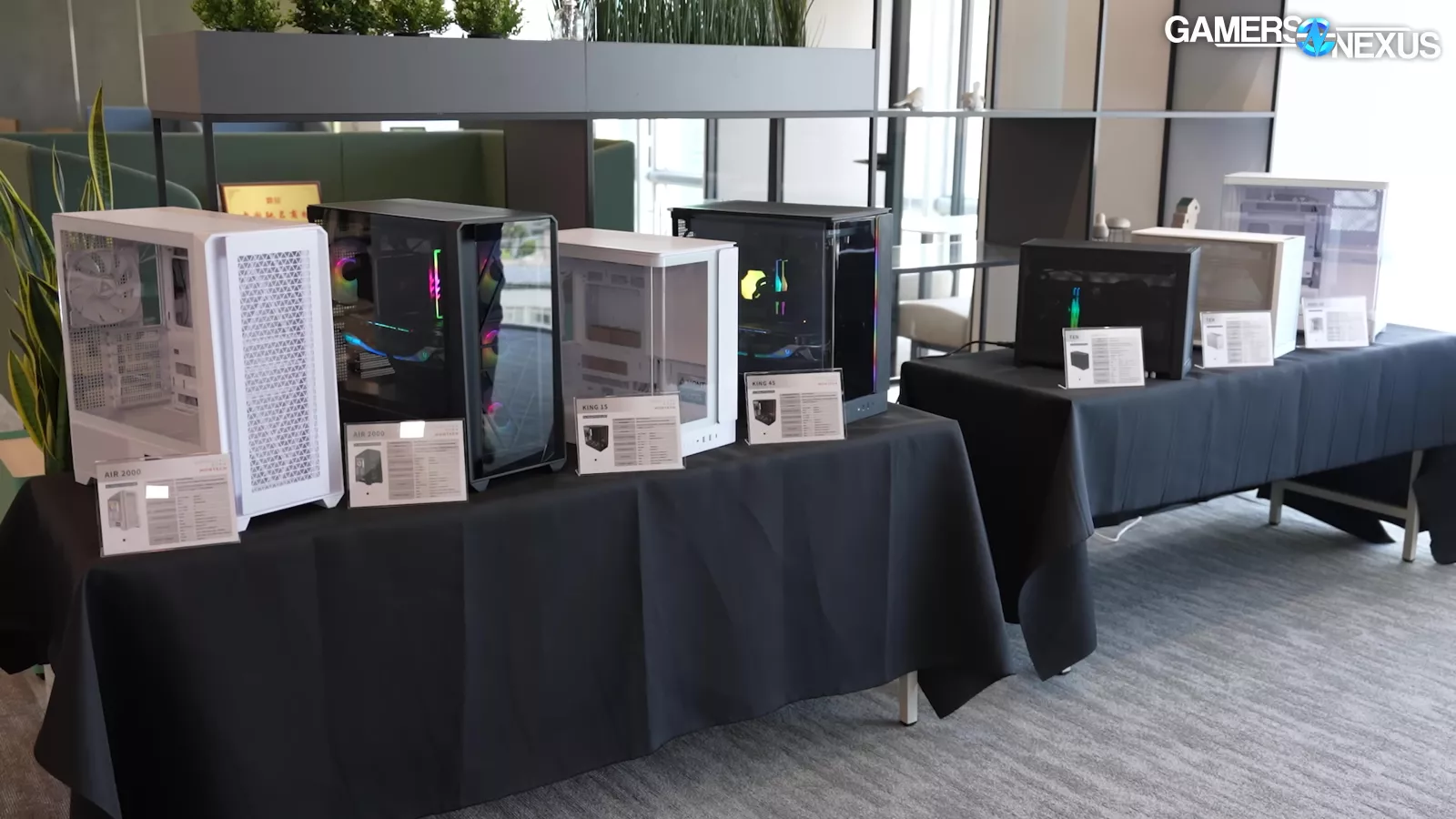
As for Montech, the company had a ton of cases present and will be launching them over the next year or so, with some out in Q2 2026.
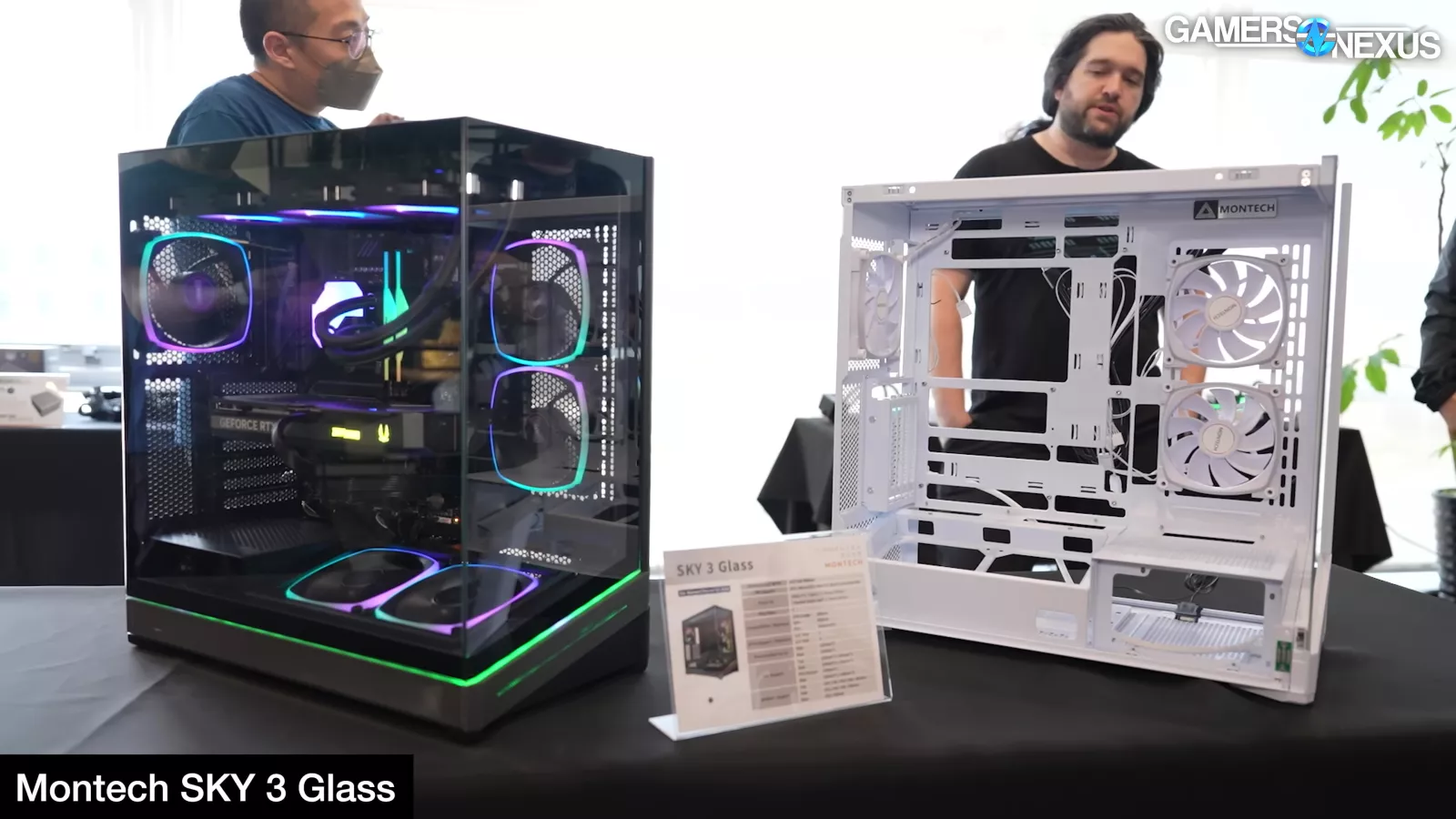
For this article, we’ll just keep it short and focus on the cheapest cases from Montech that are coming out the soonest, as the others are all still being finalized:
The X5 and X5M are Montech’s newest budget-focused cases. The case is supposed to be $60 for the micro-ATX X5M and $70-$75 on the X5 ATX case. These cases use a wavy, ventilated mesh front panel. The X5 intends to include 3x 140 fans and 1x 120 stock, with an optional 2x 120 fans for the top of the shroud (which would have limited benefit due to the panel styling). The $60 X5M will include 4x 120 fans.
In Win

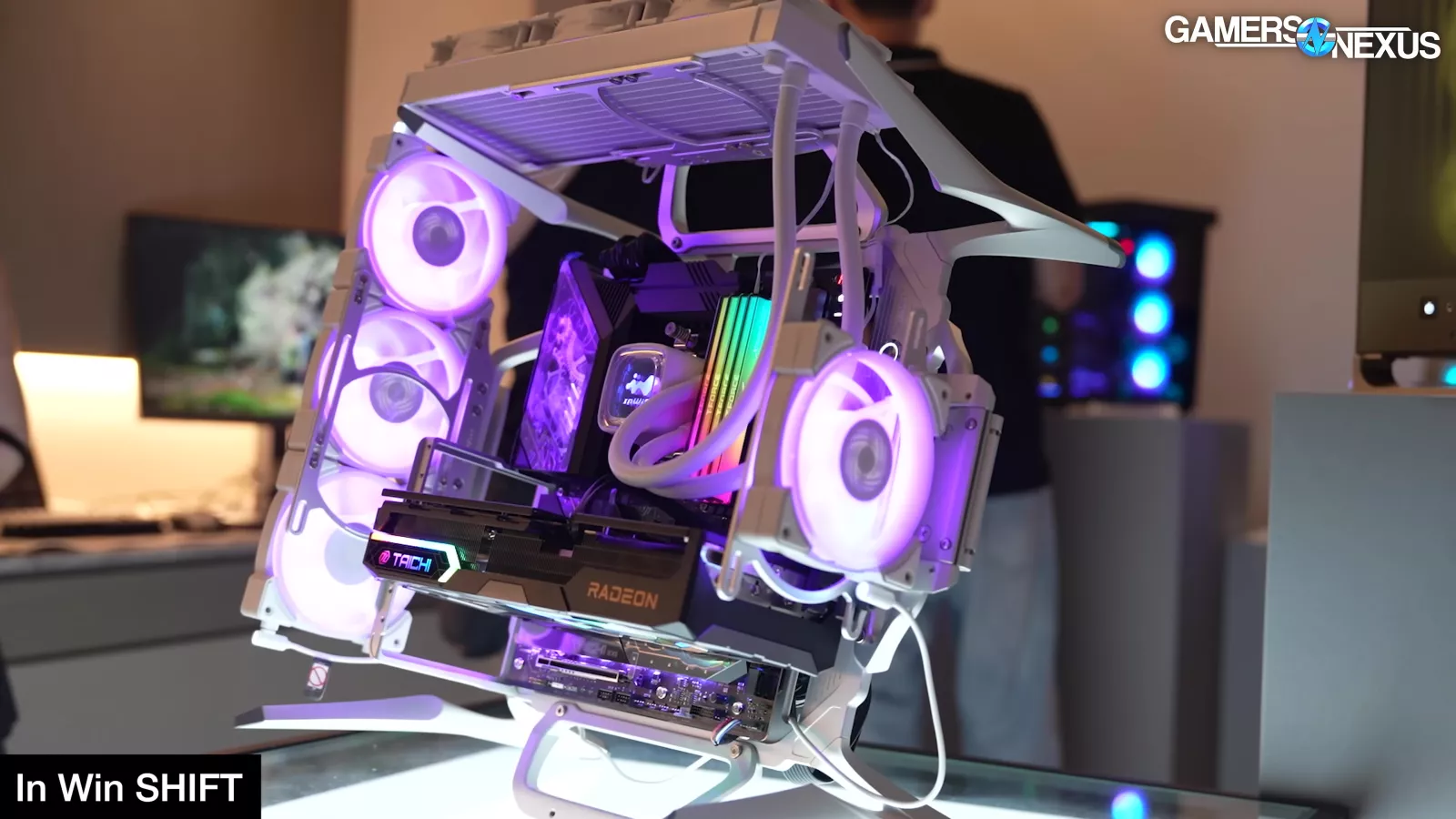
In Win’s cases were mostly too early in development to get into detail on. The company didn’t have prices or fan configurations ready, so we’ll skip all of those until they’re closer to ready.
The one we can close on though is In Win’s Chronomancy, which was its 40-year anniversary case design. It’s not really meant to be sold. They expect to make around 40 units, fittingly, but it’s just kind of cool.
The case uses an IR wand with gestures to open the exterior aluminum shell, close it, open the other chamber, or adjust the volume level of various music tracks baked into the case with its included speaker. Manufacturing the case is a nightmare, using a large and thick sheet of acrylic that gets laser engraved and then slowly bent. The aluminum panels also require bending, with the front using a stainless steel and the base using large aluminum pillars.
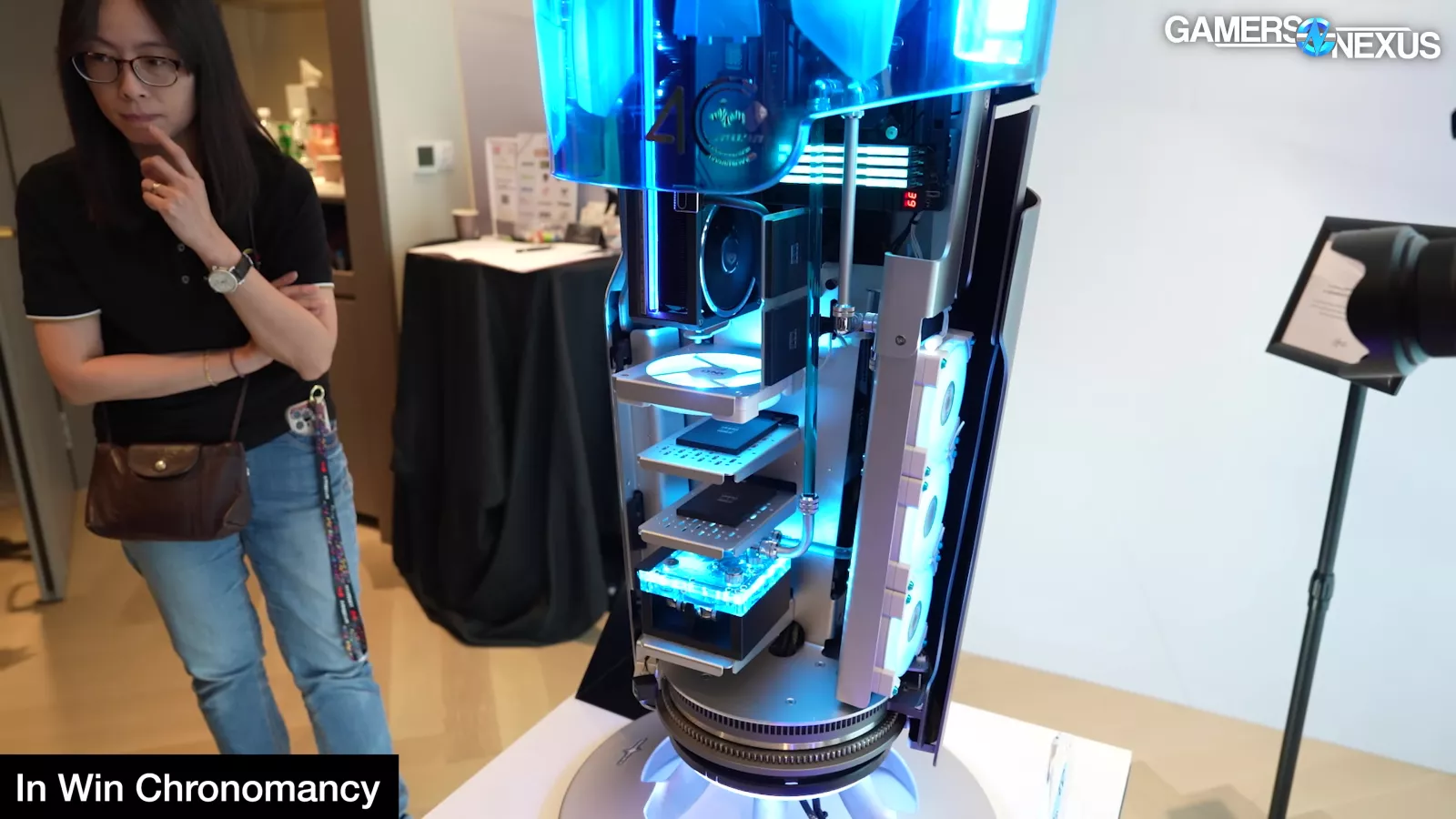
Inside, the Chronomancy does actually hold a computer, but it’s obviously secondary to the design.
